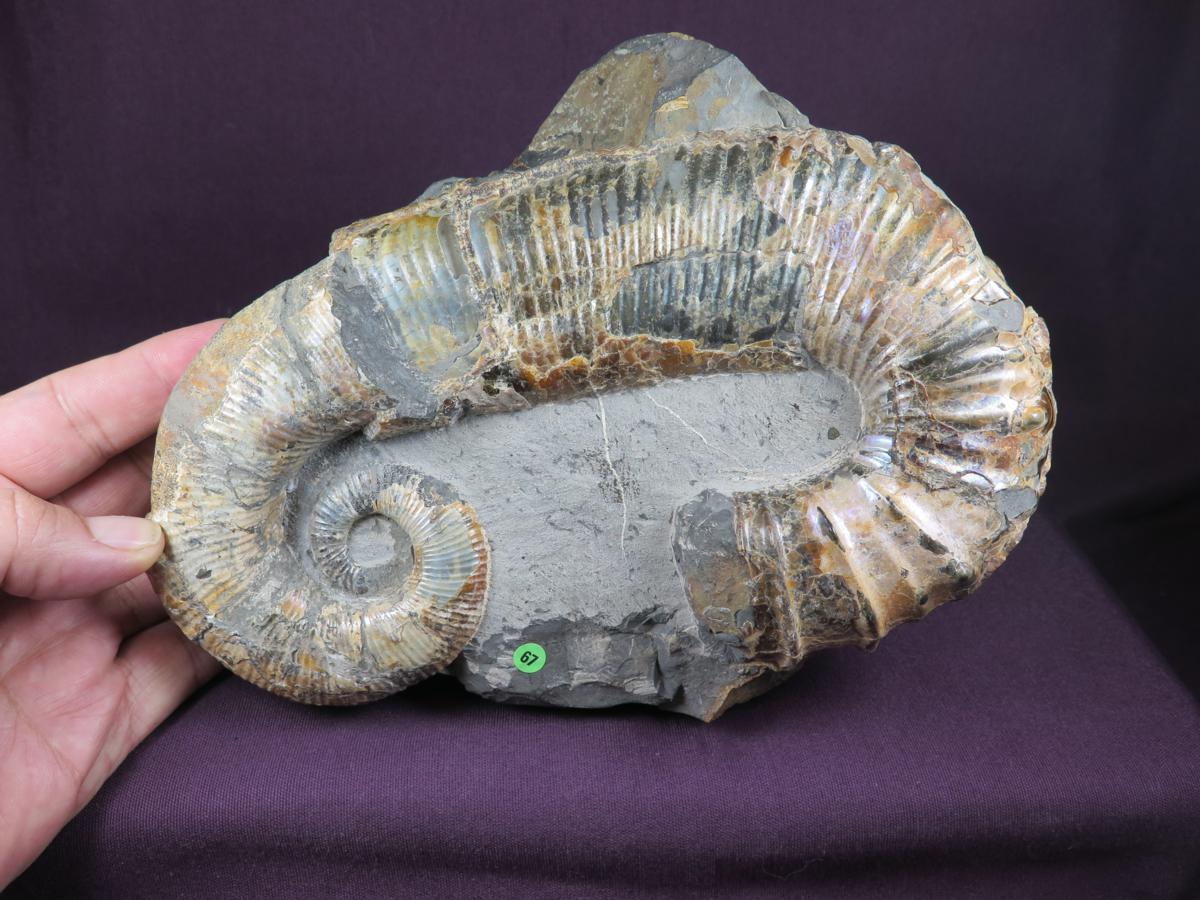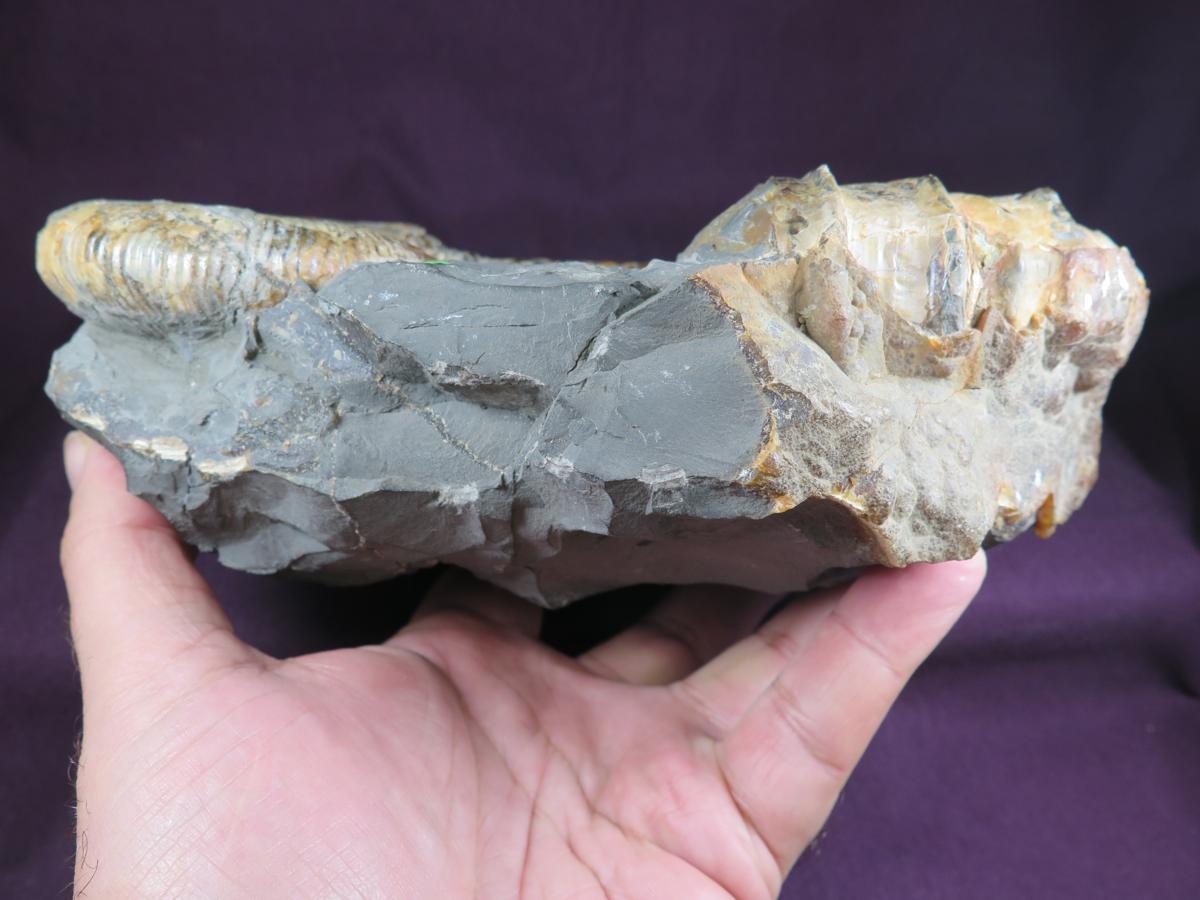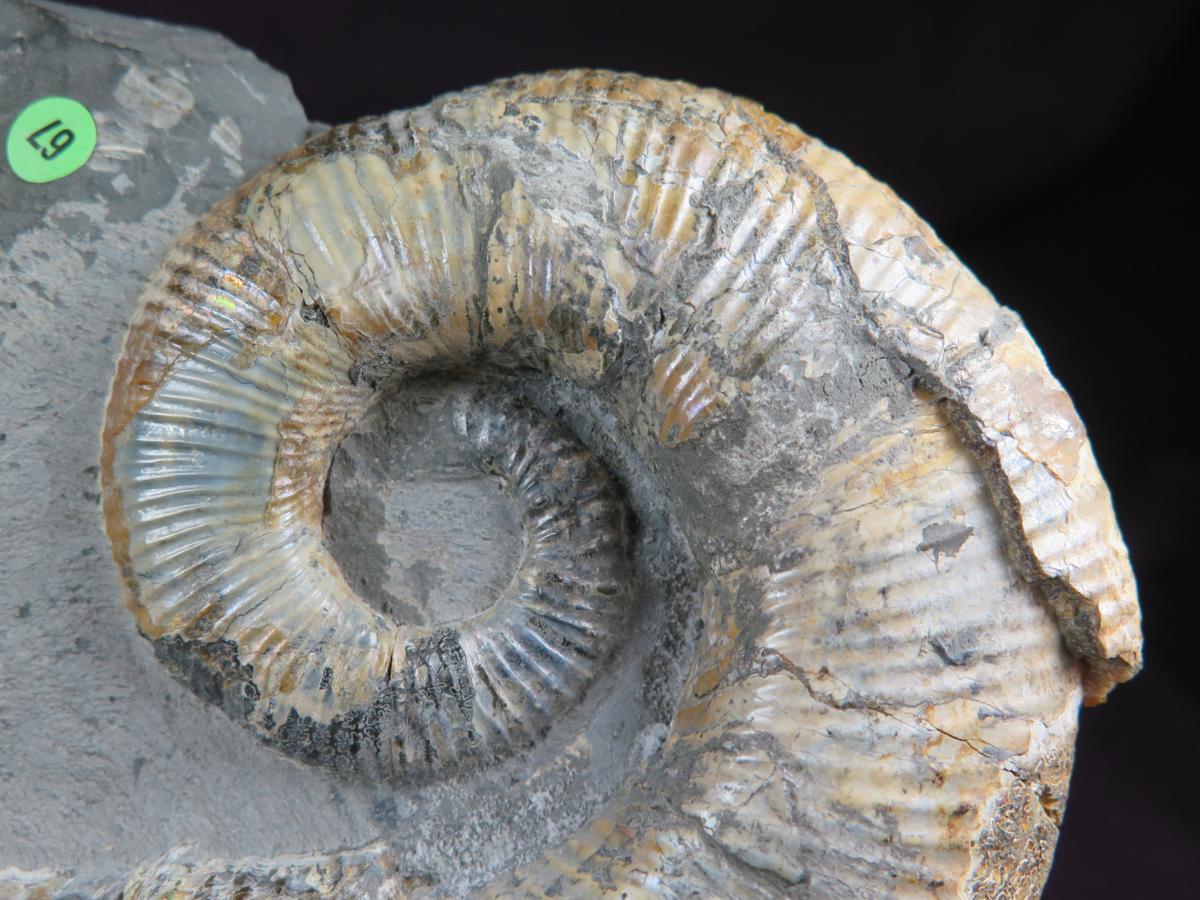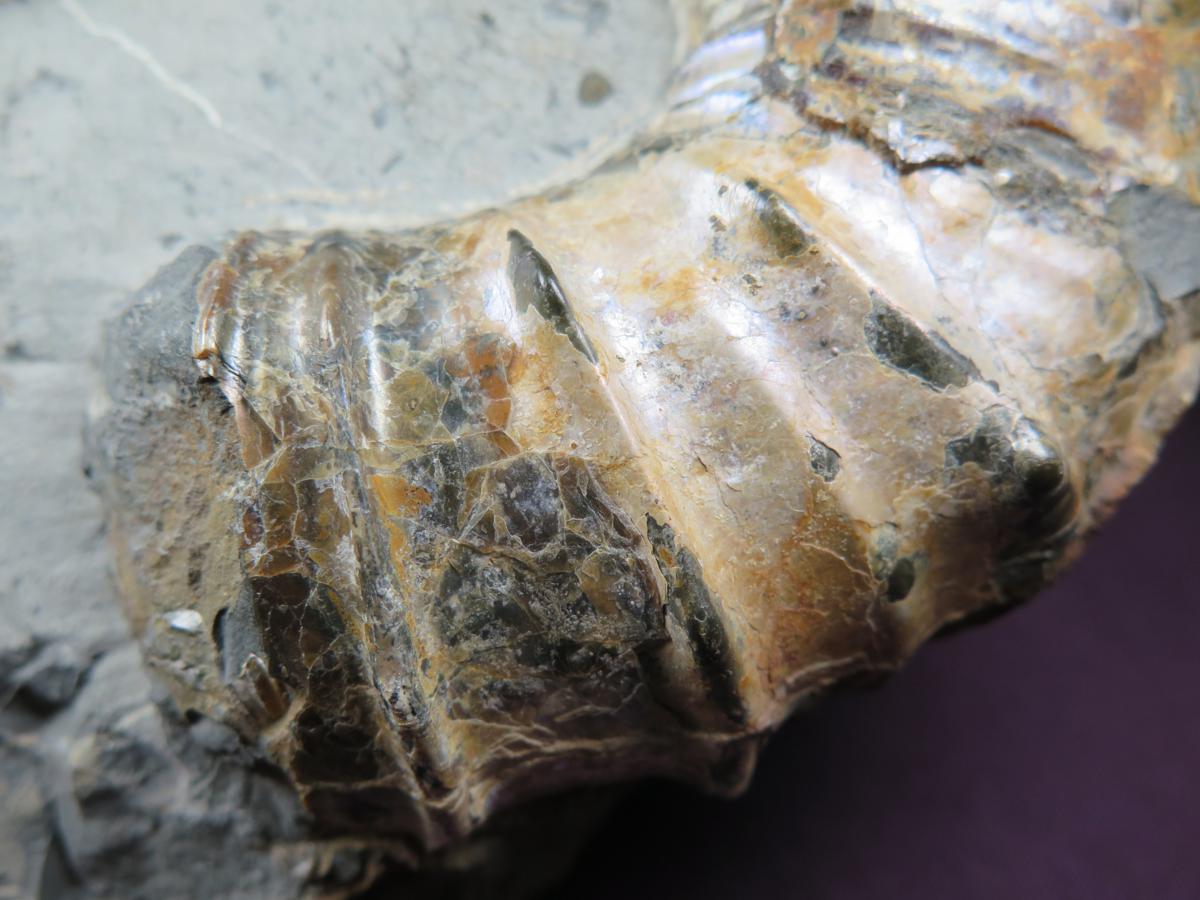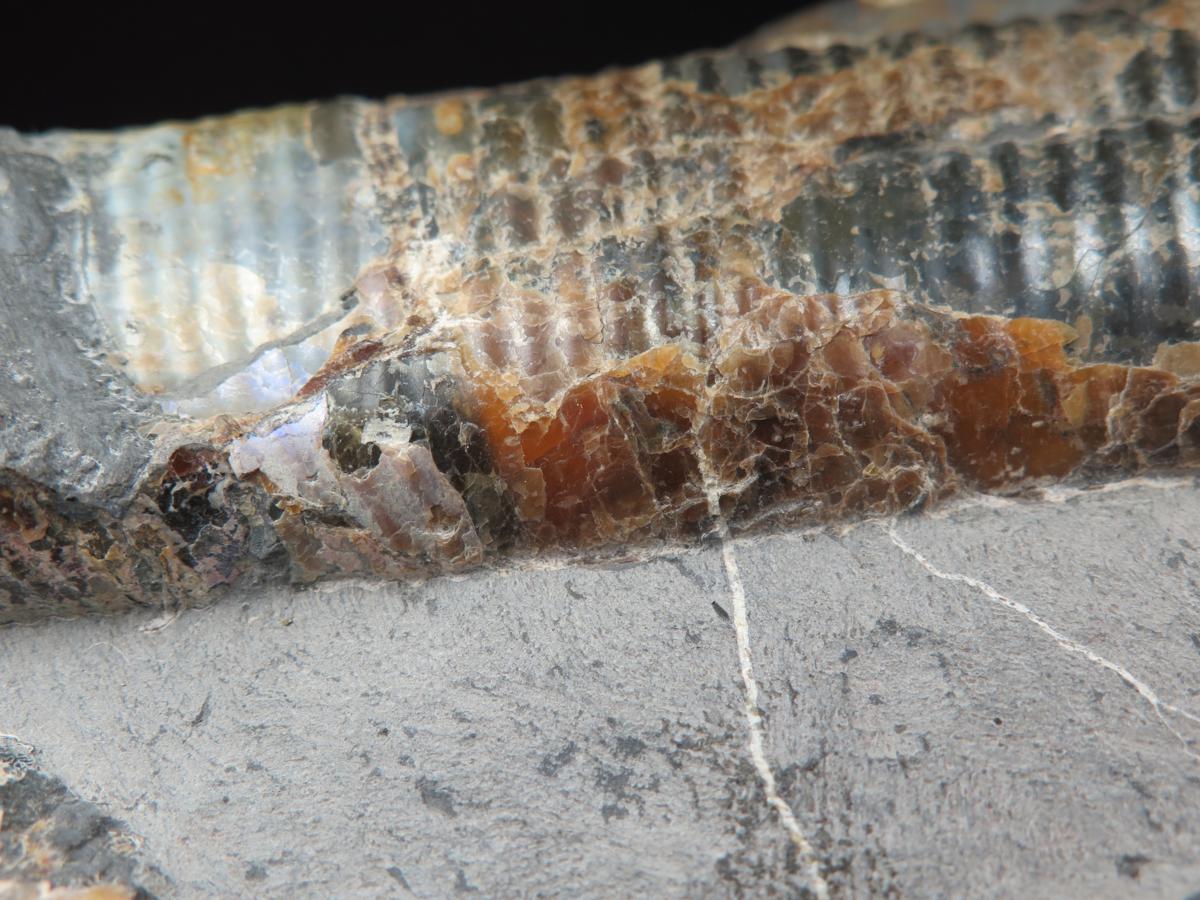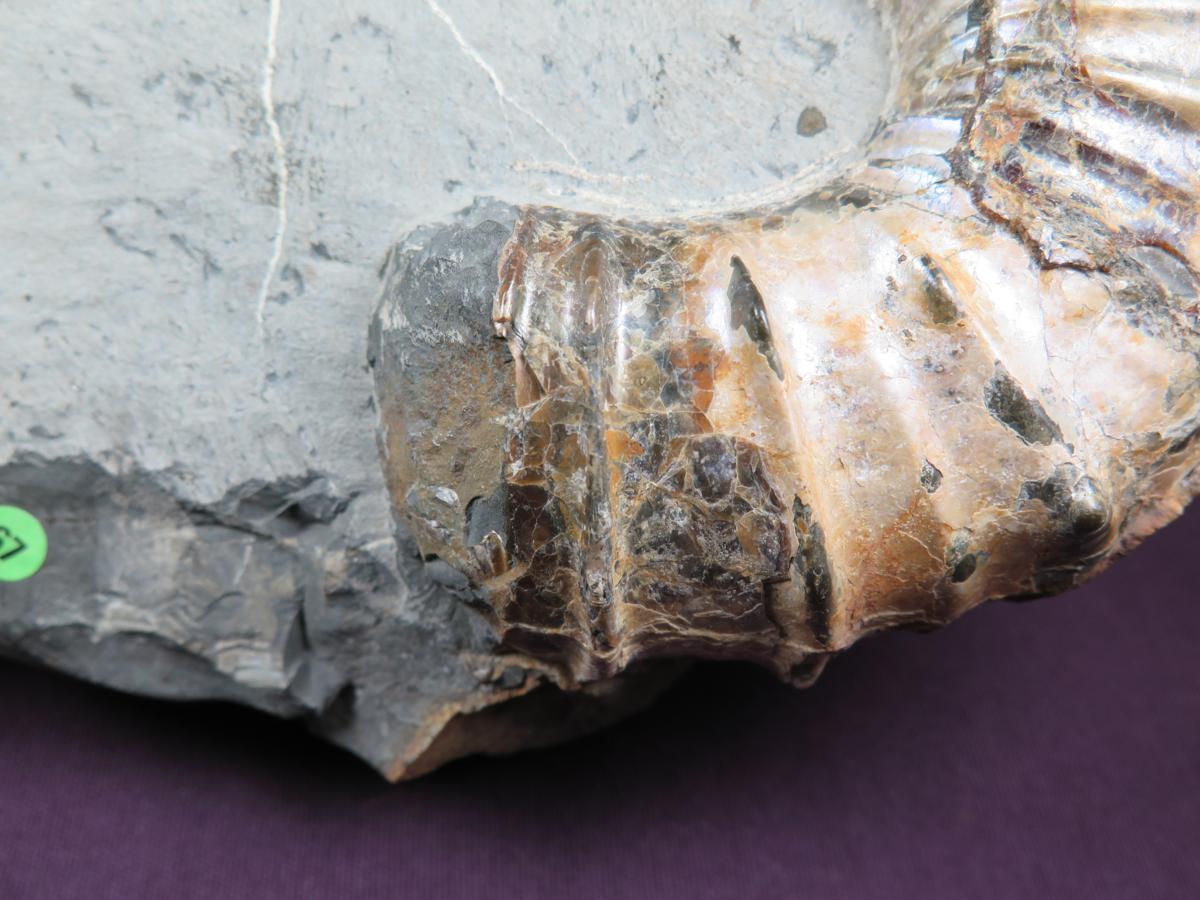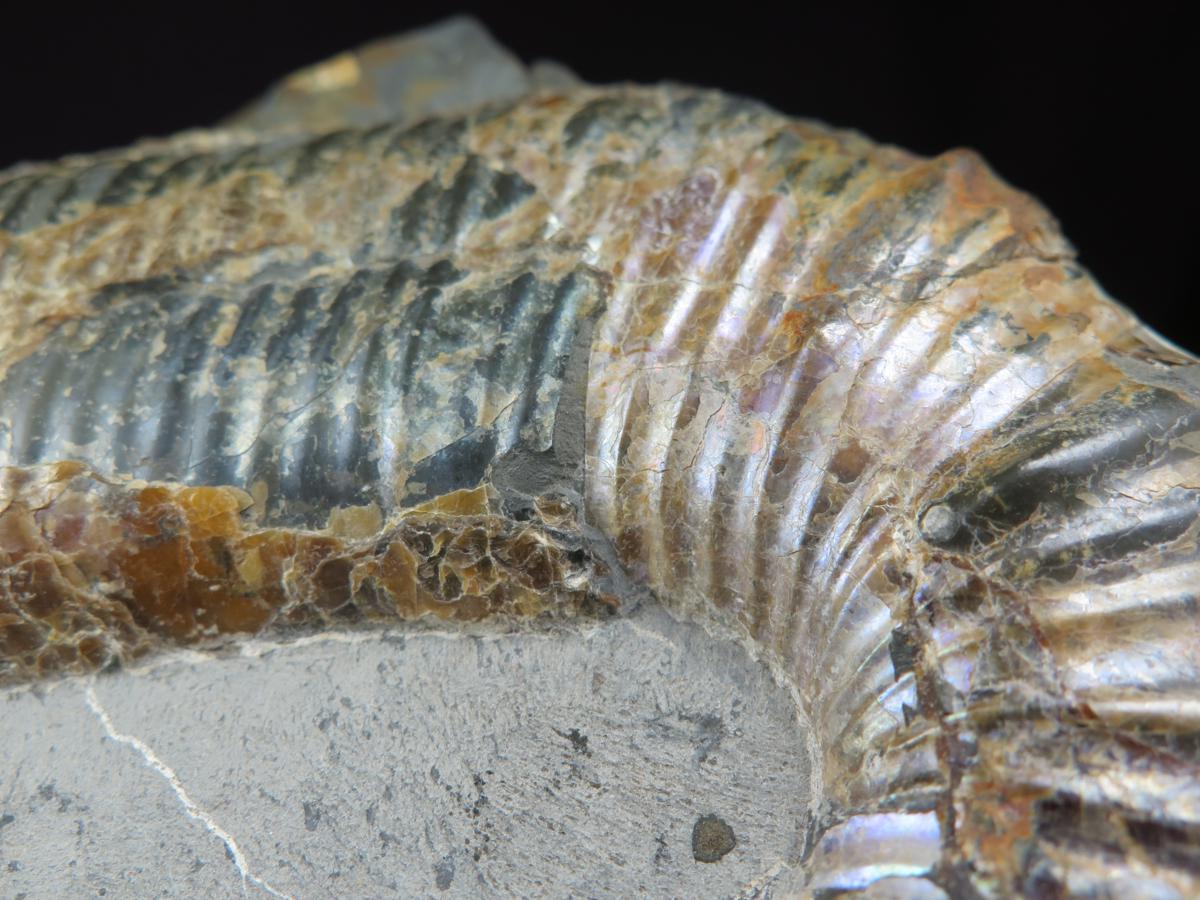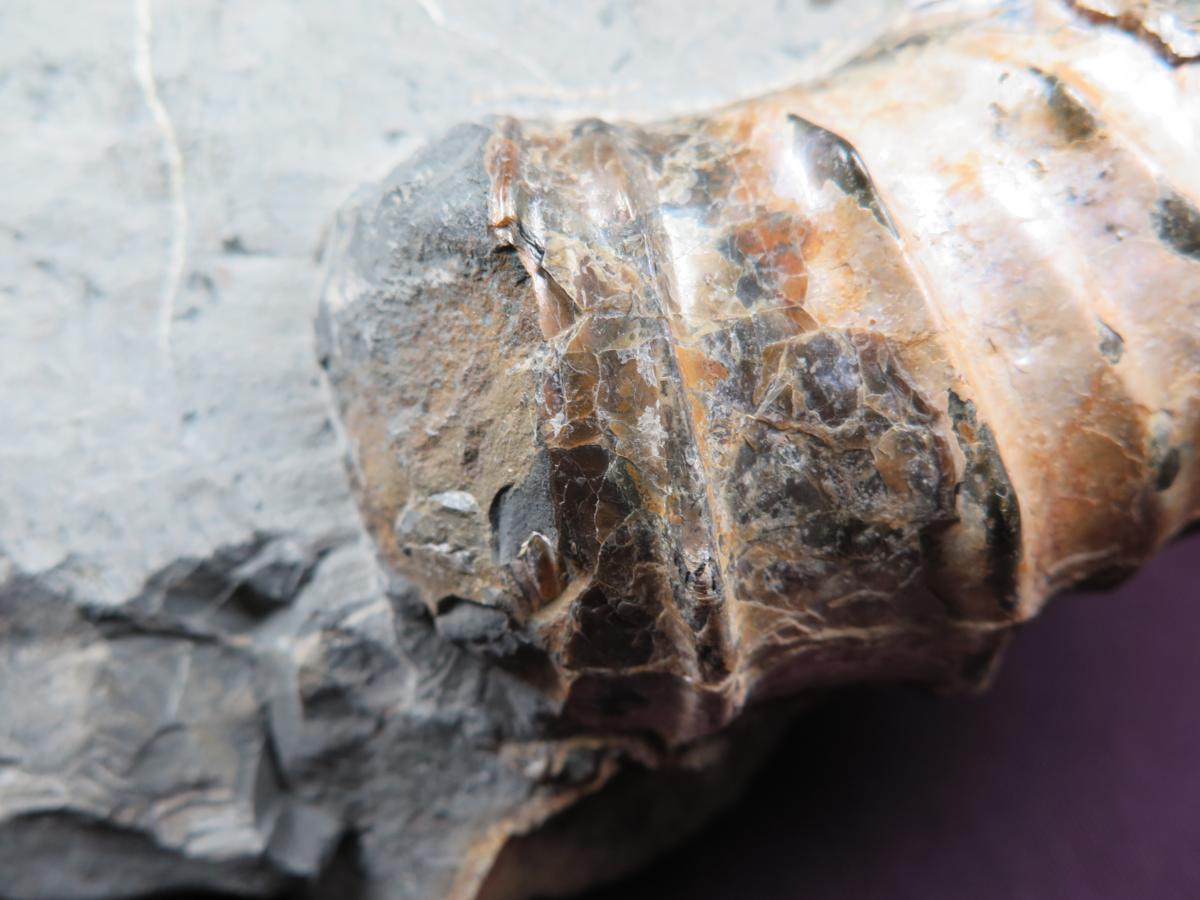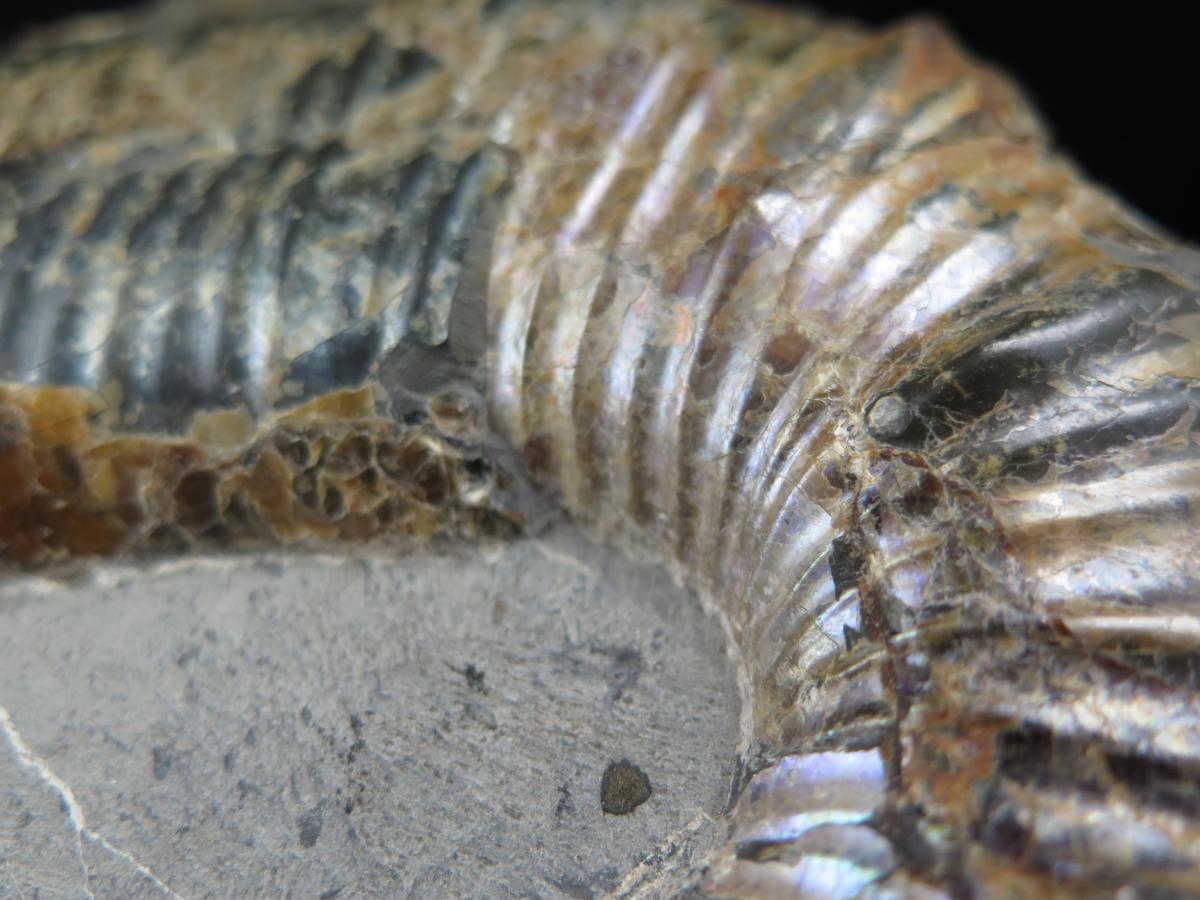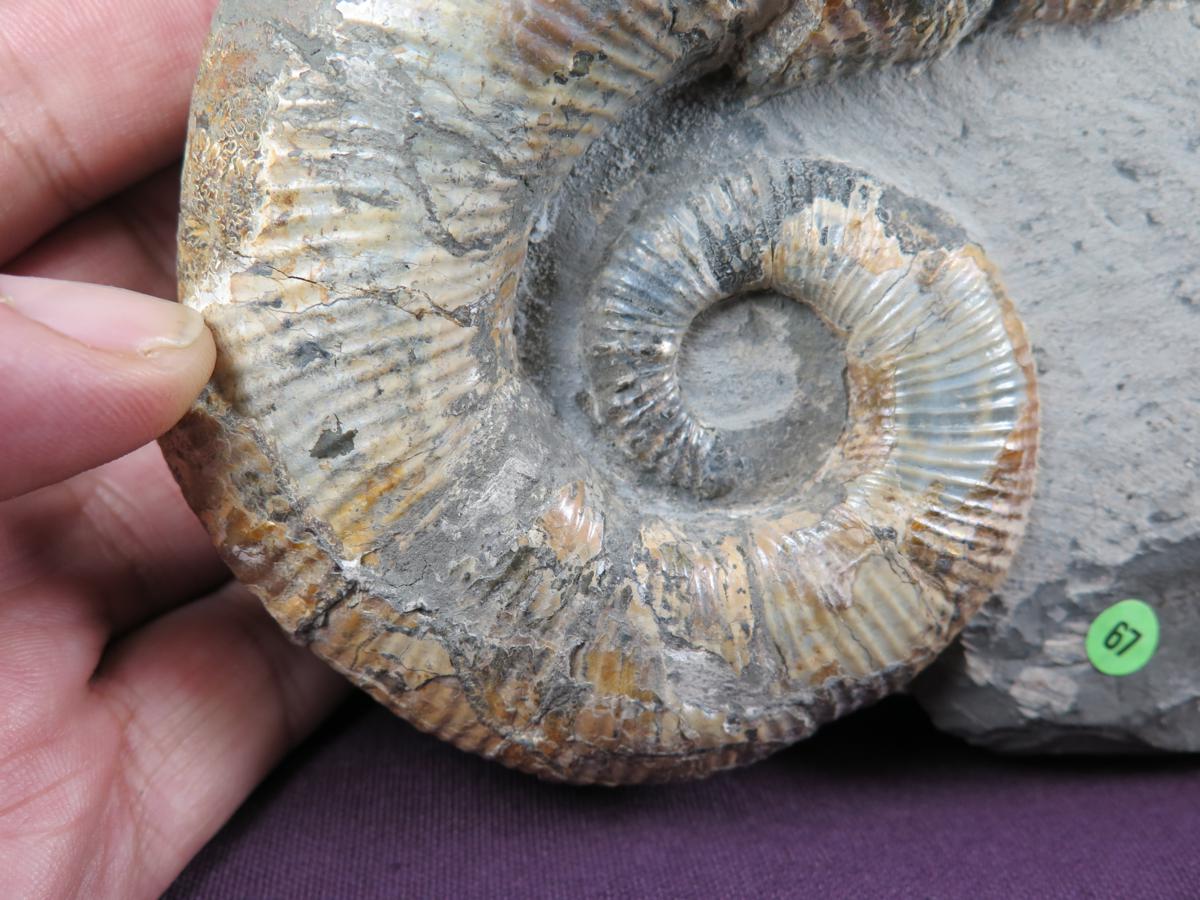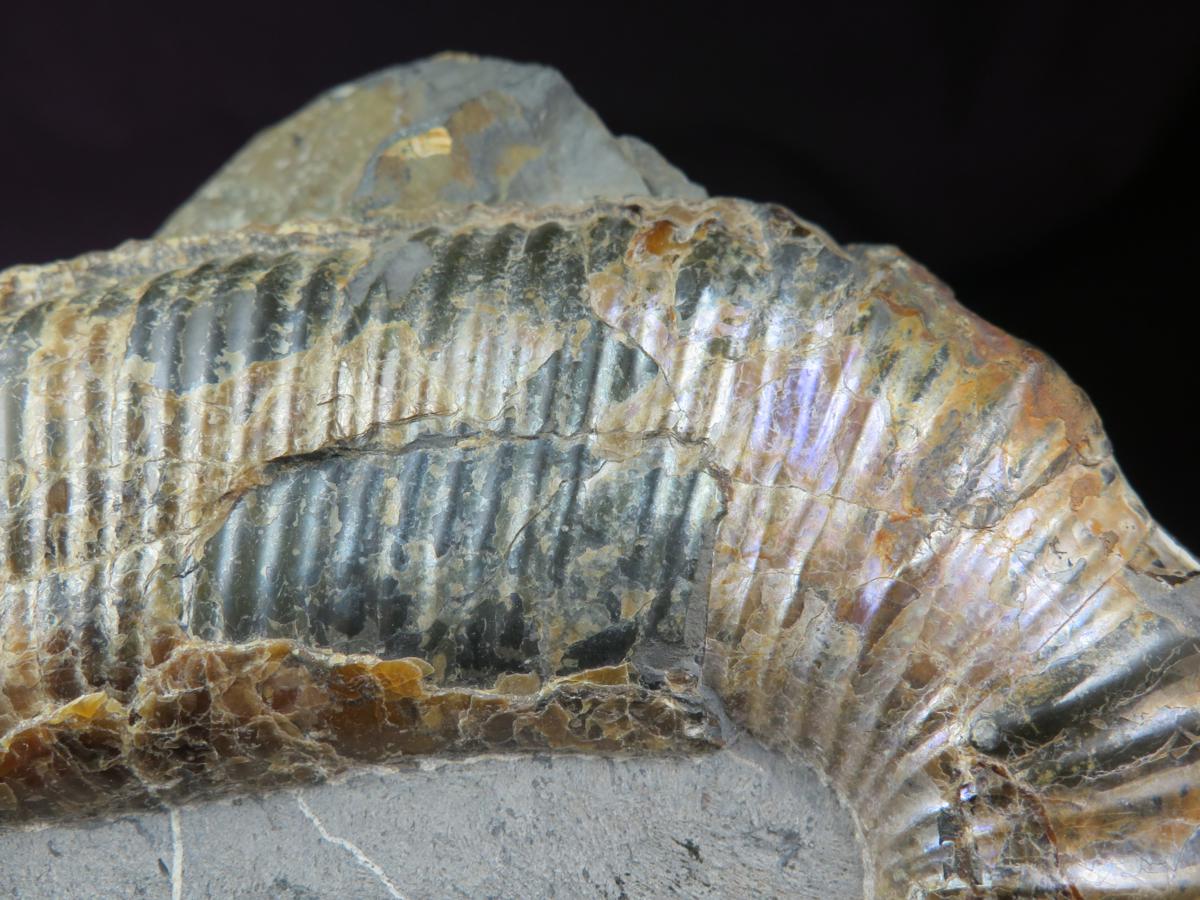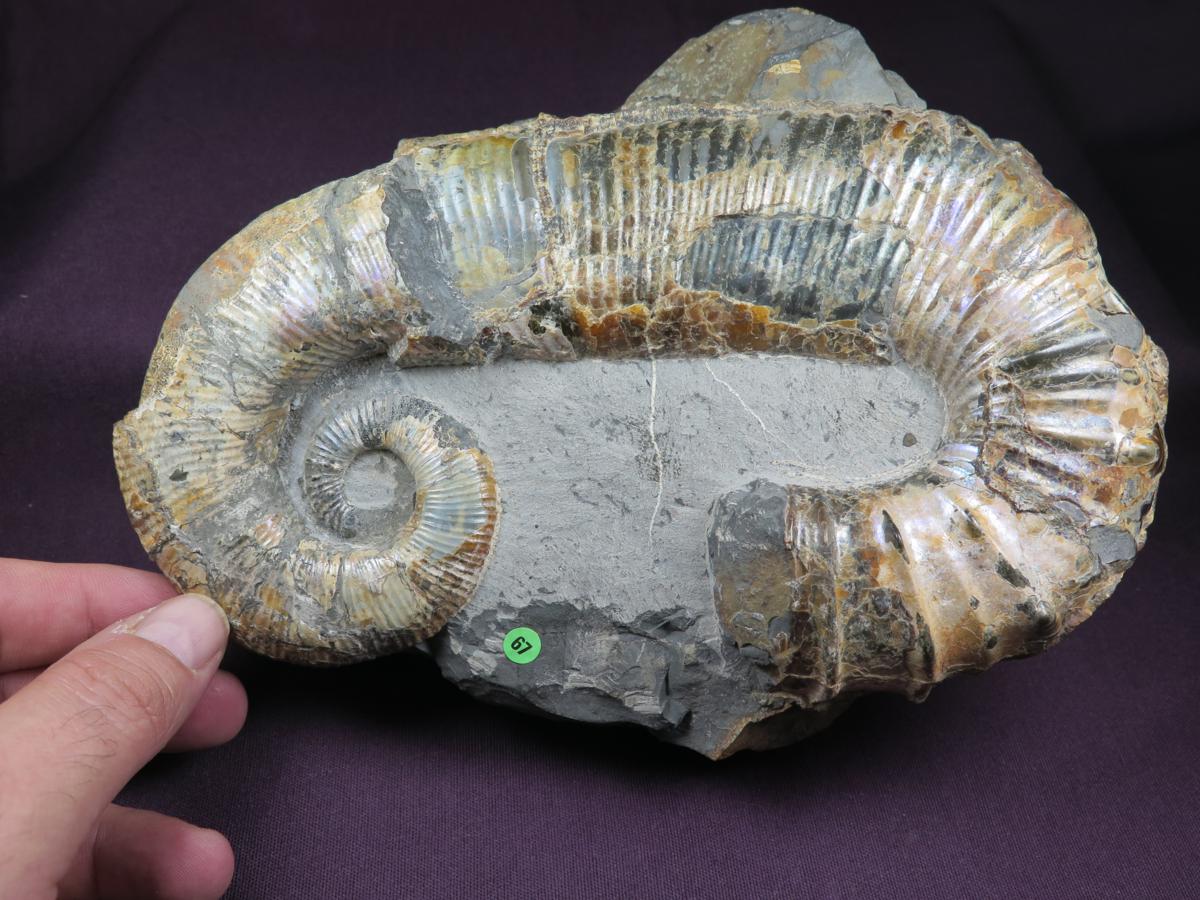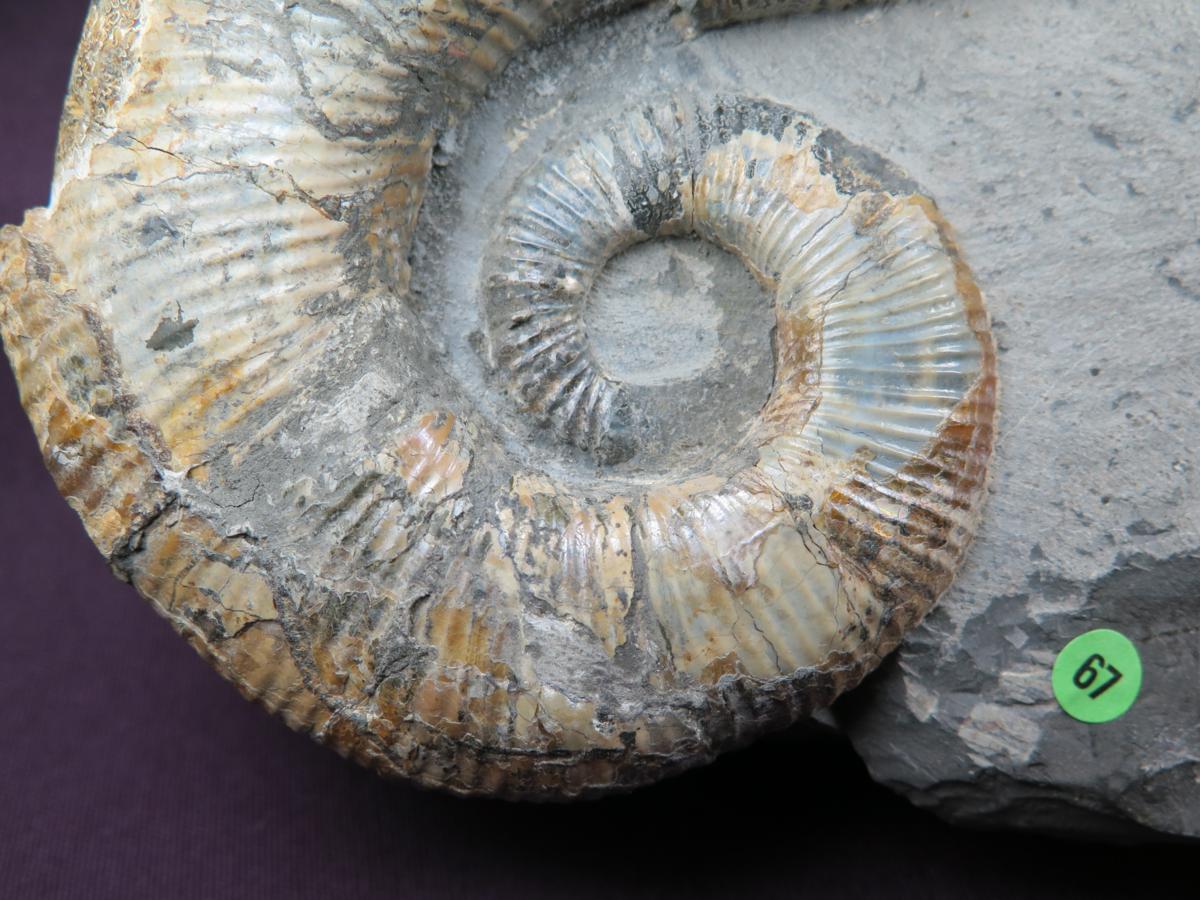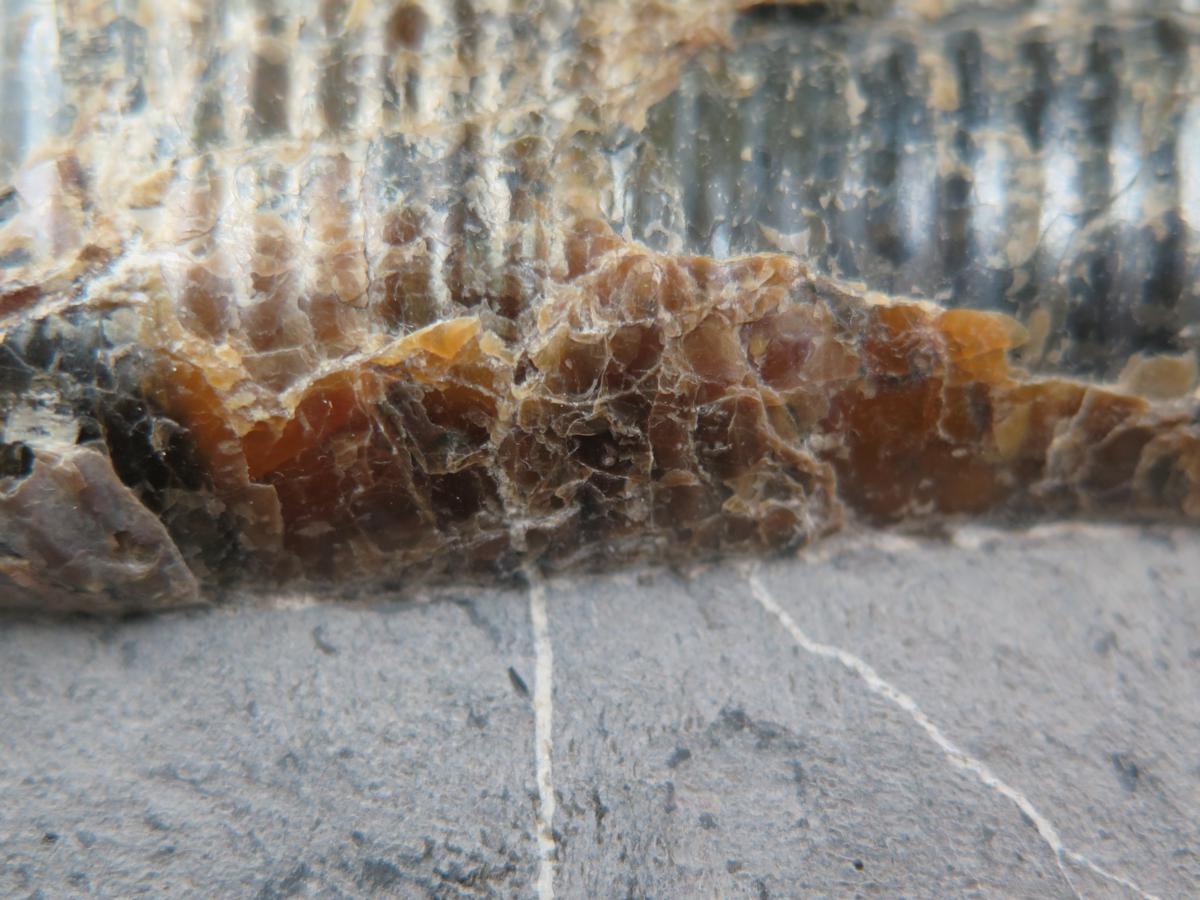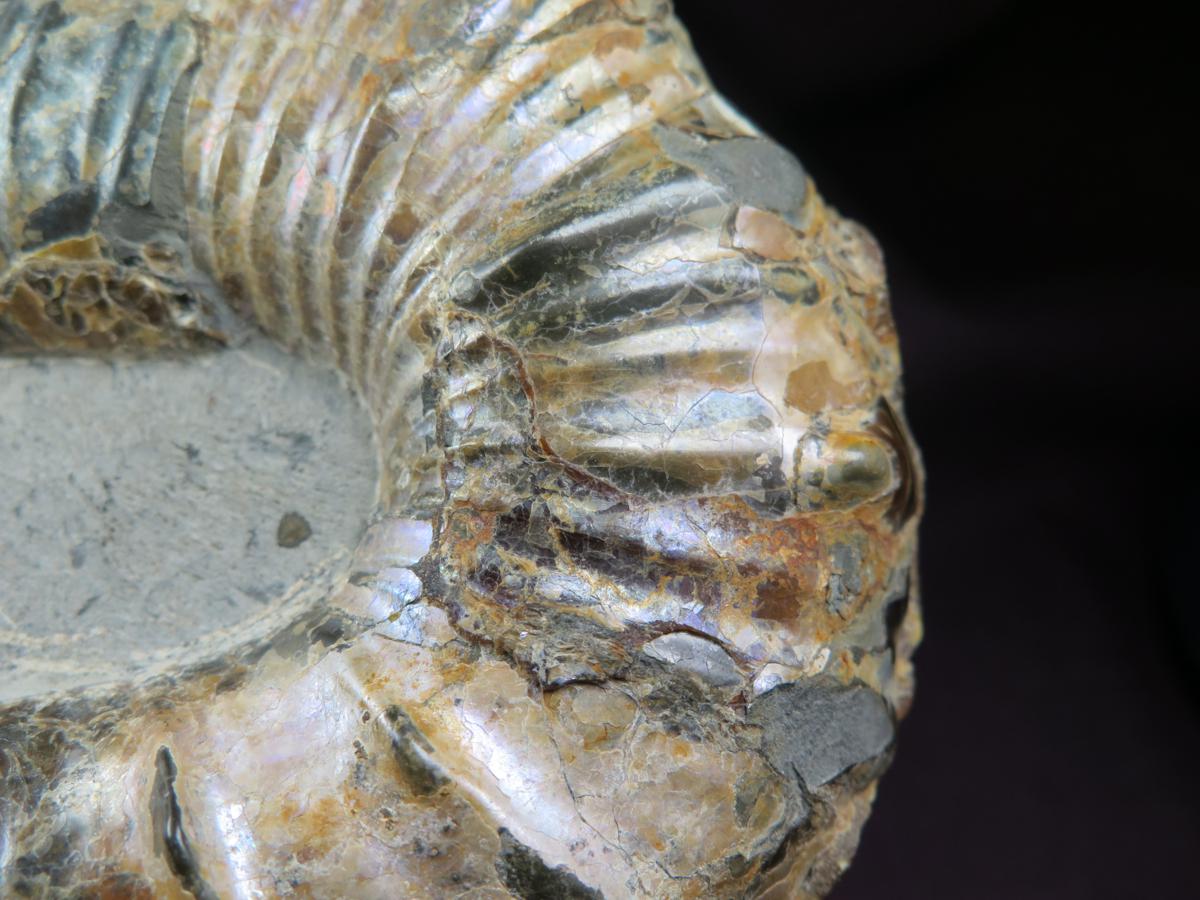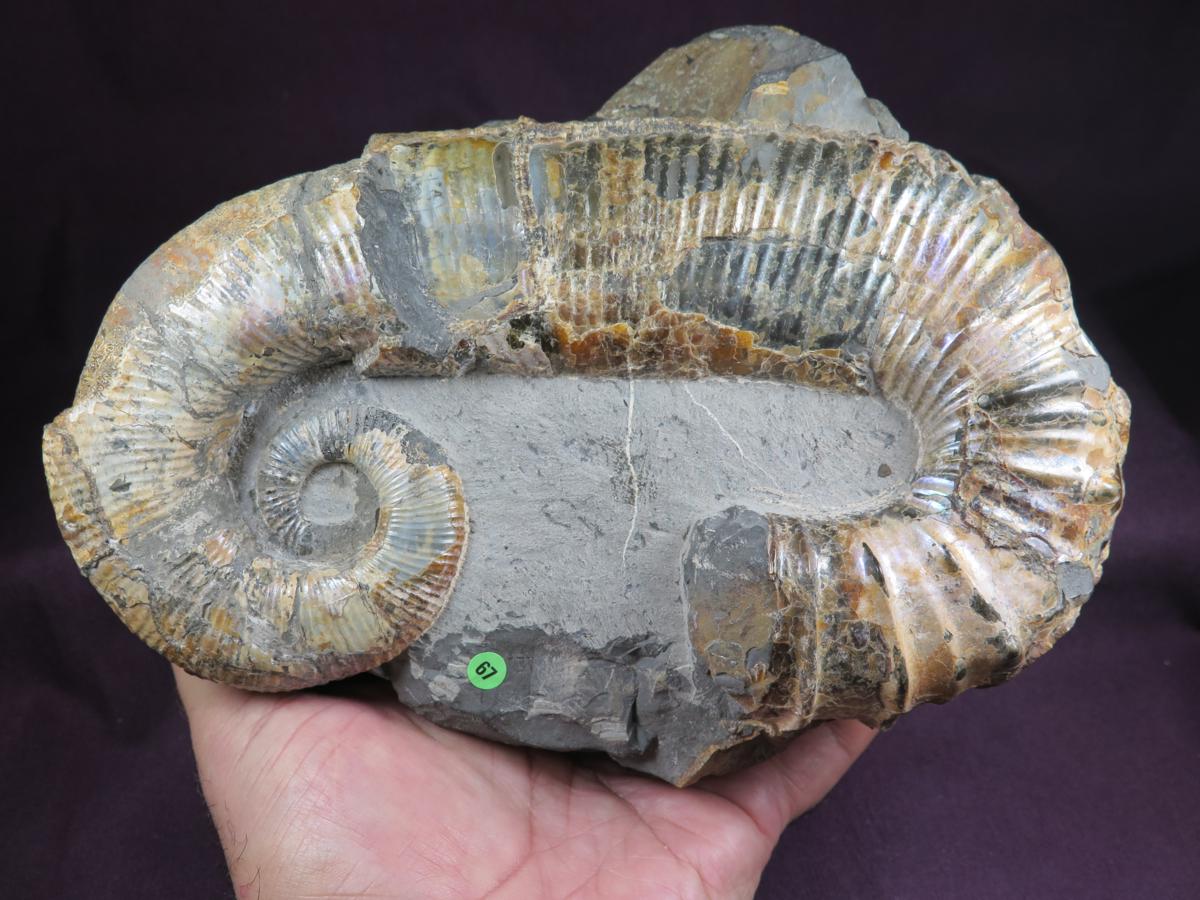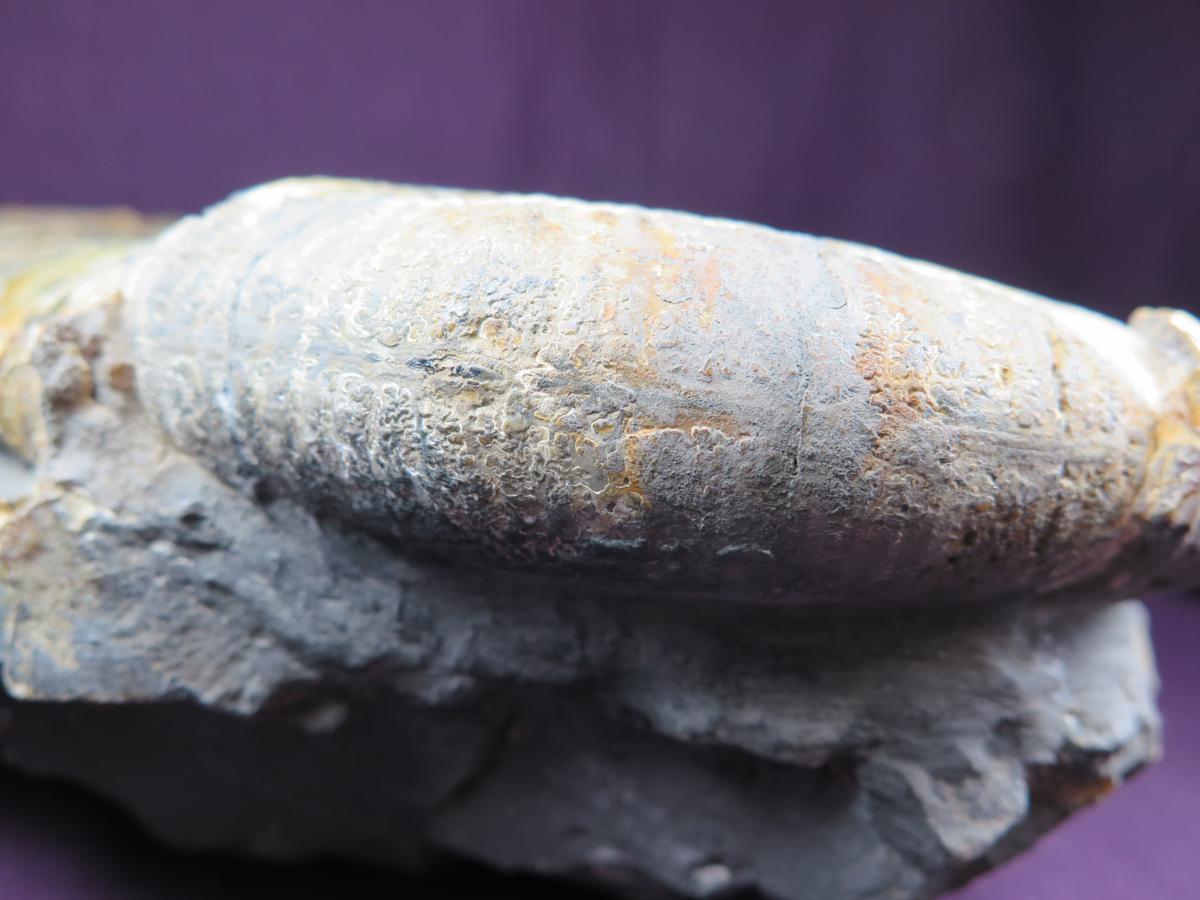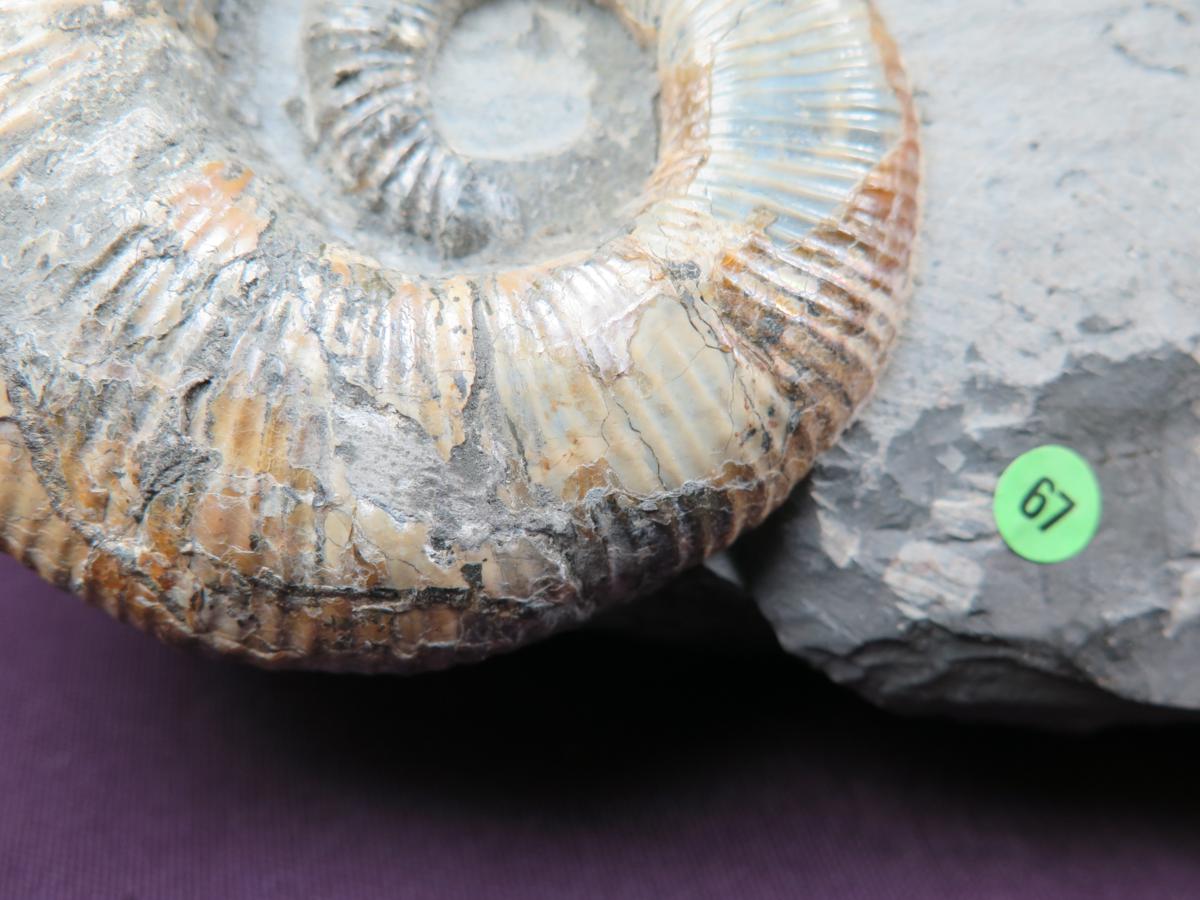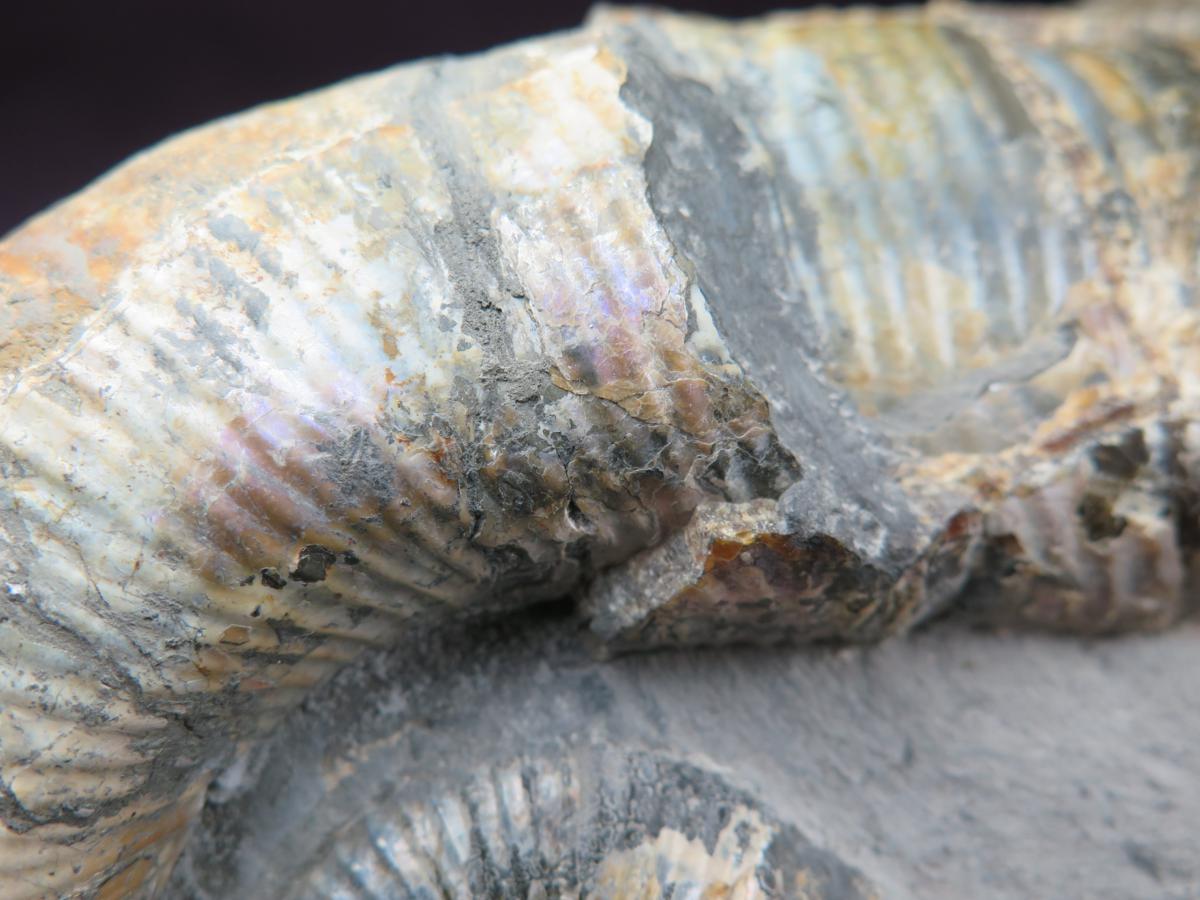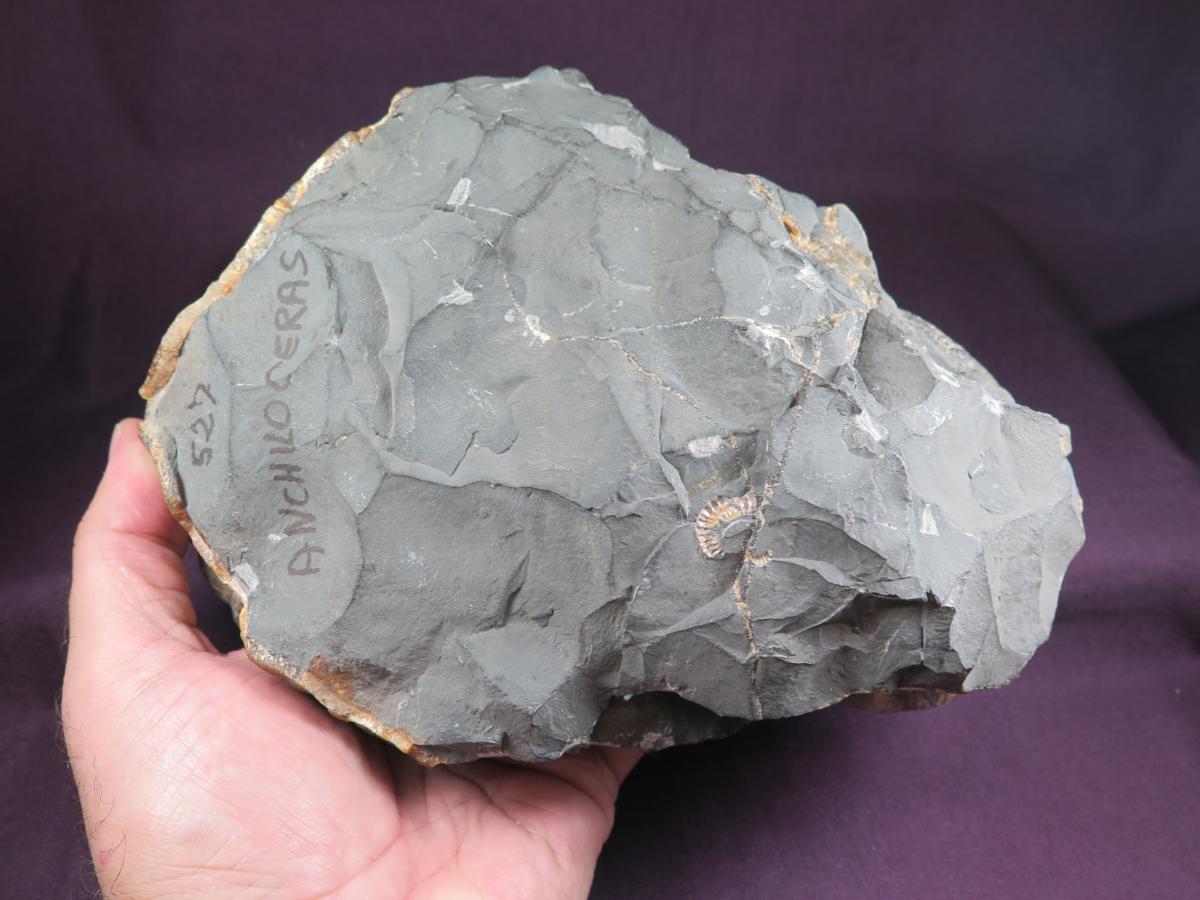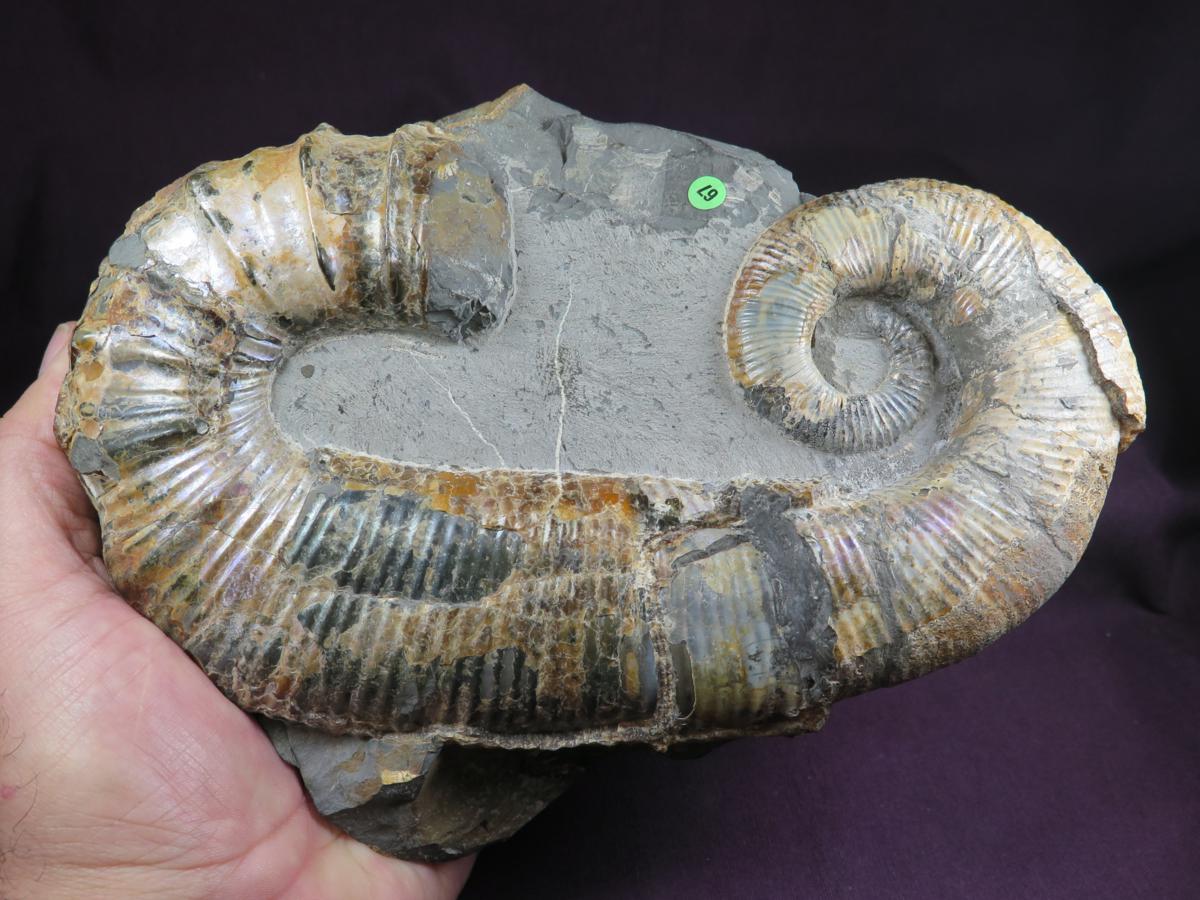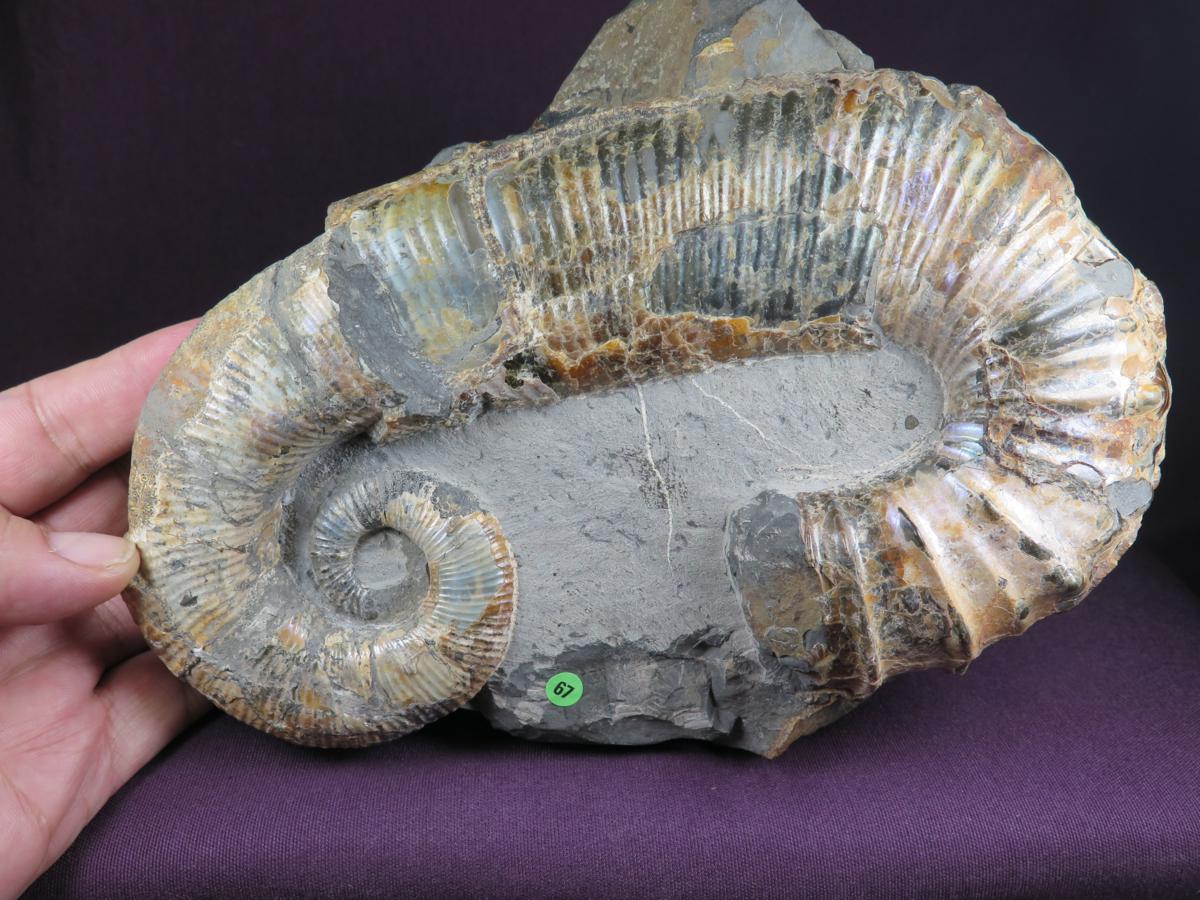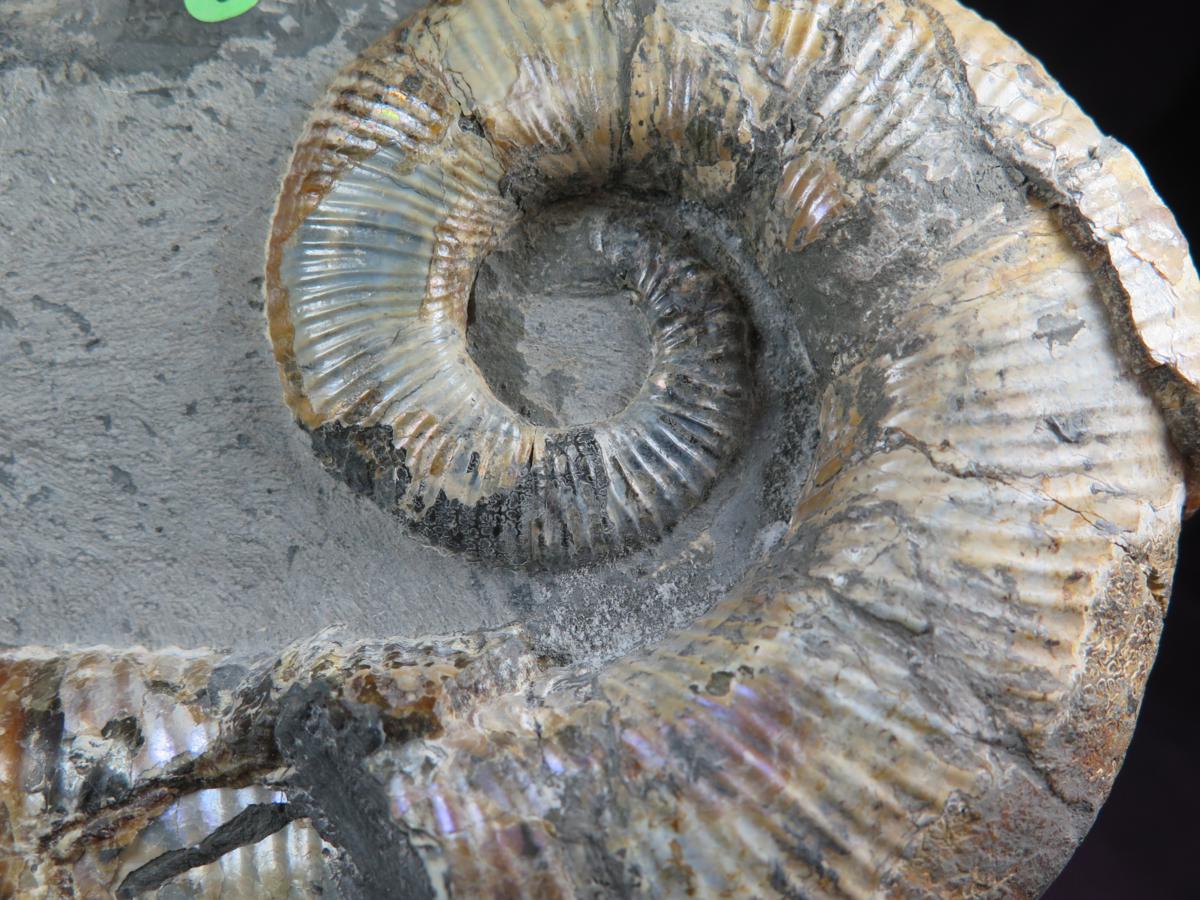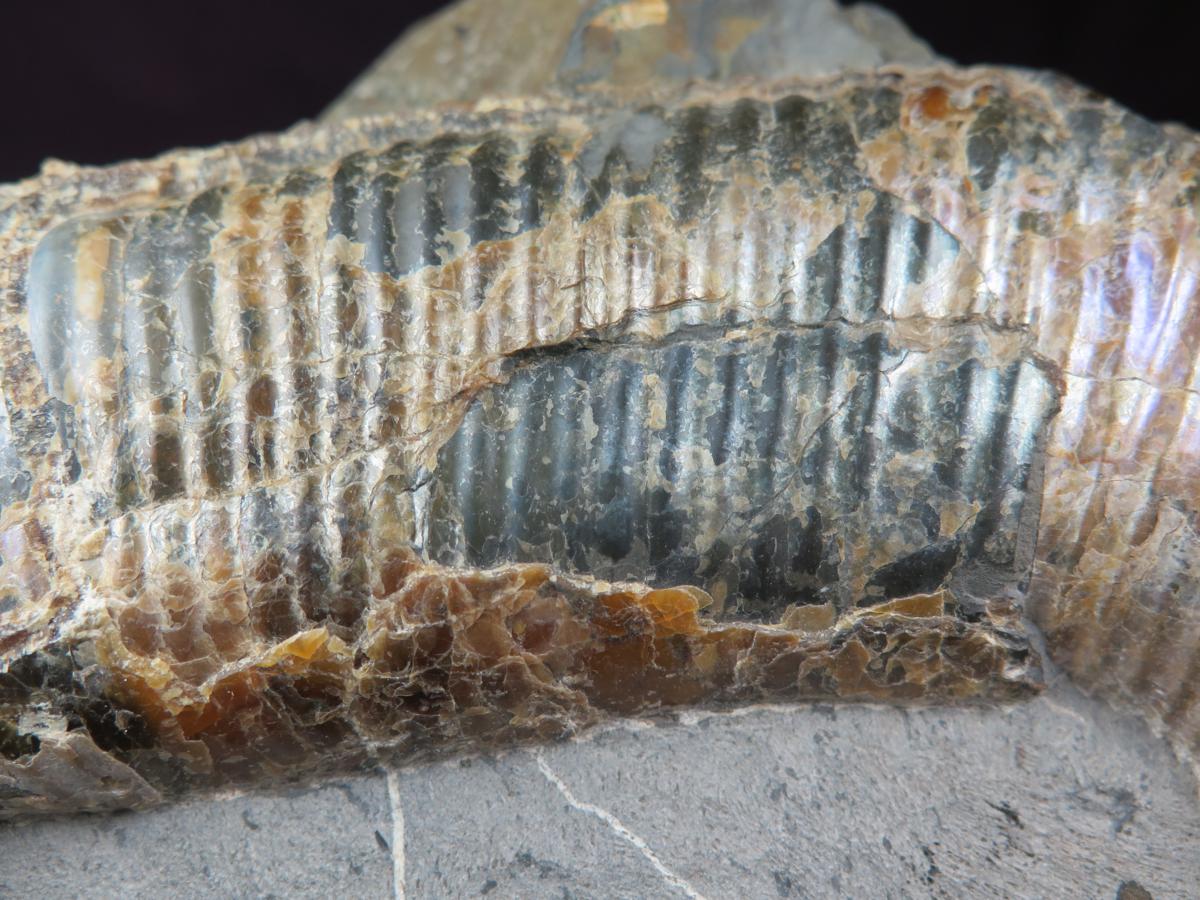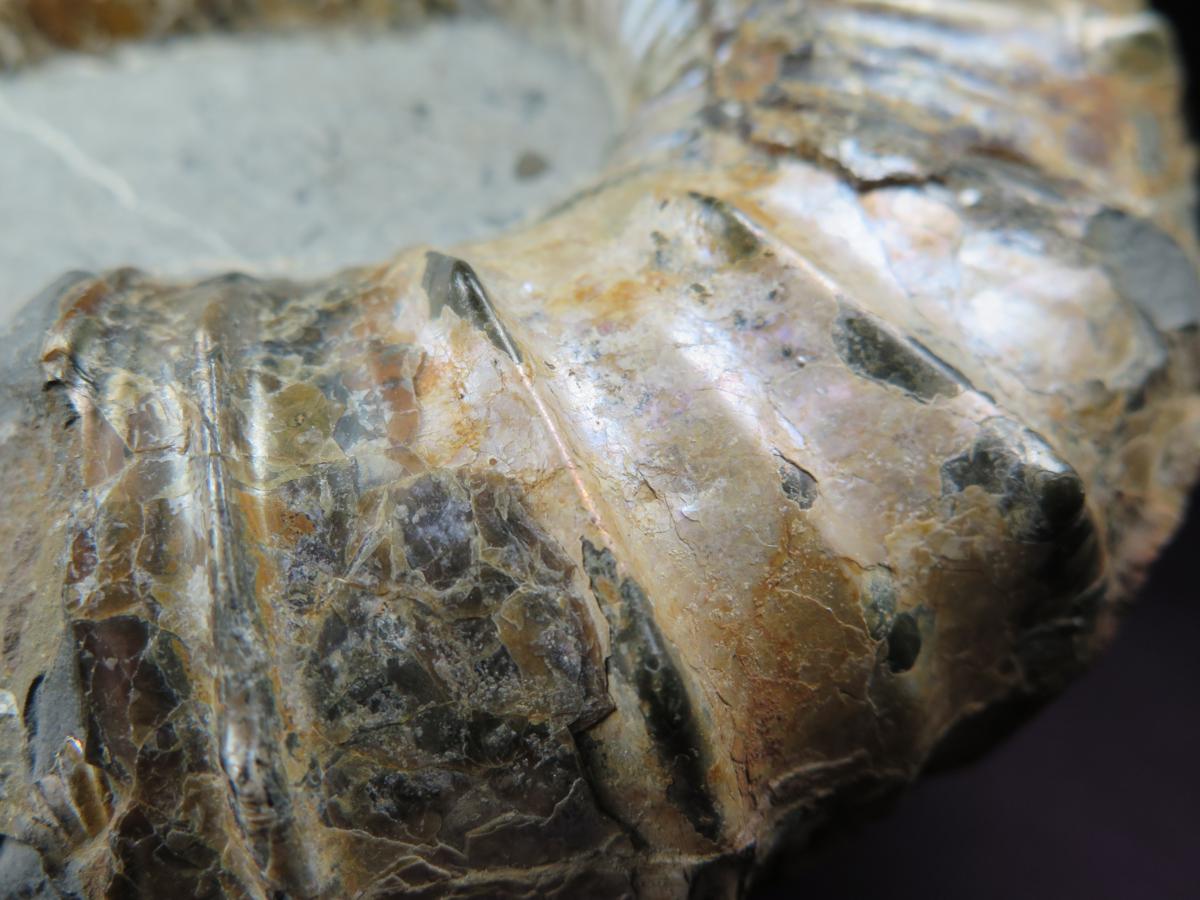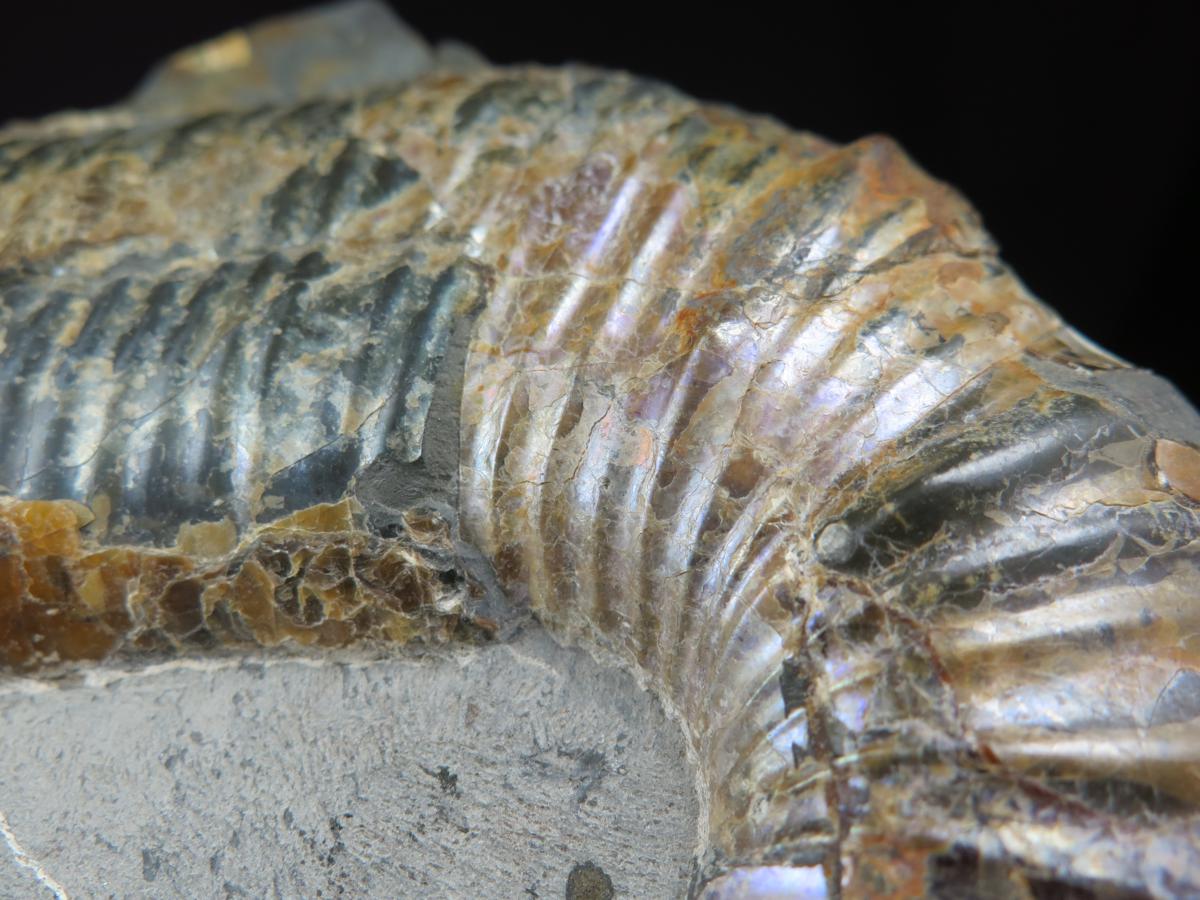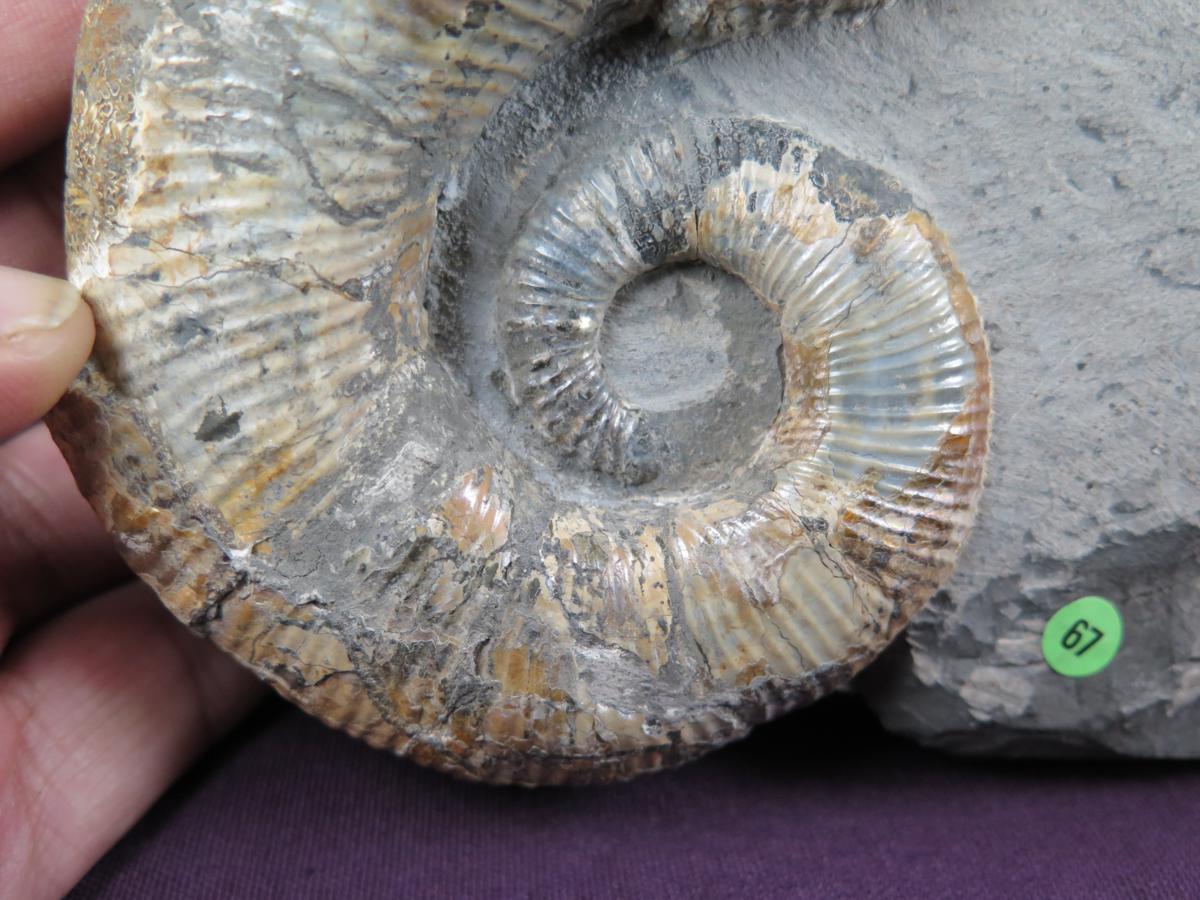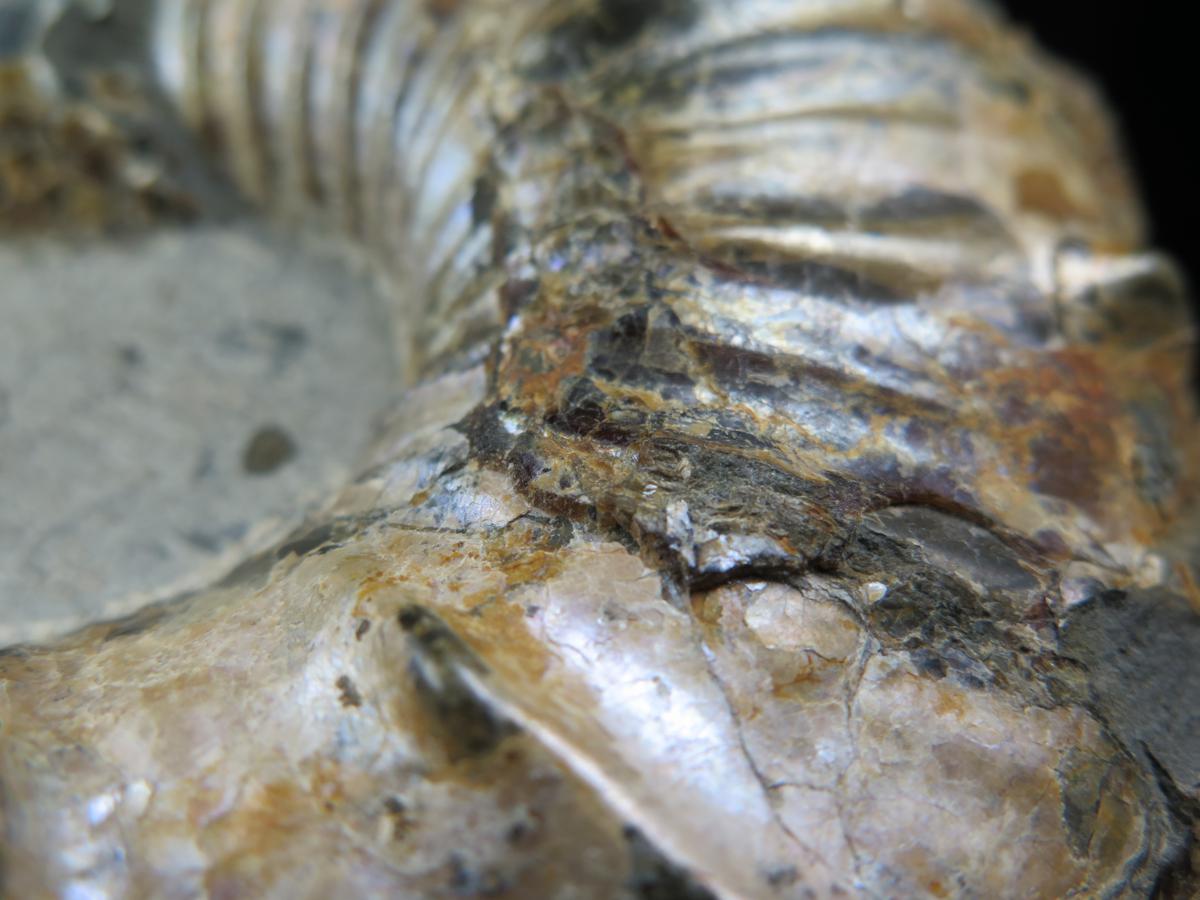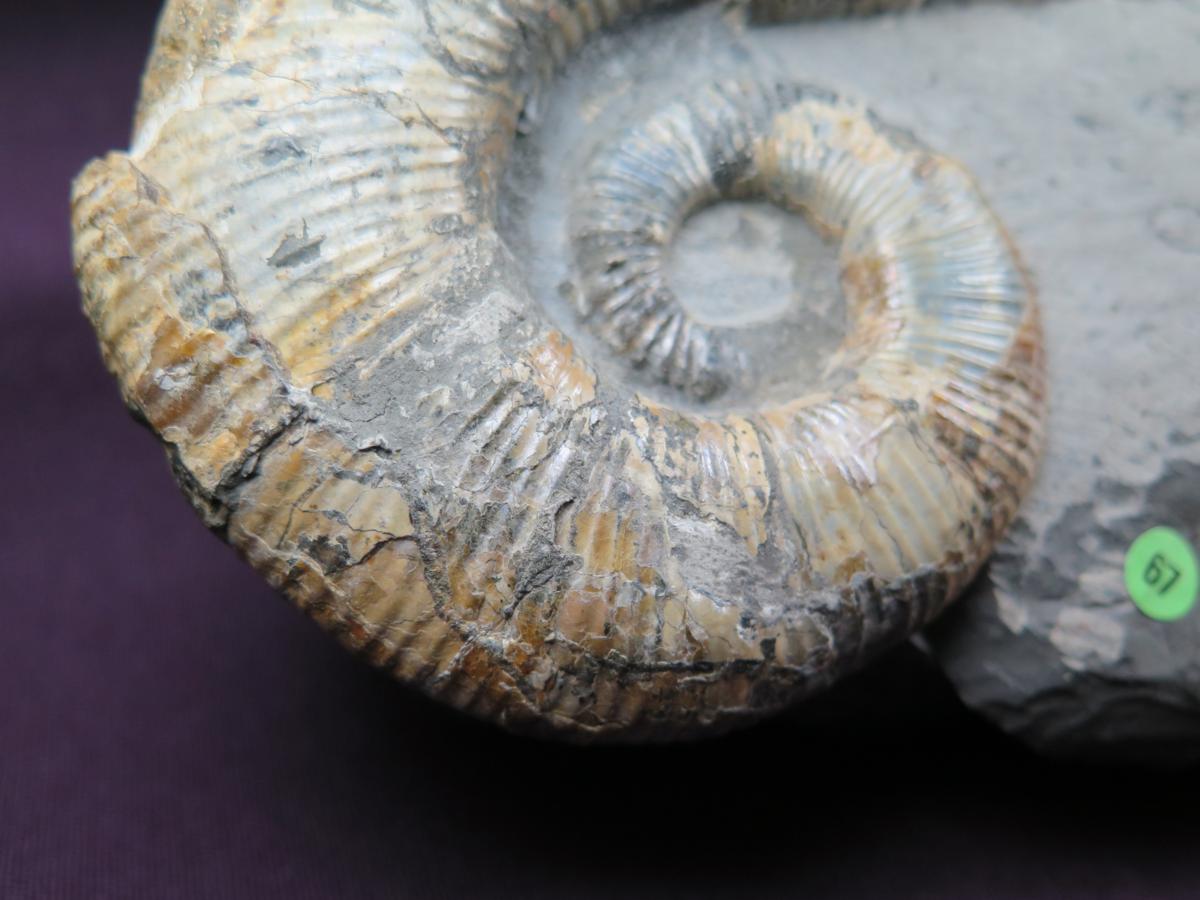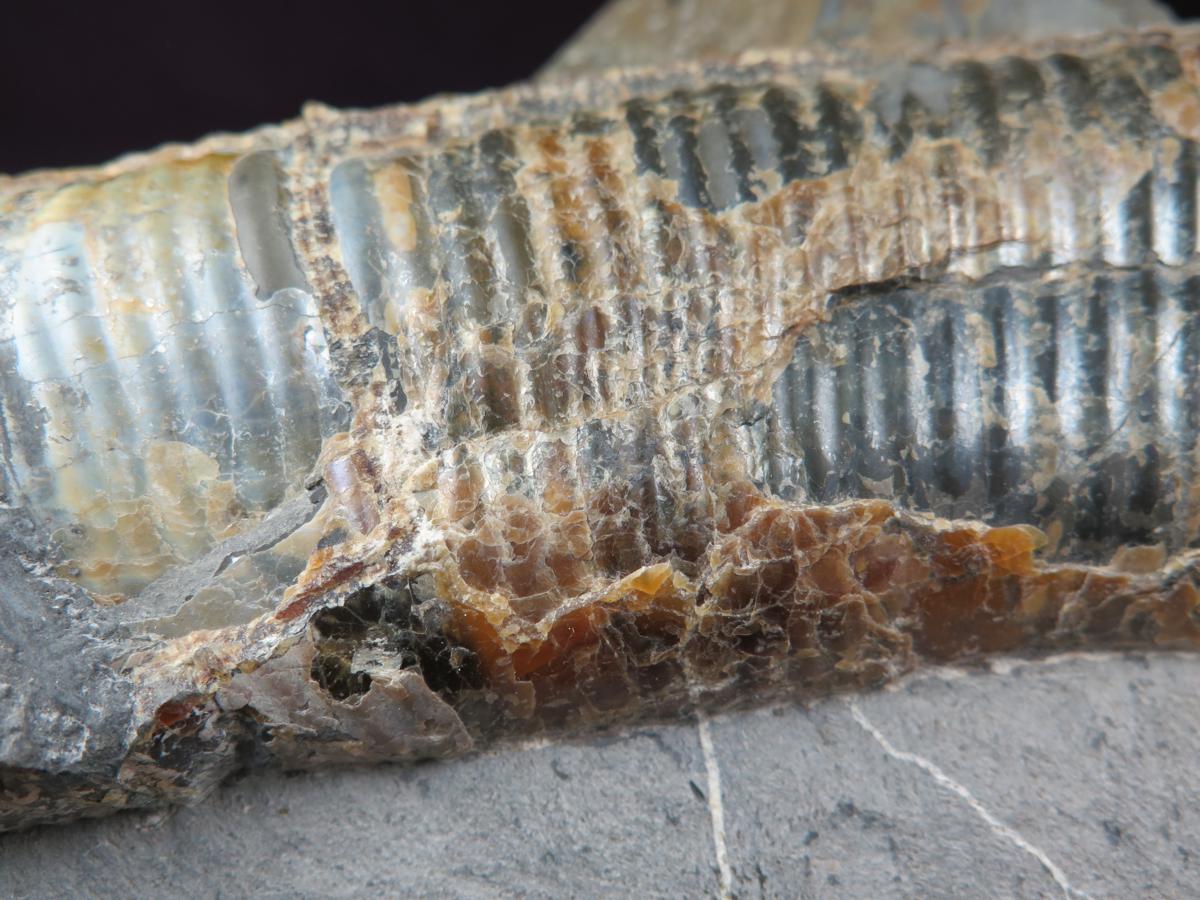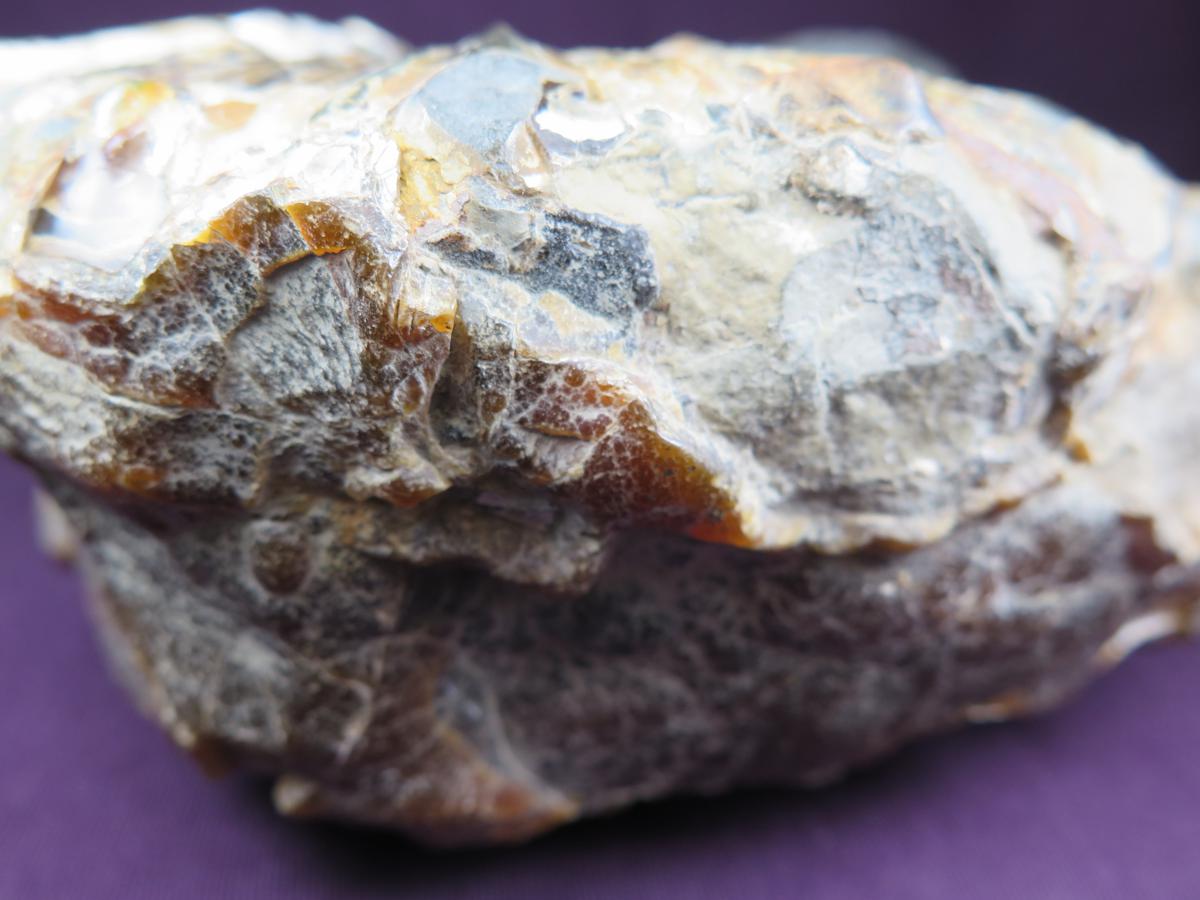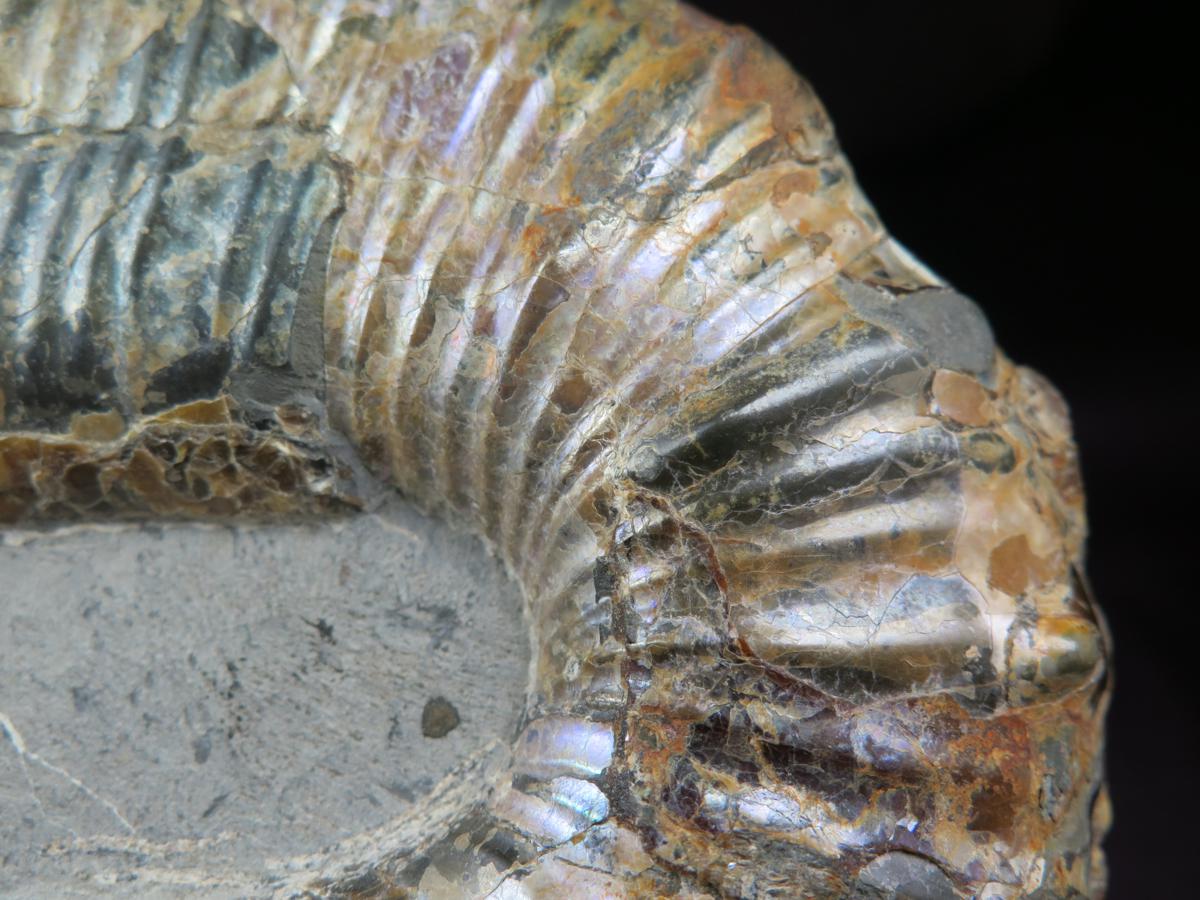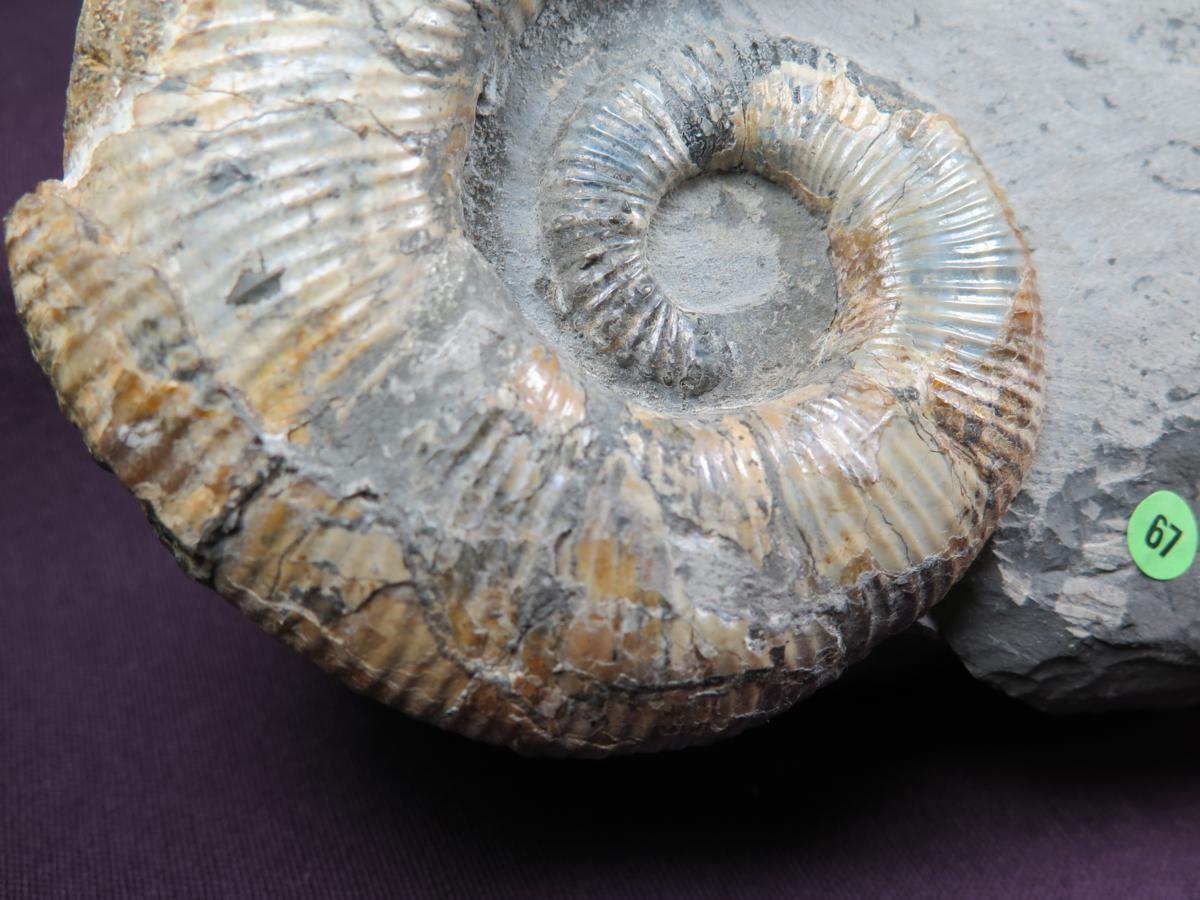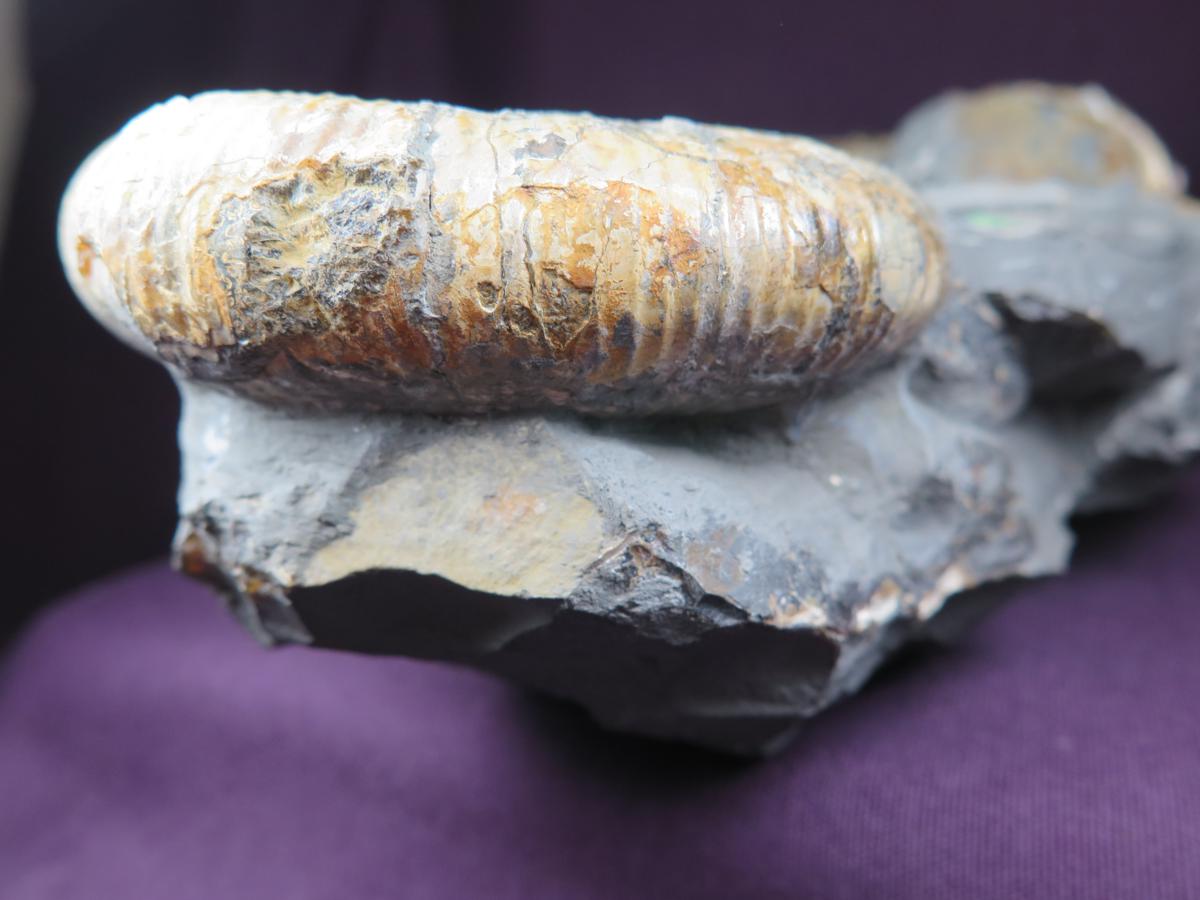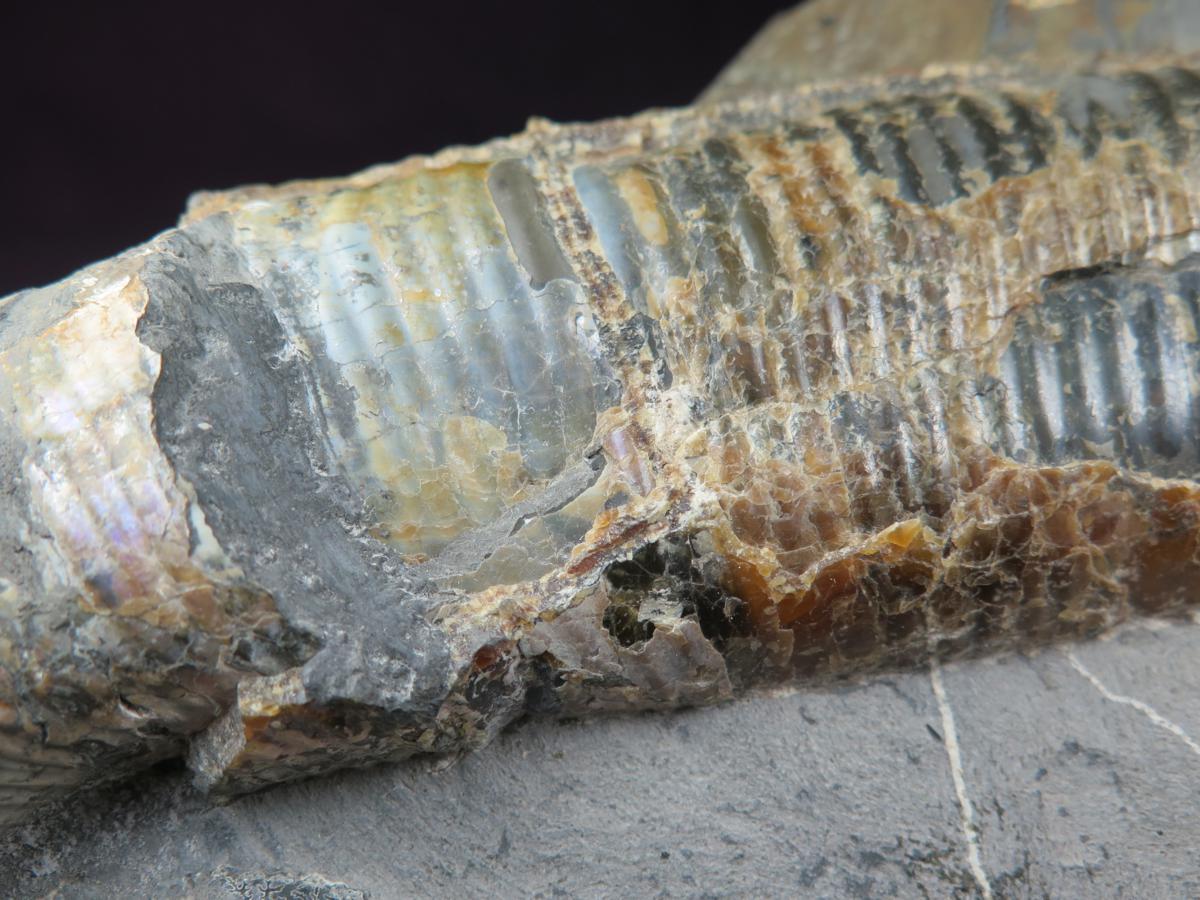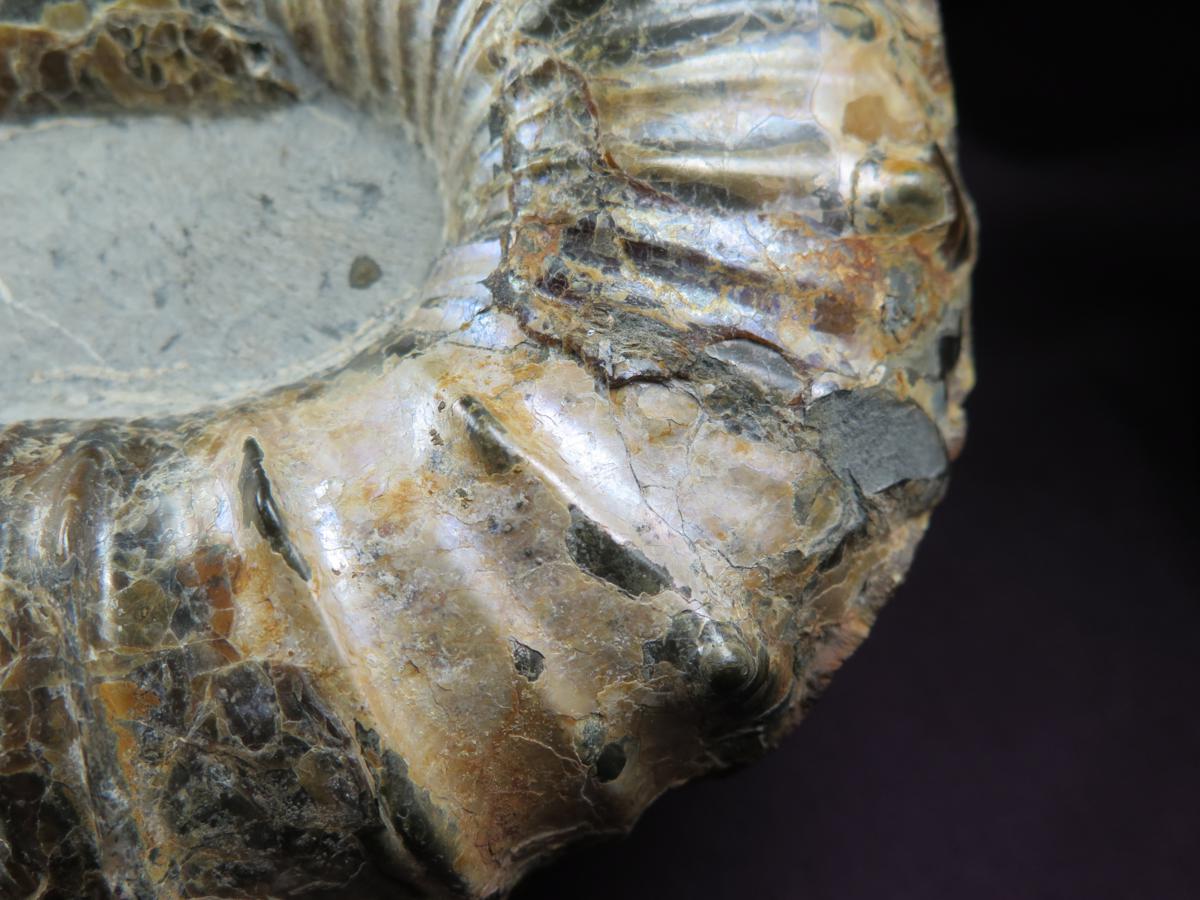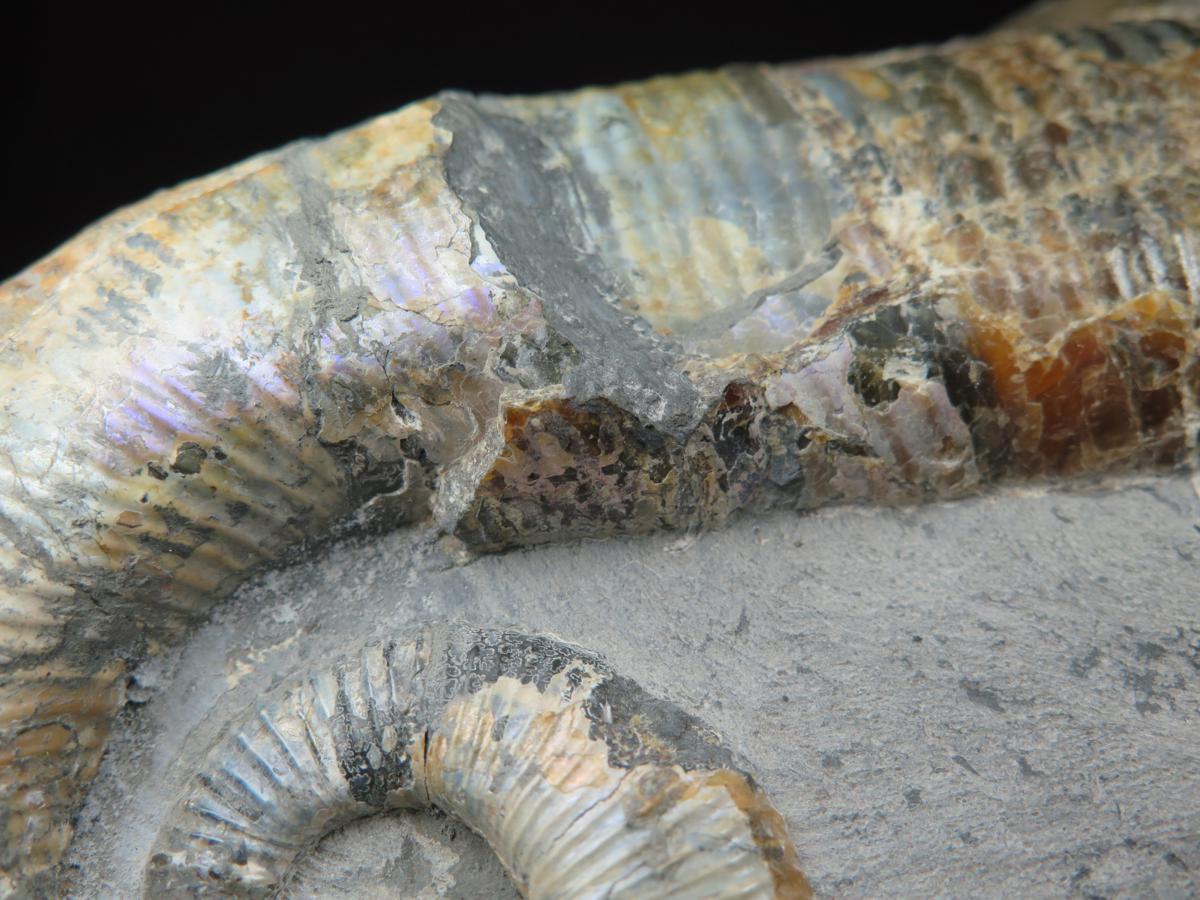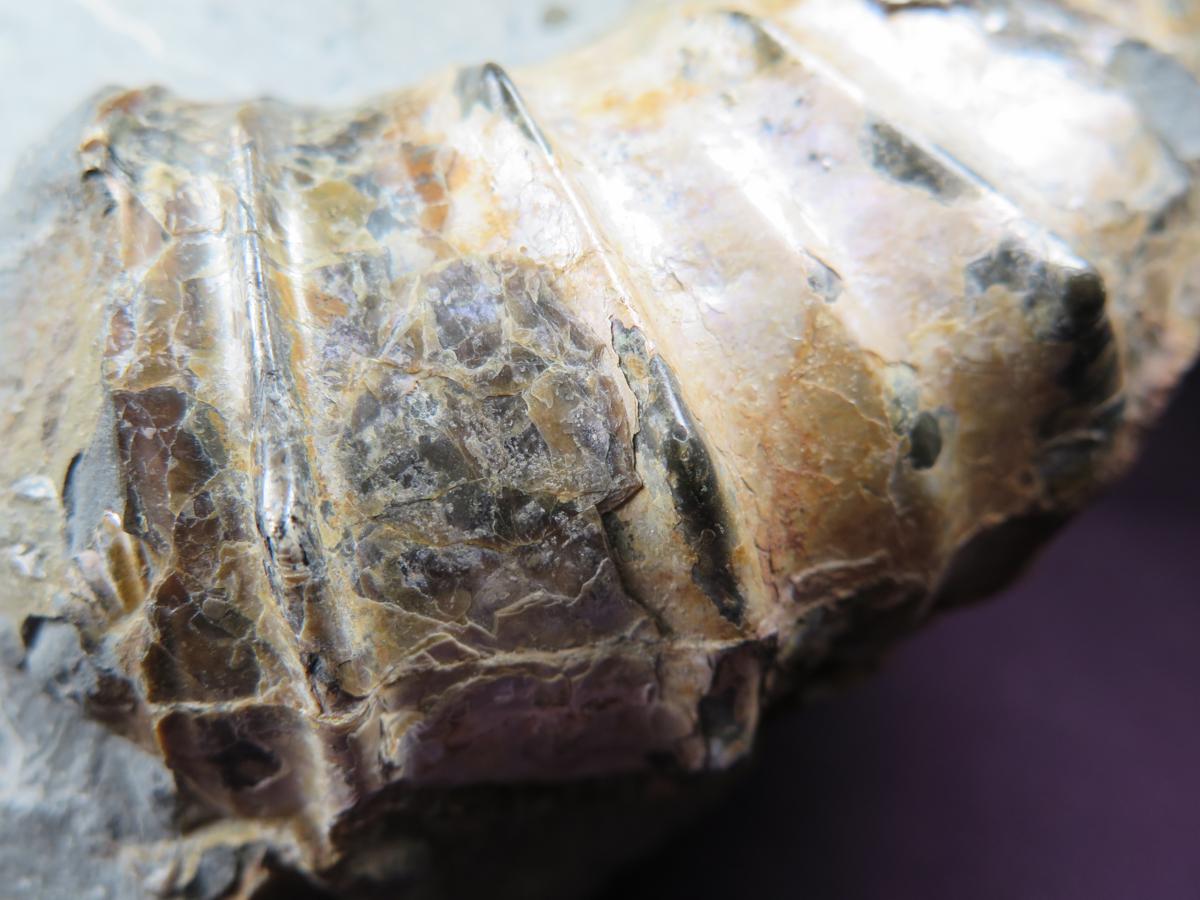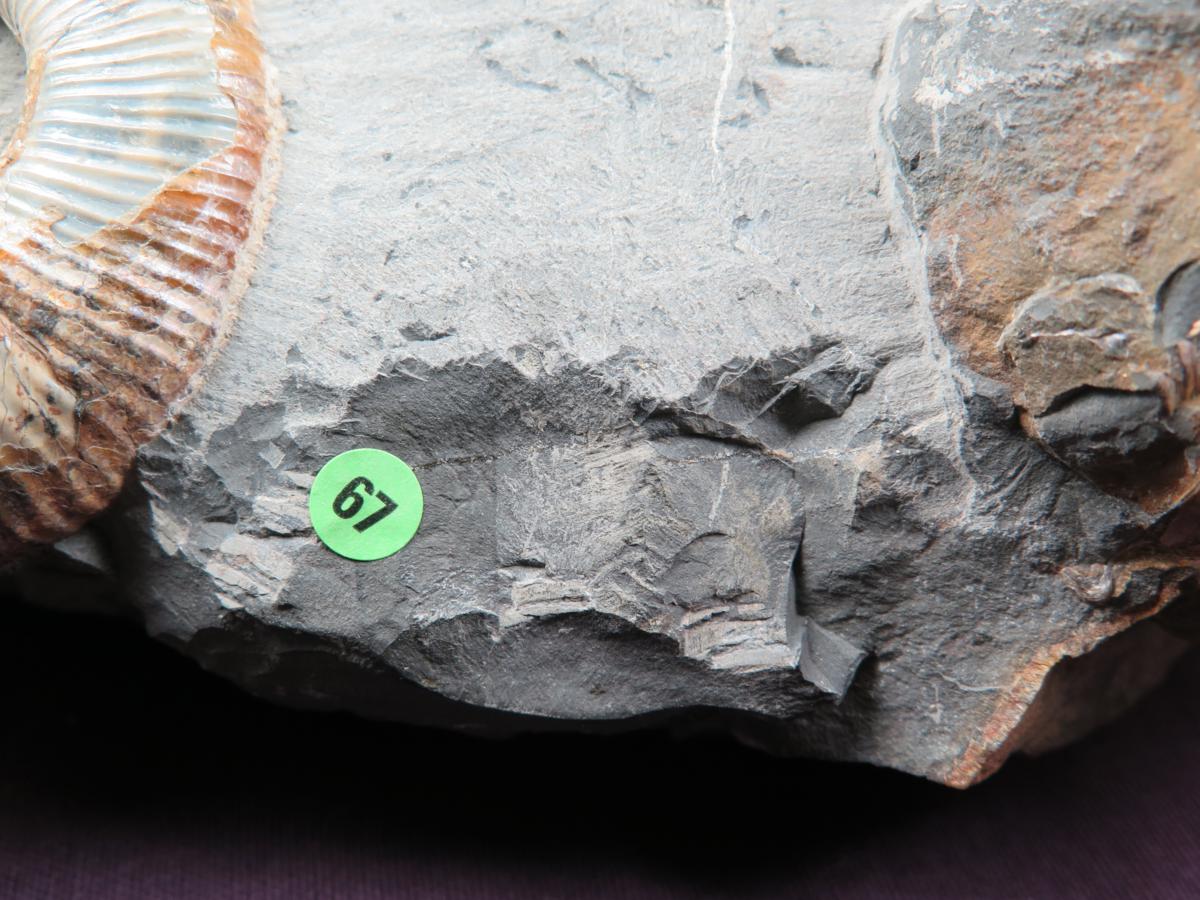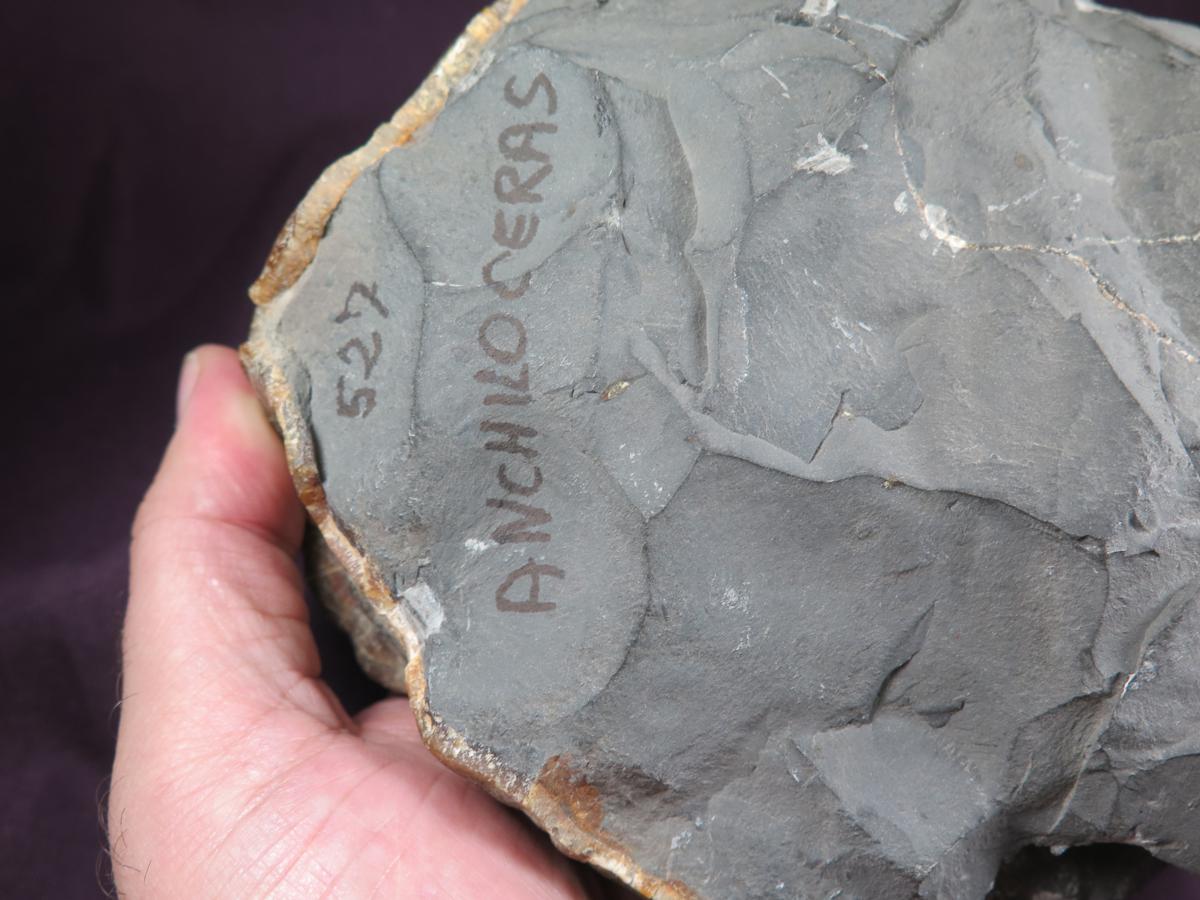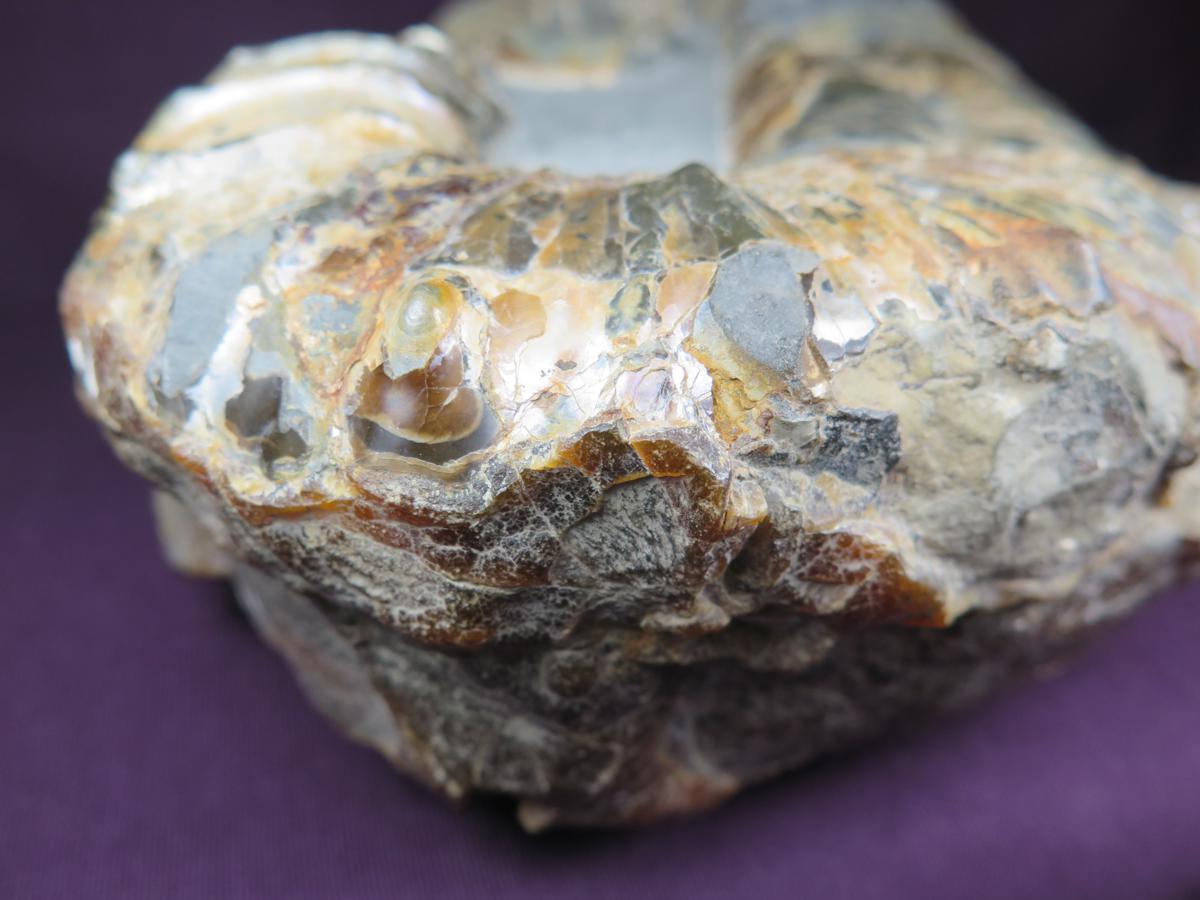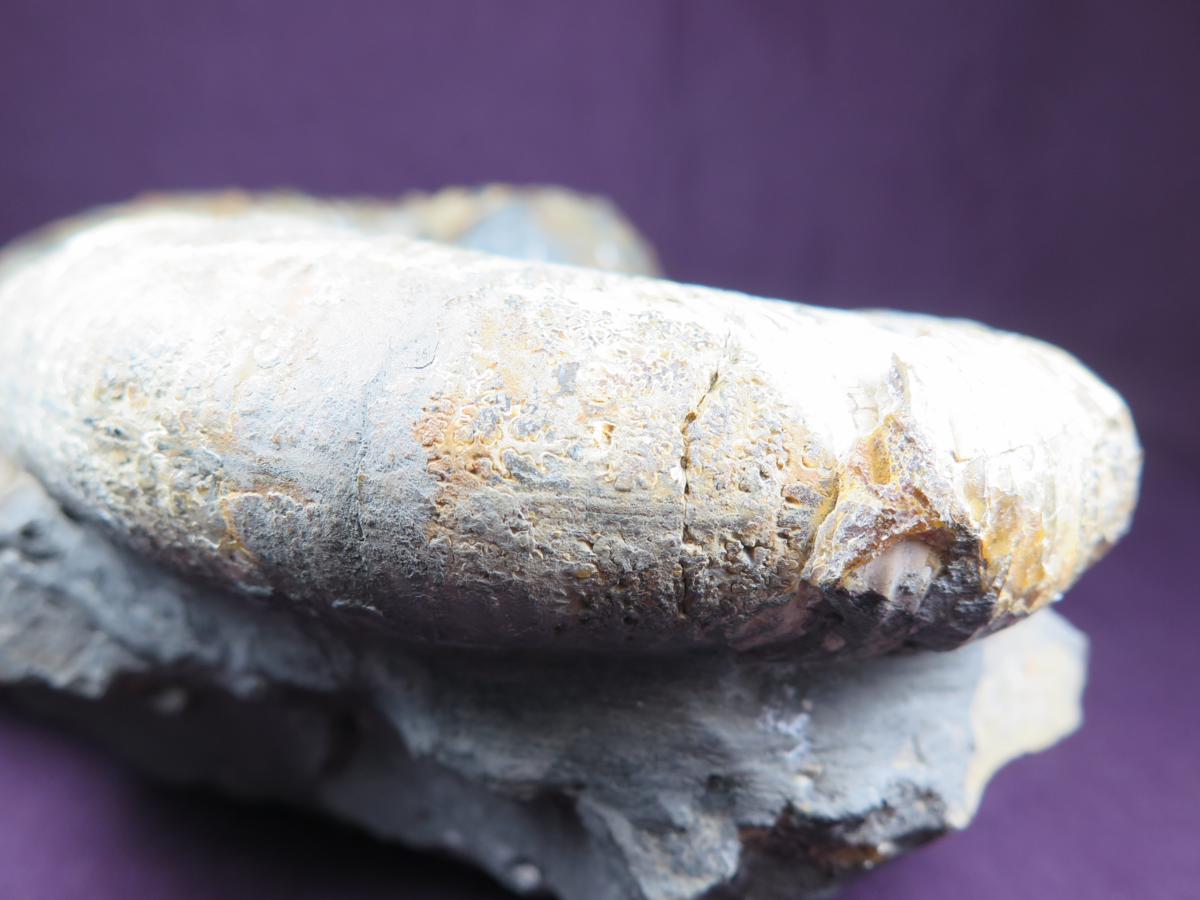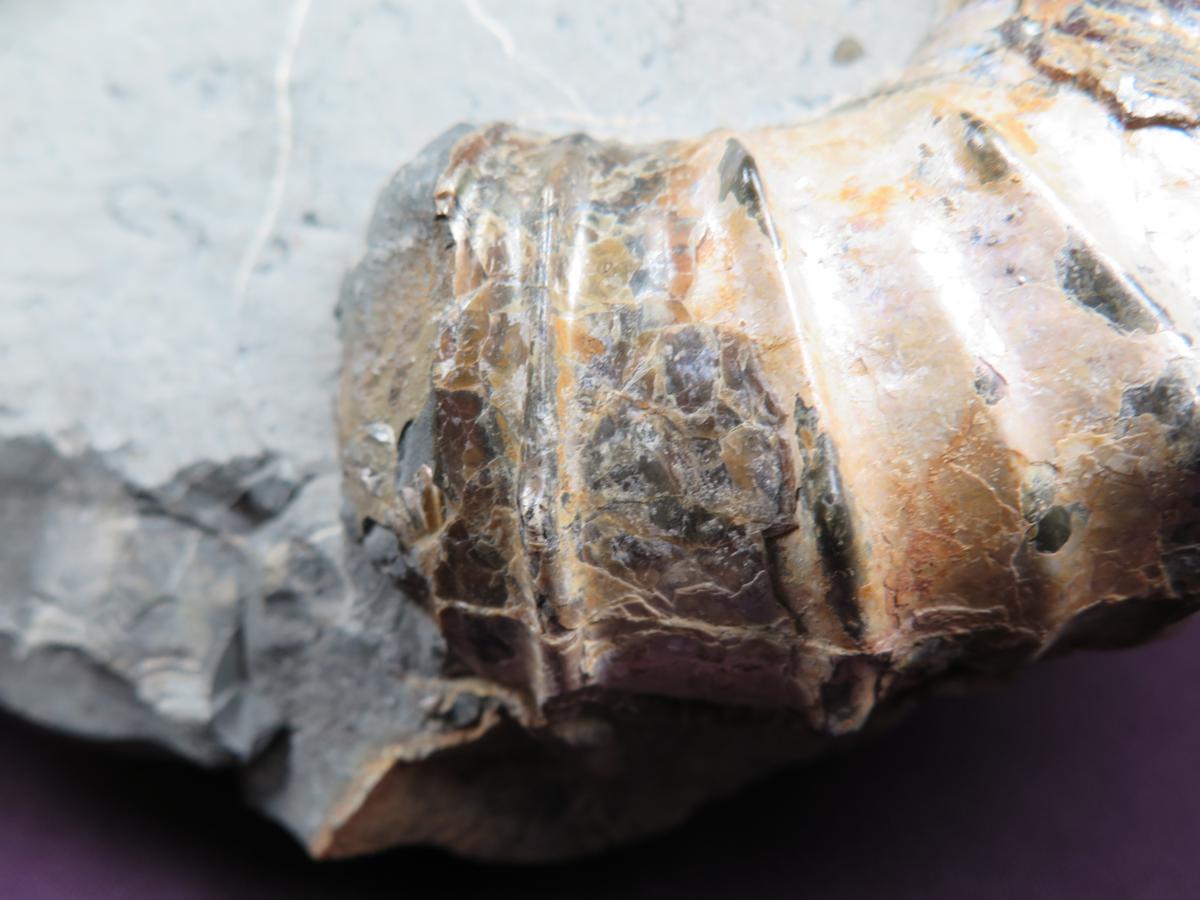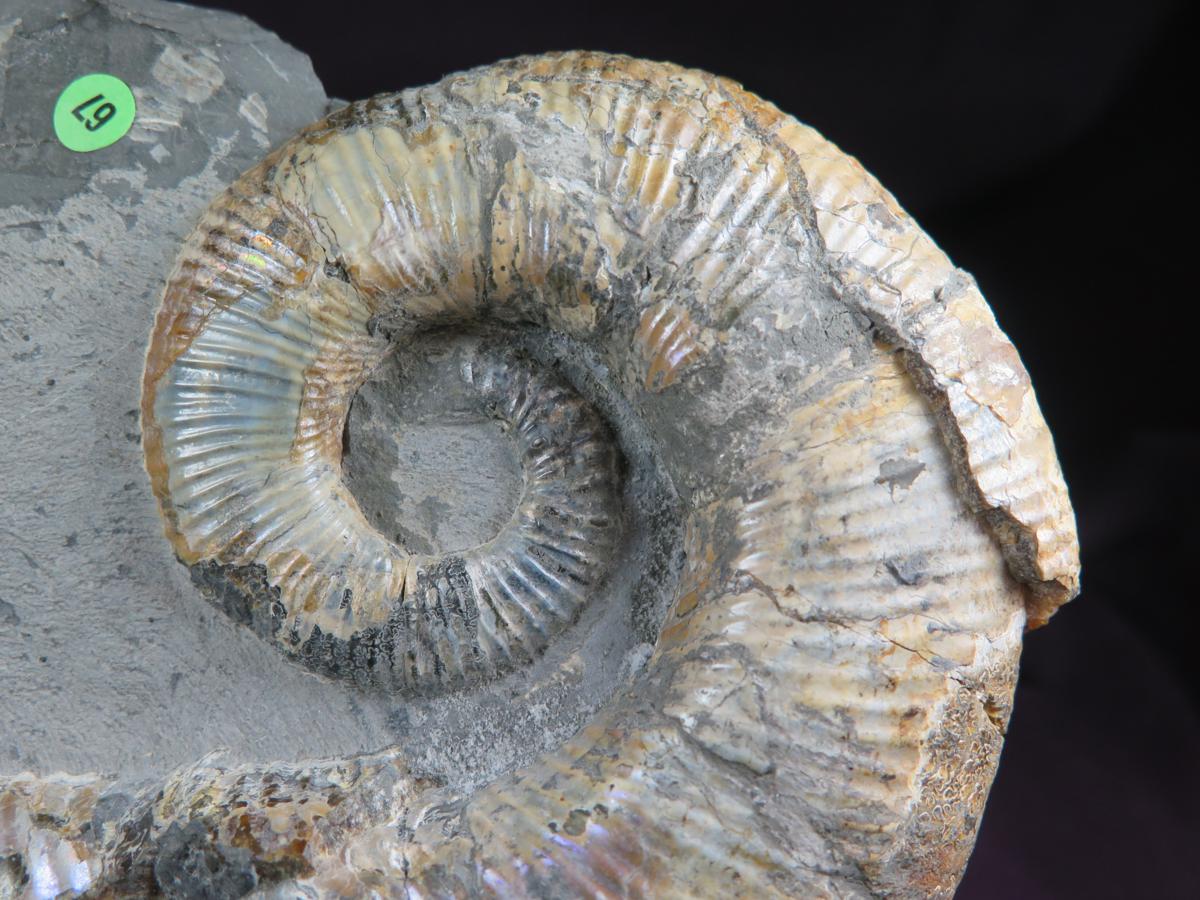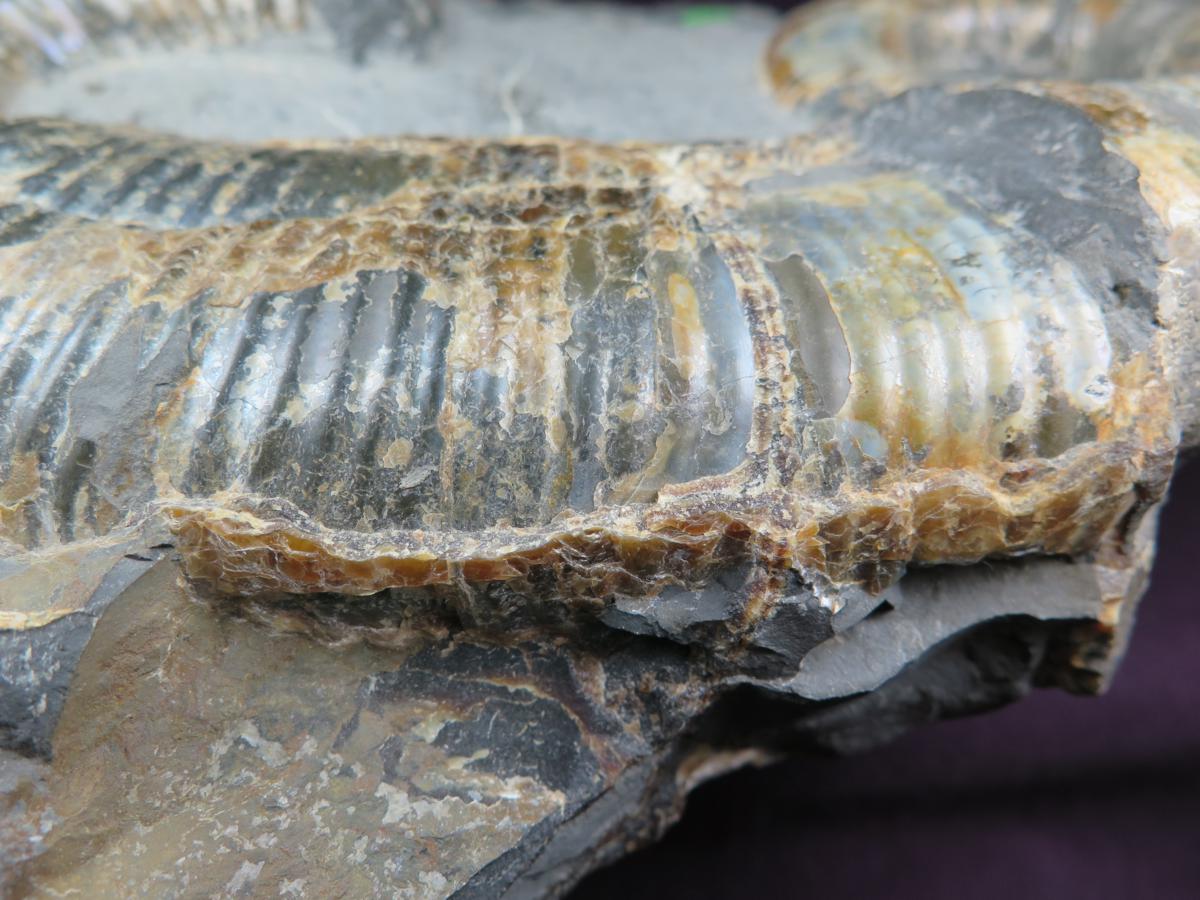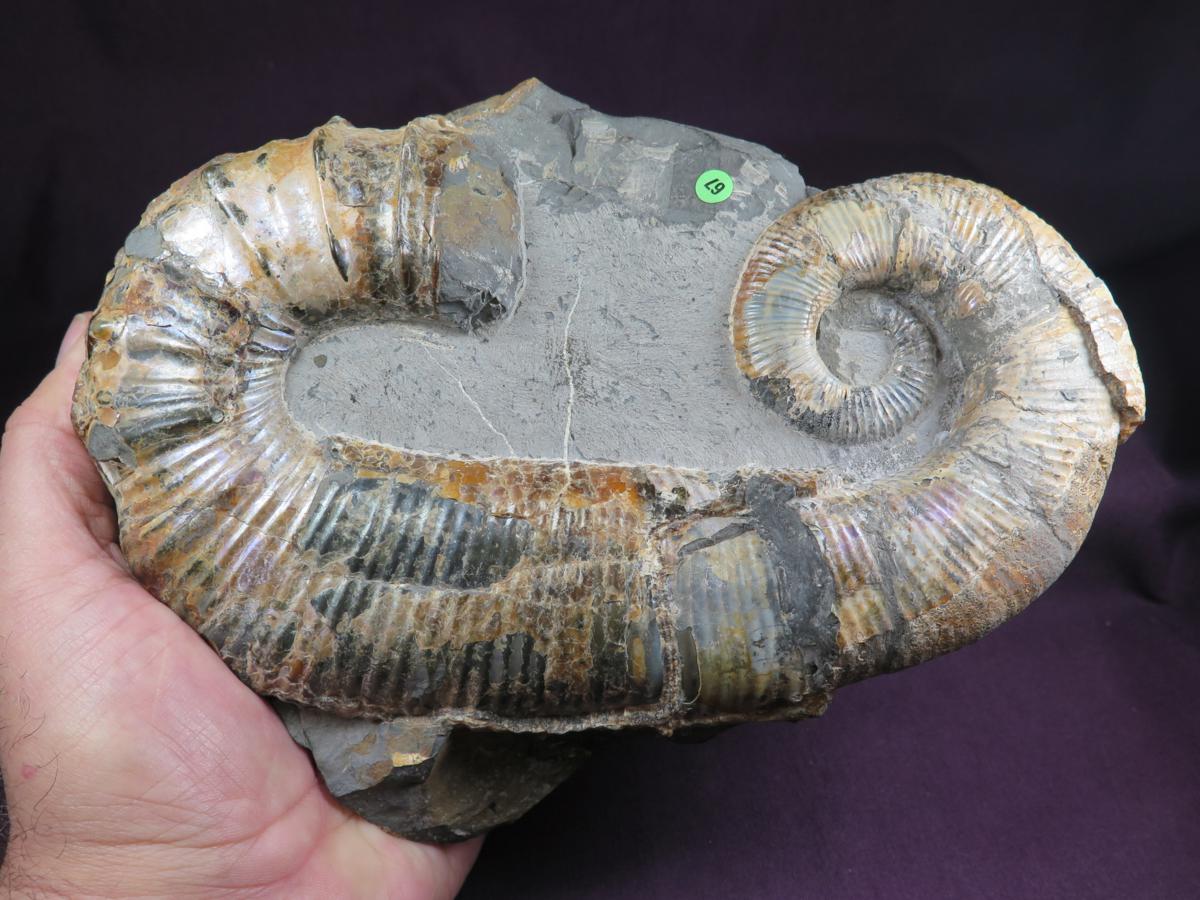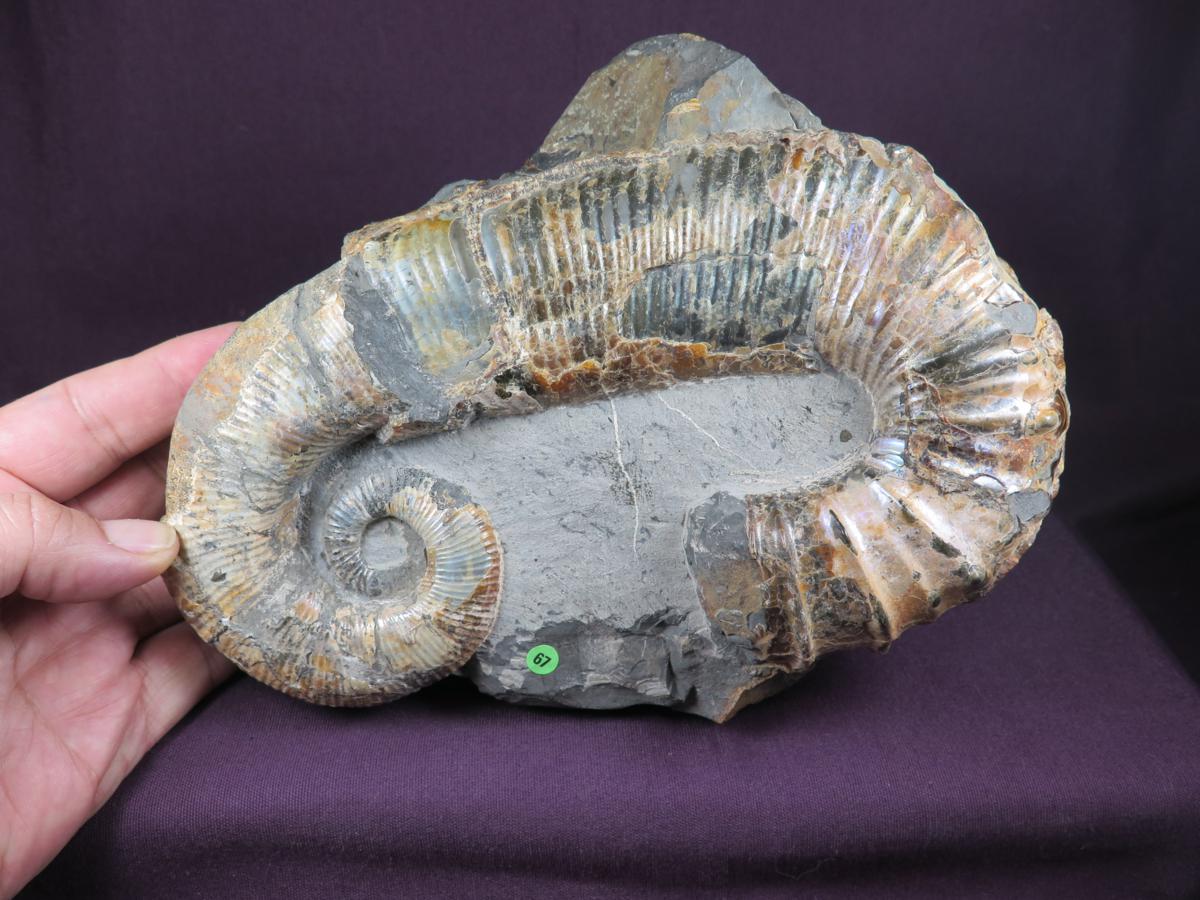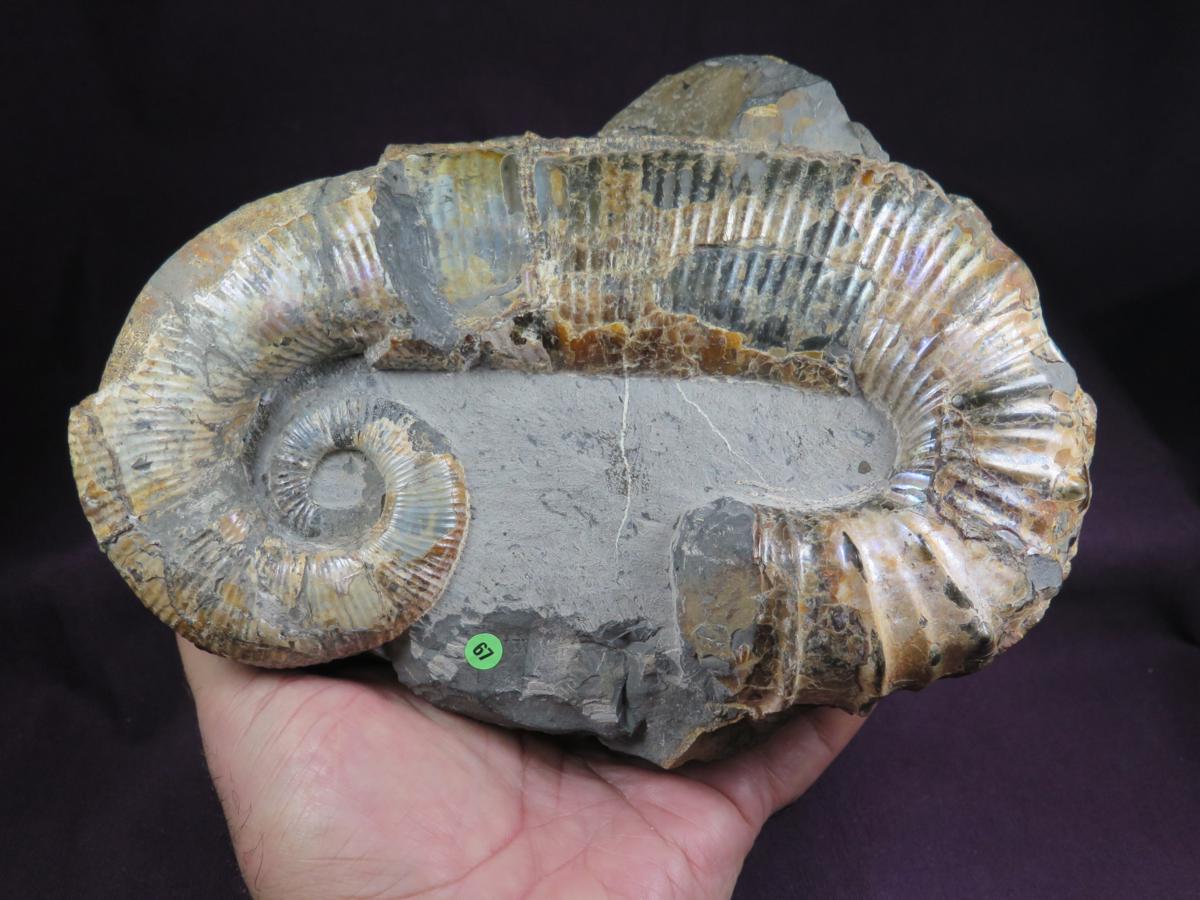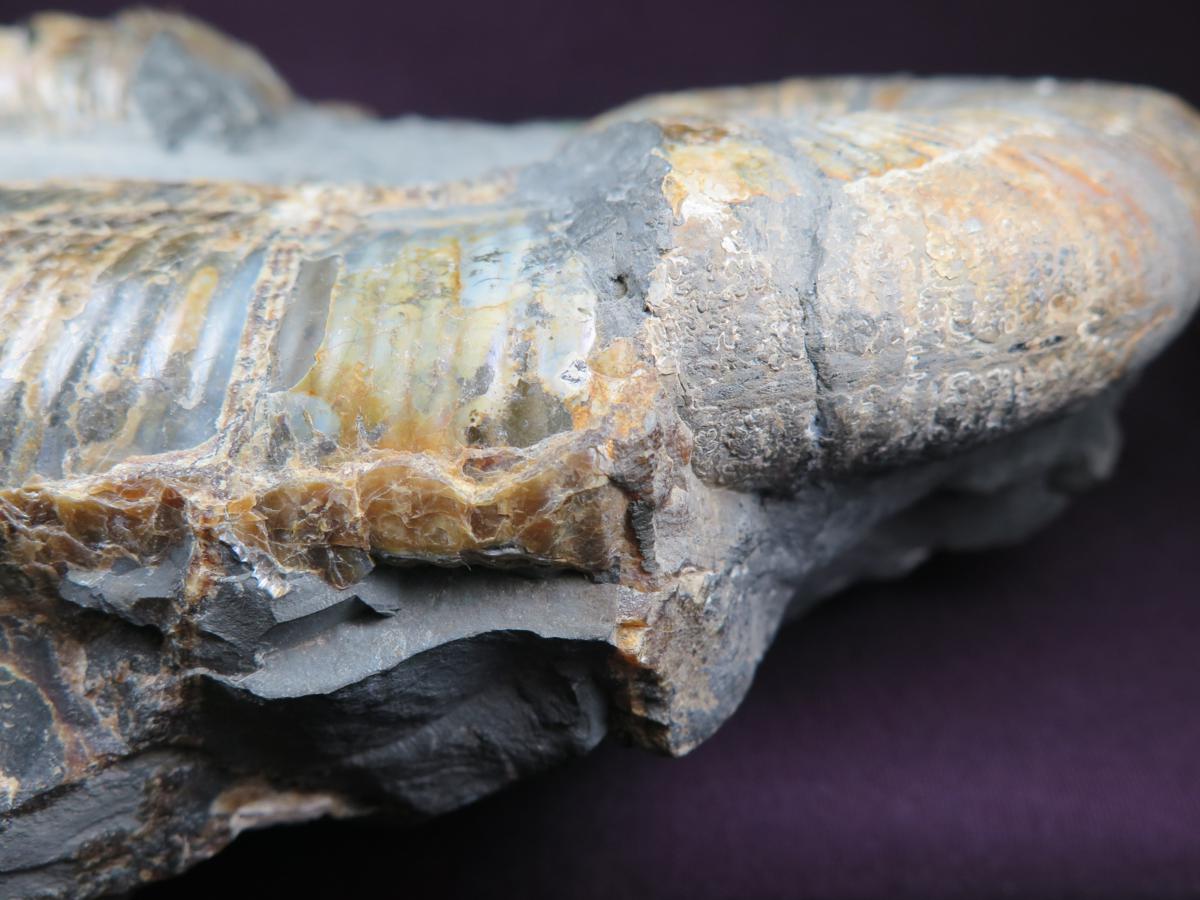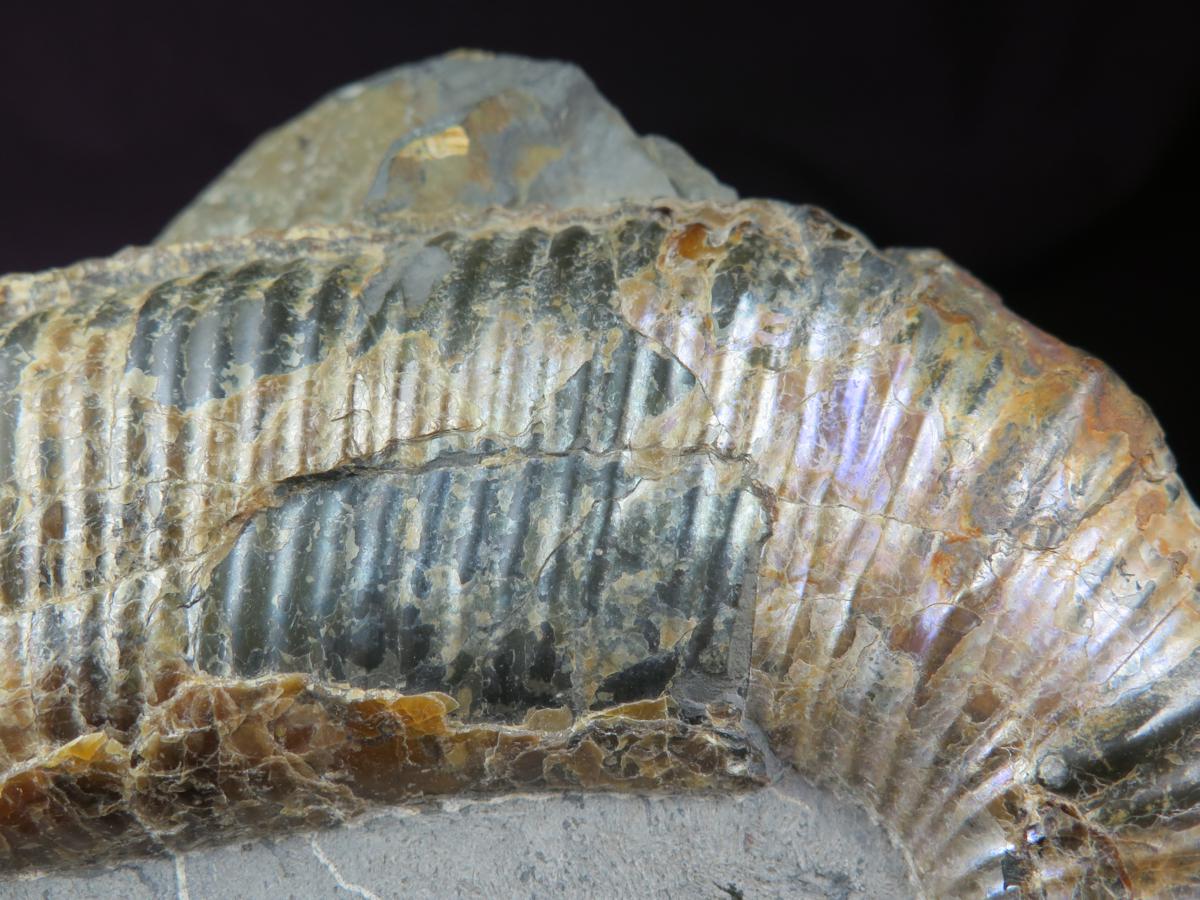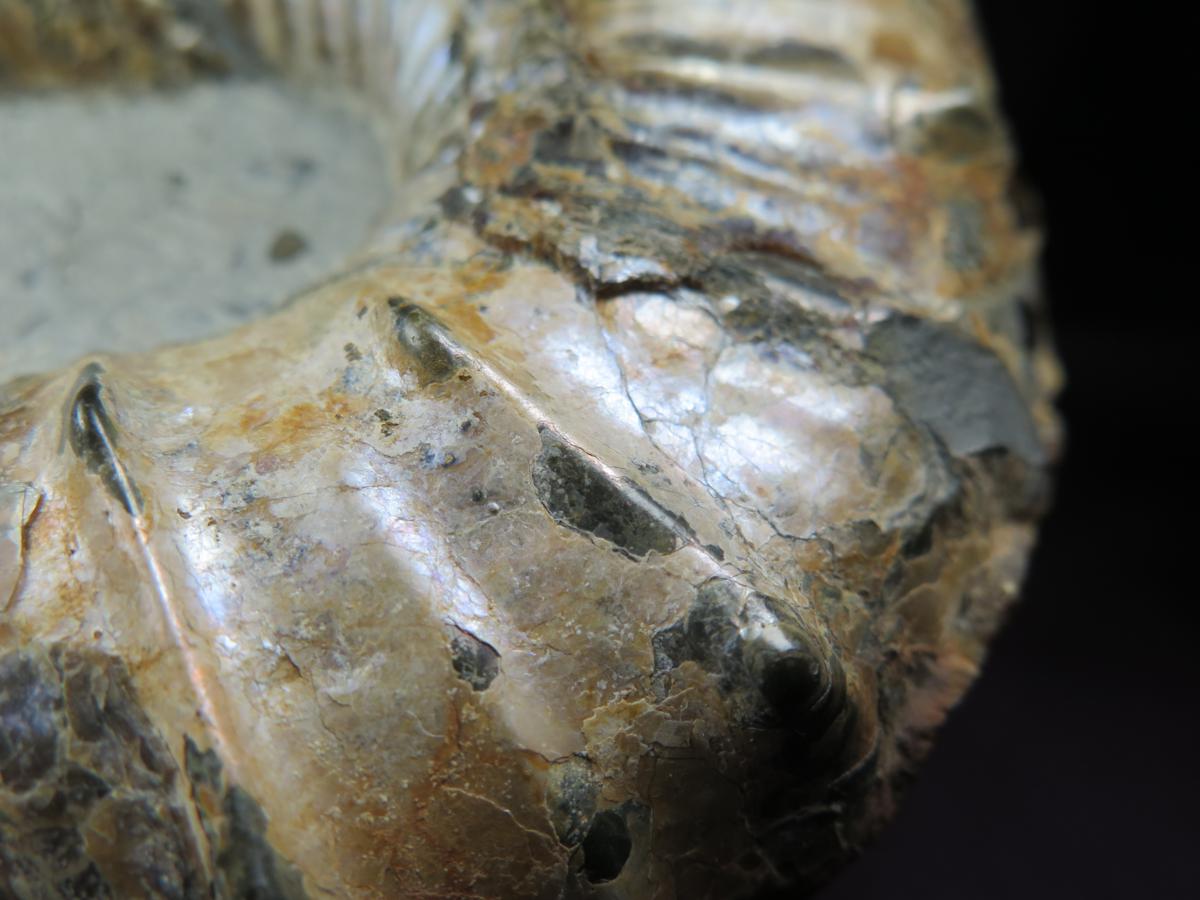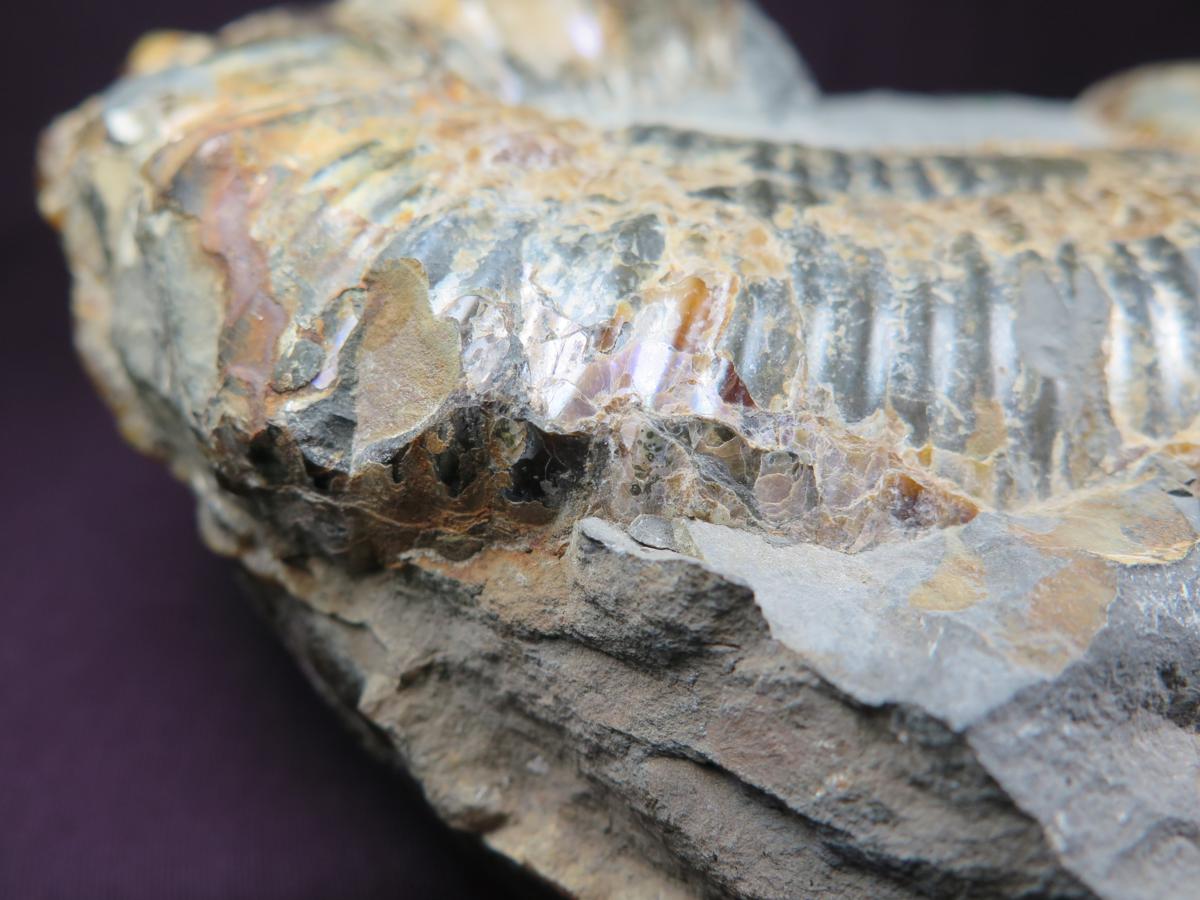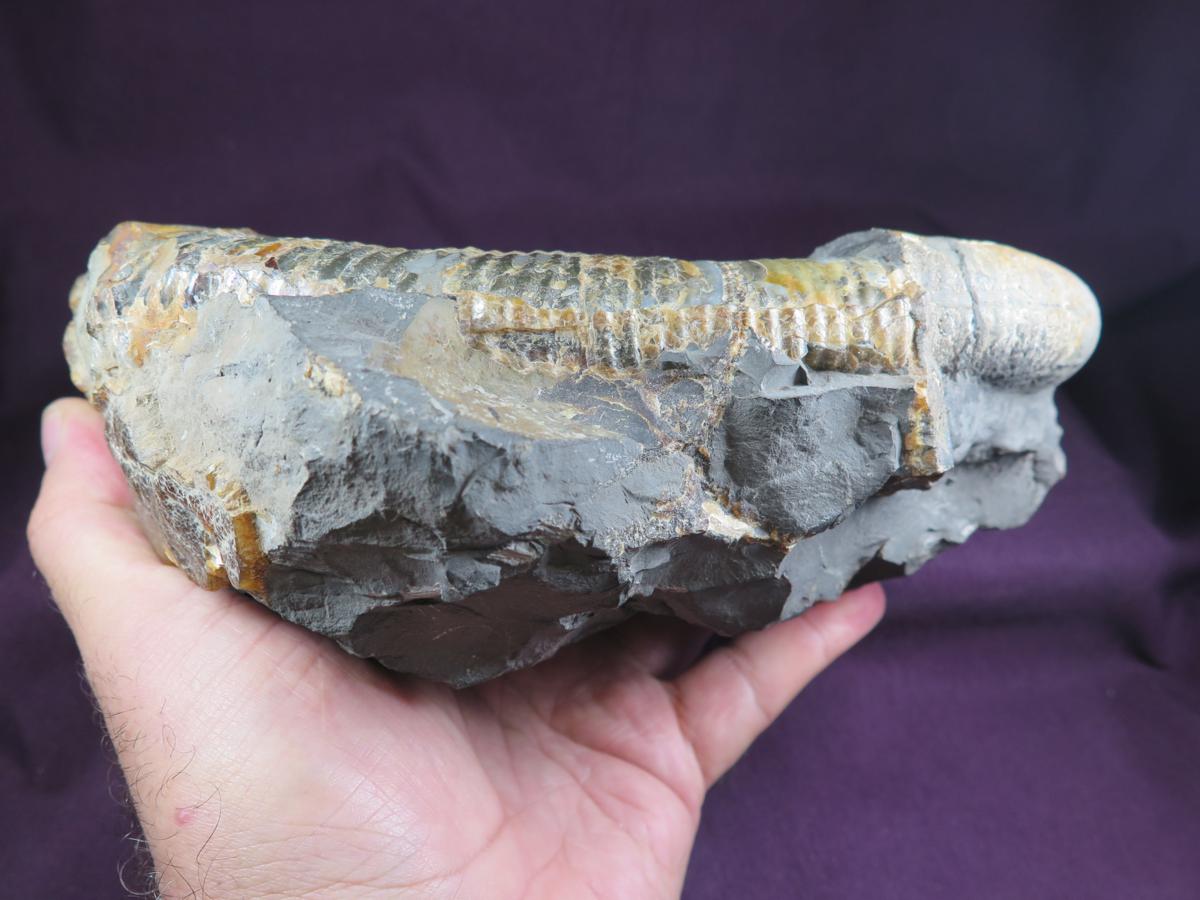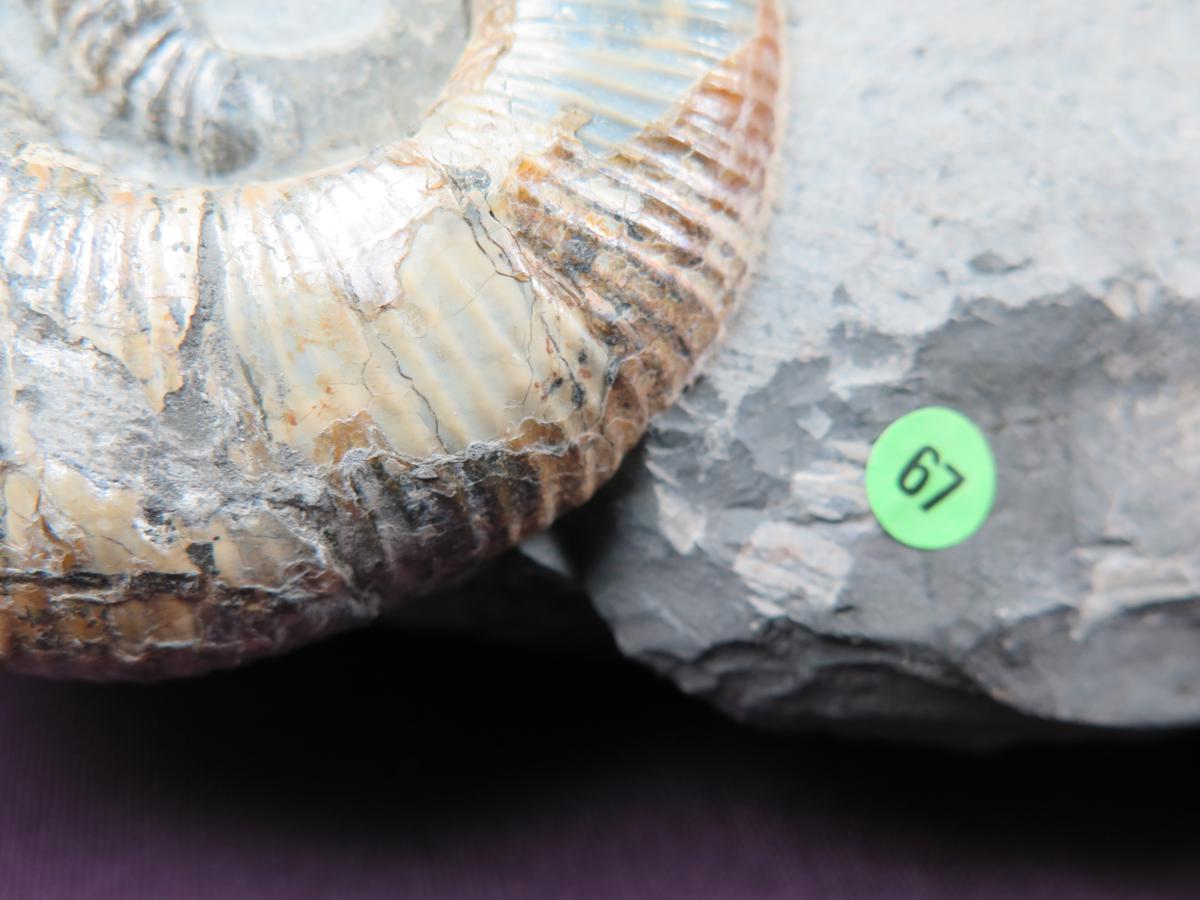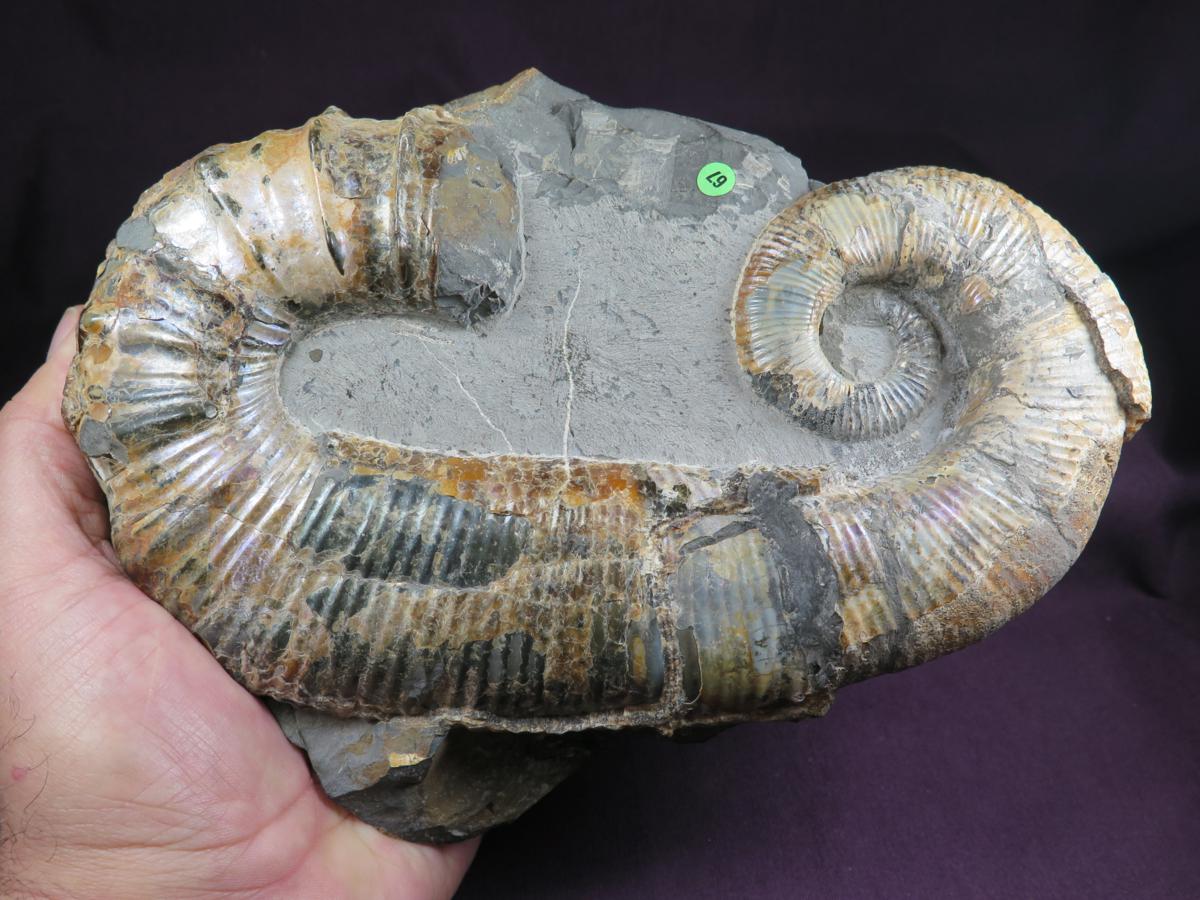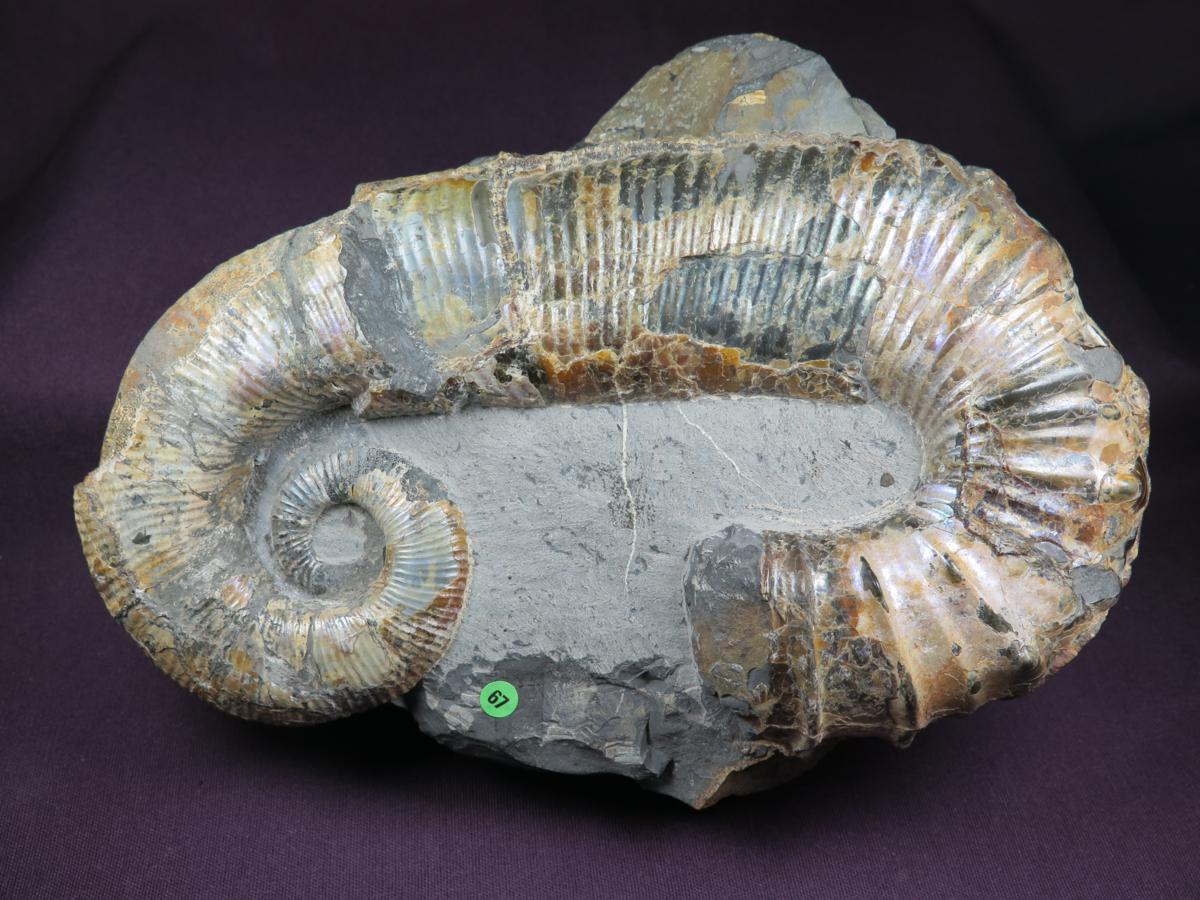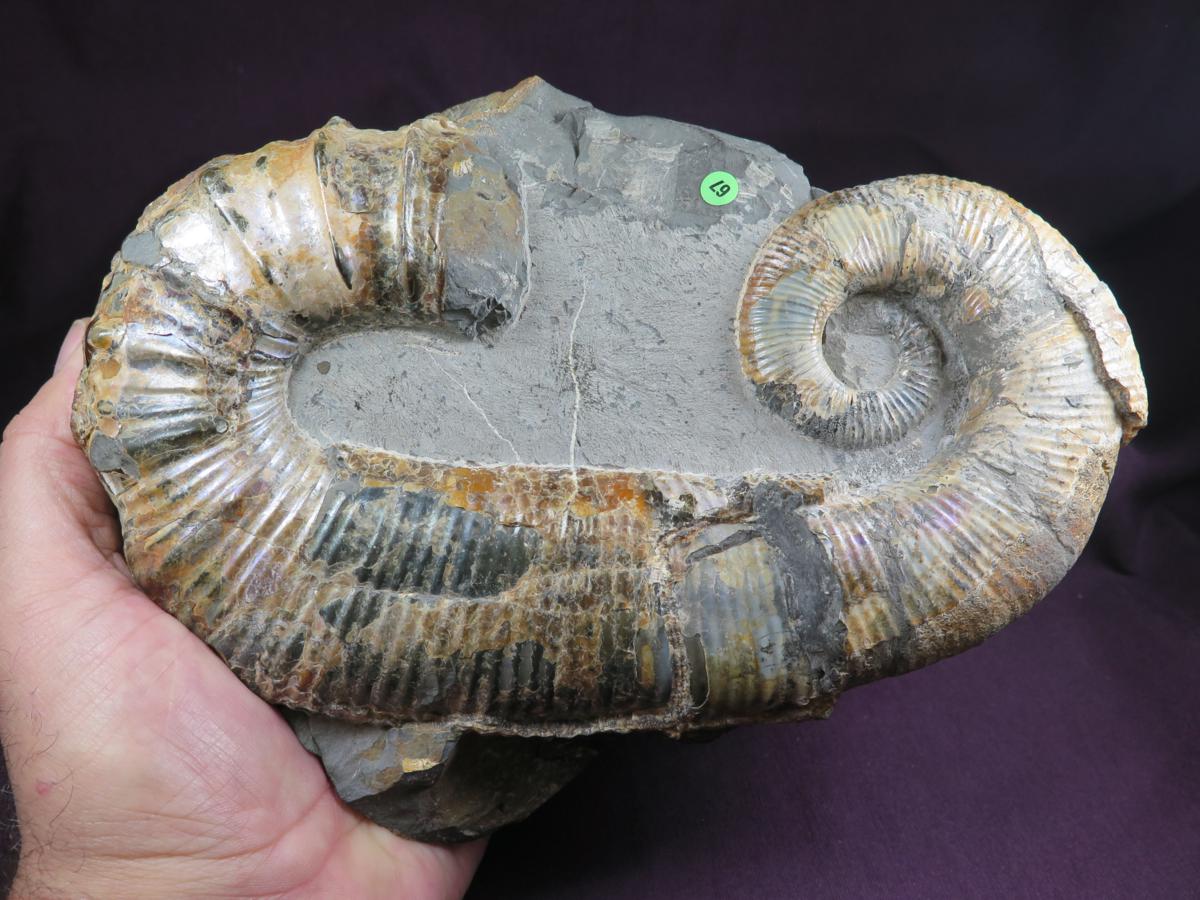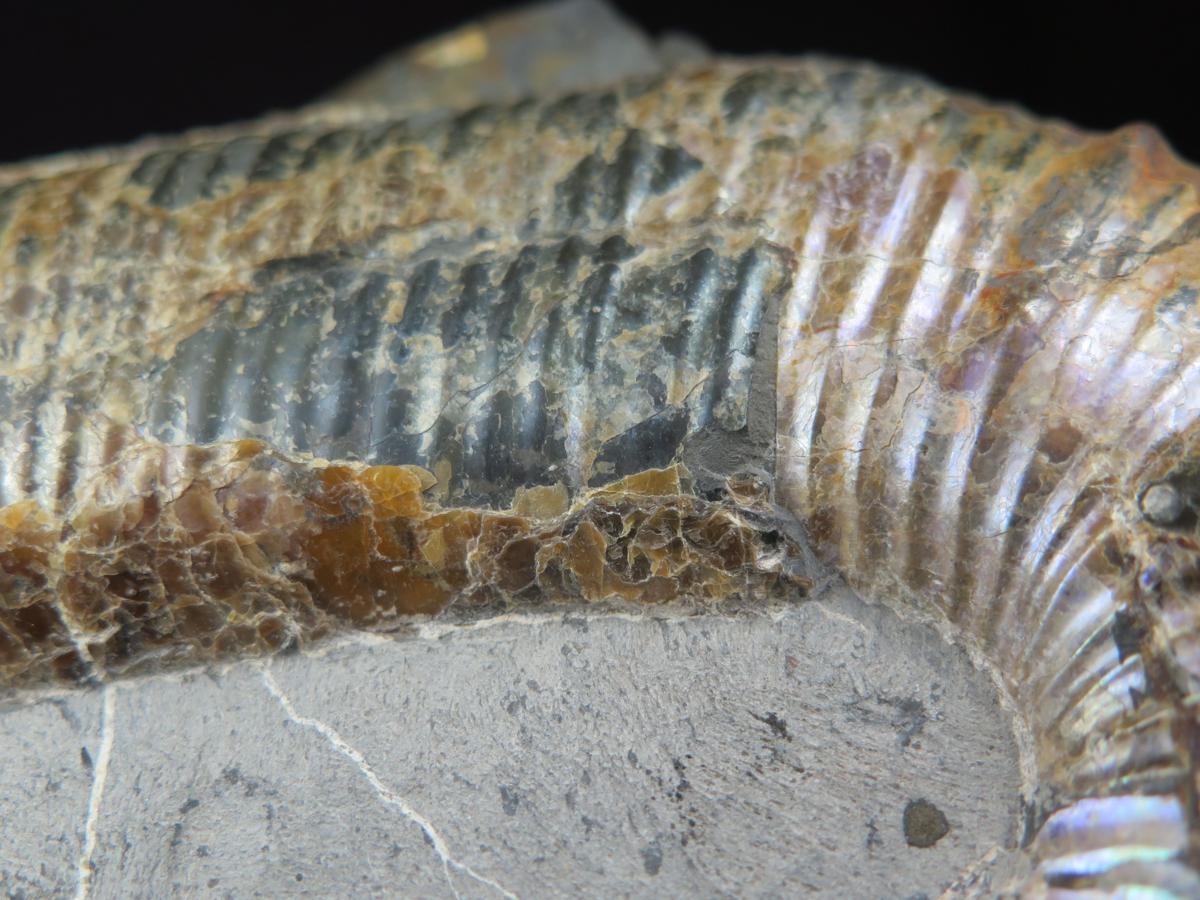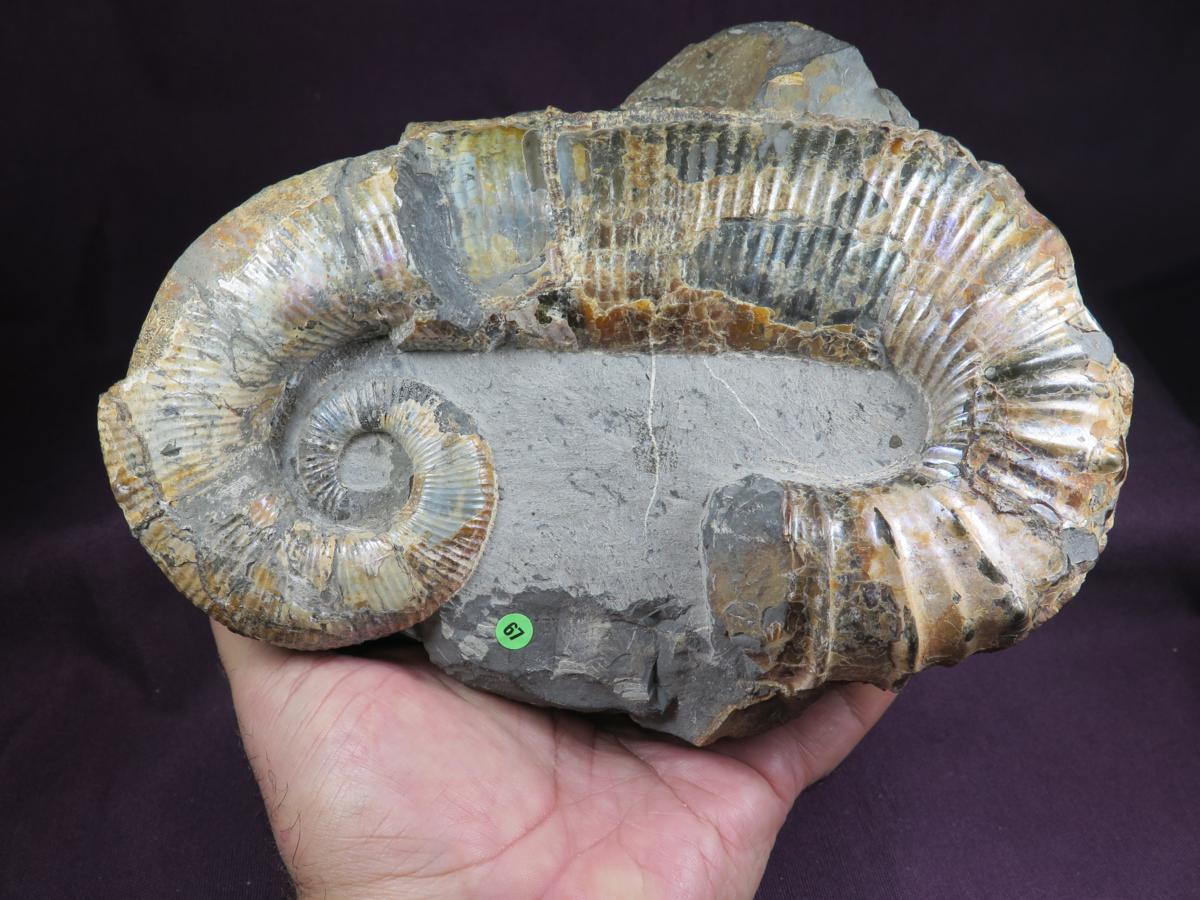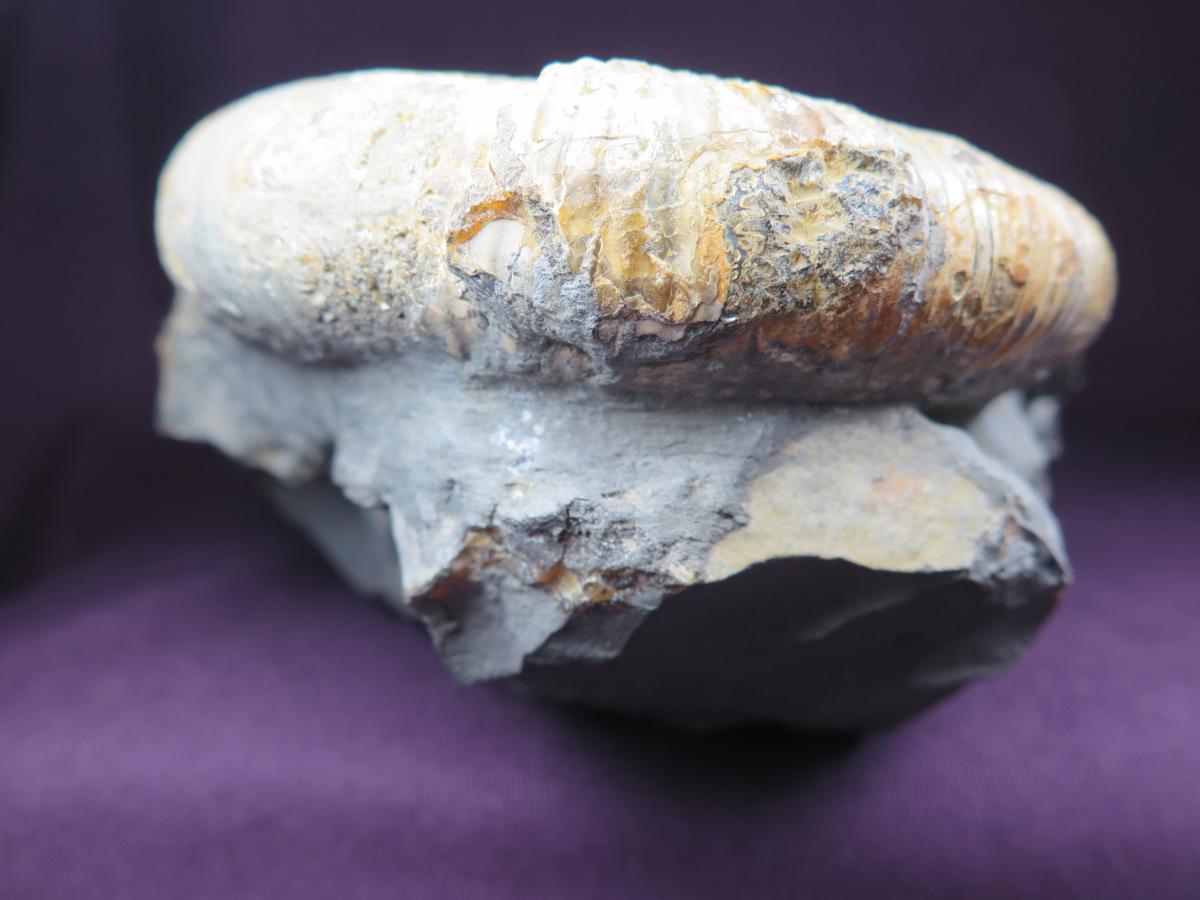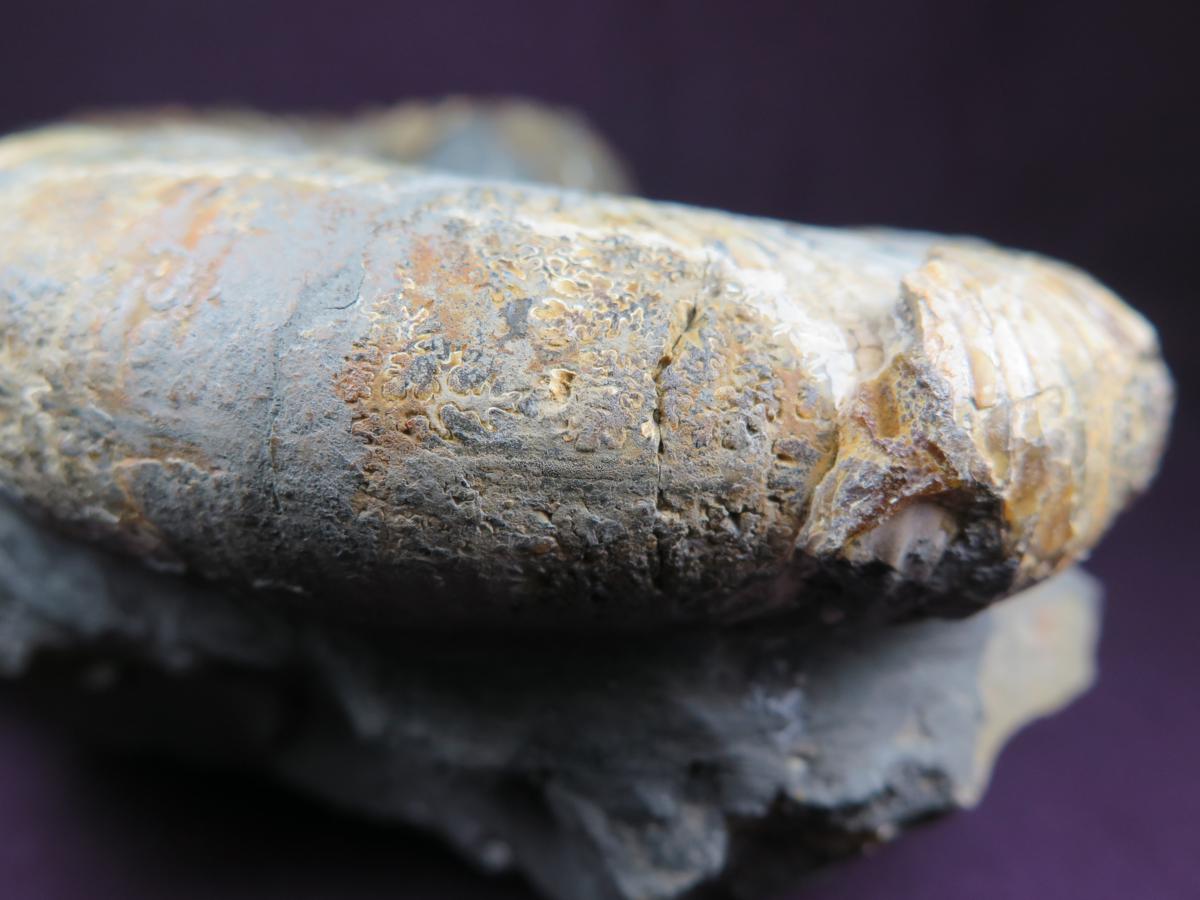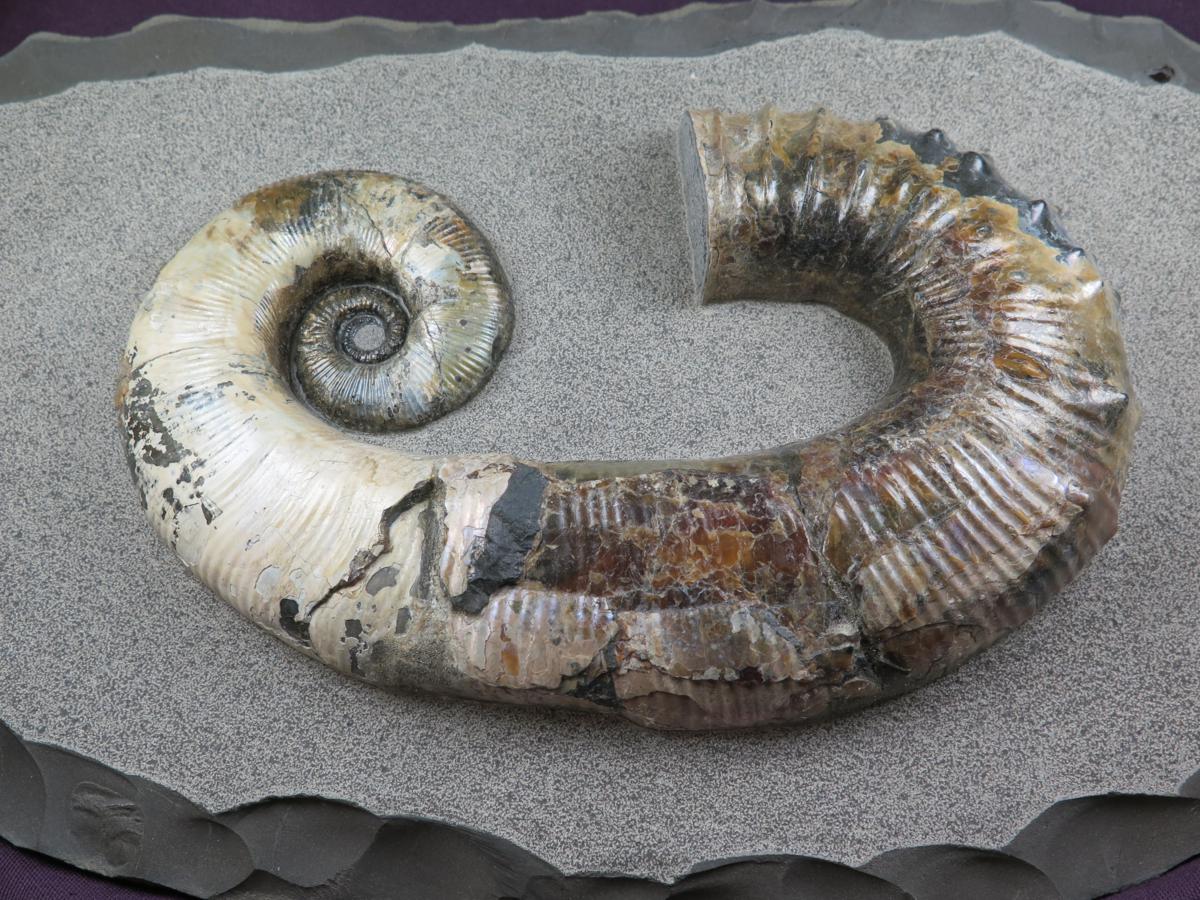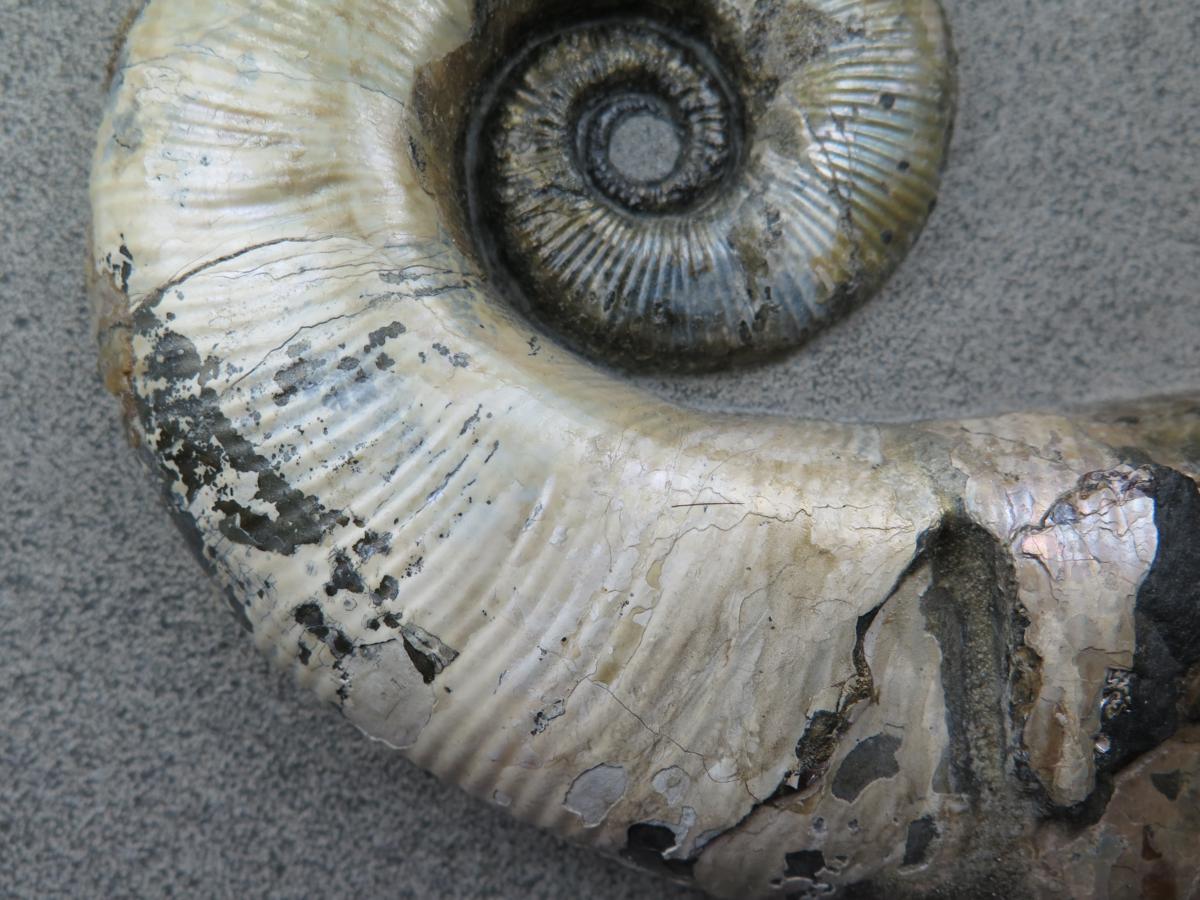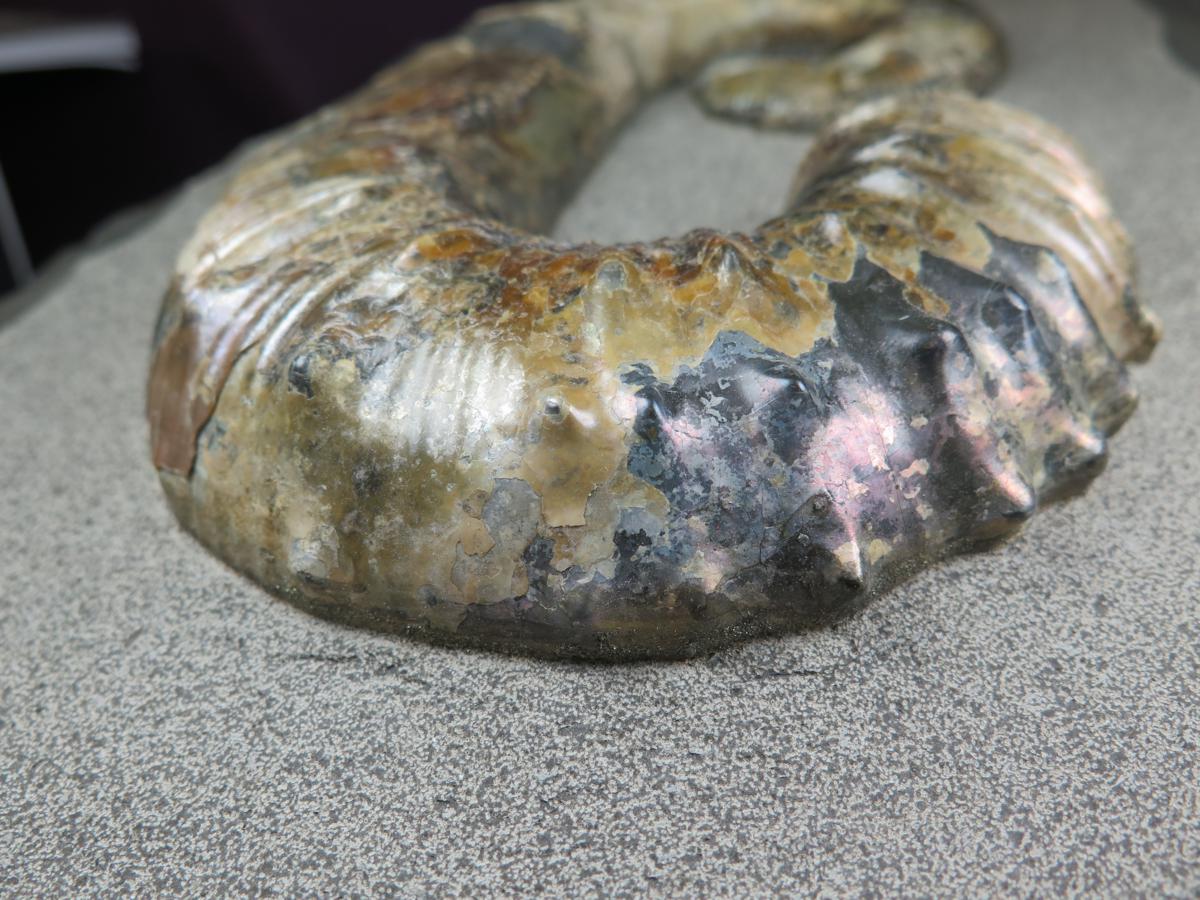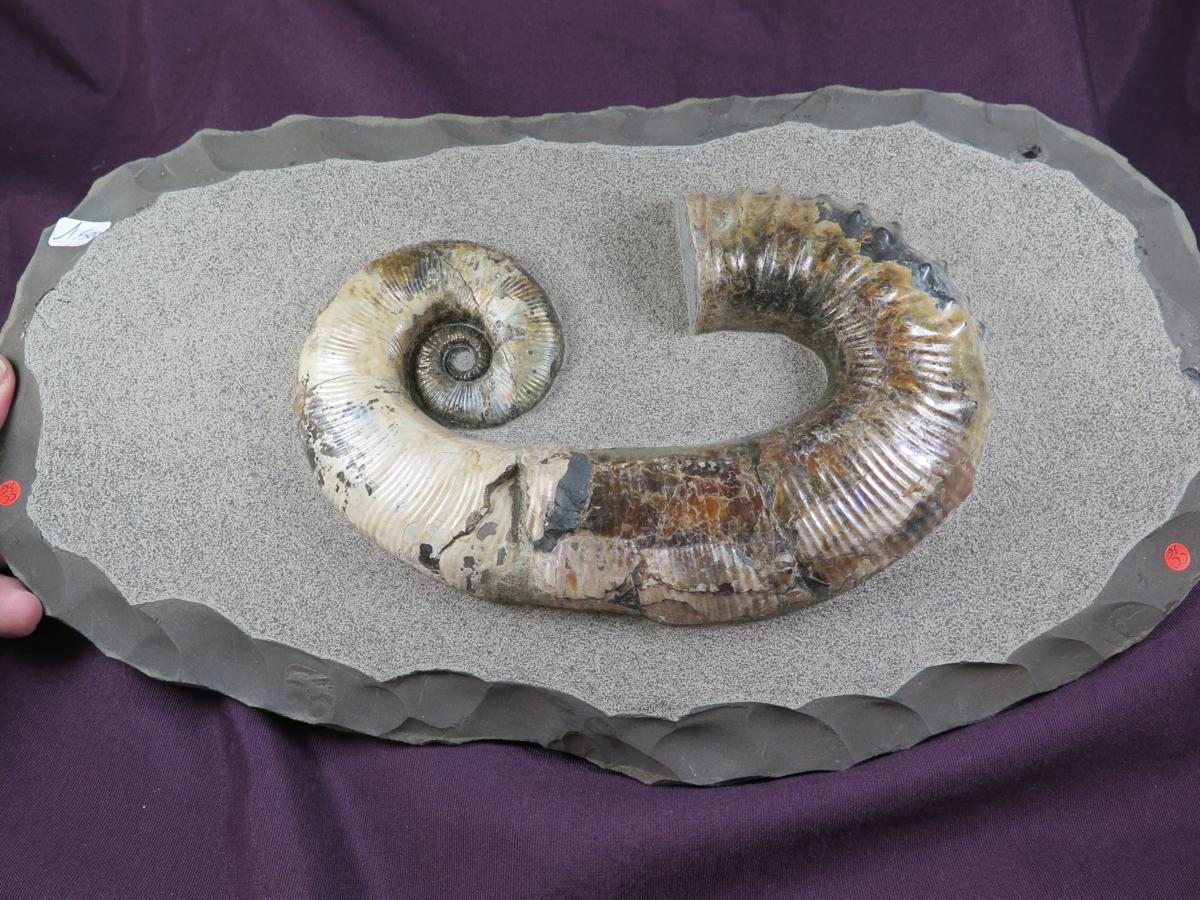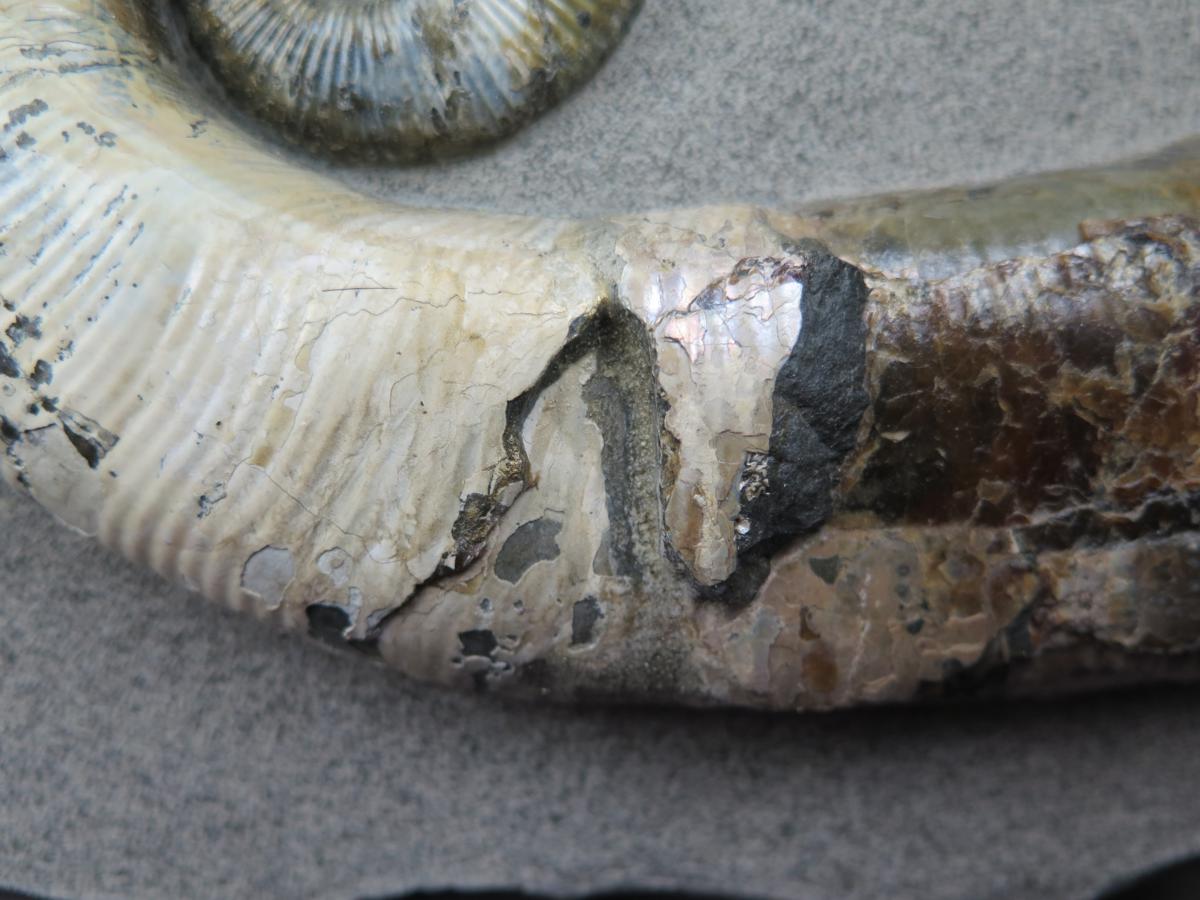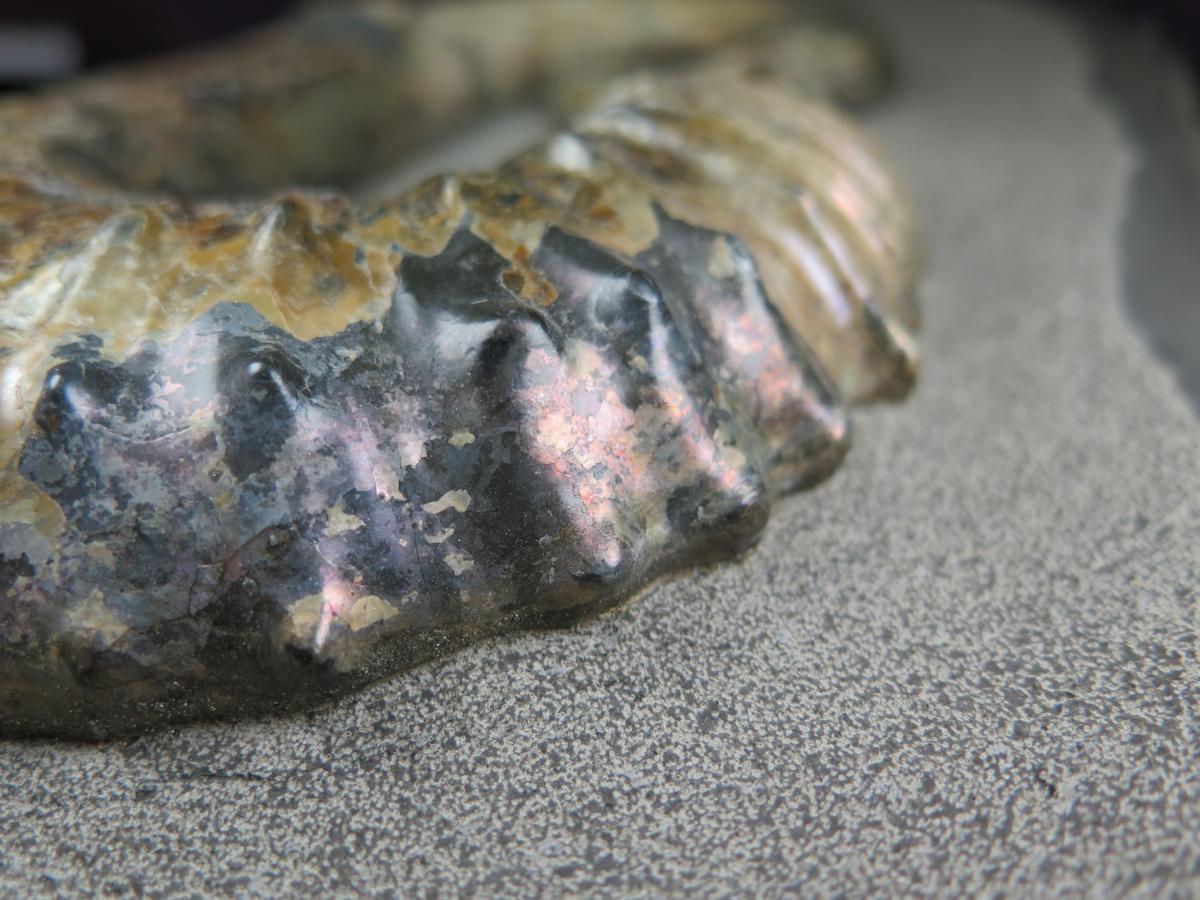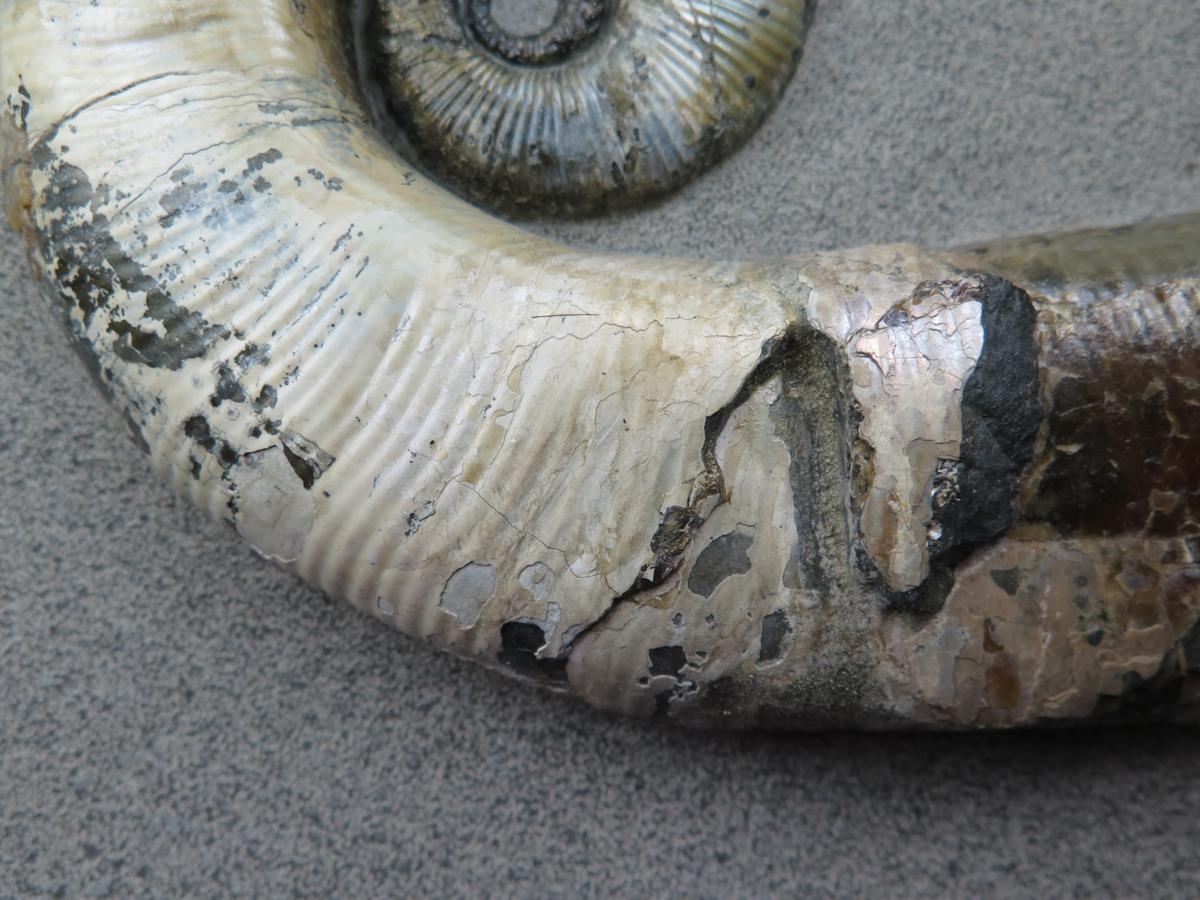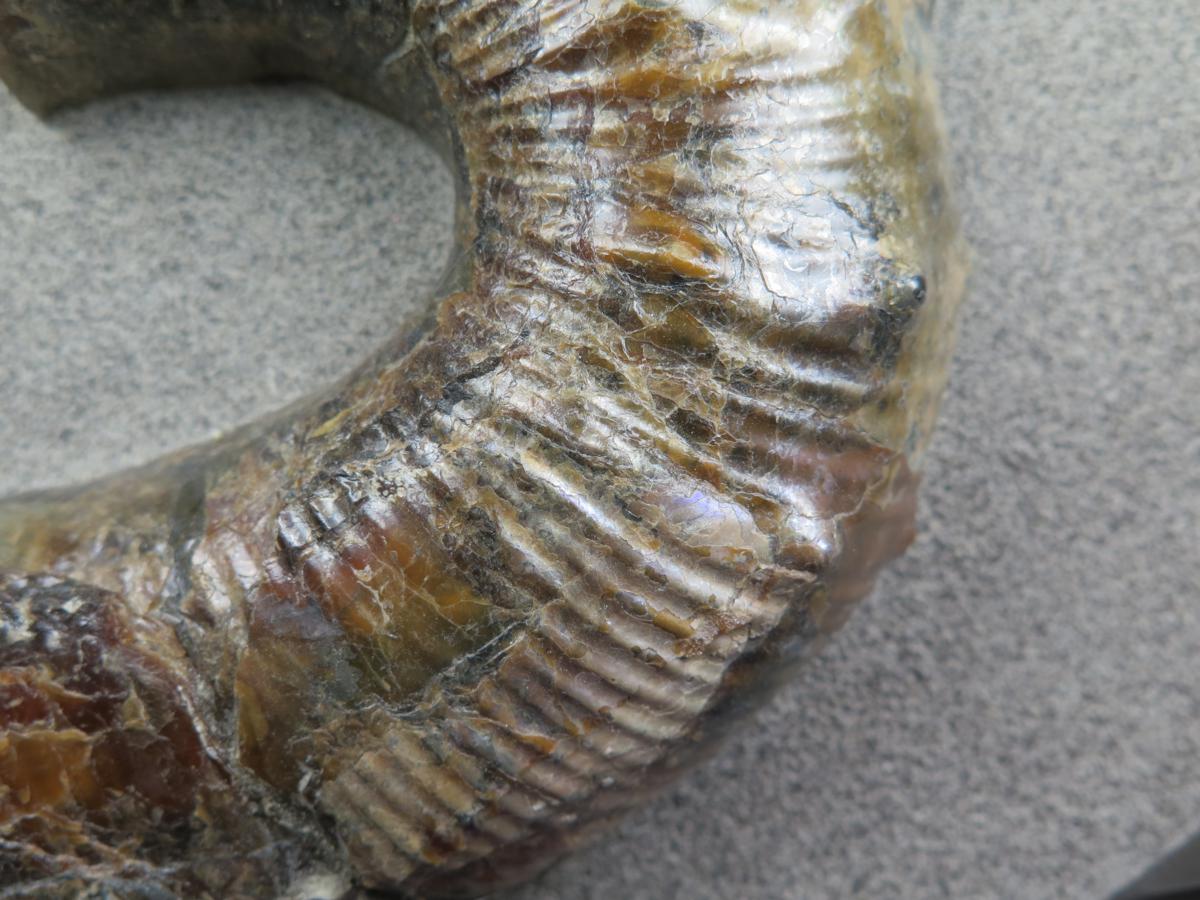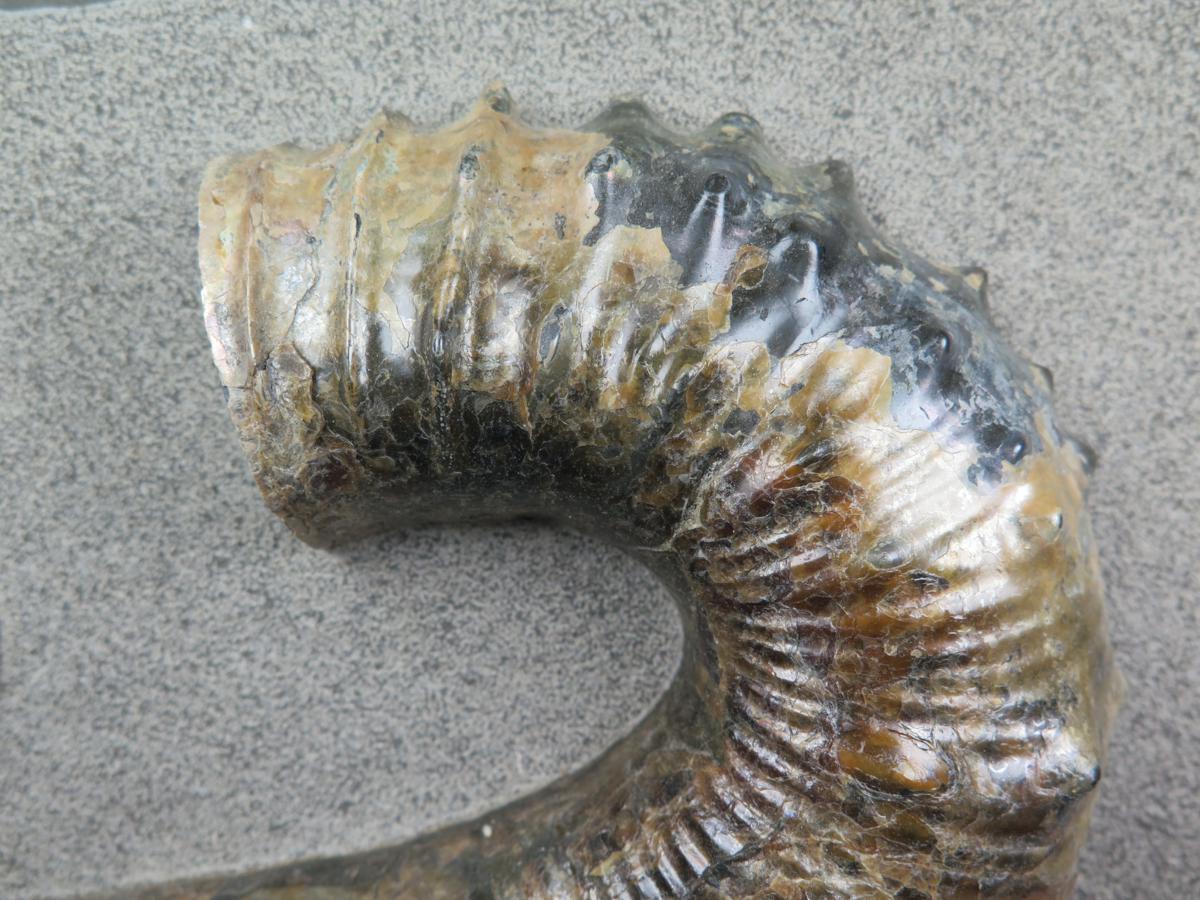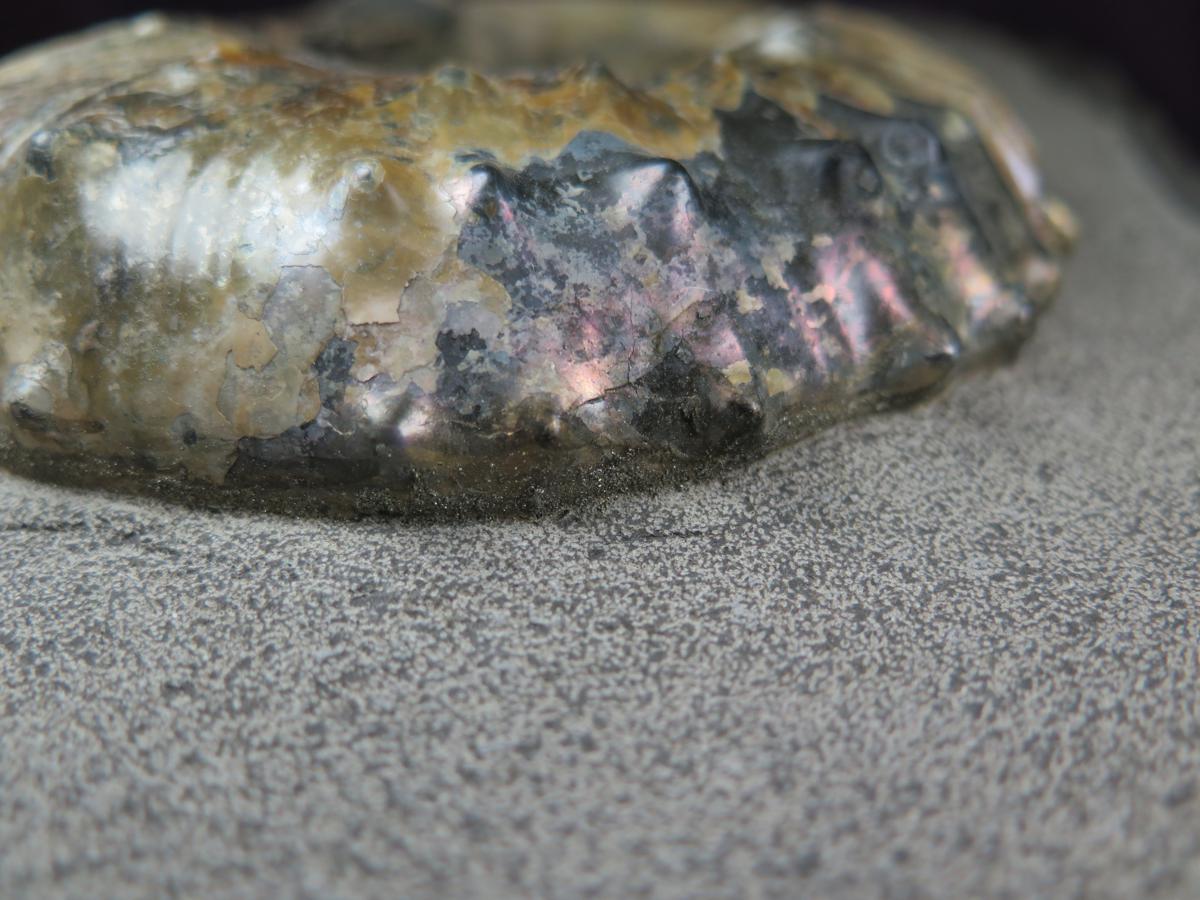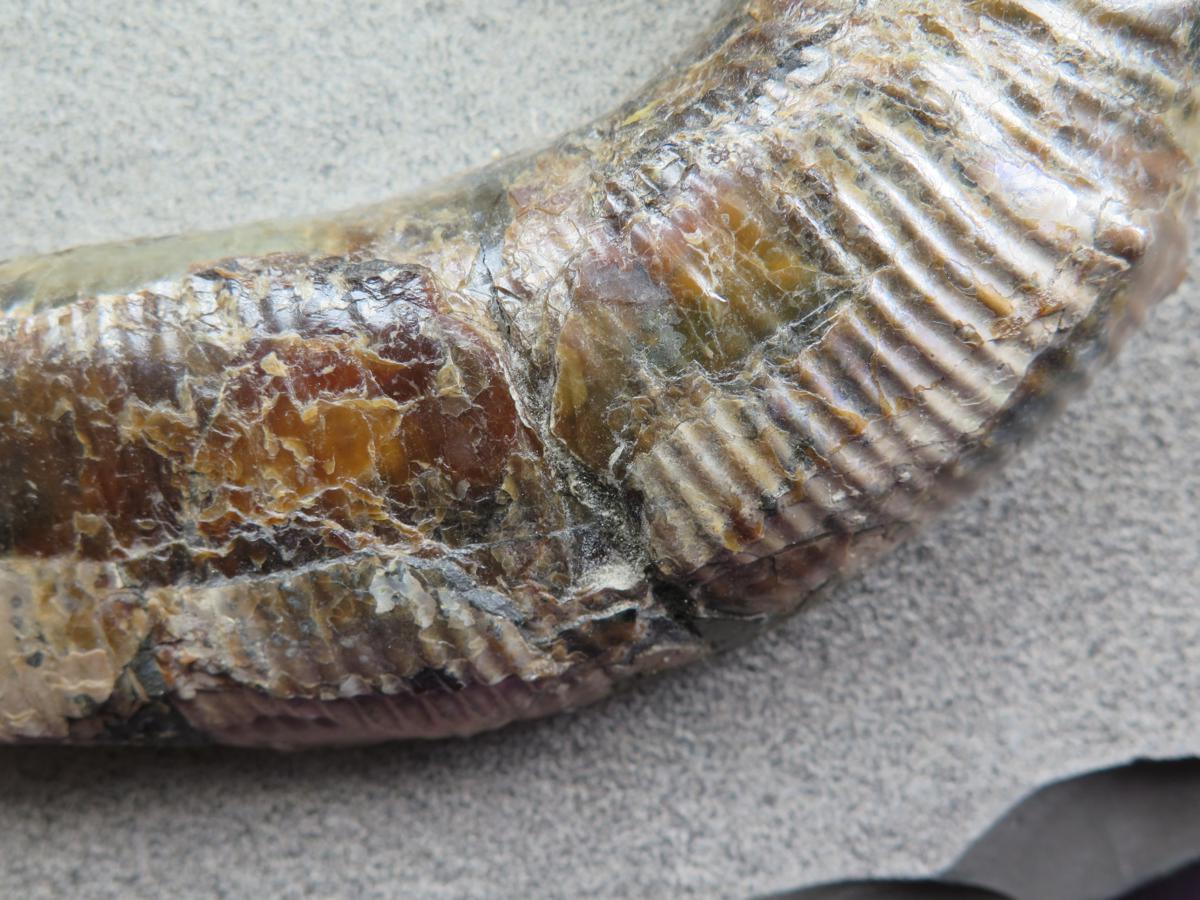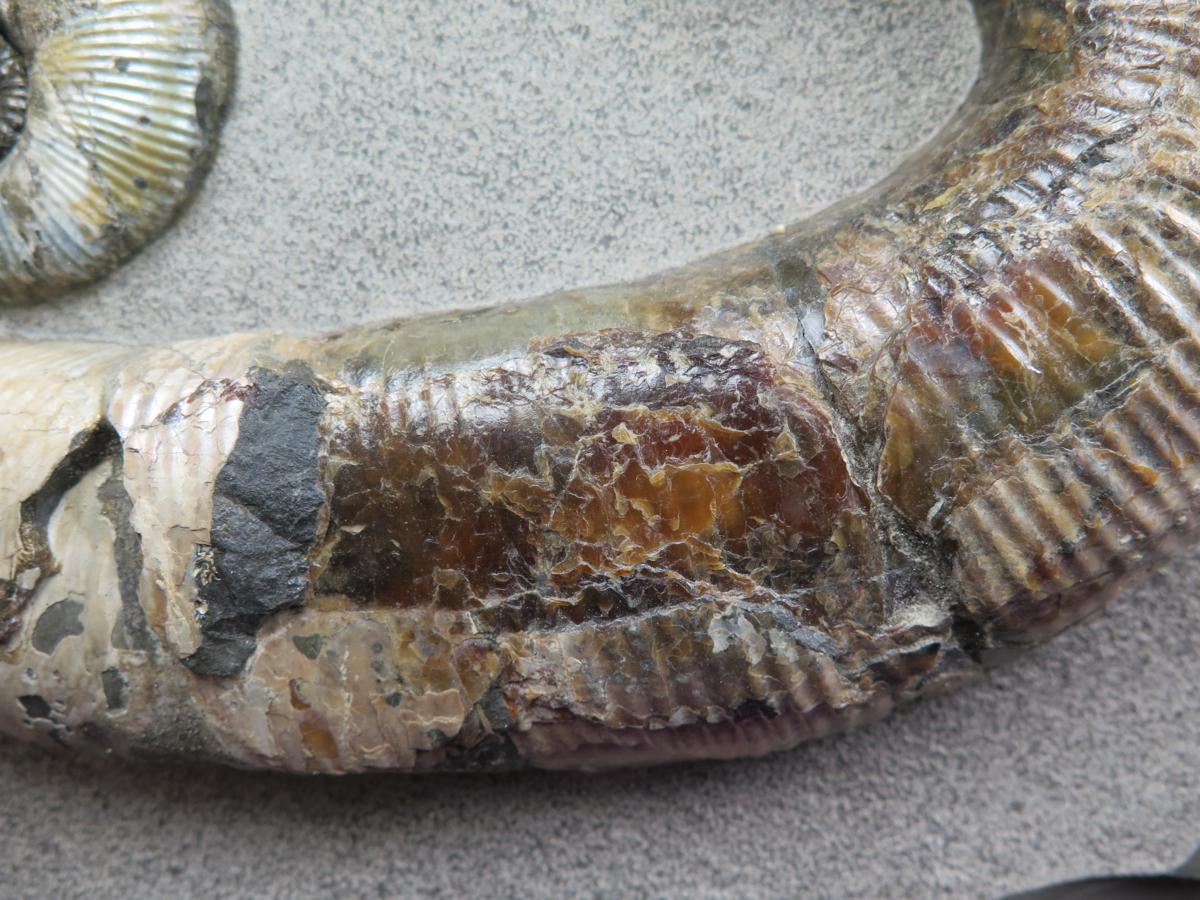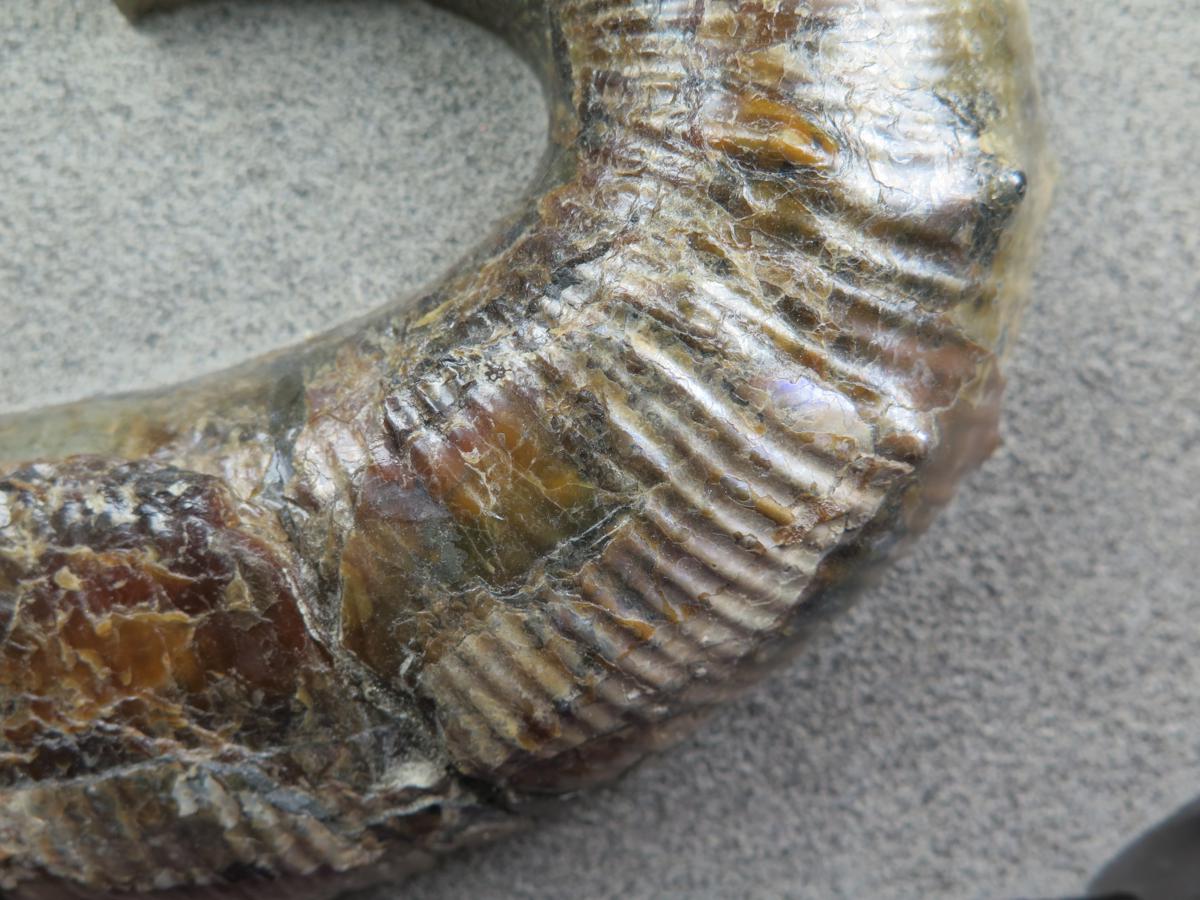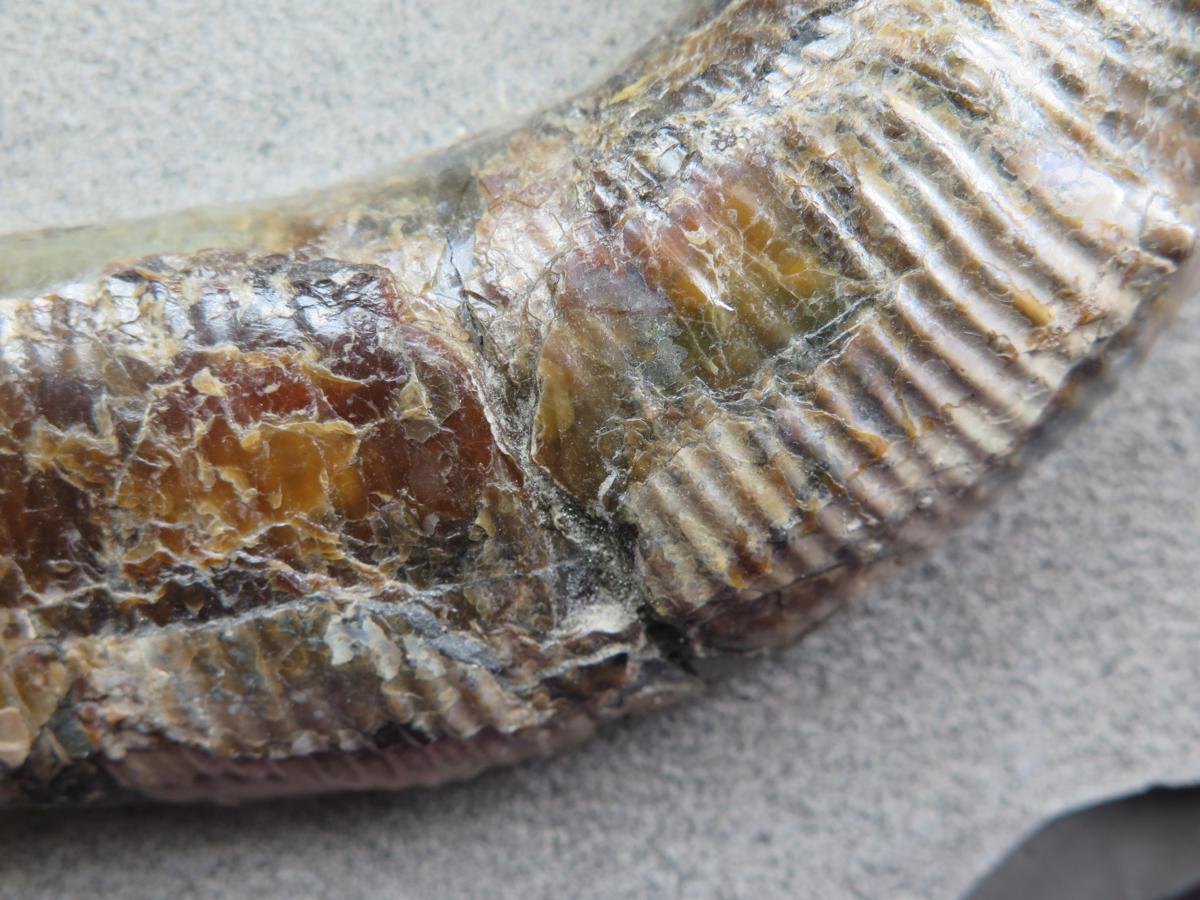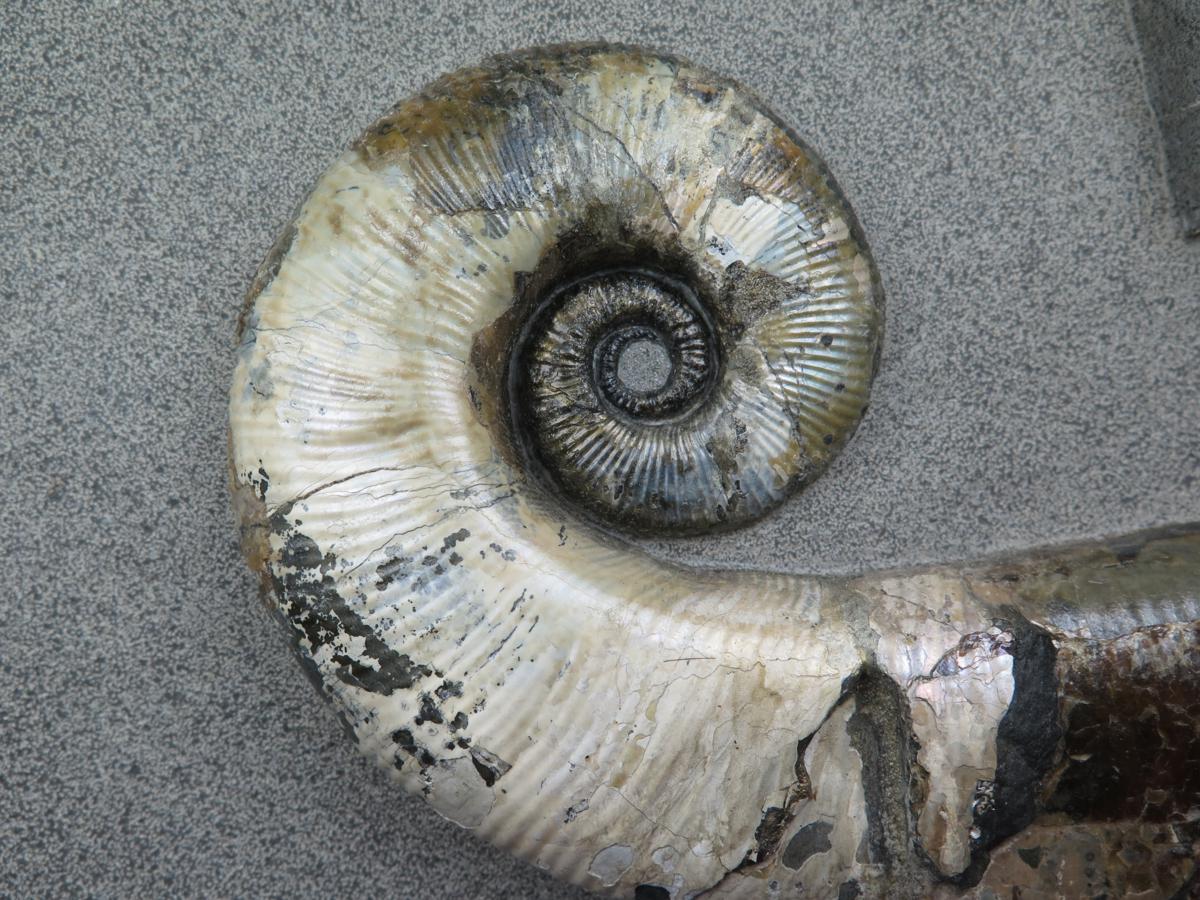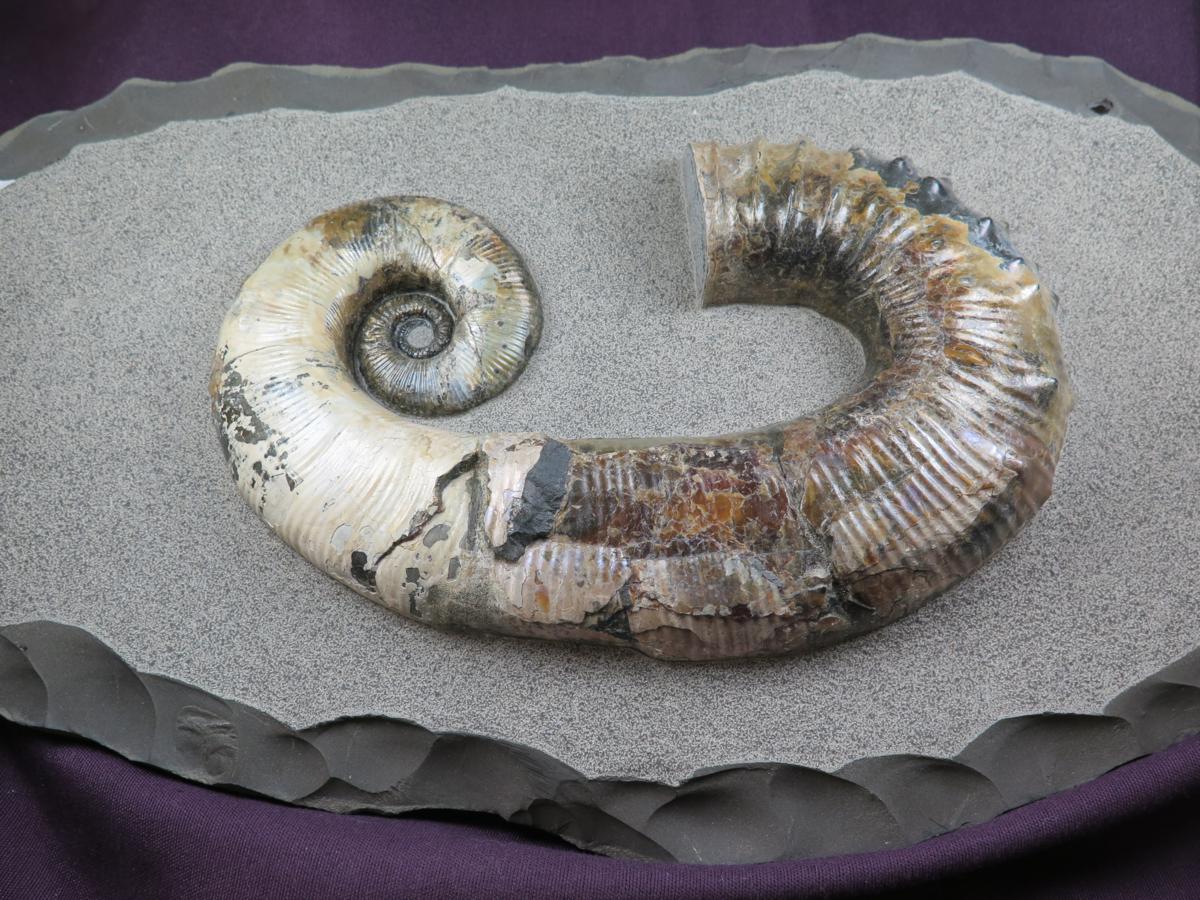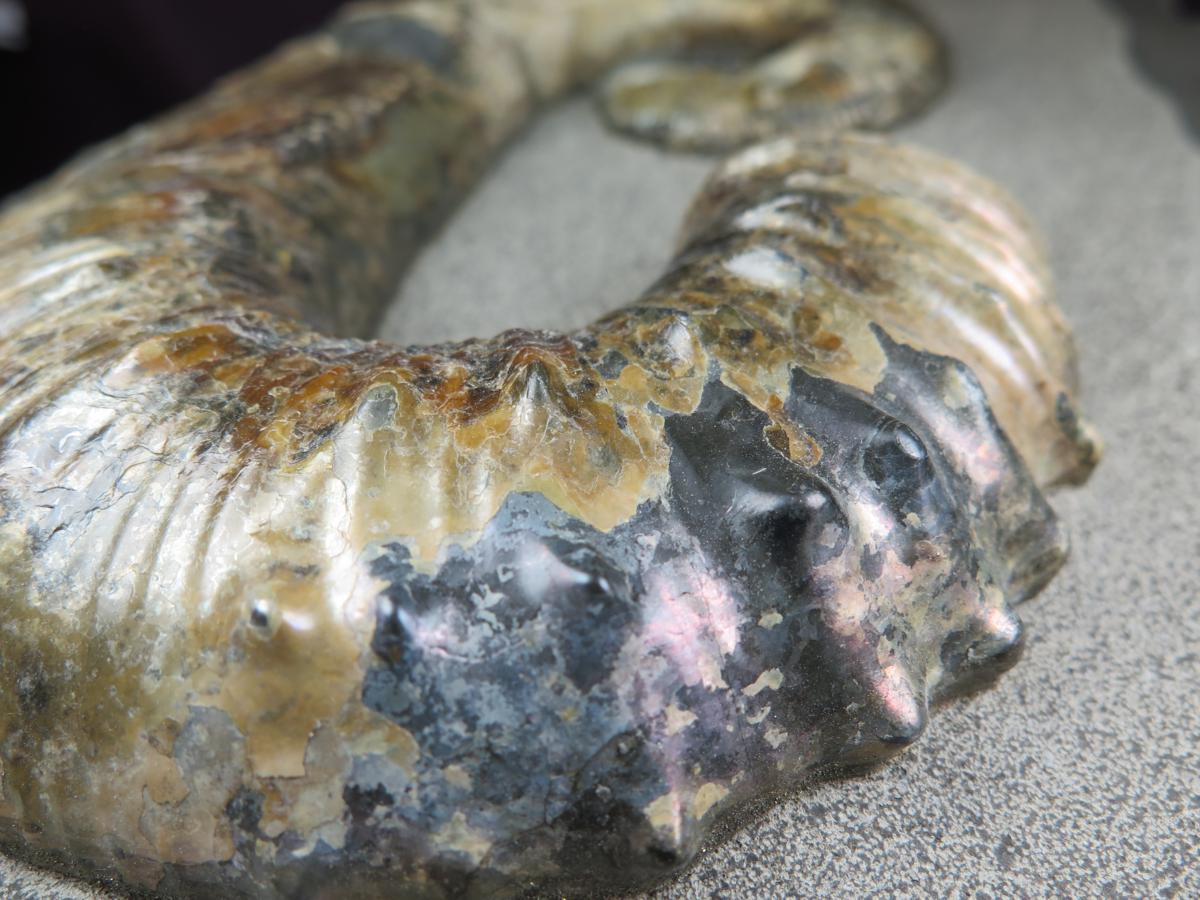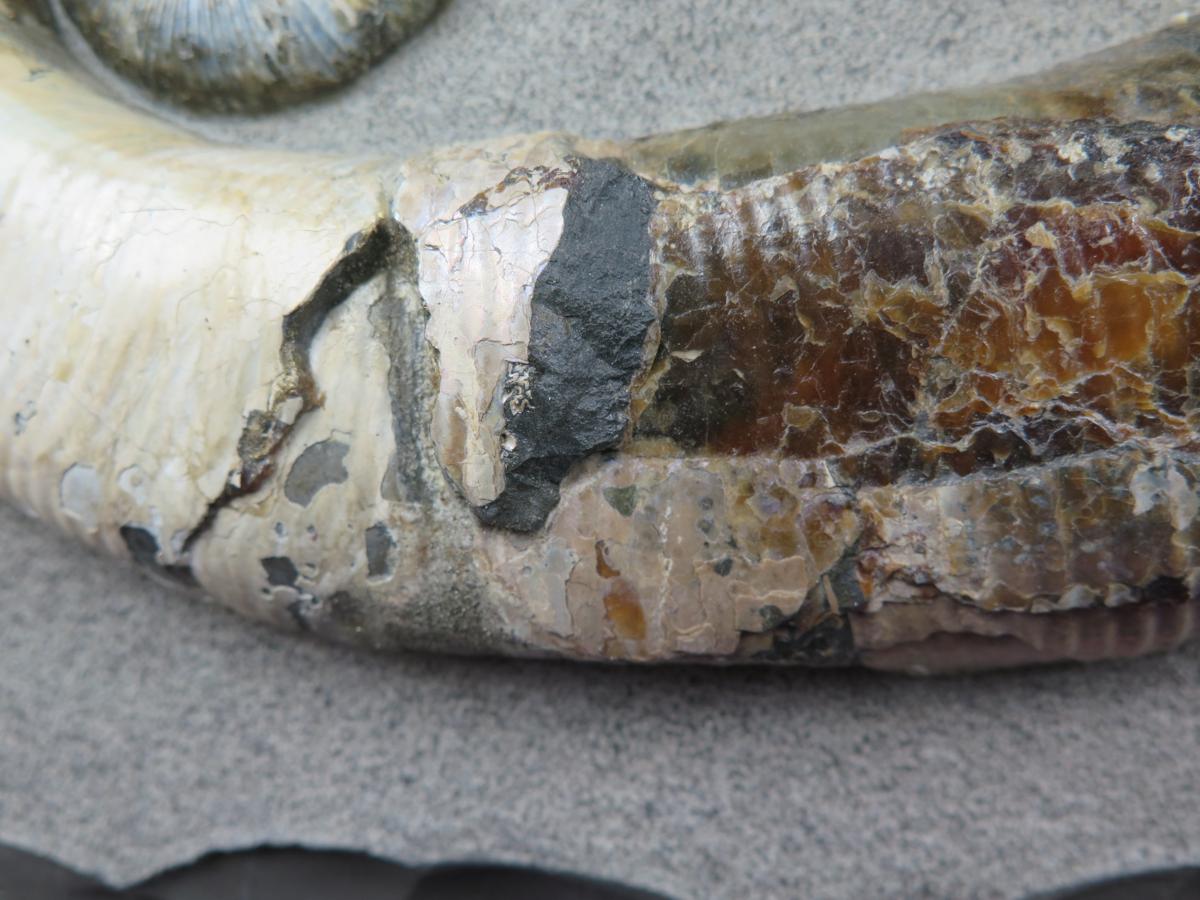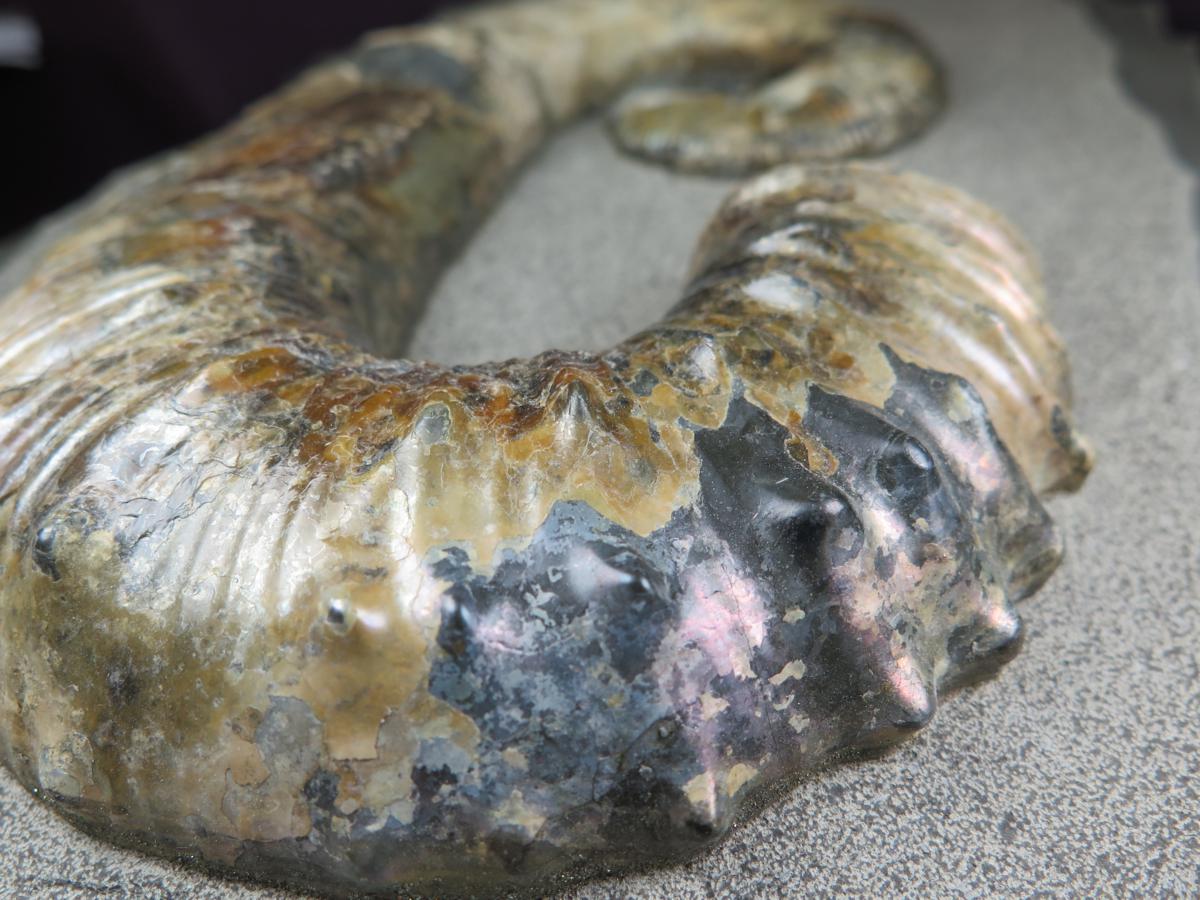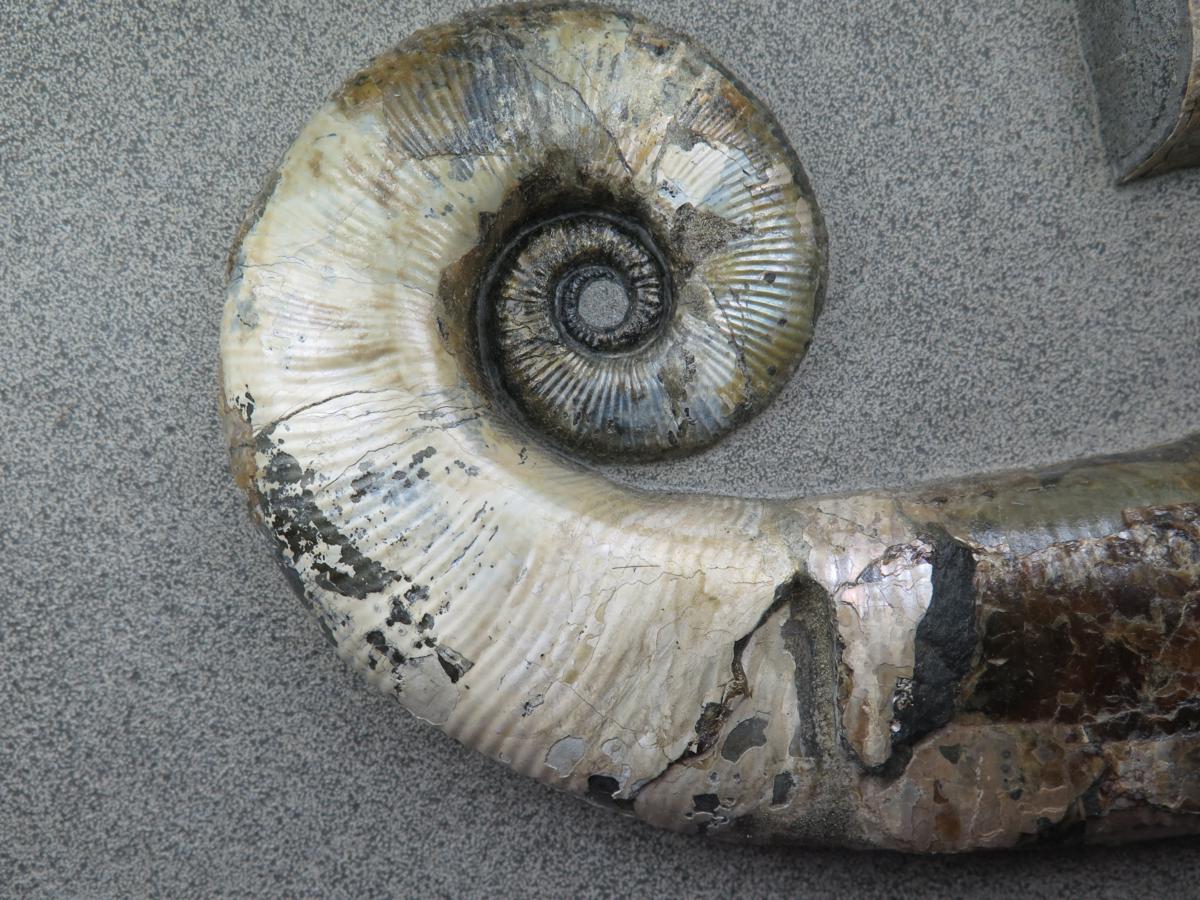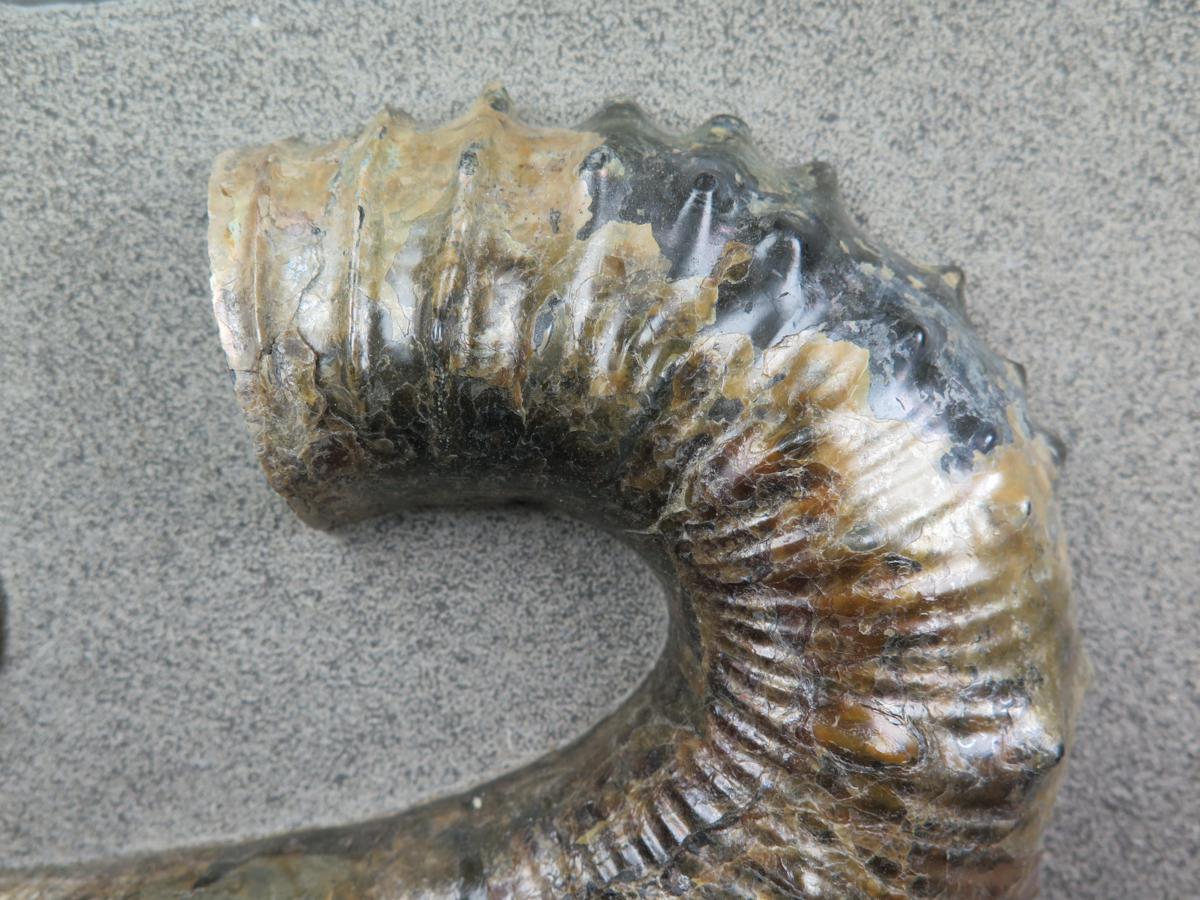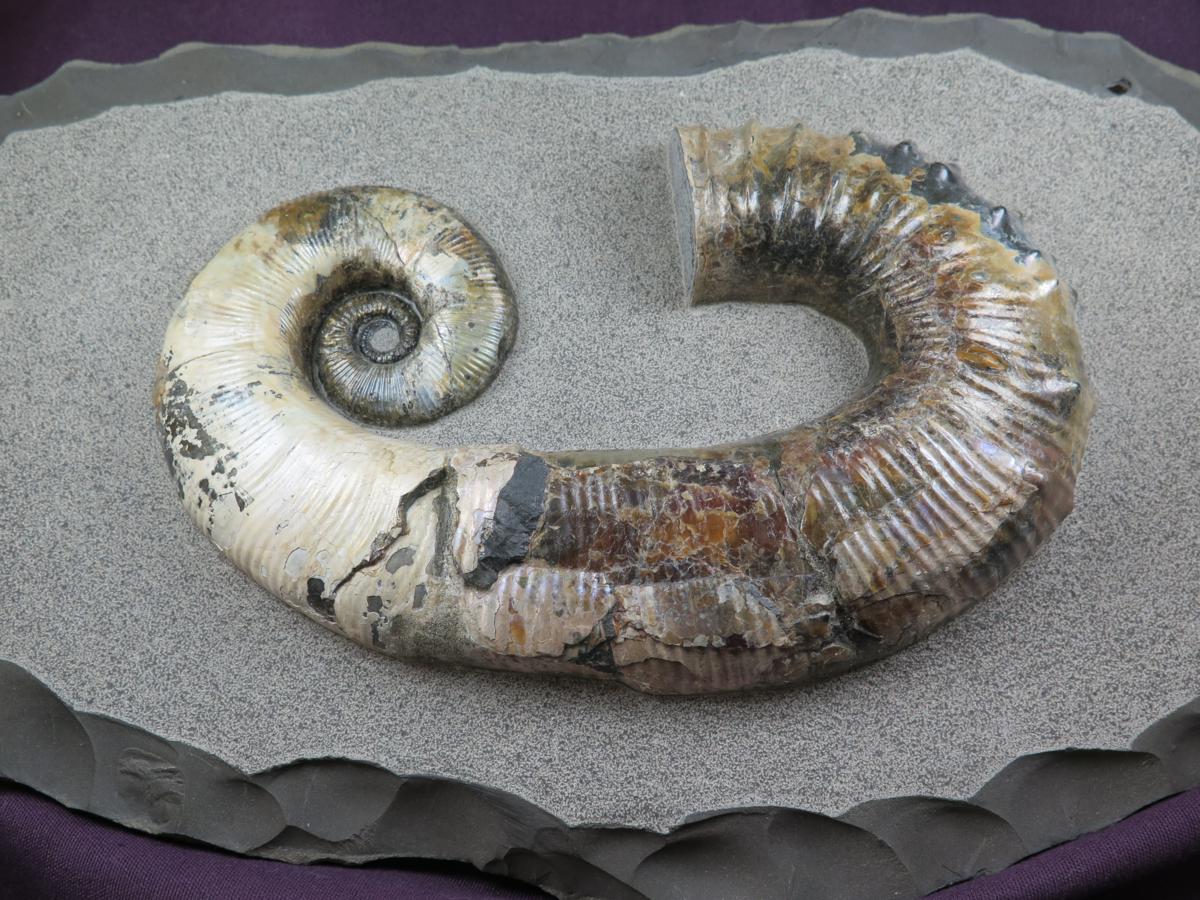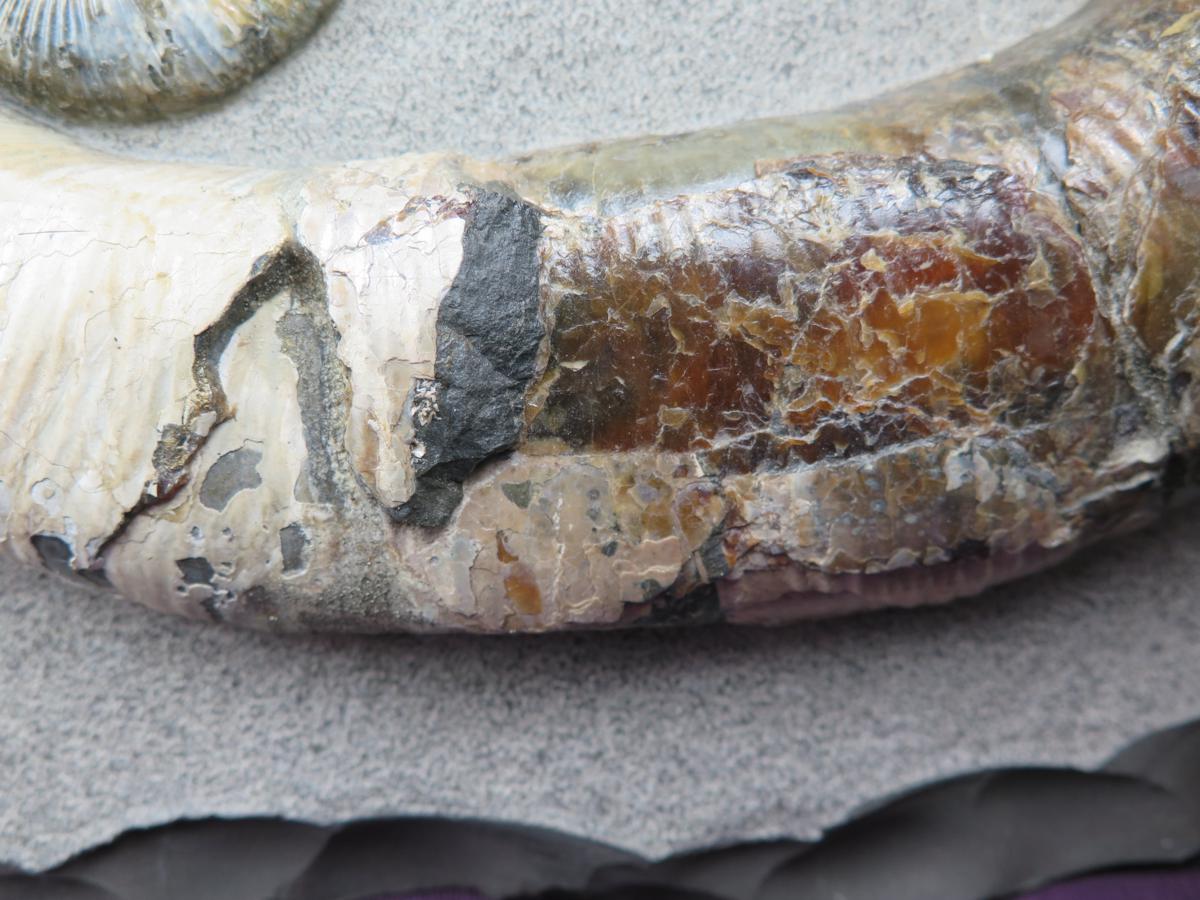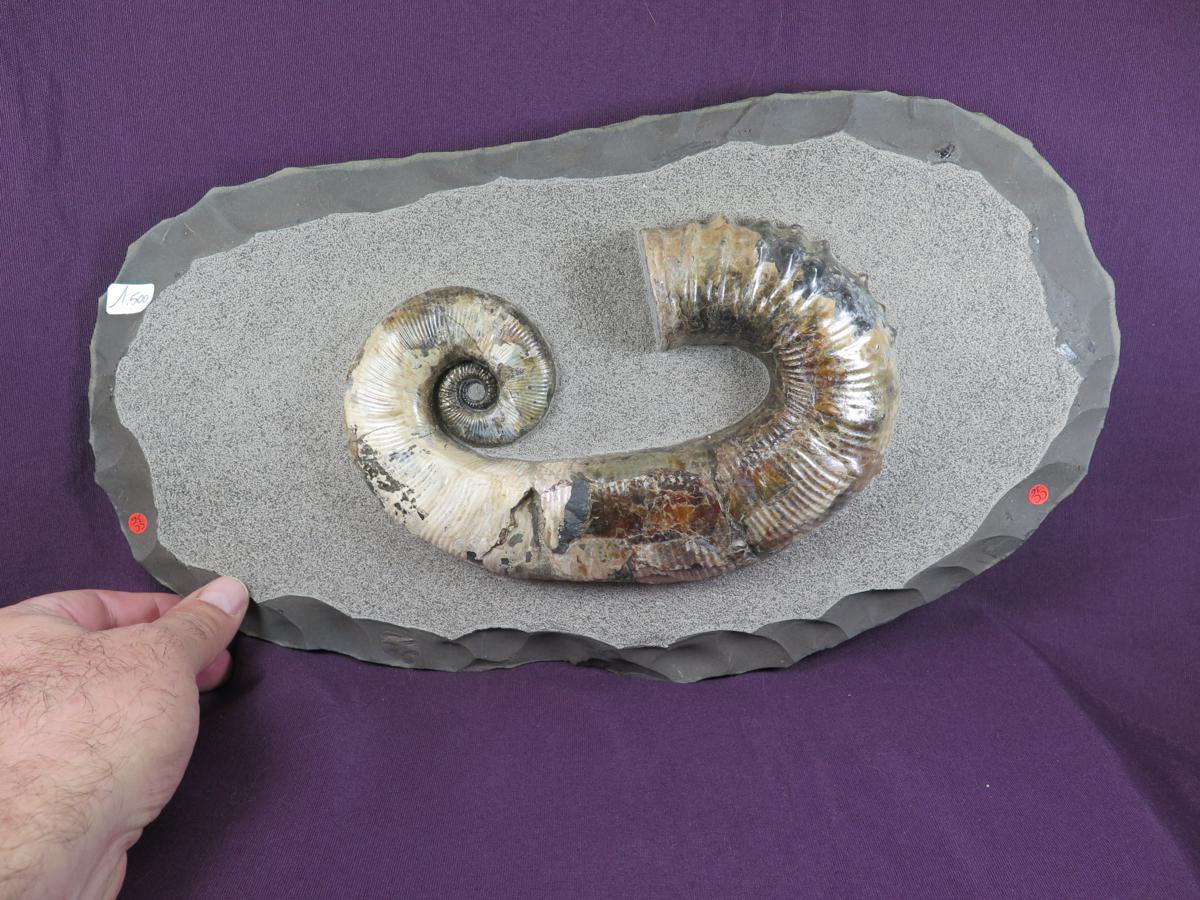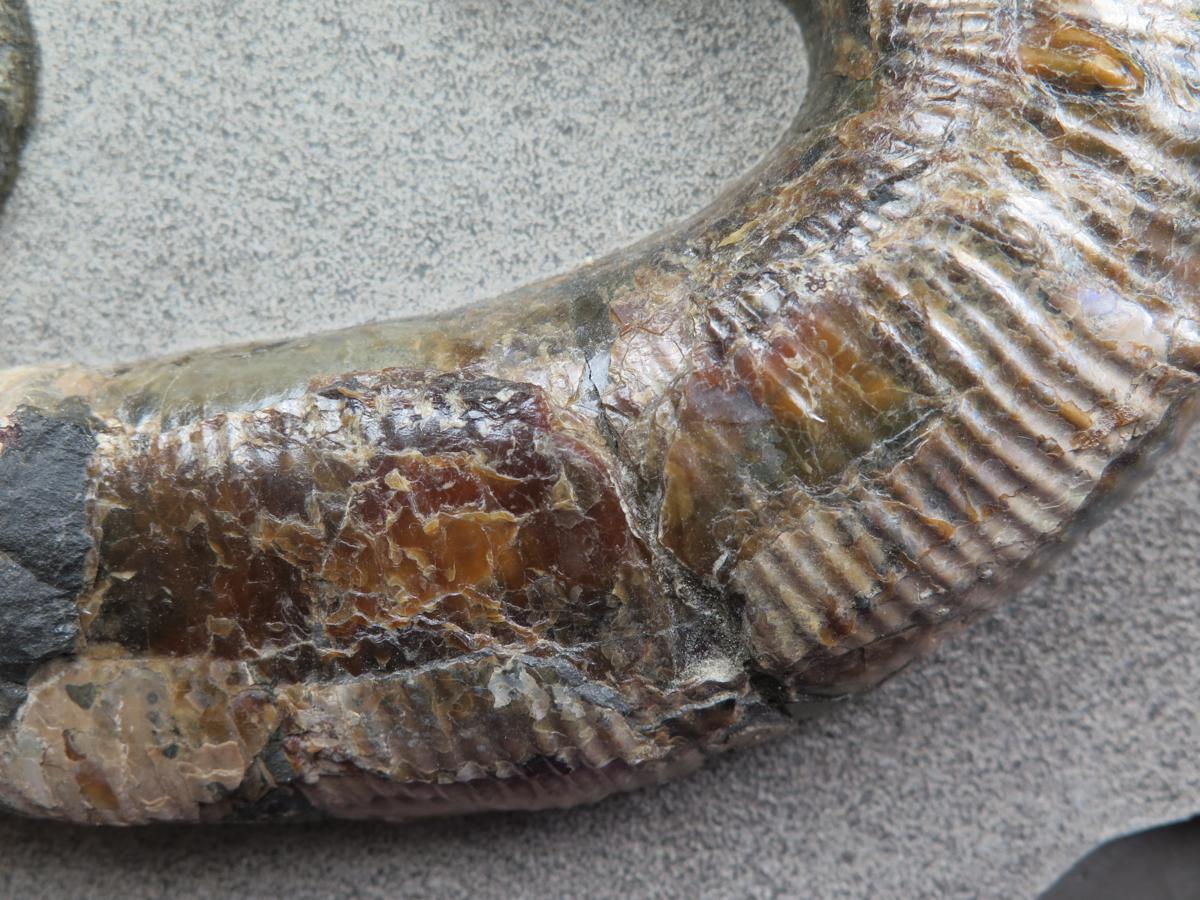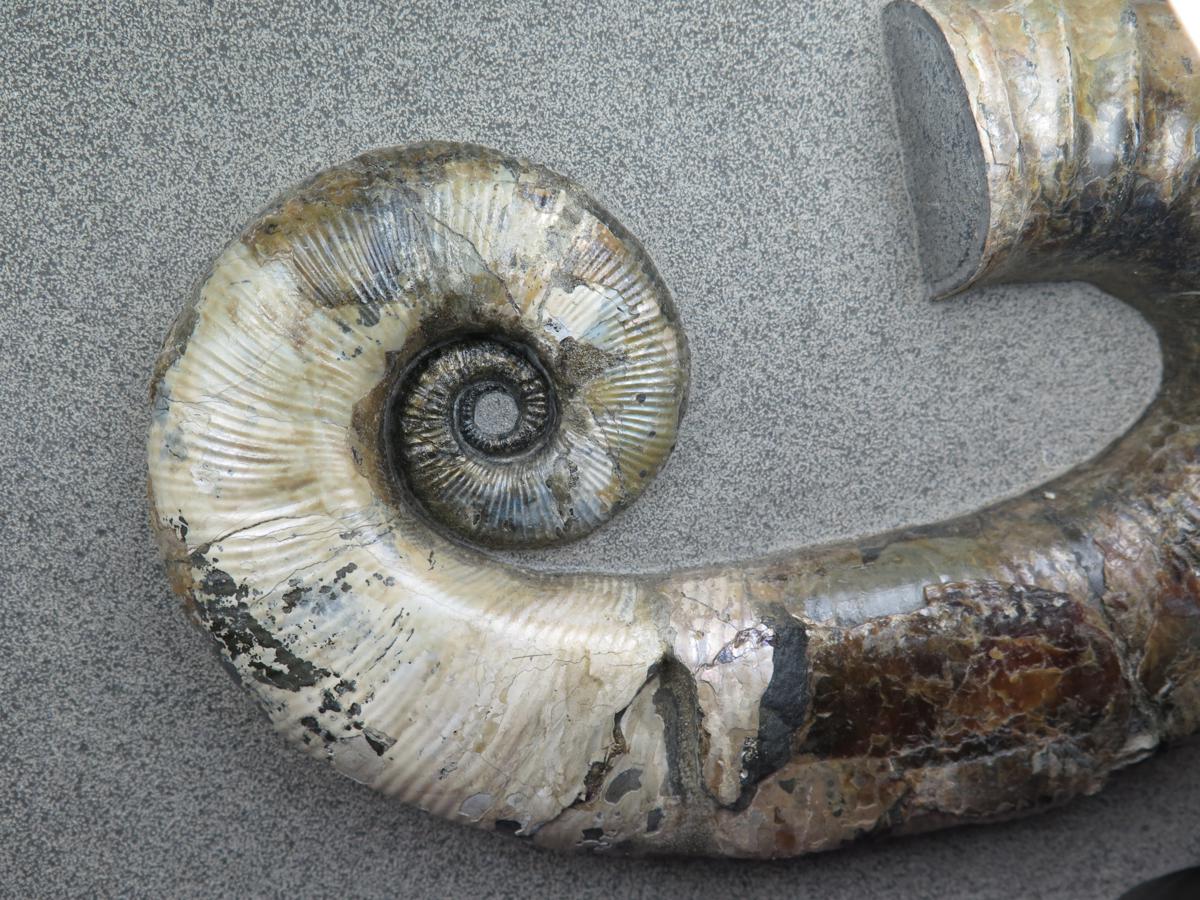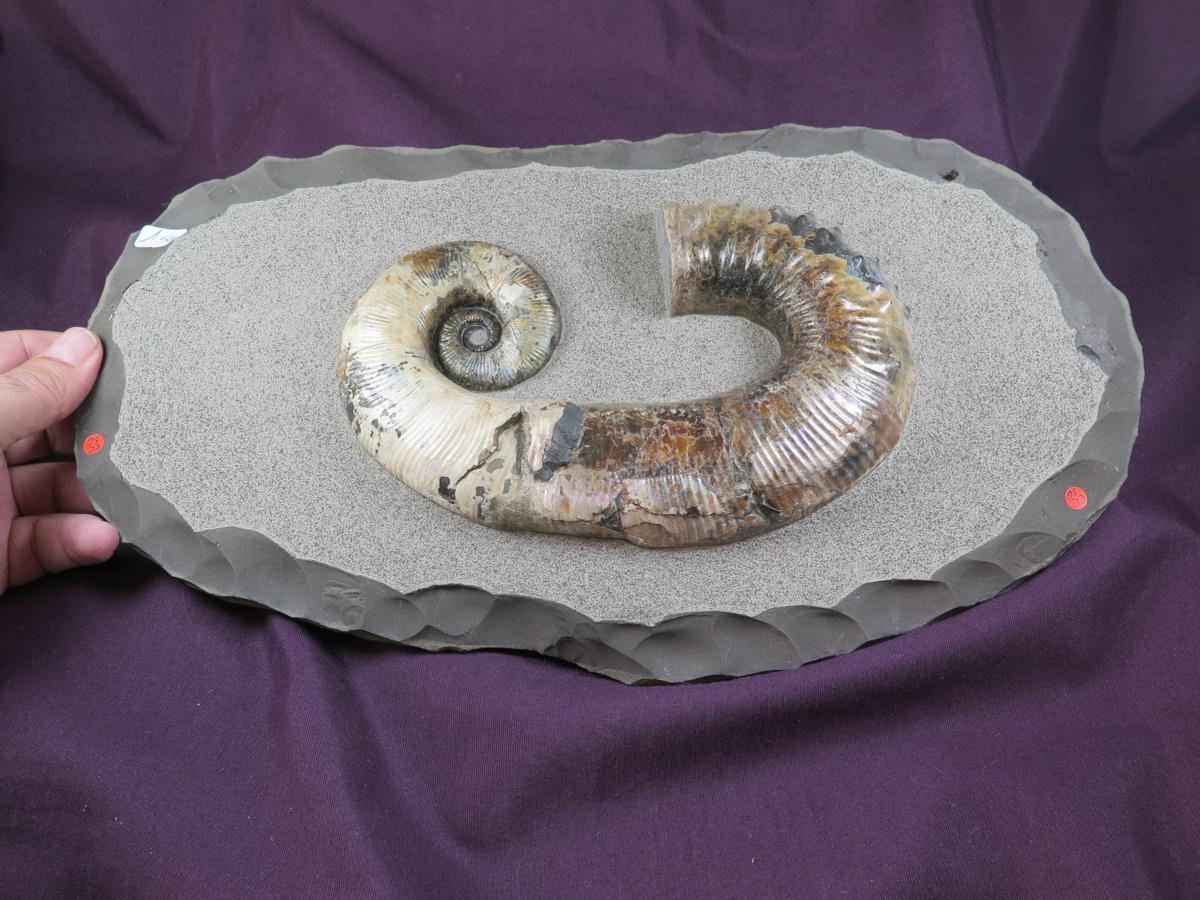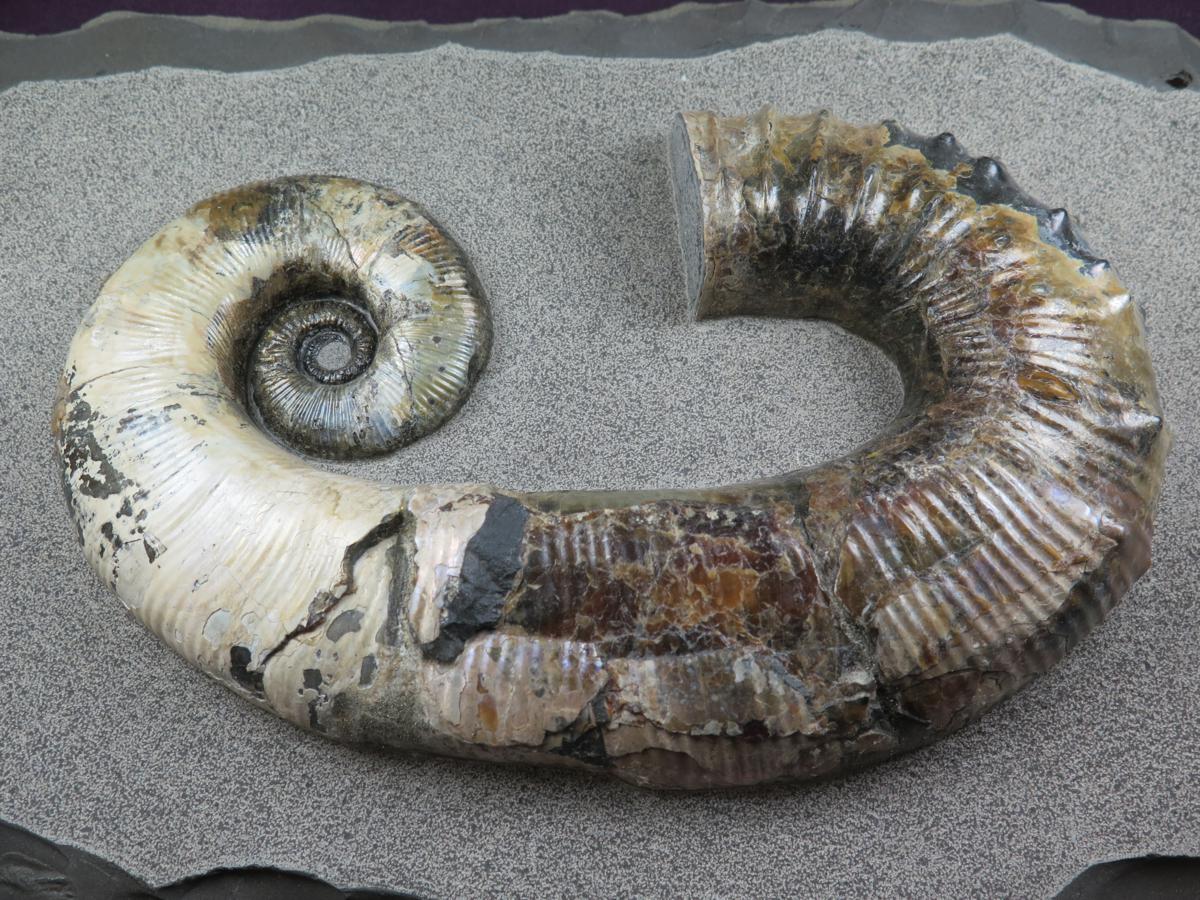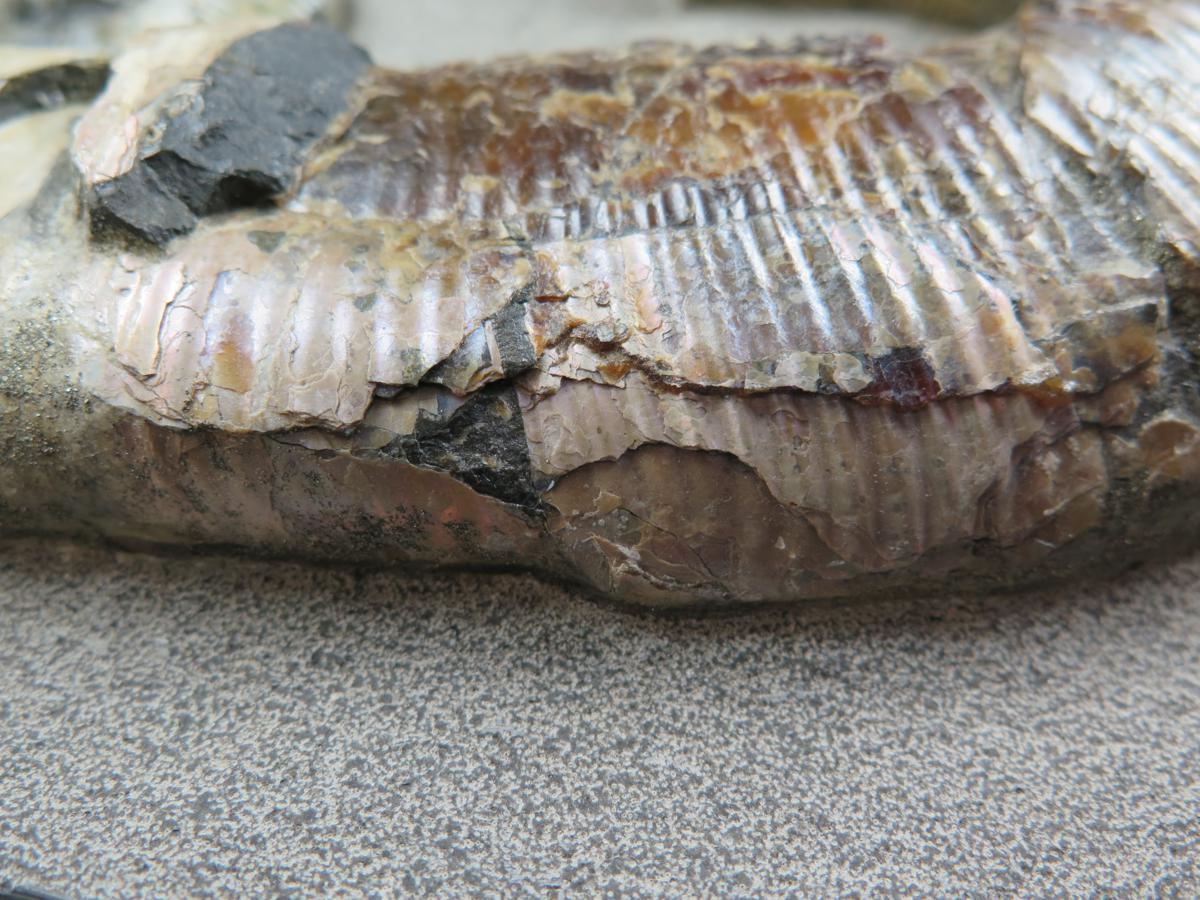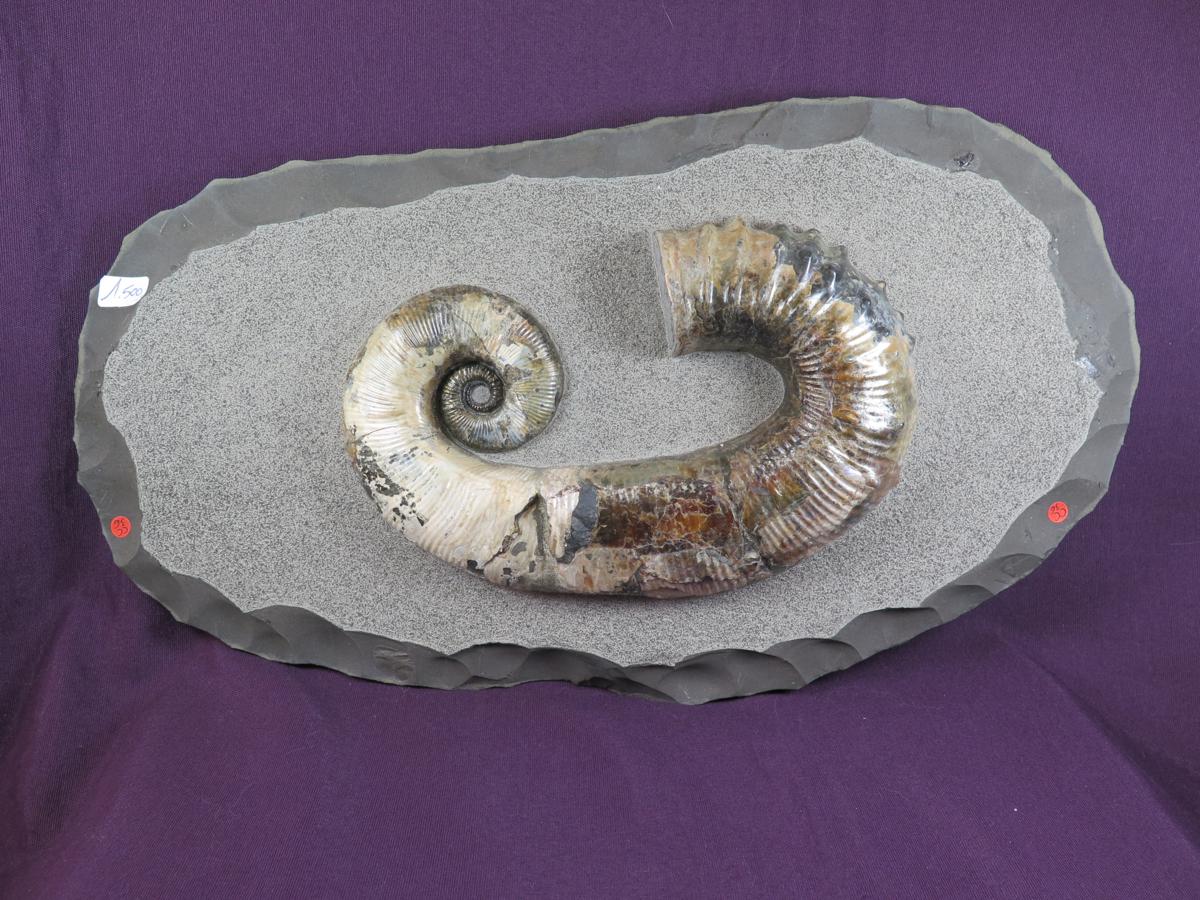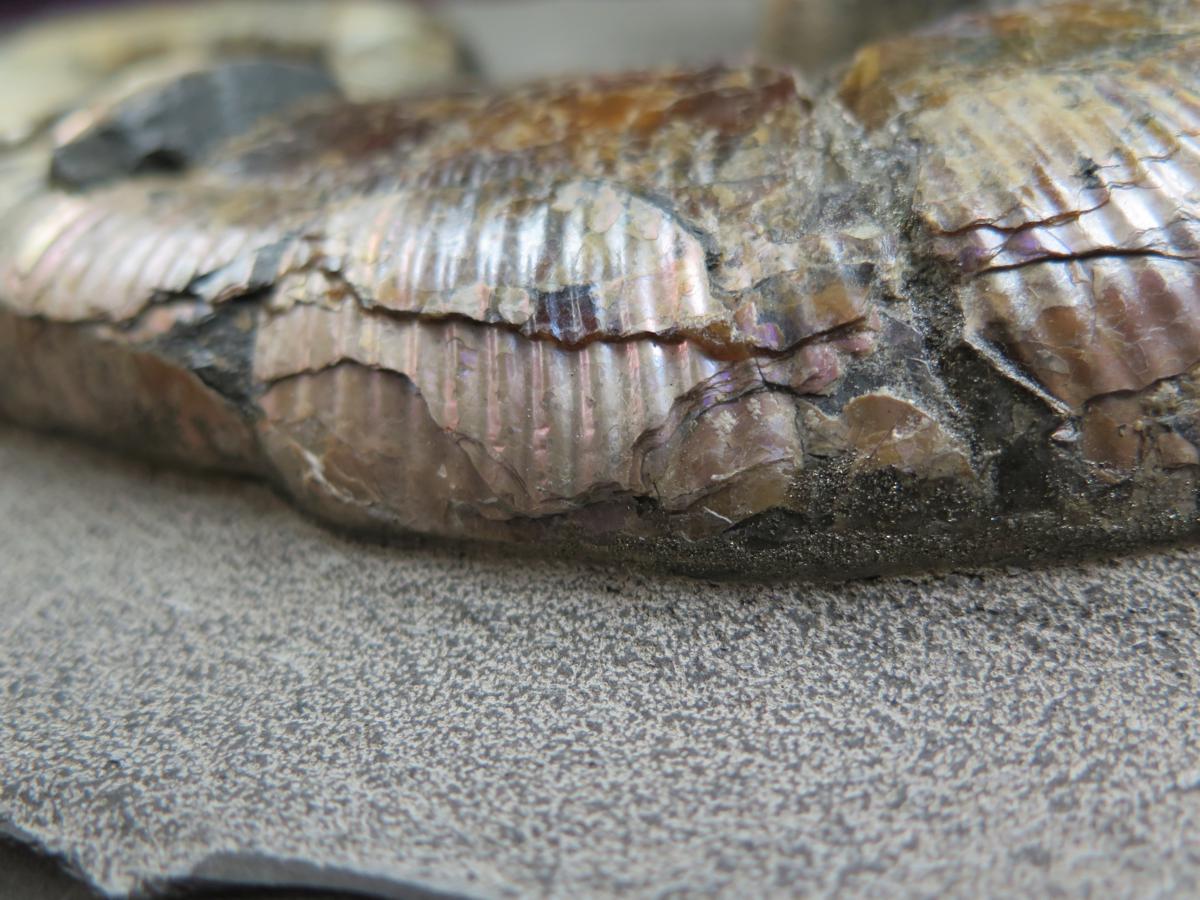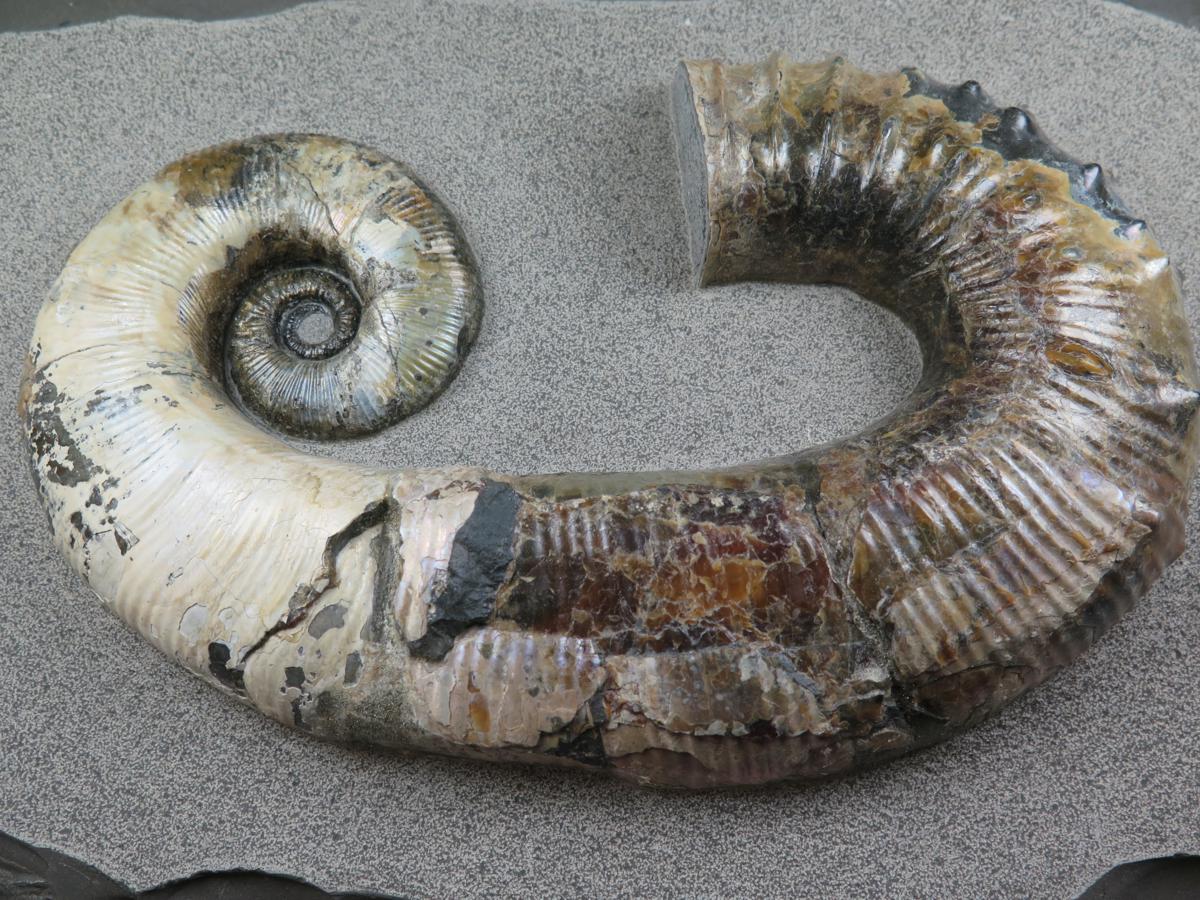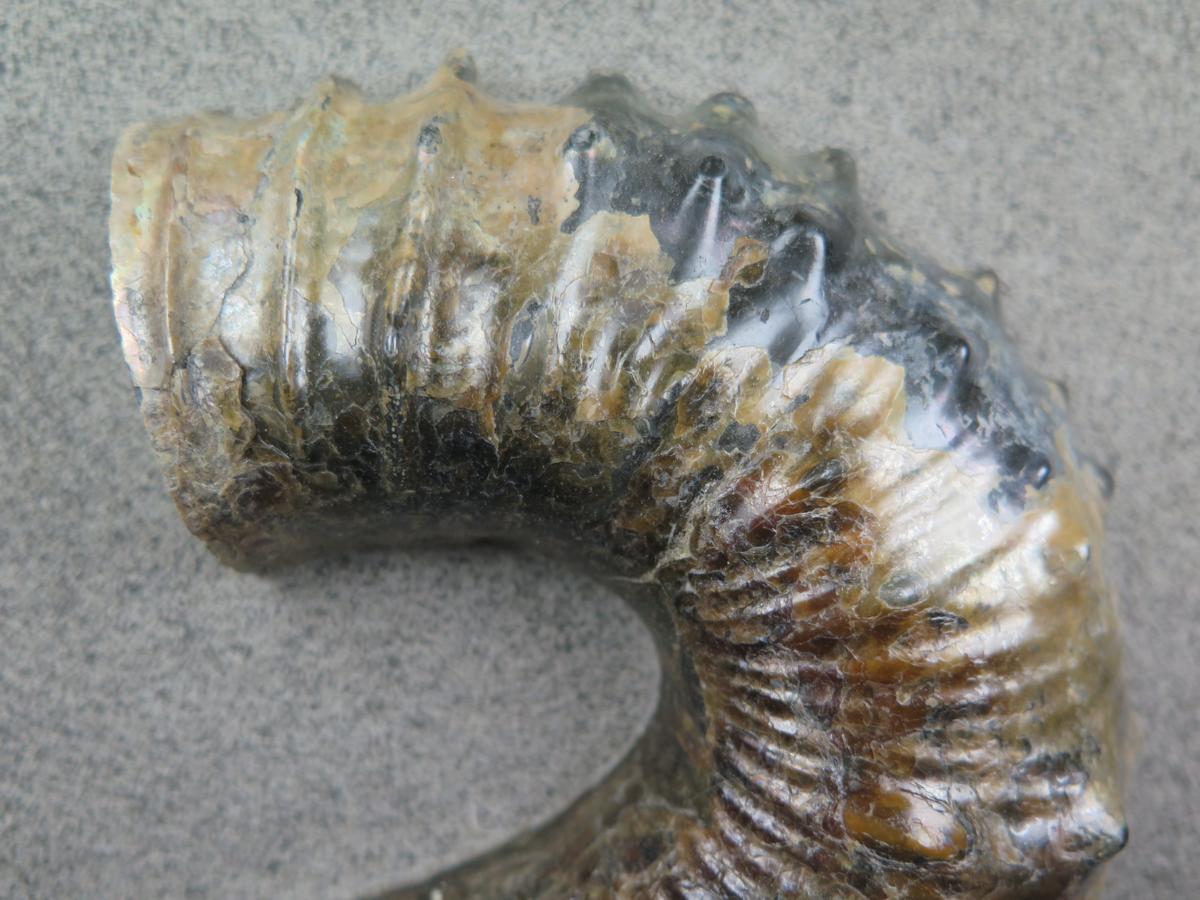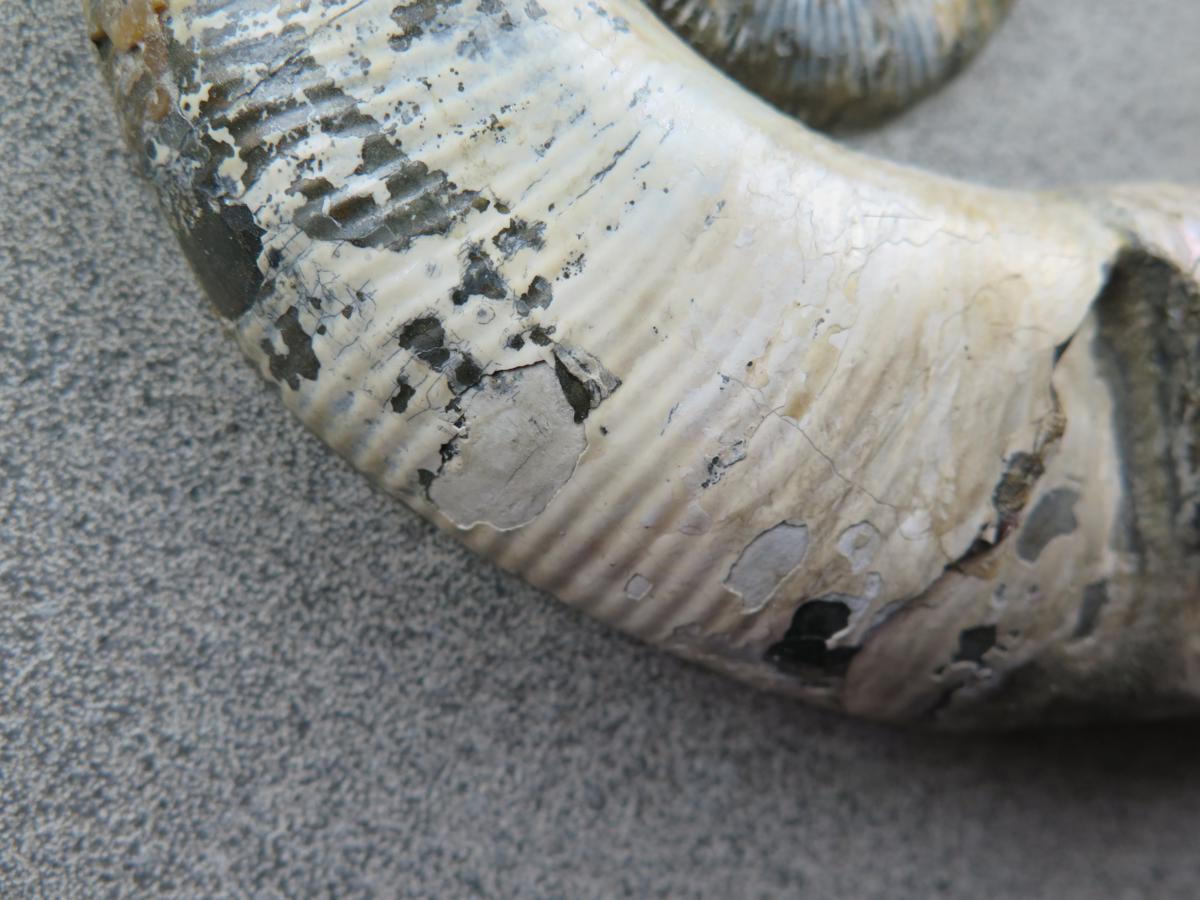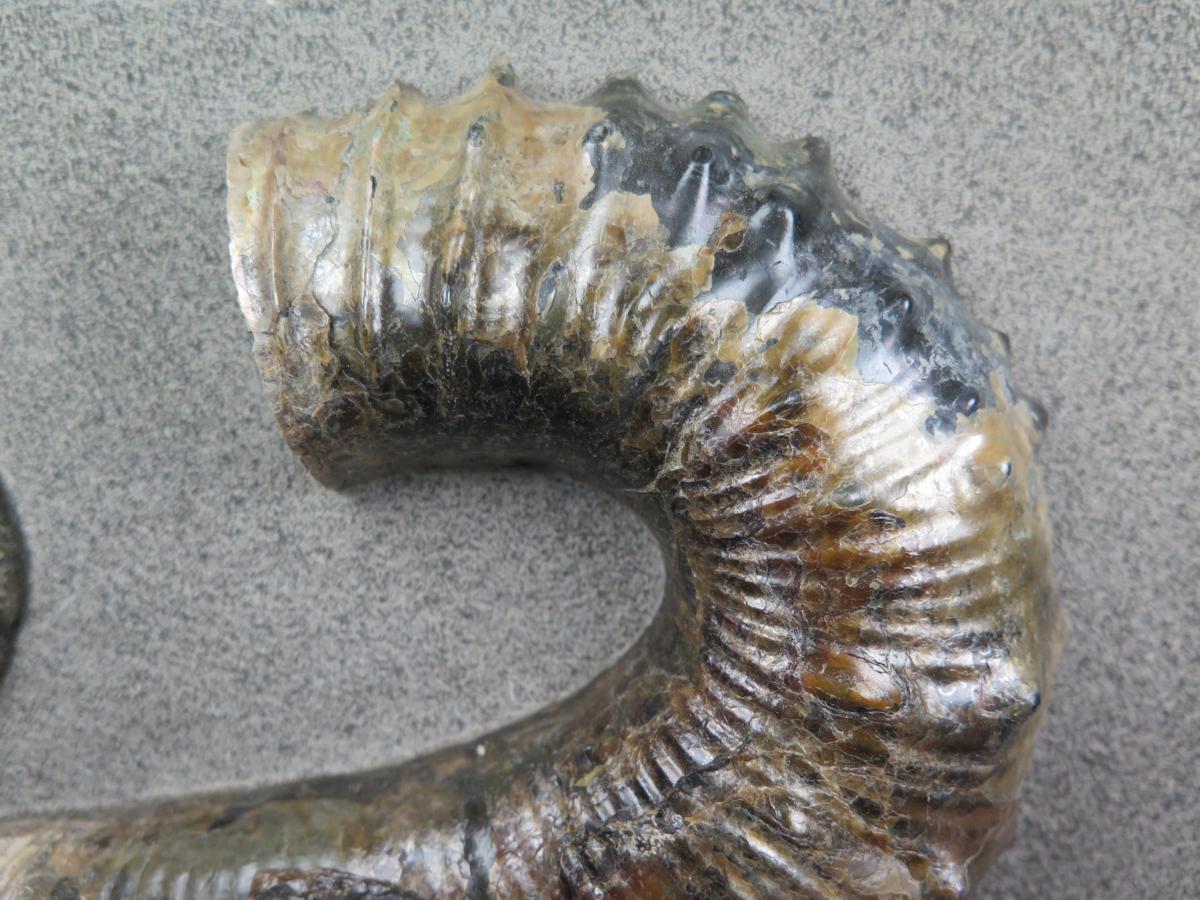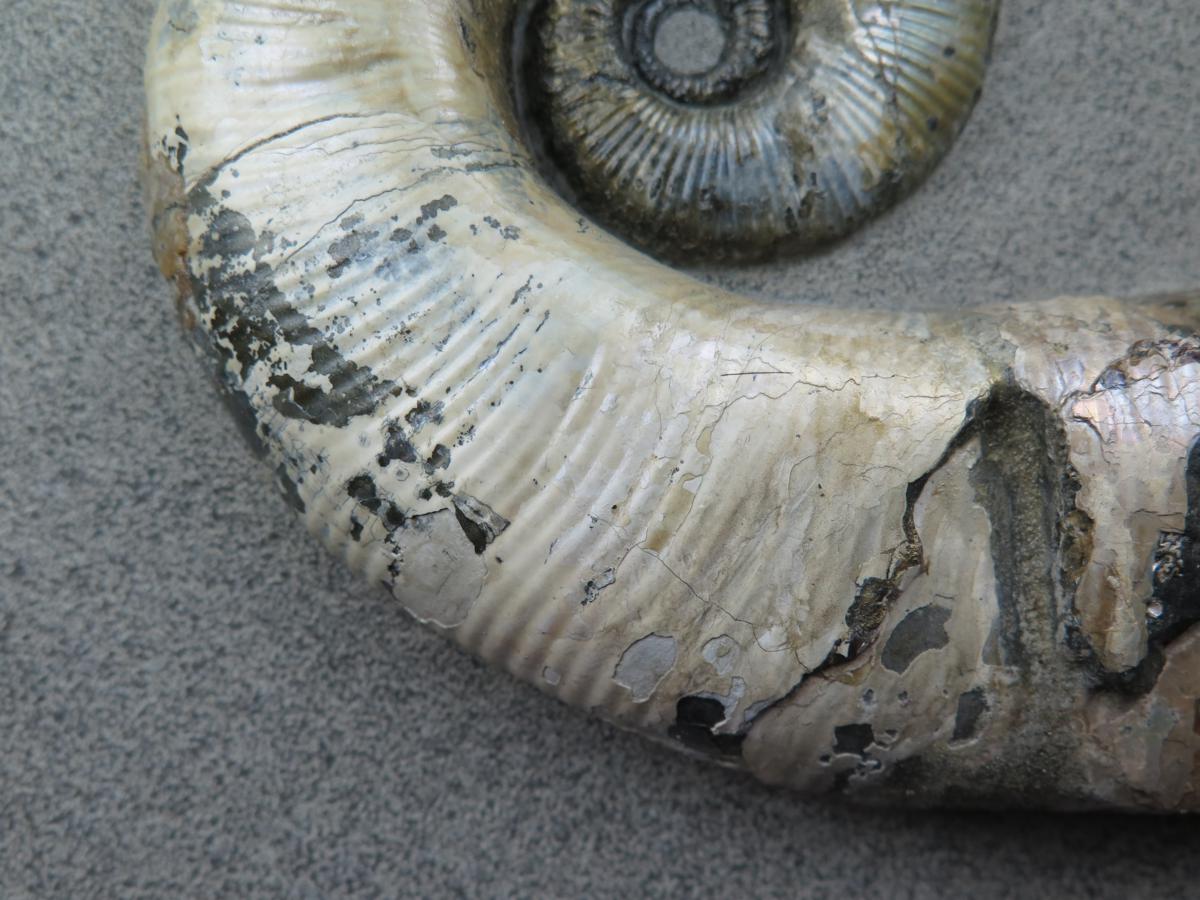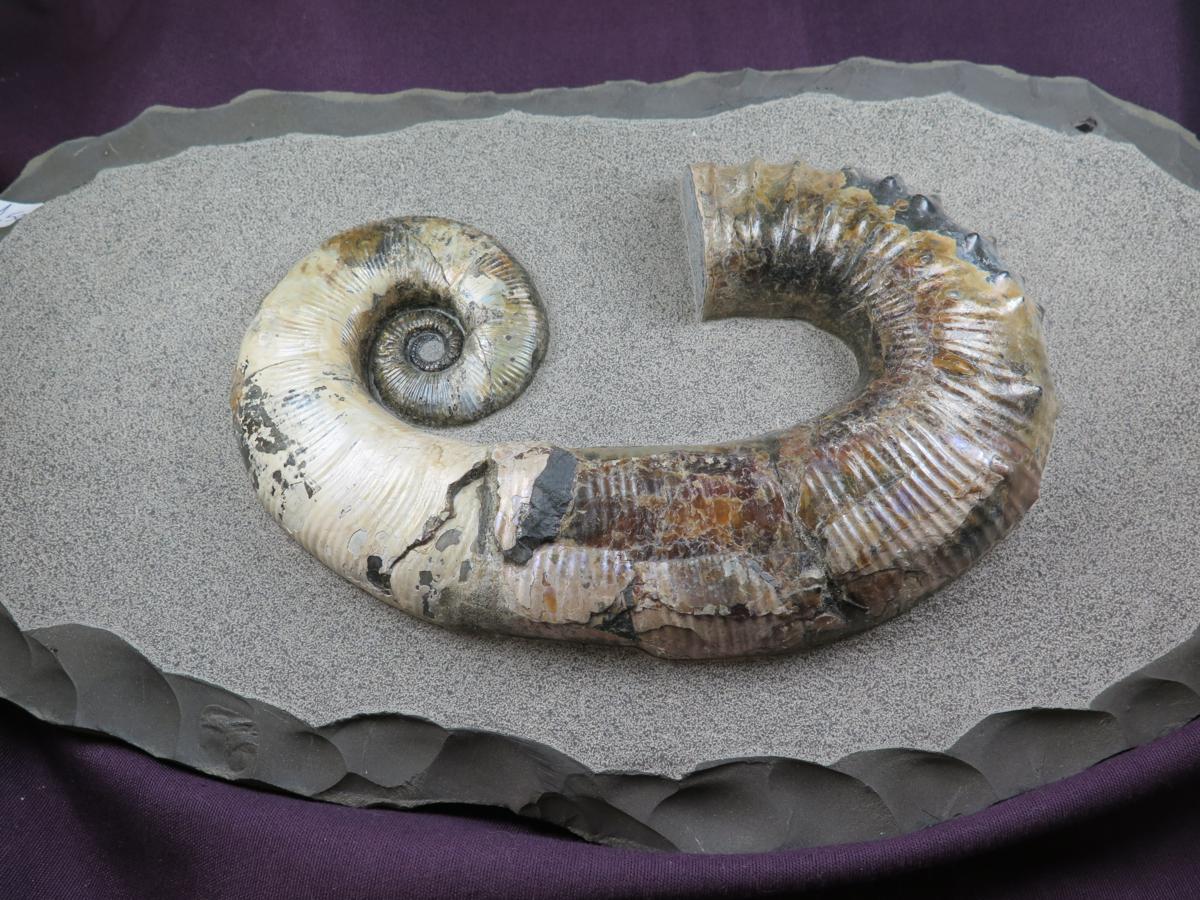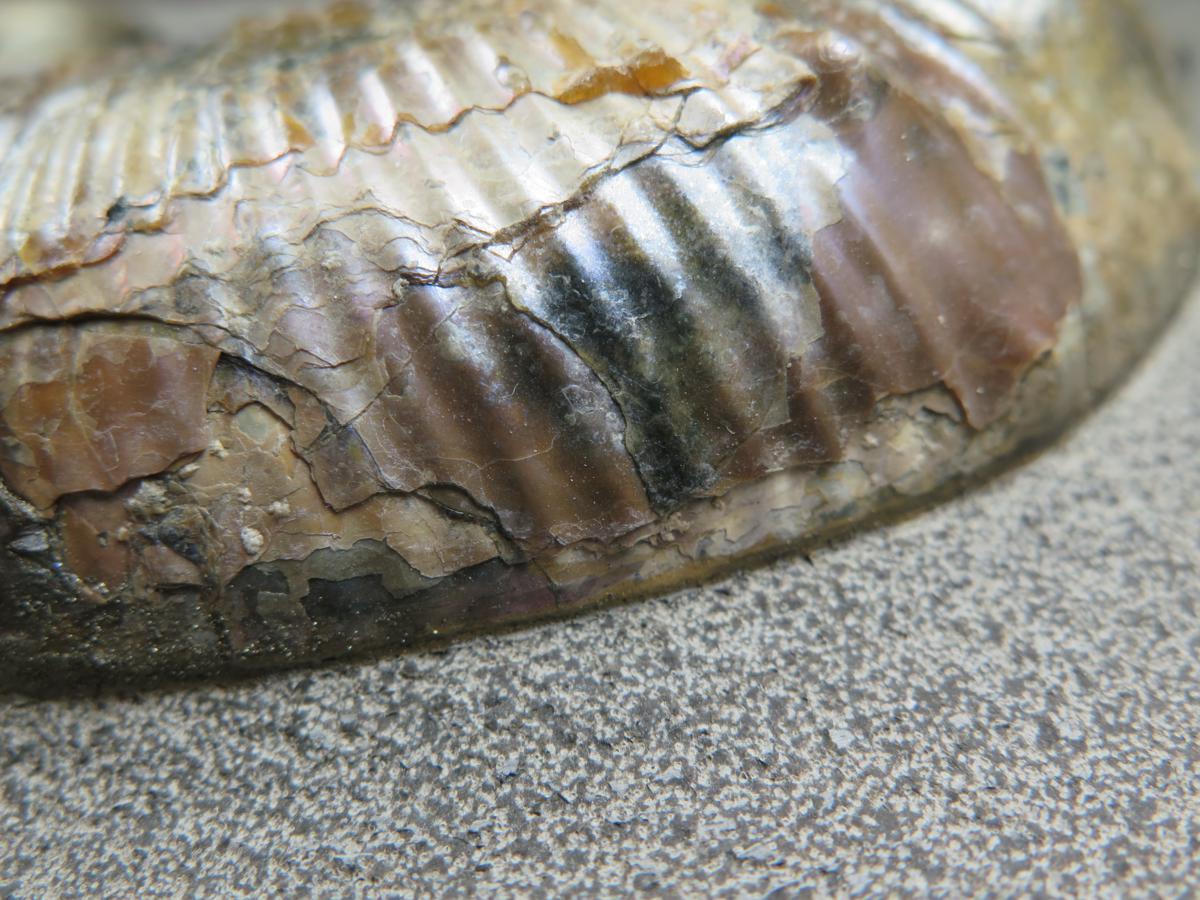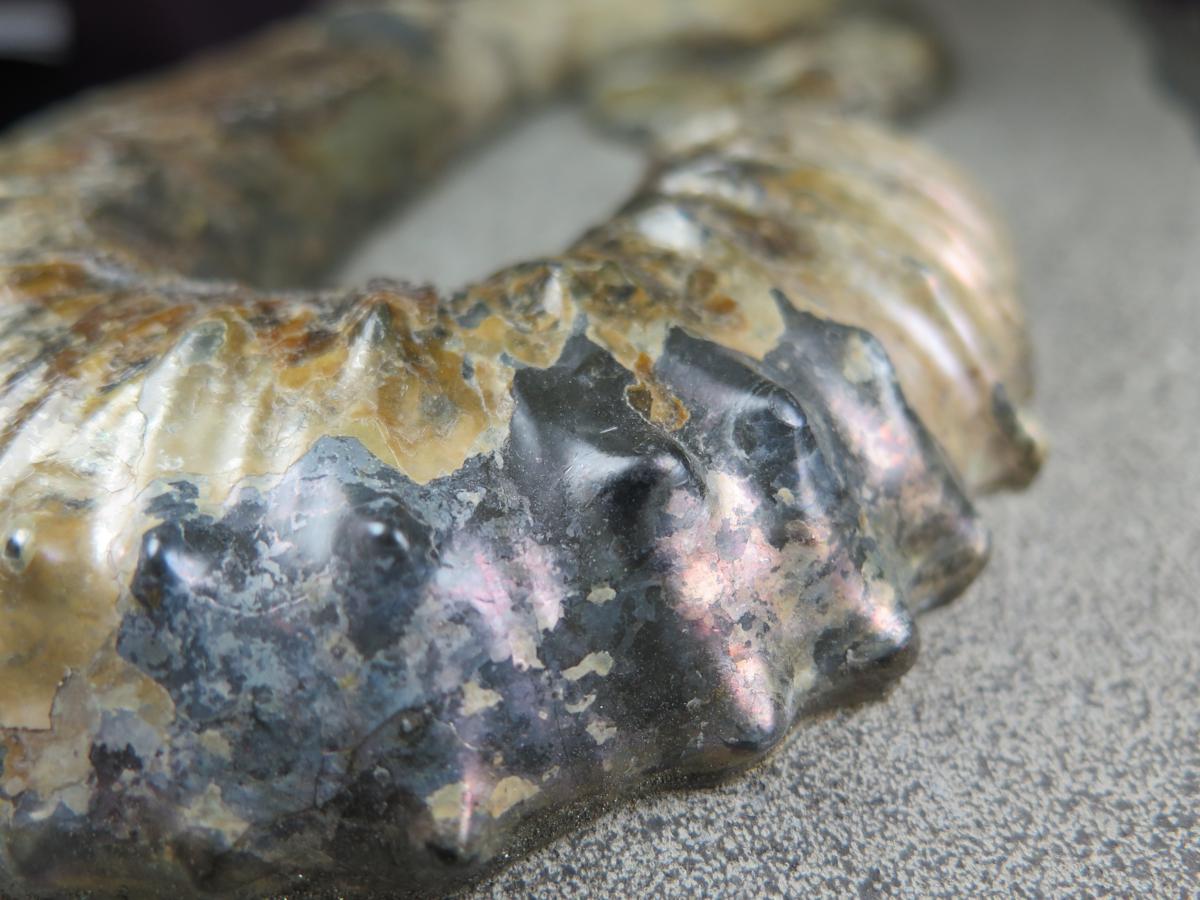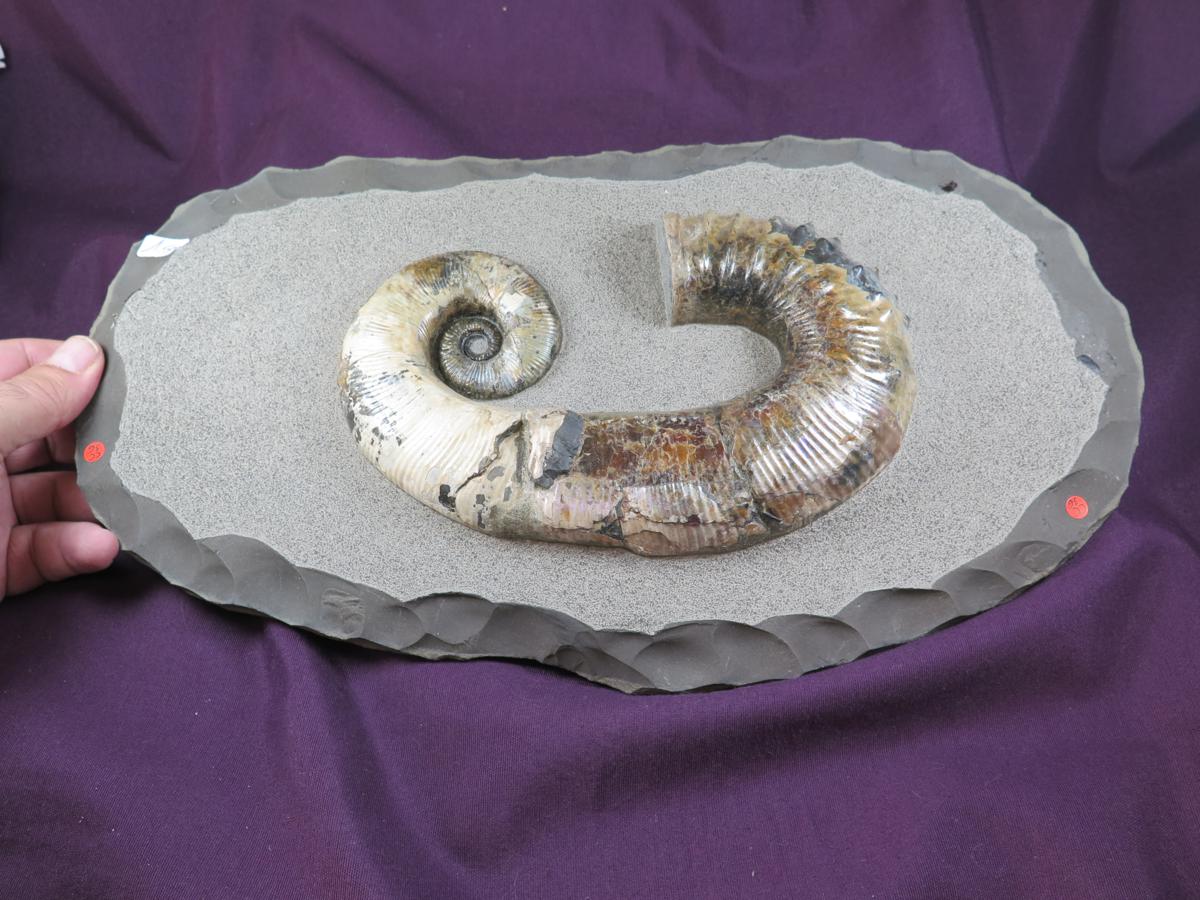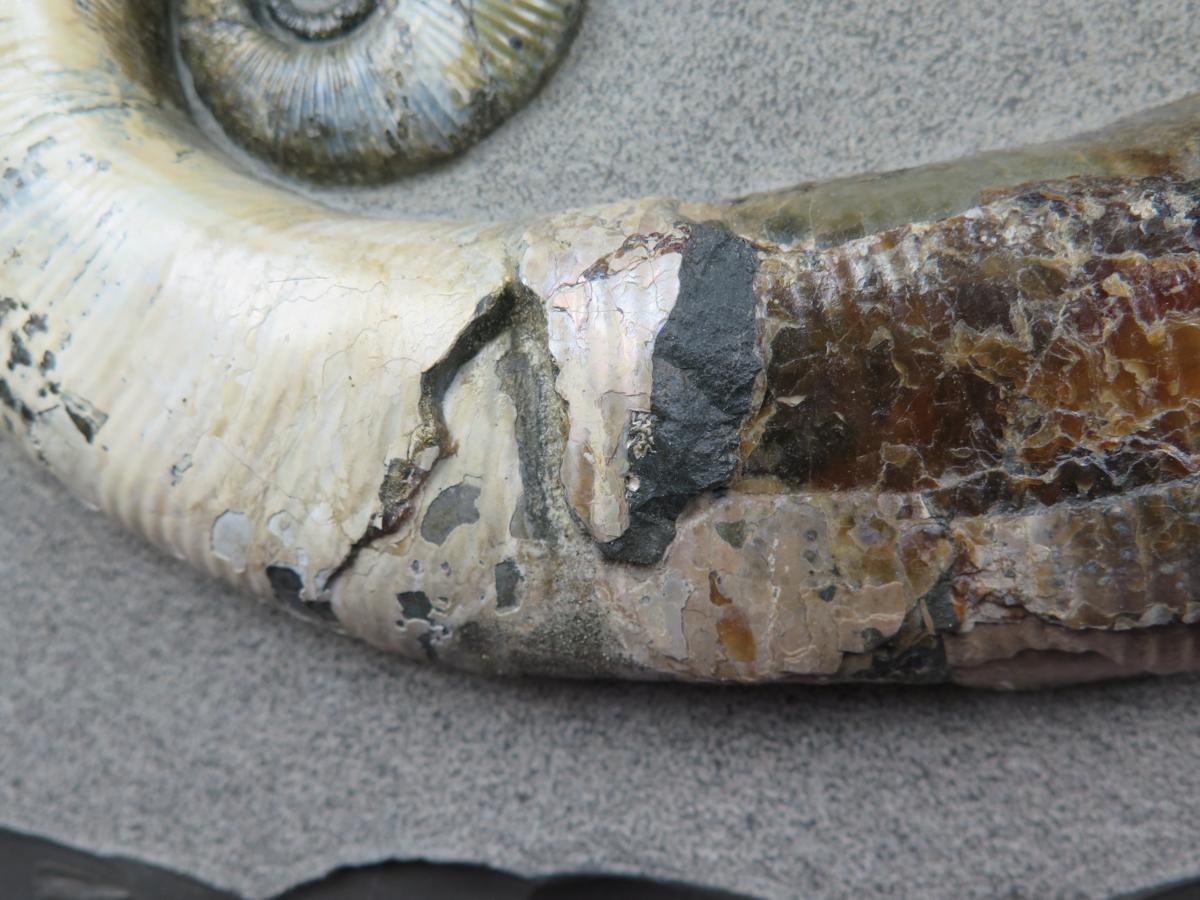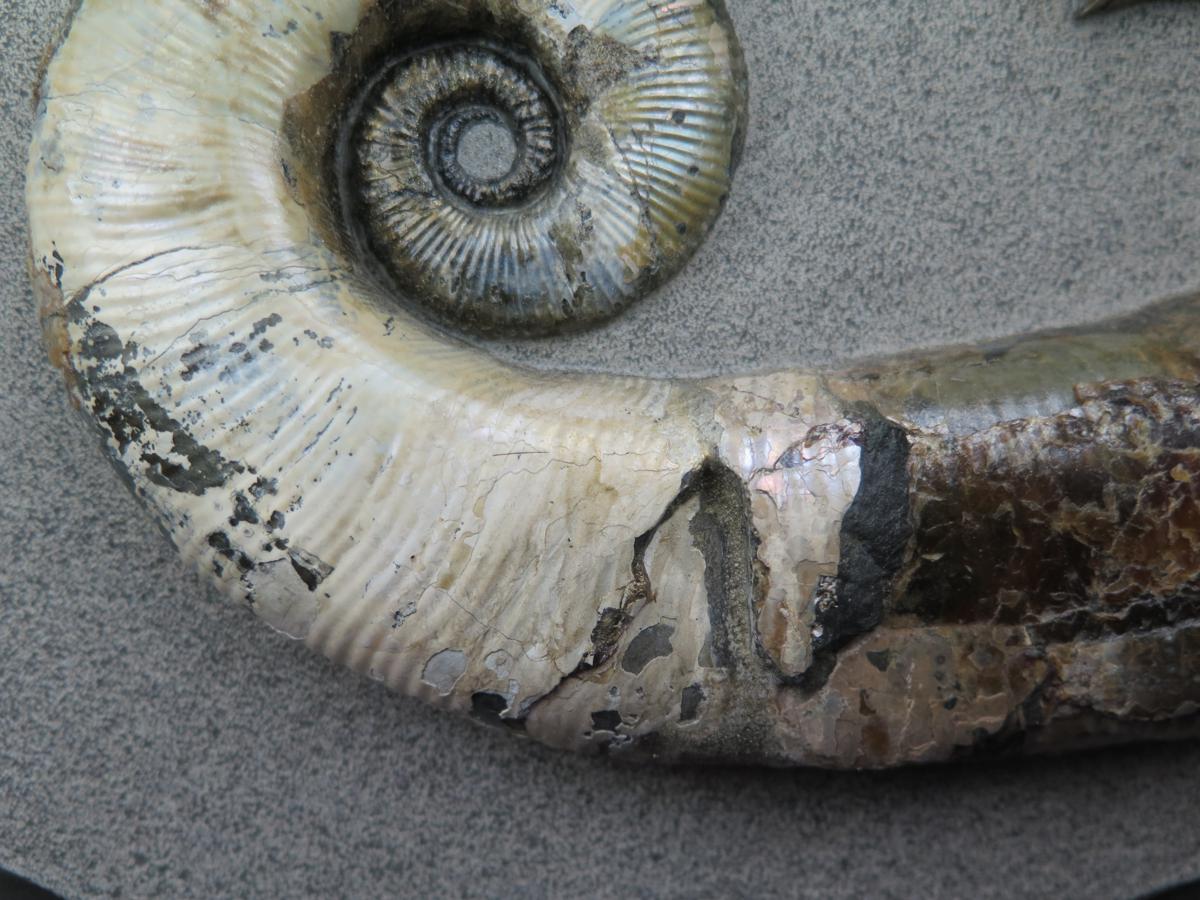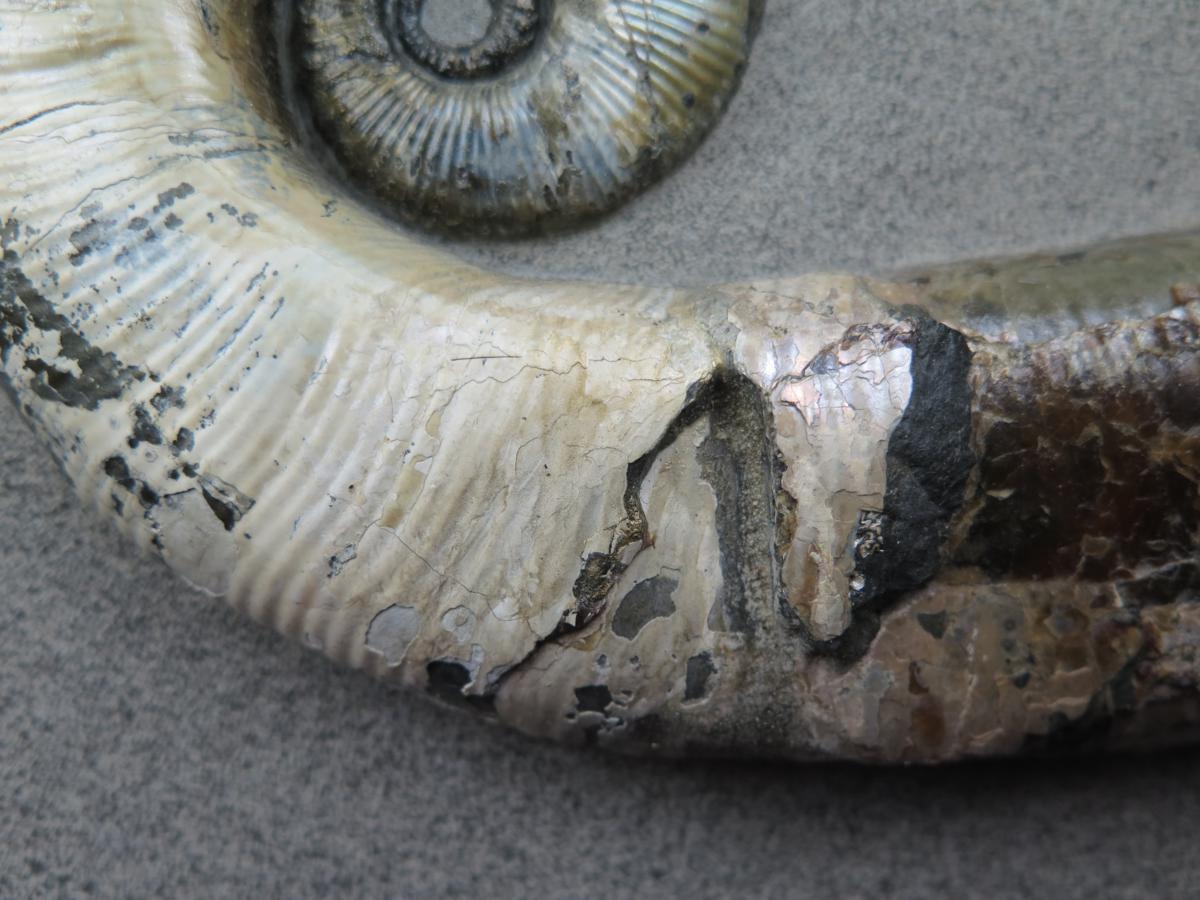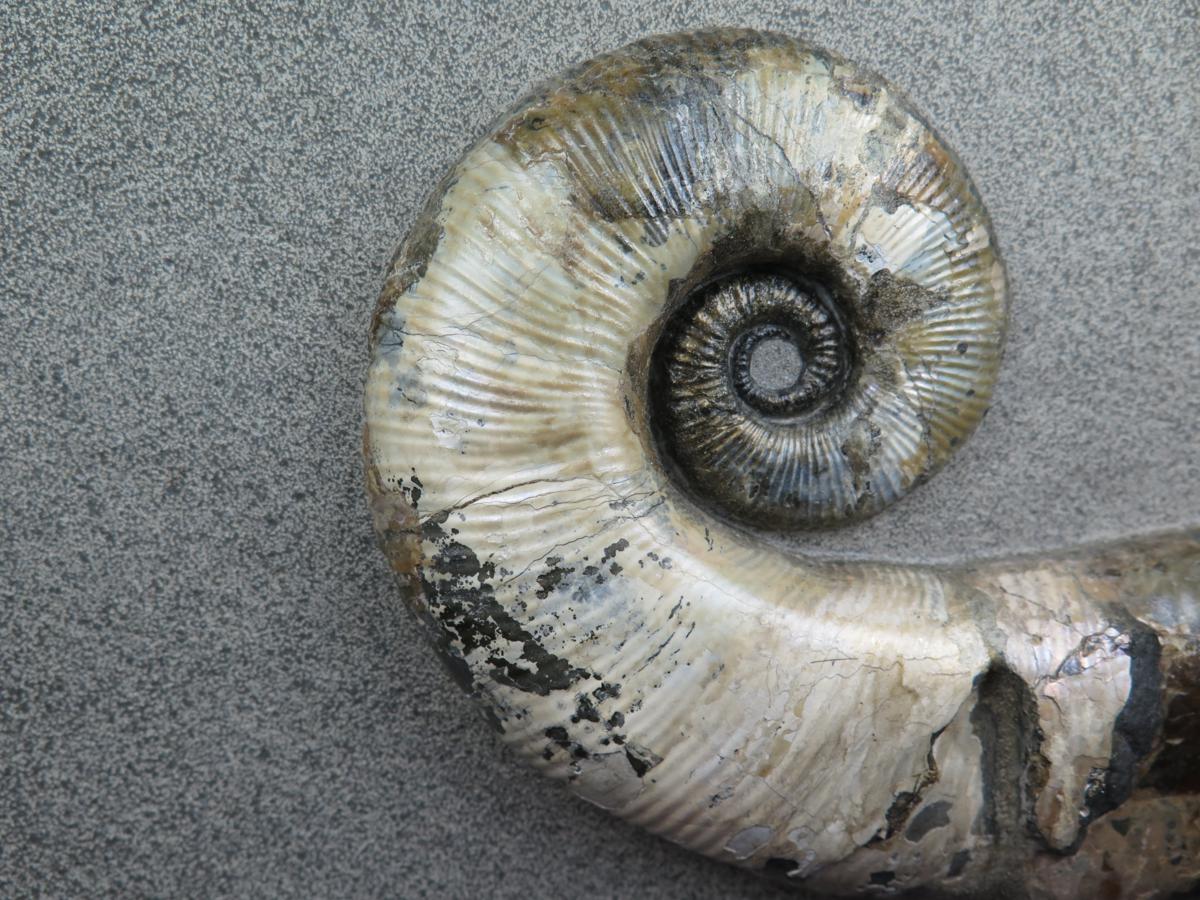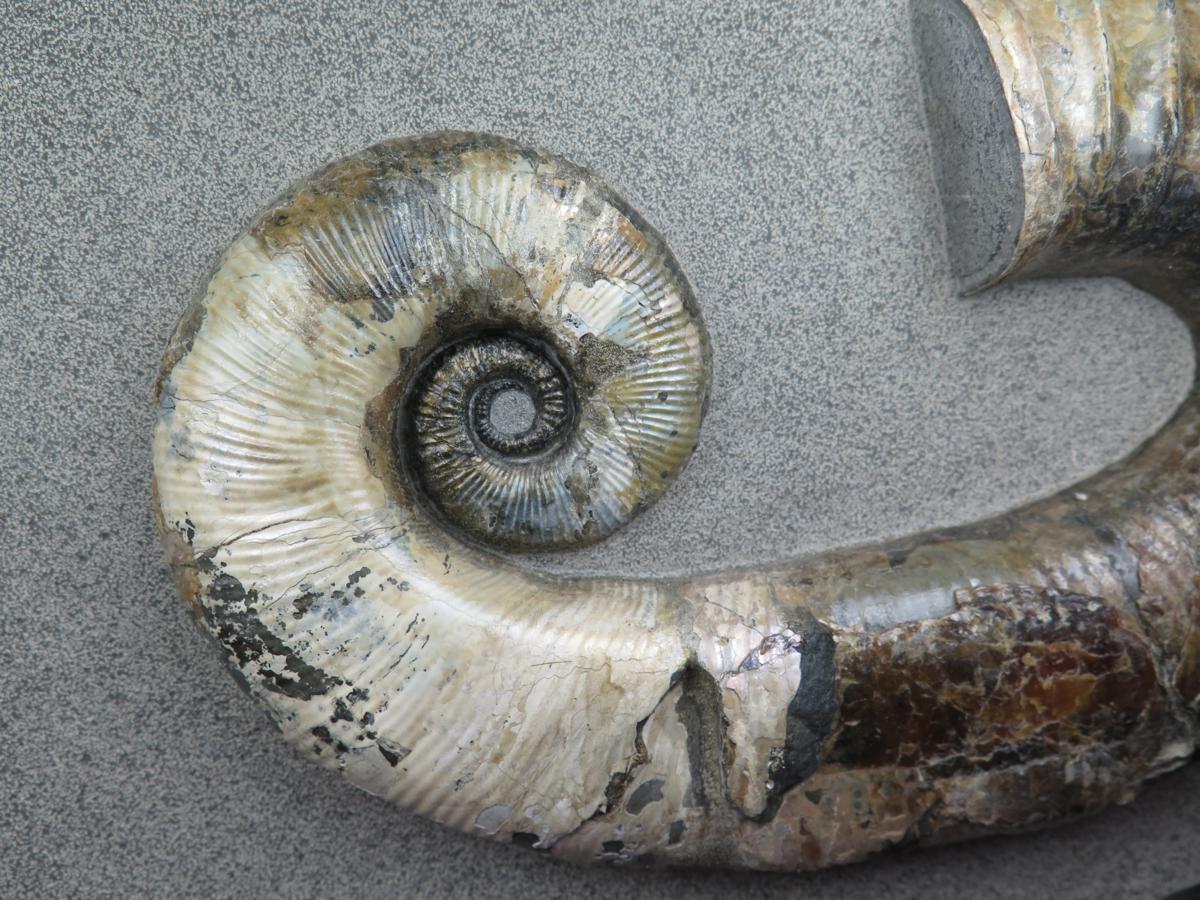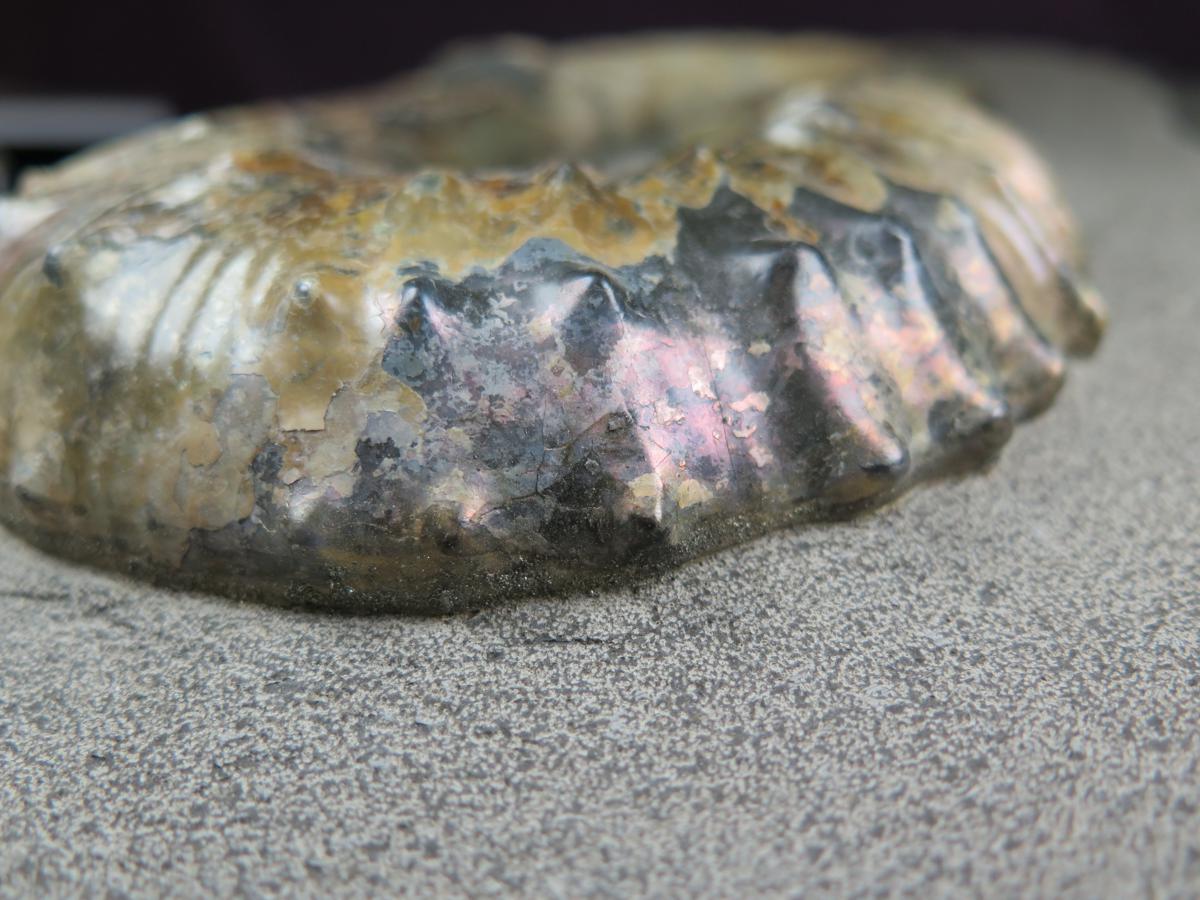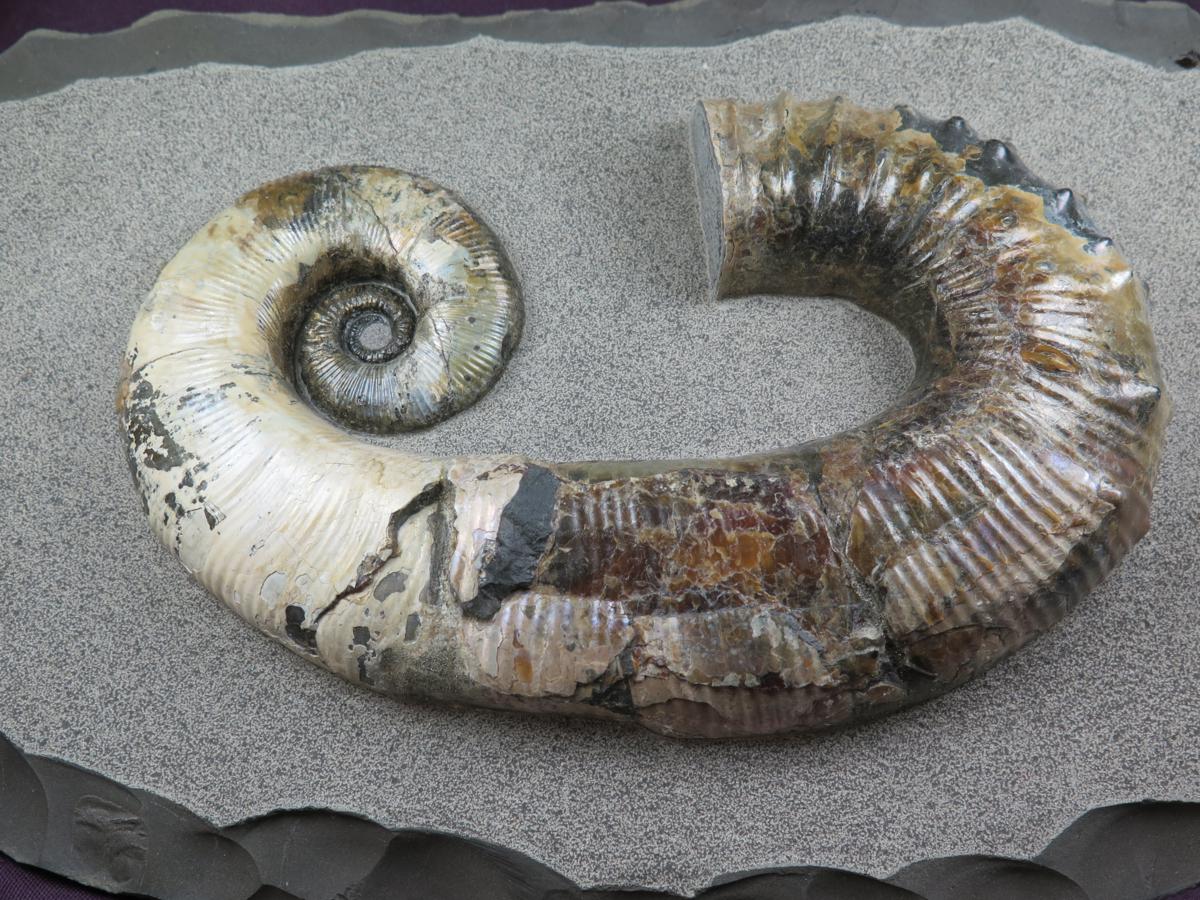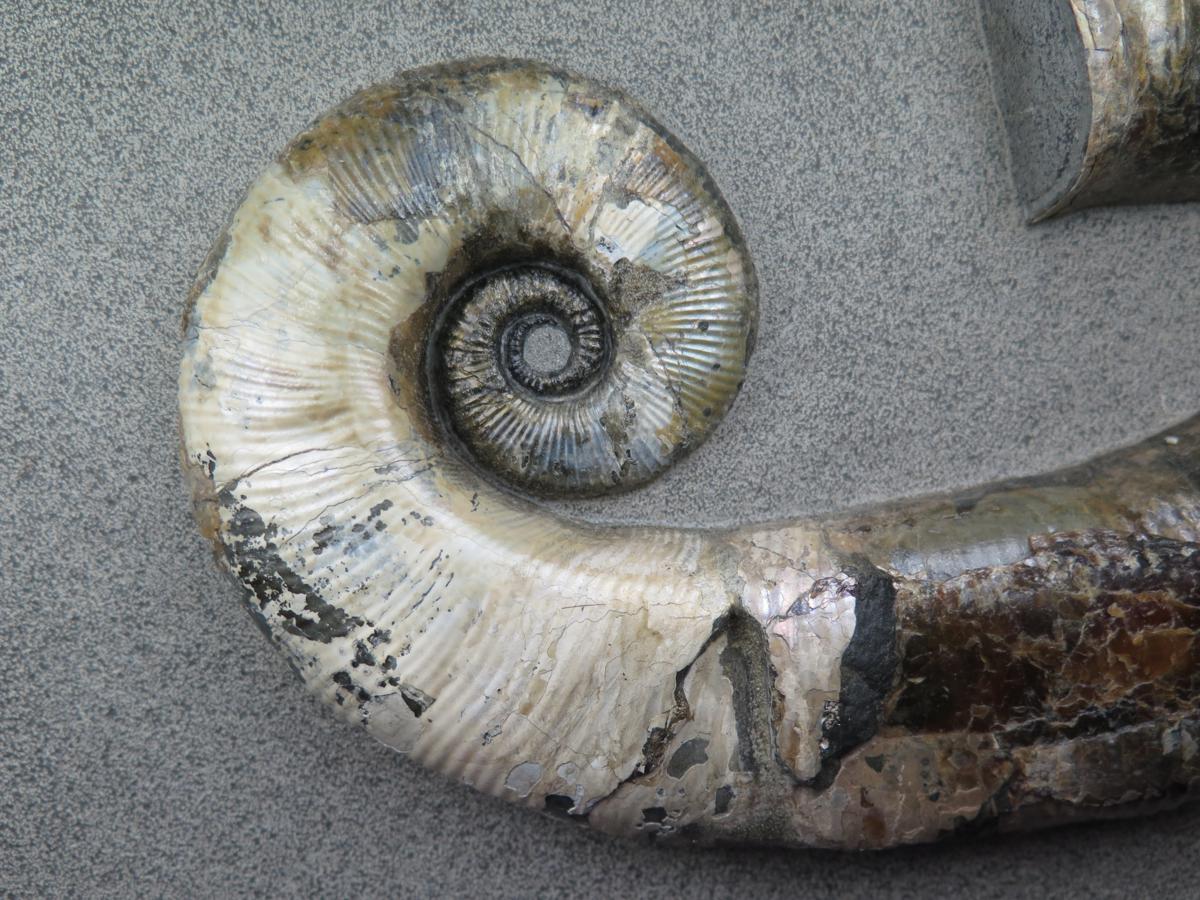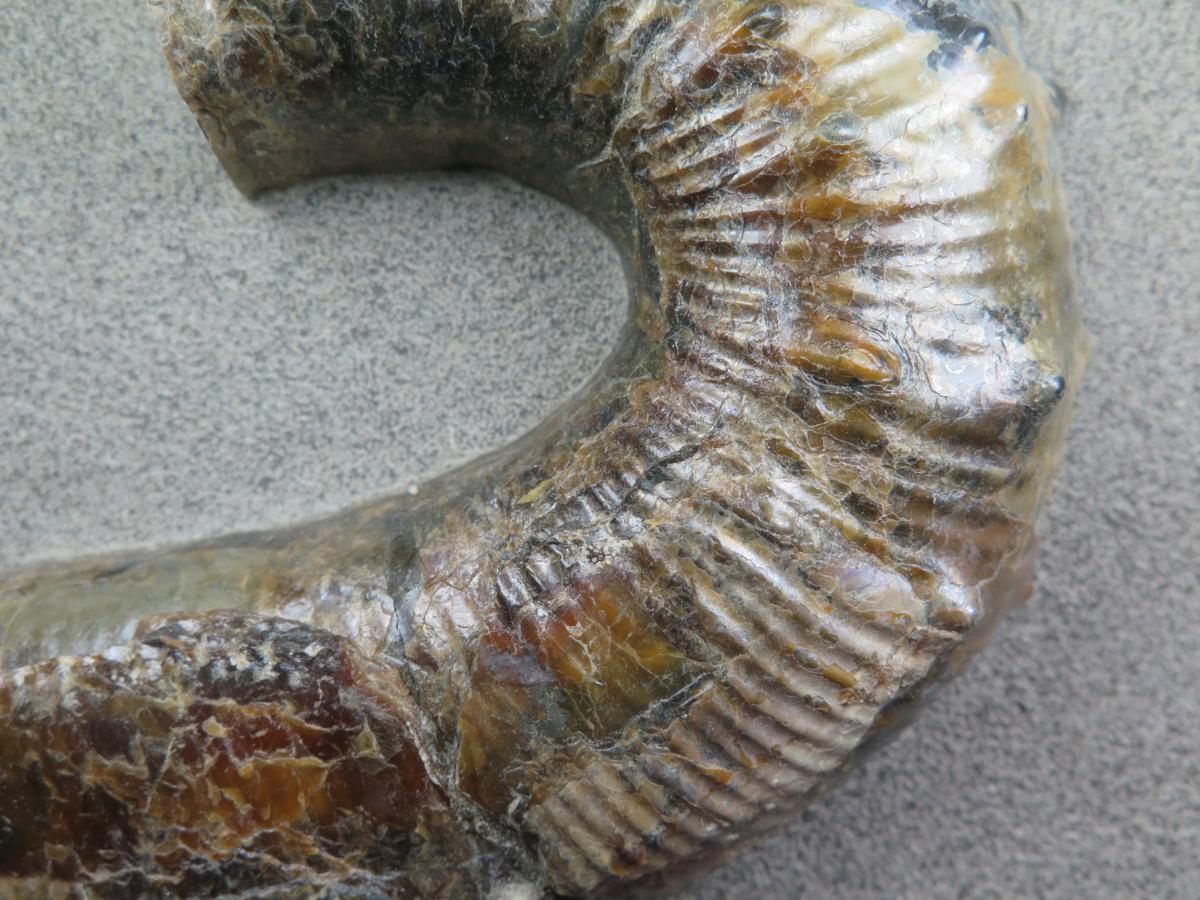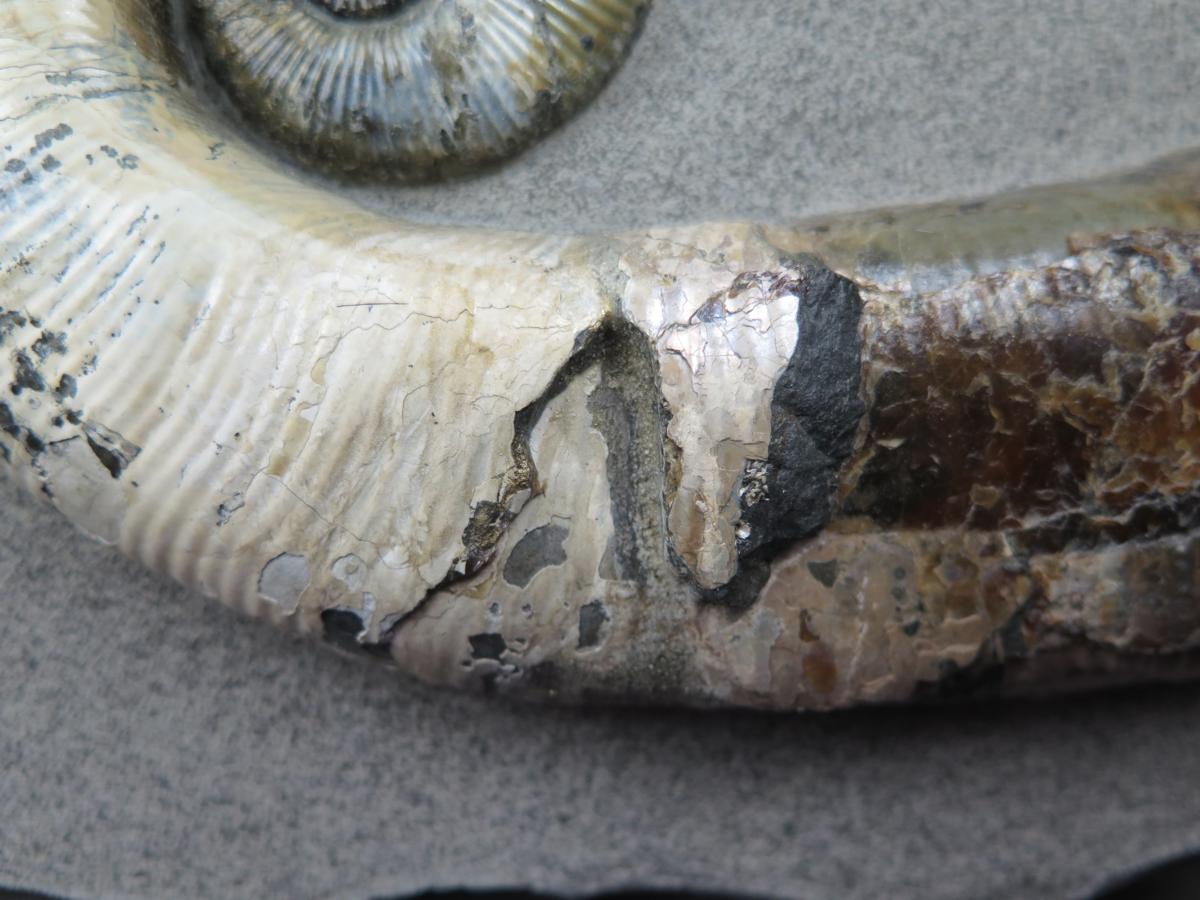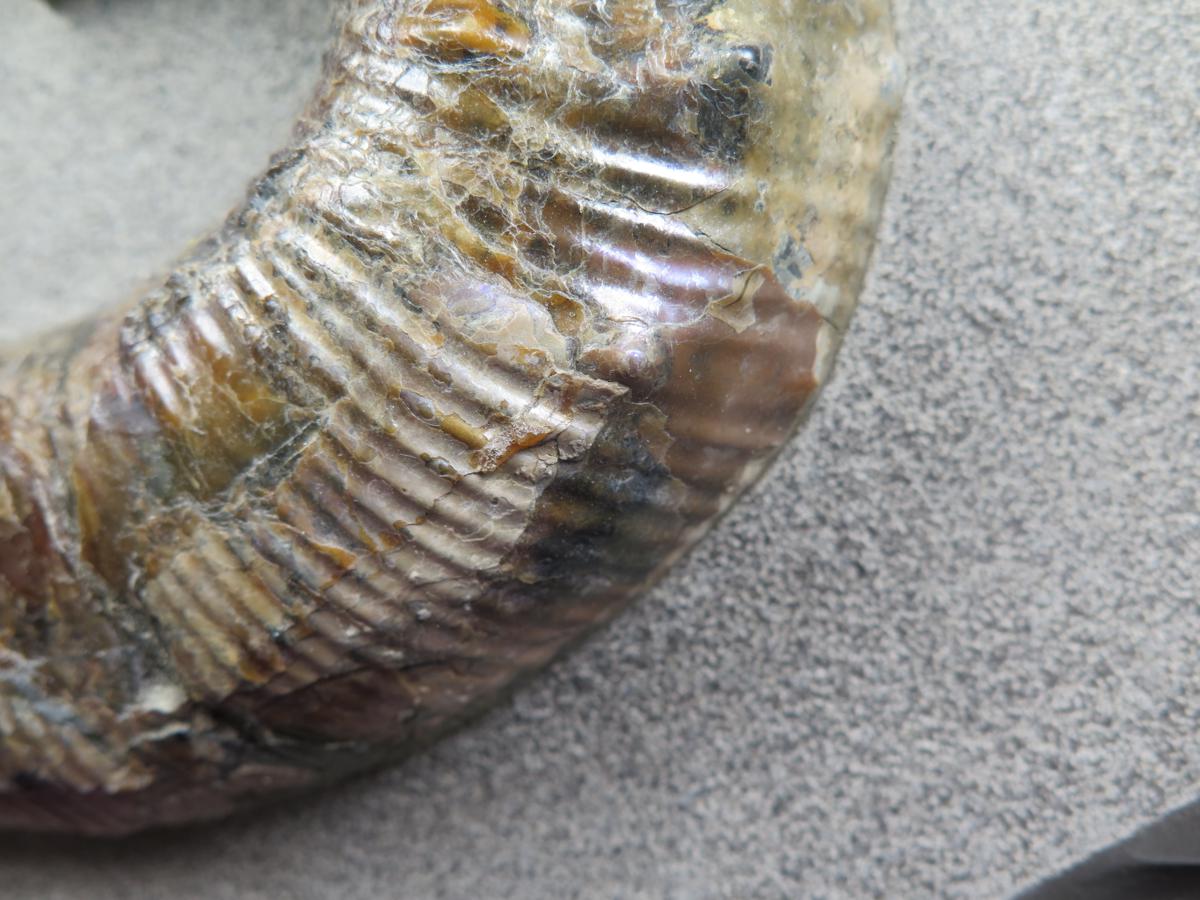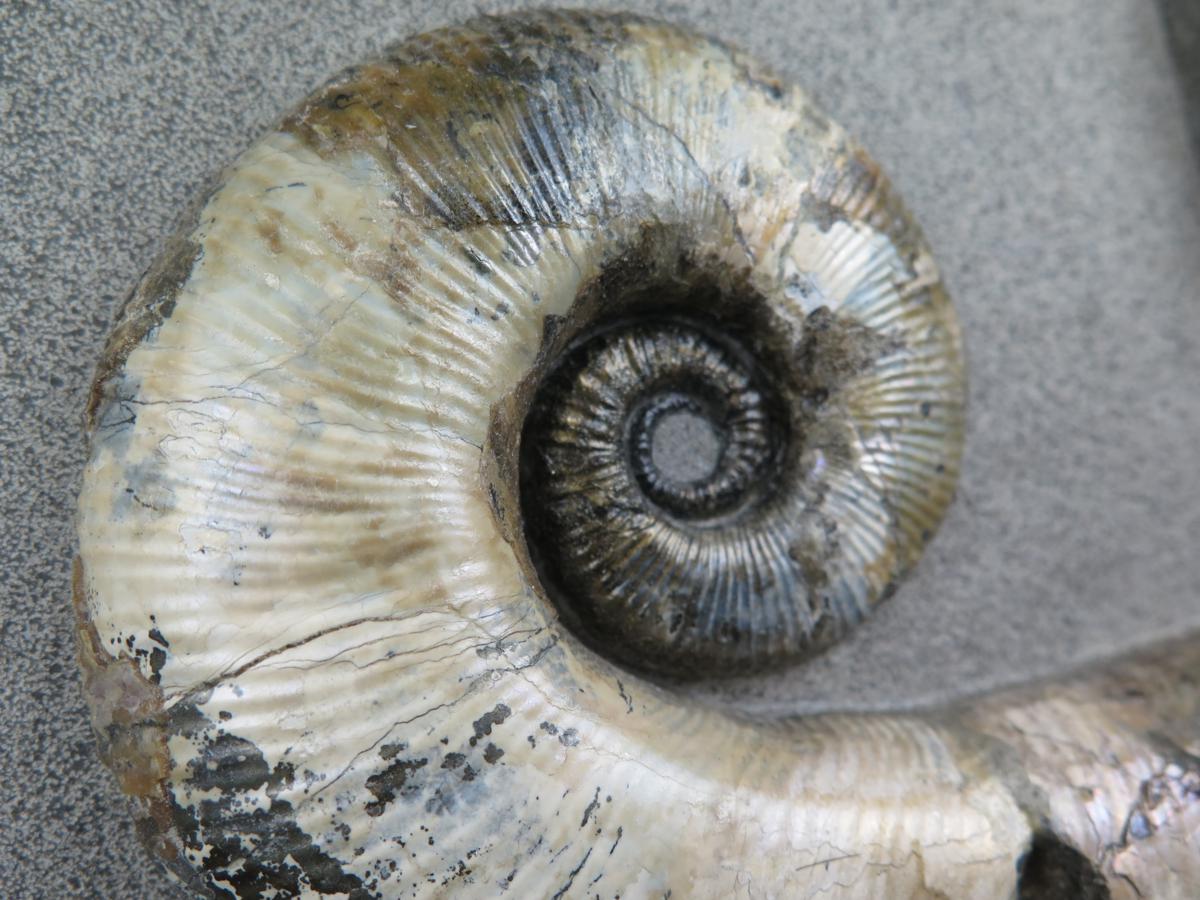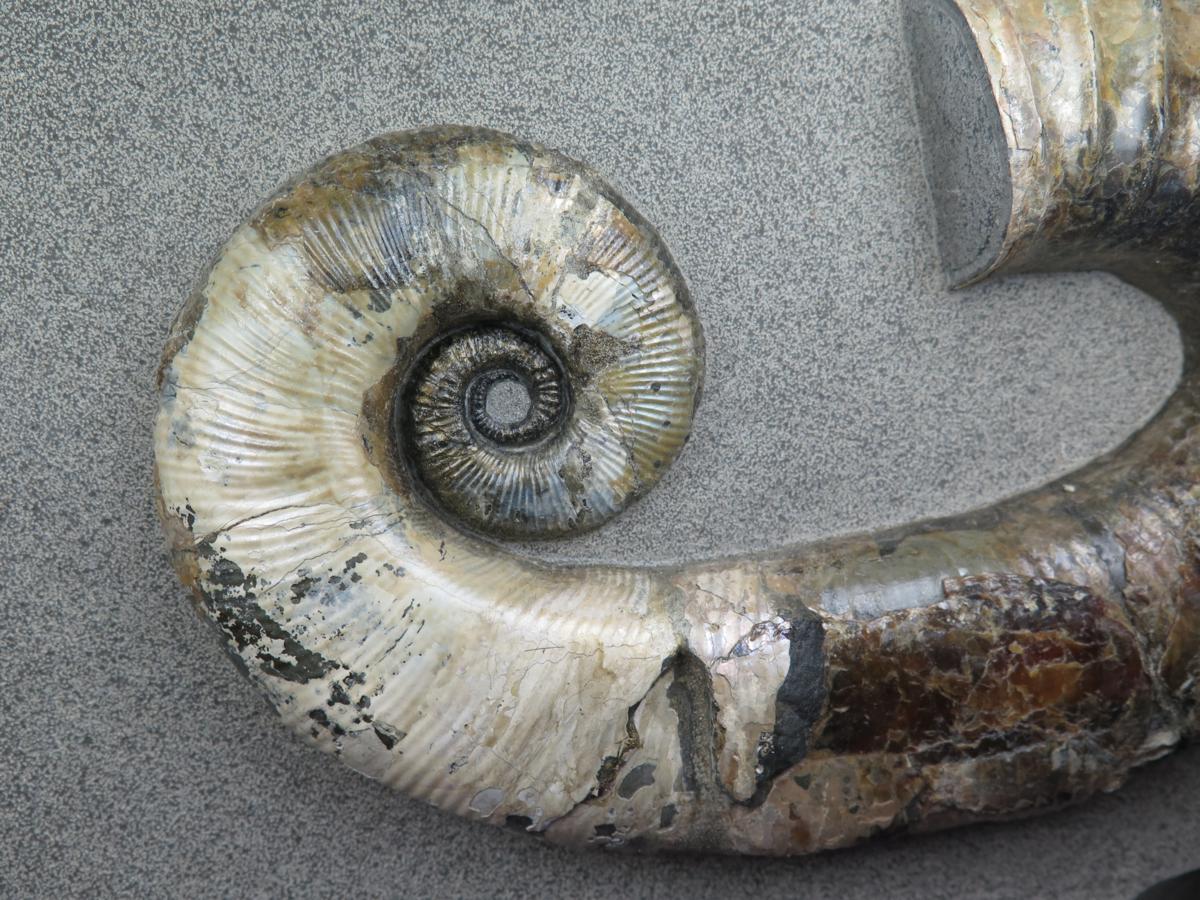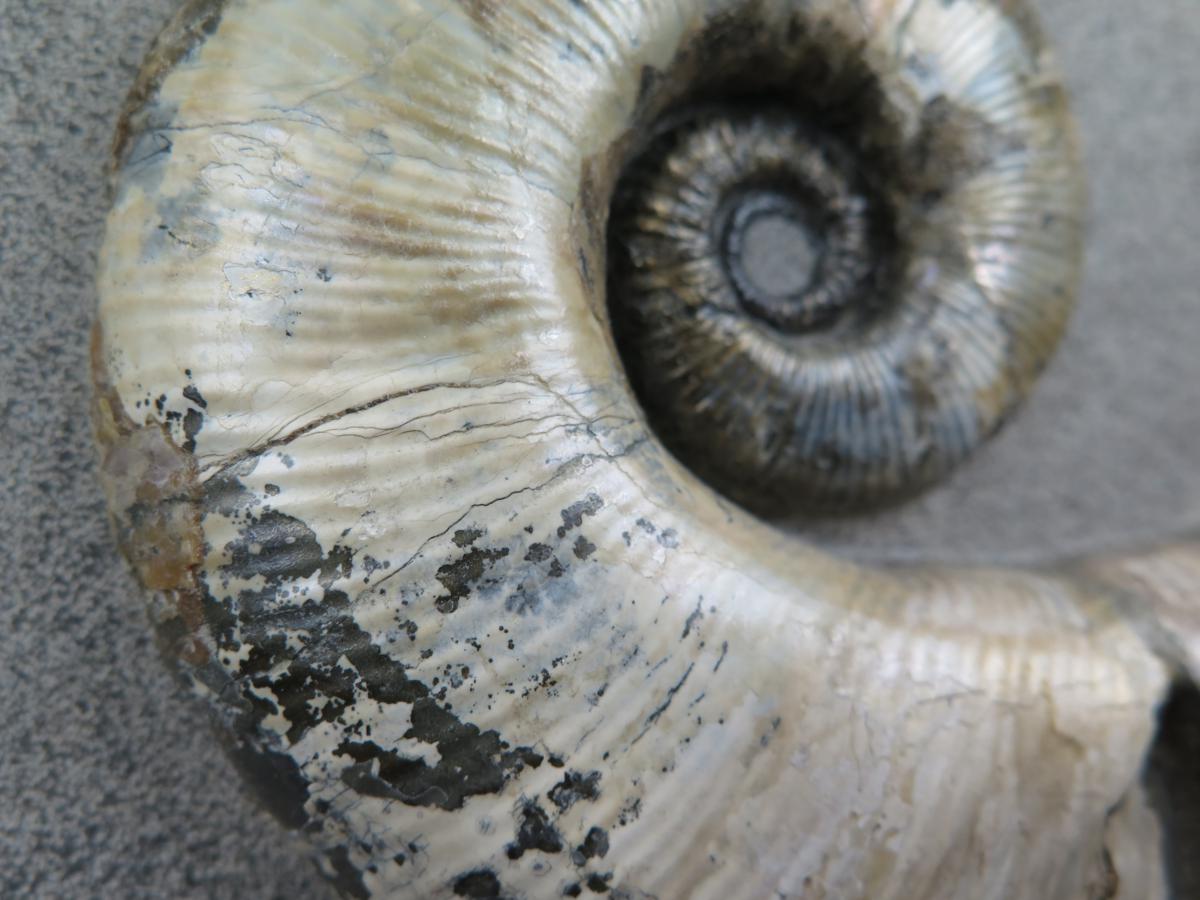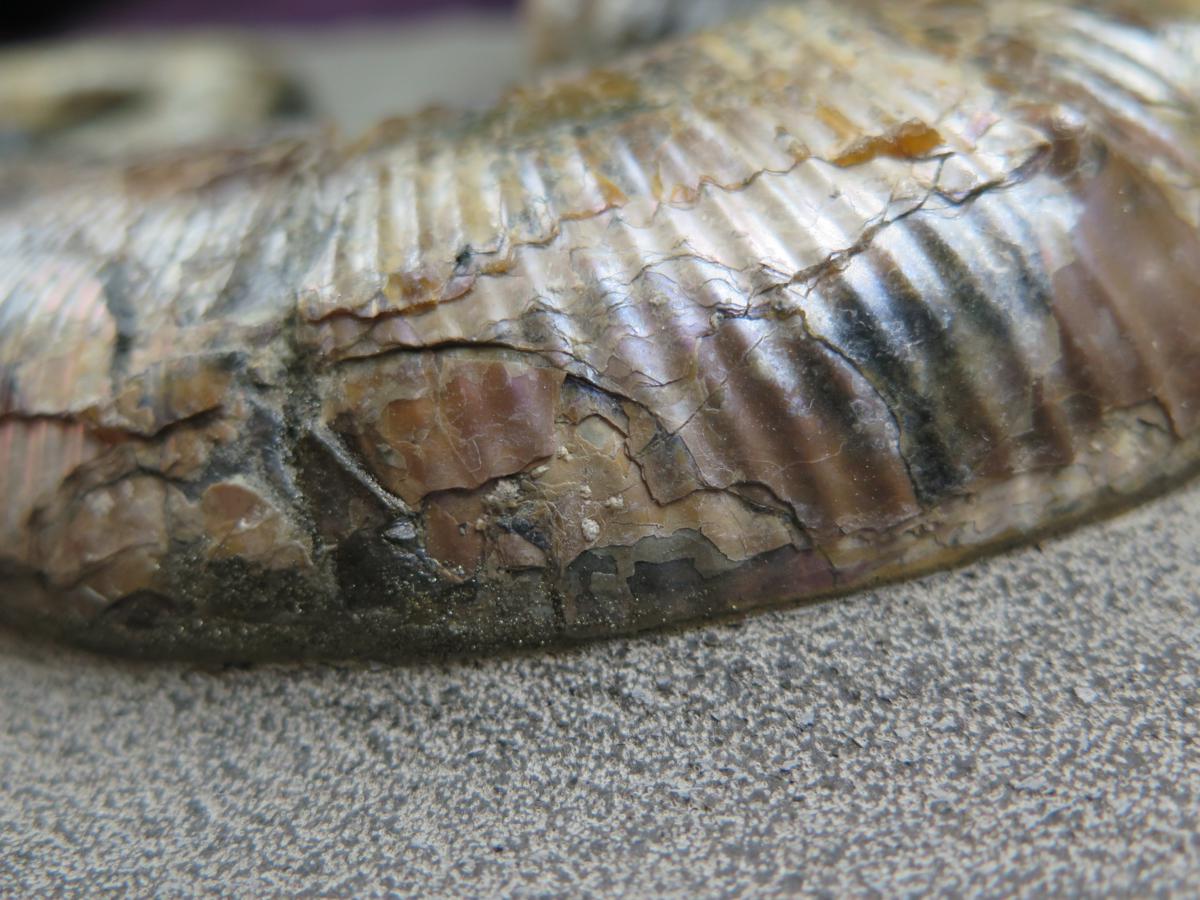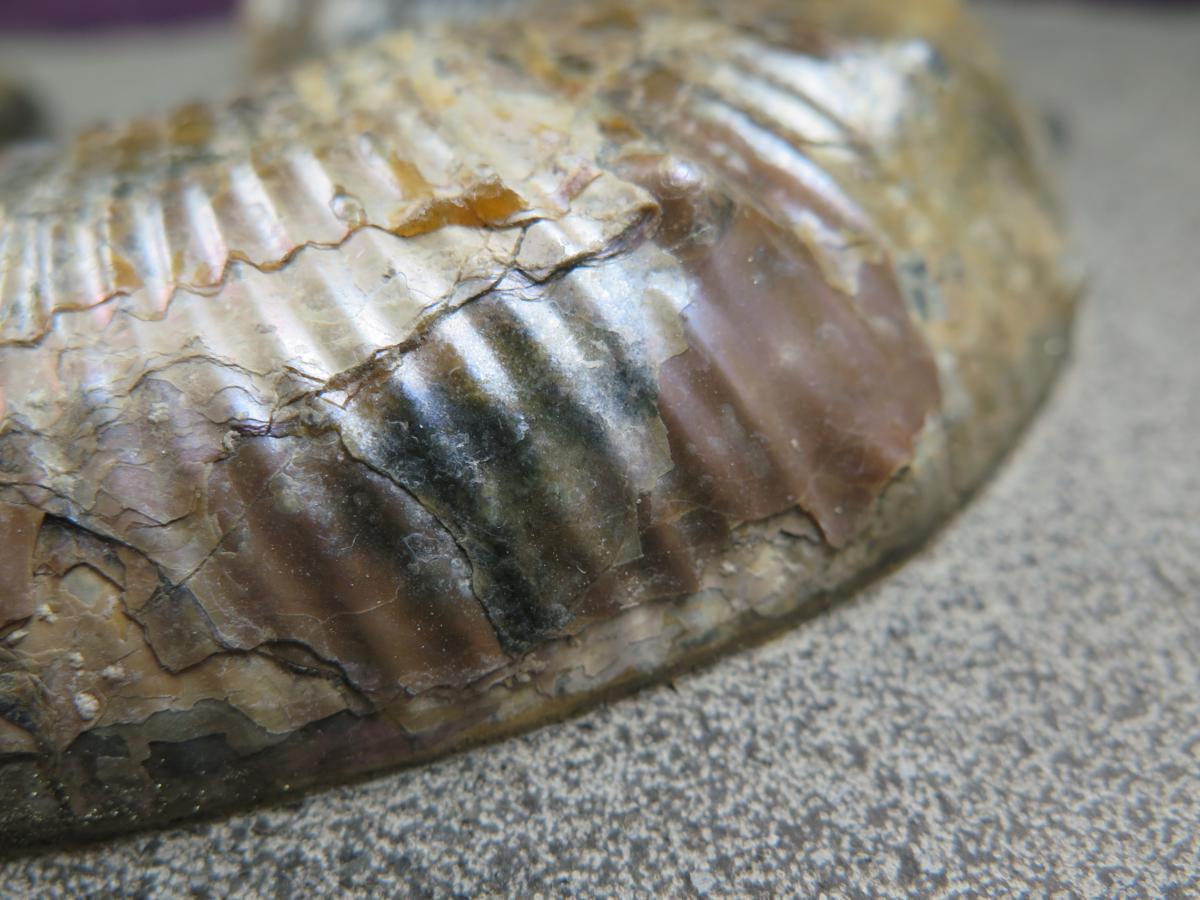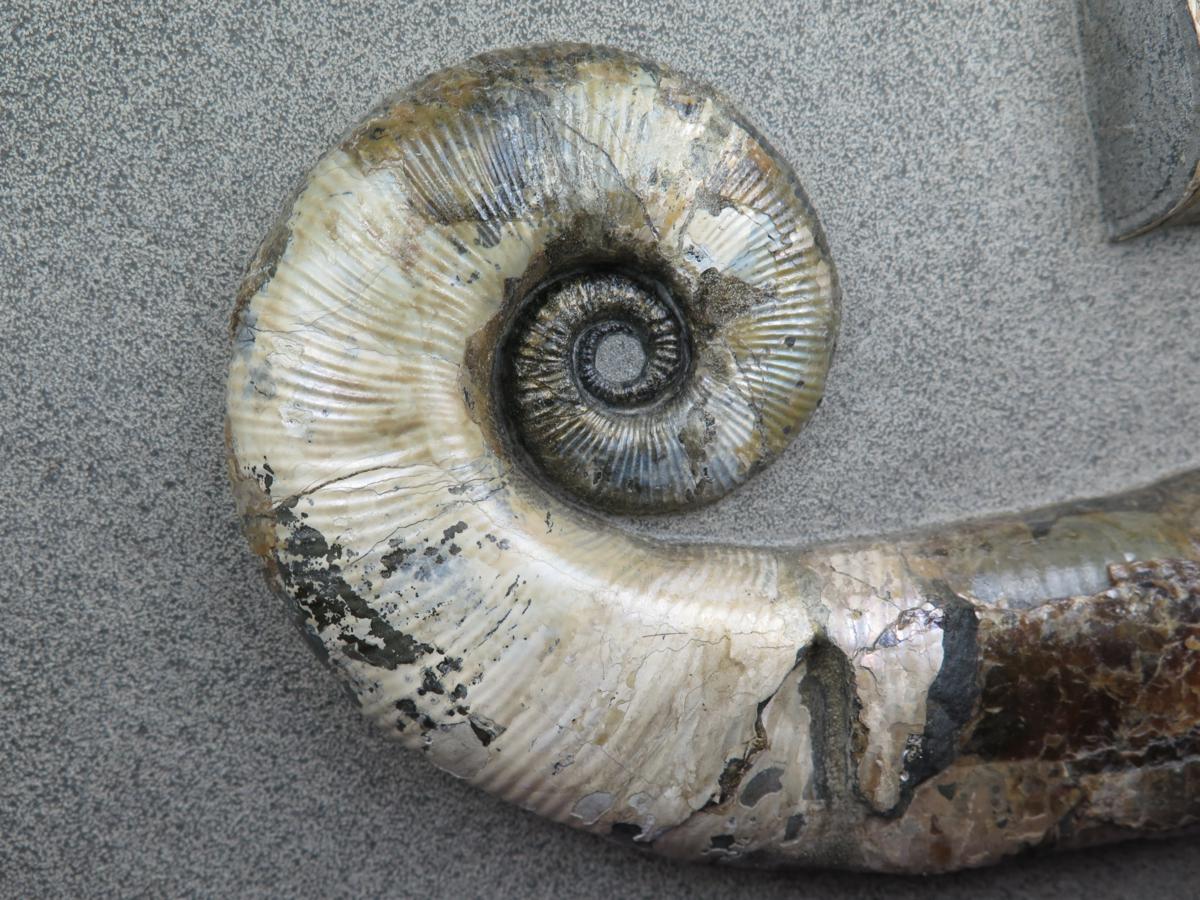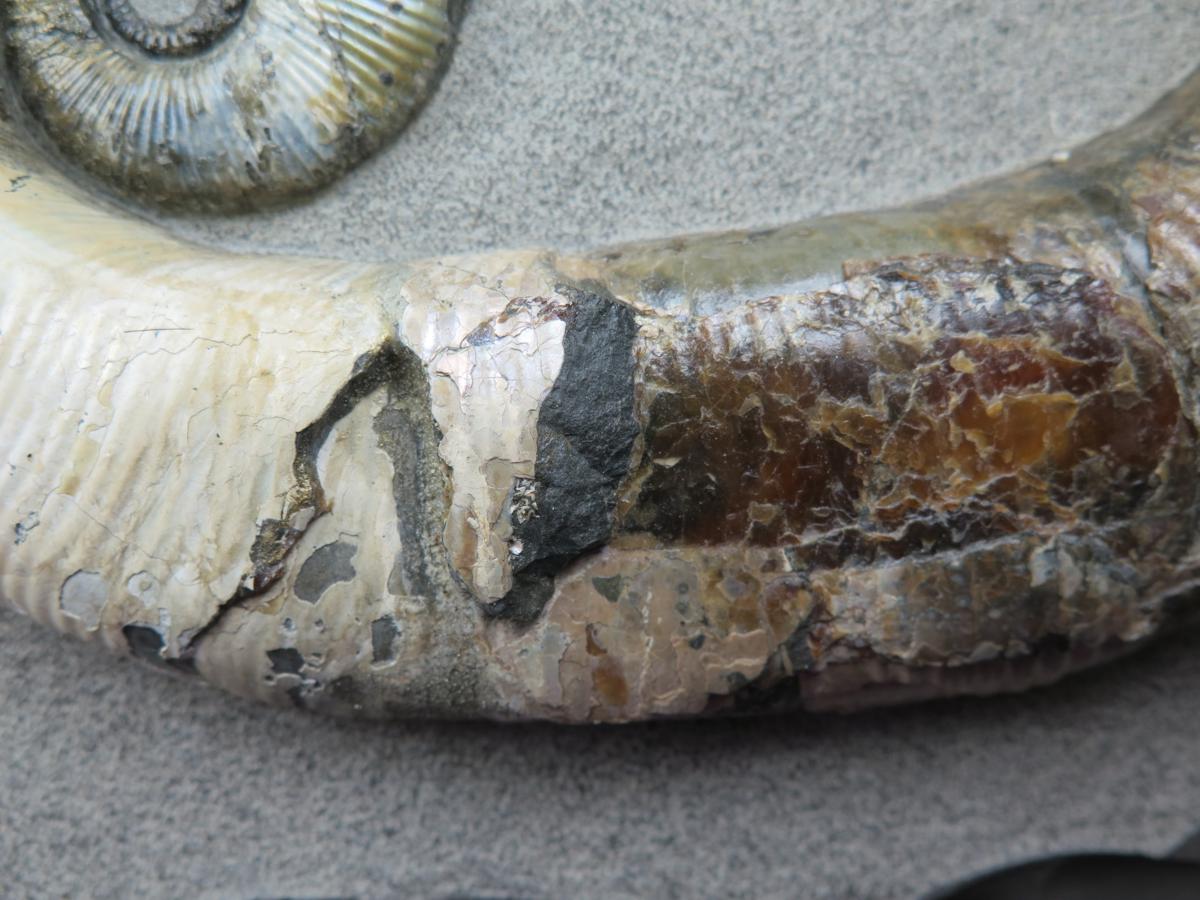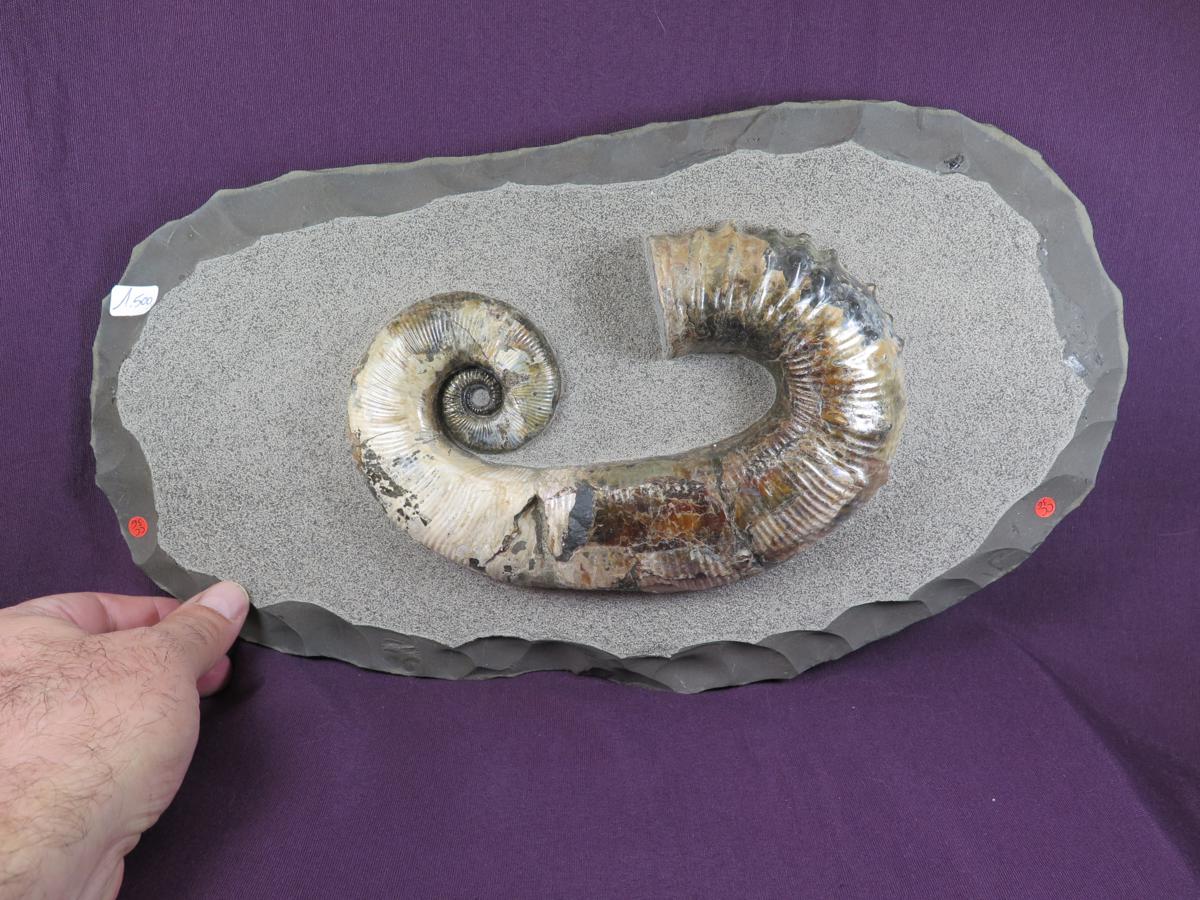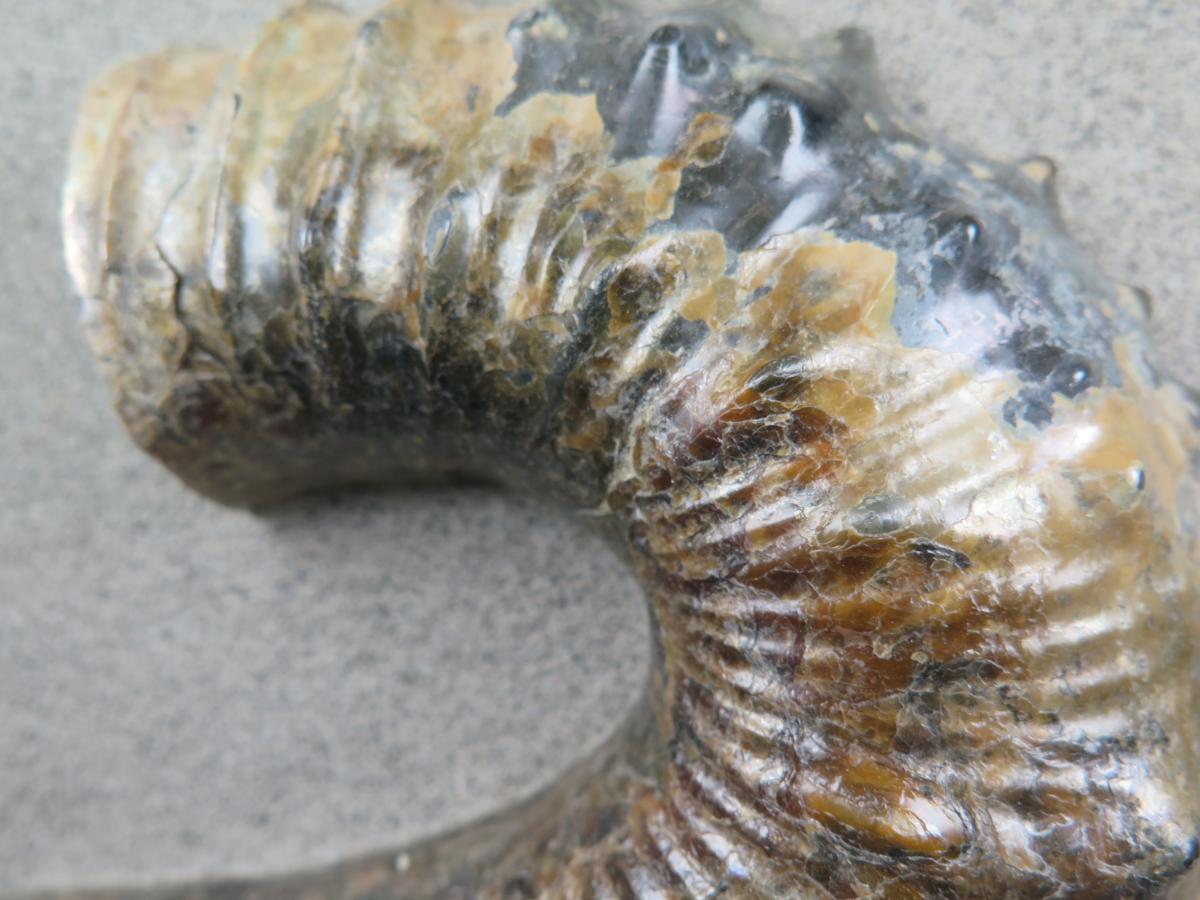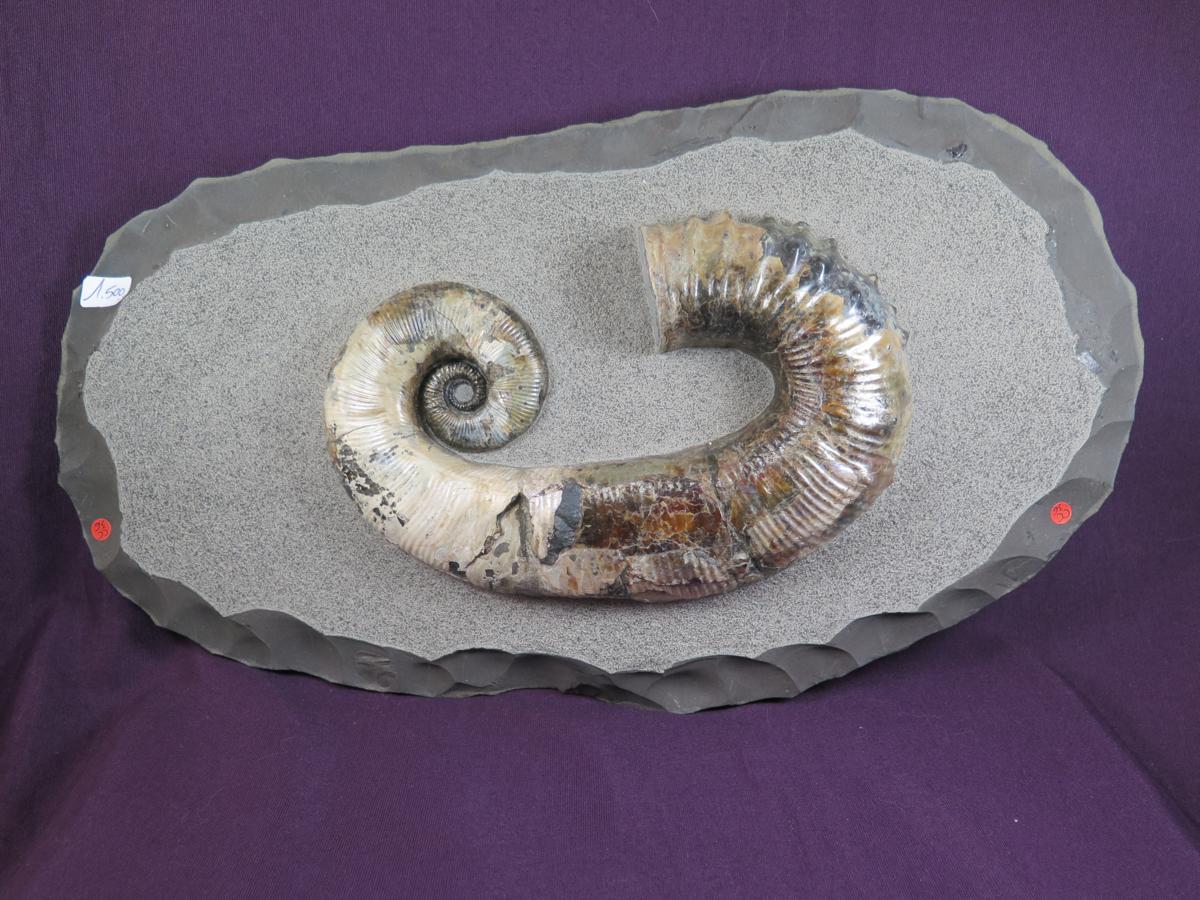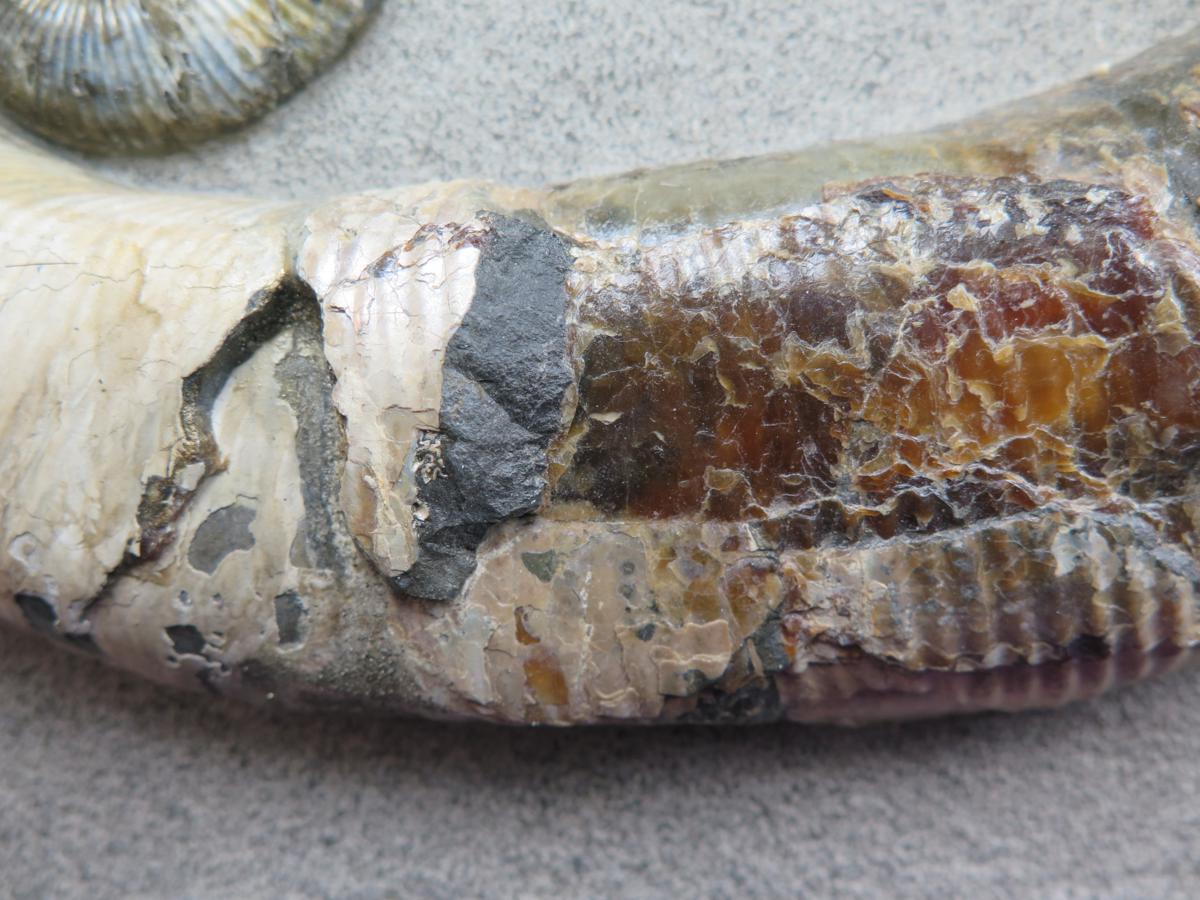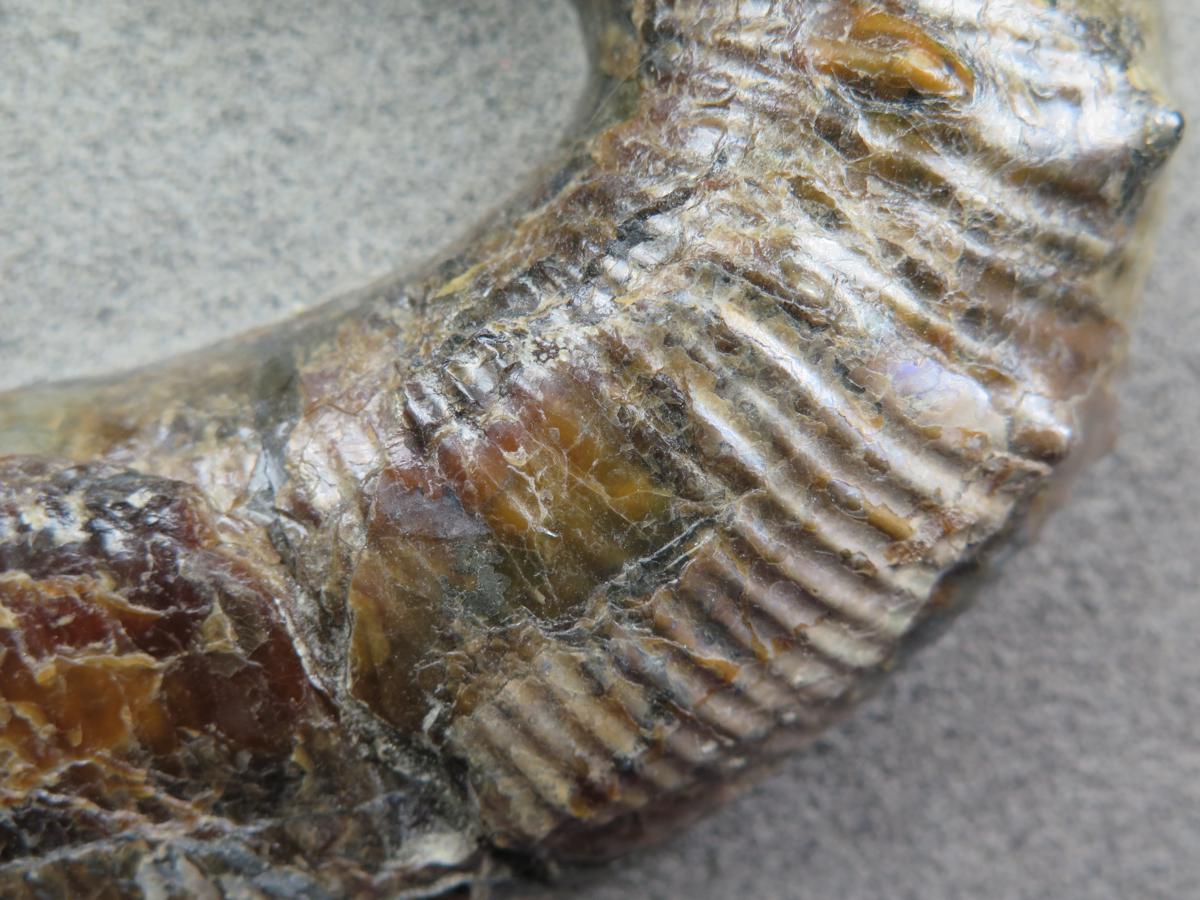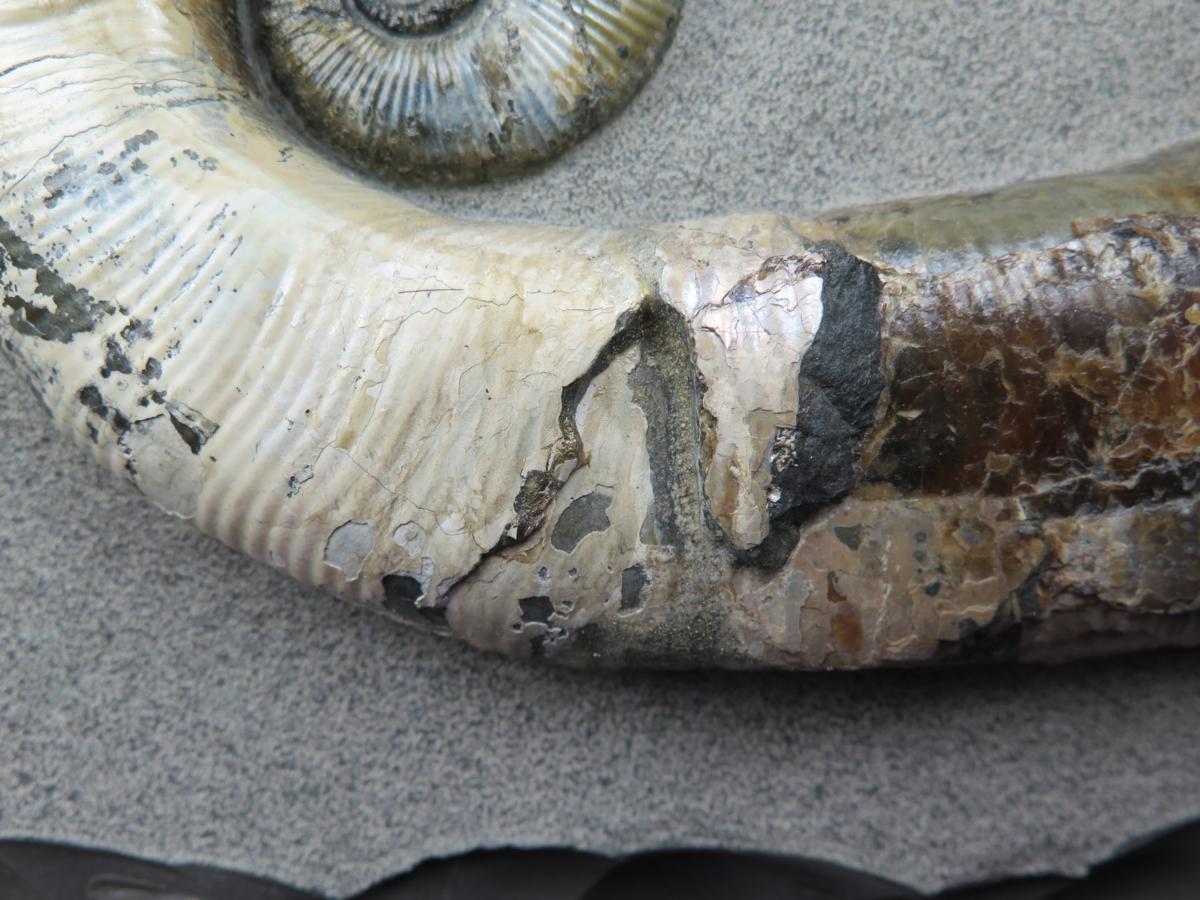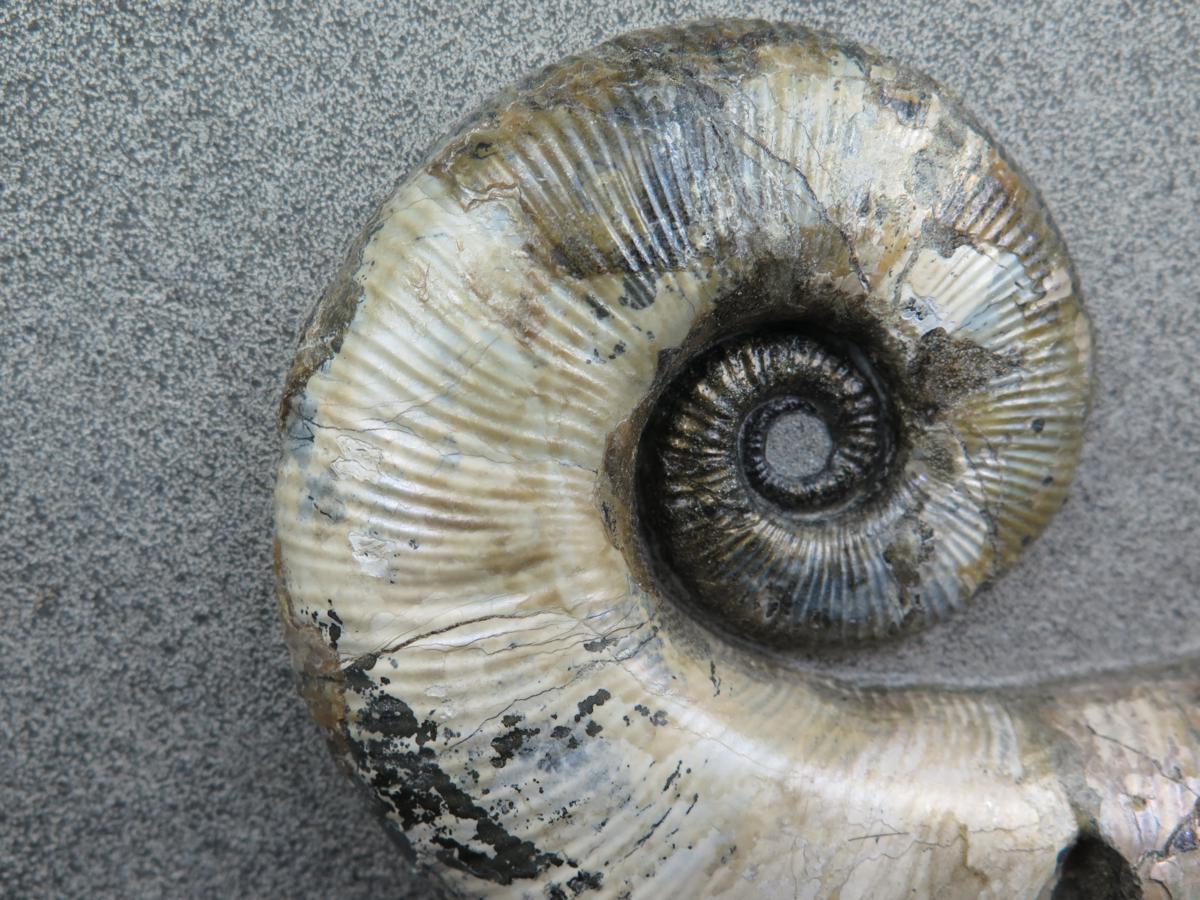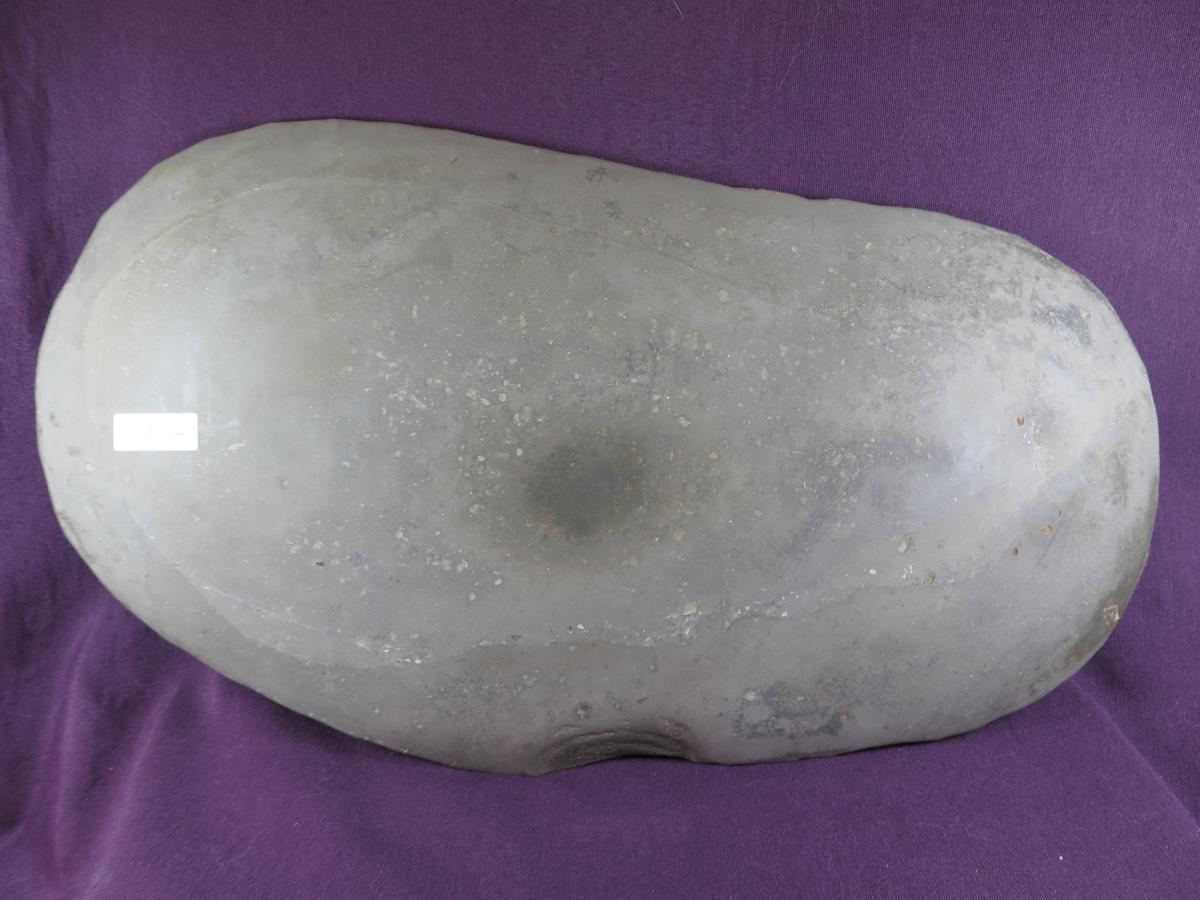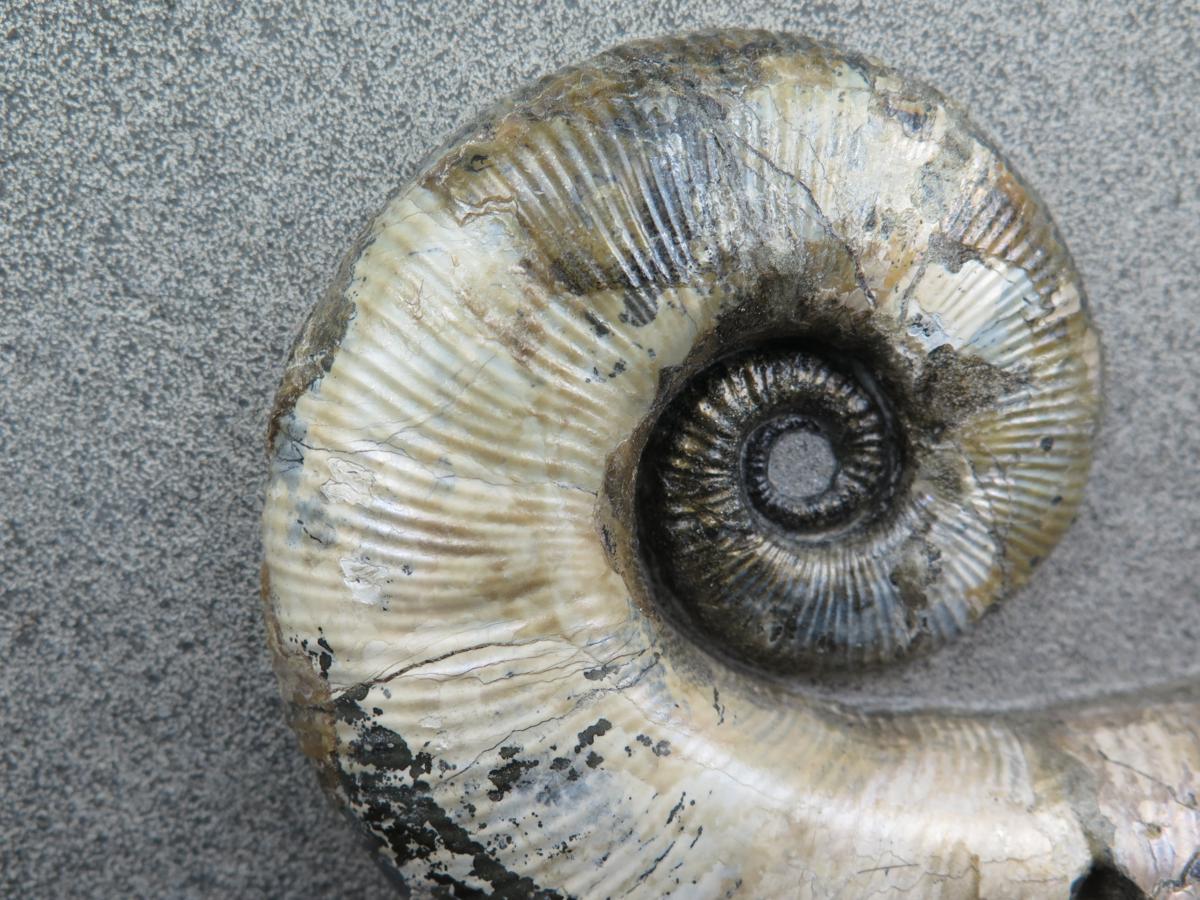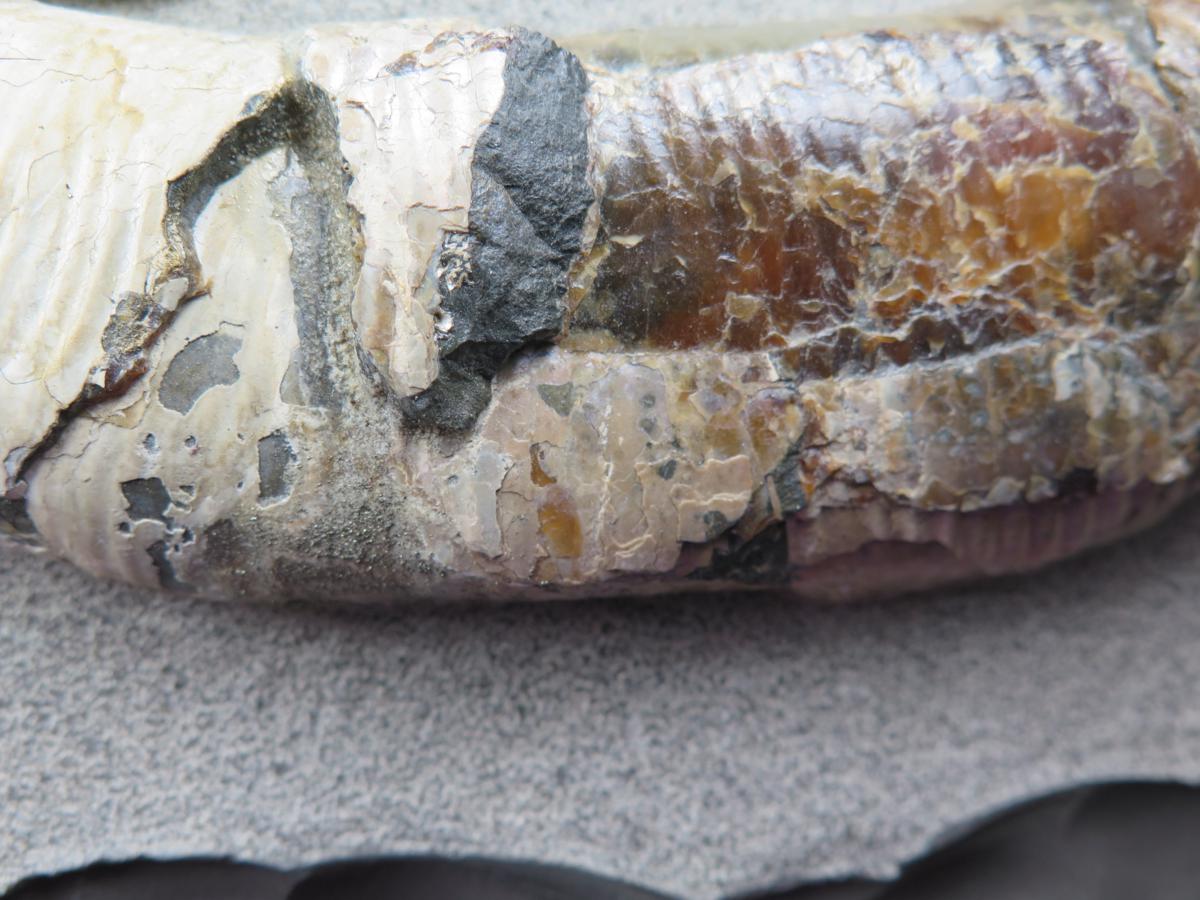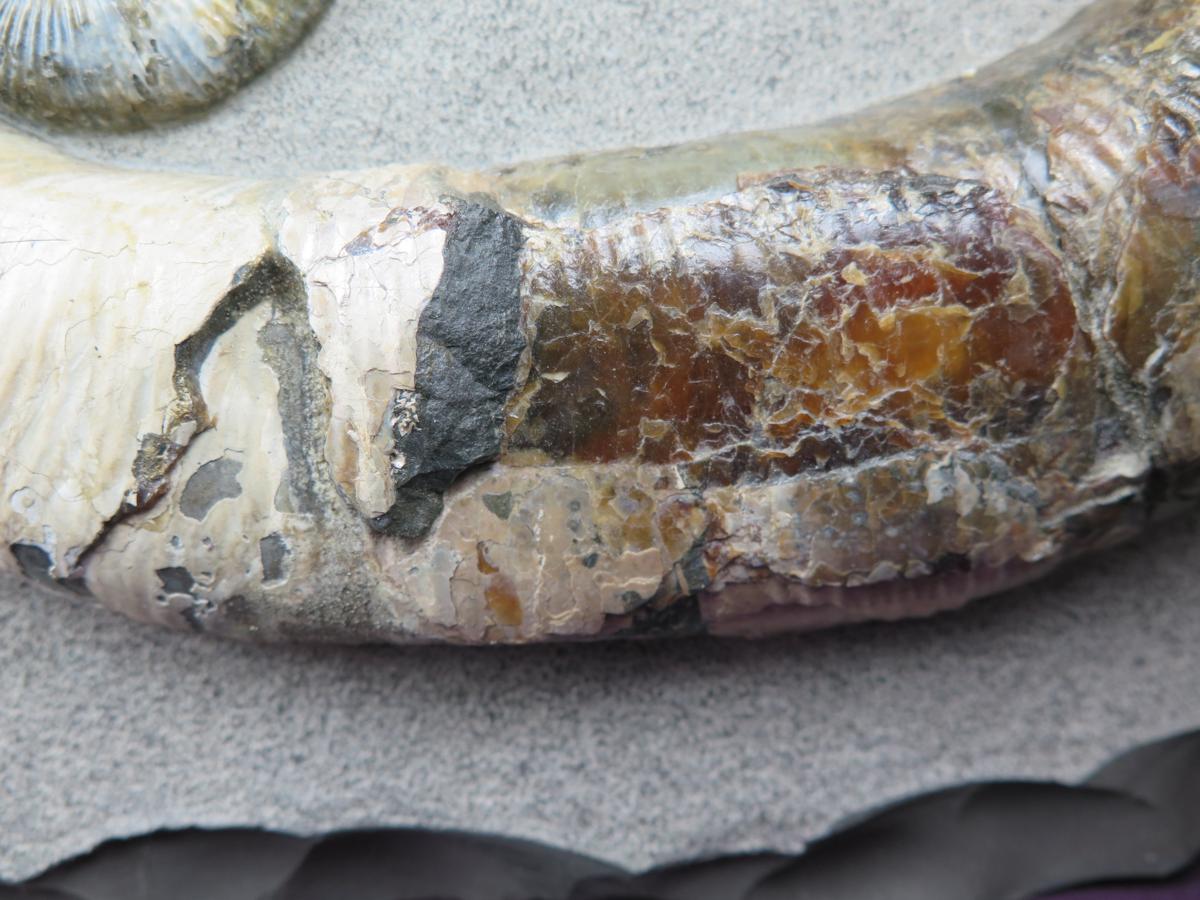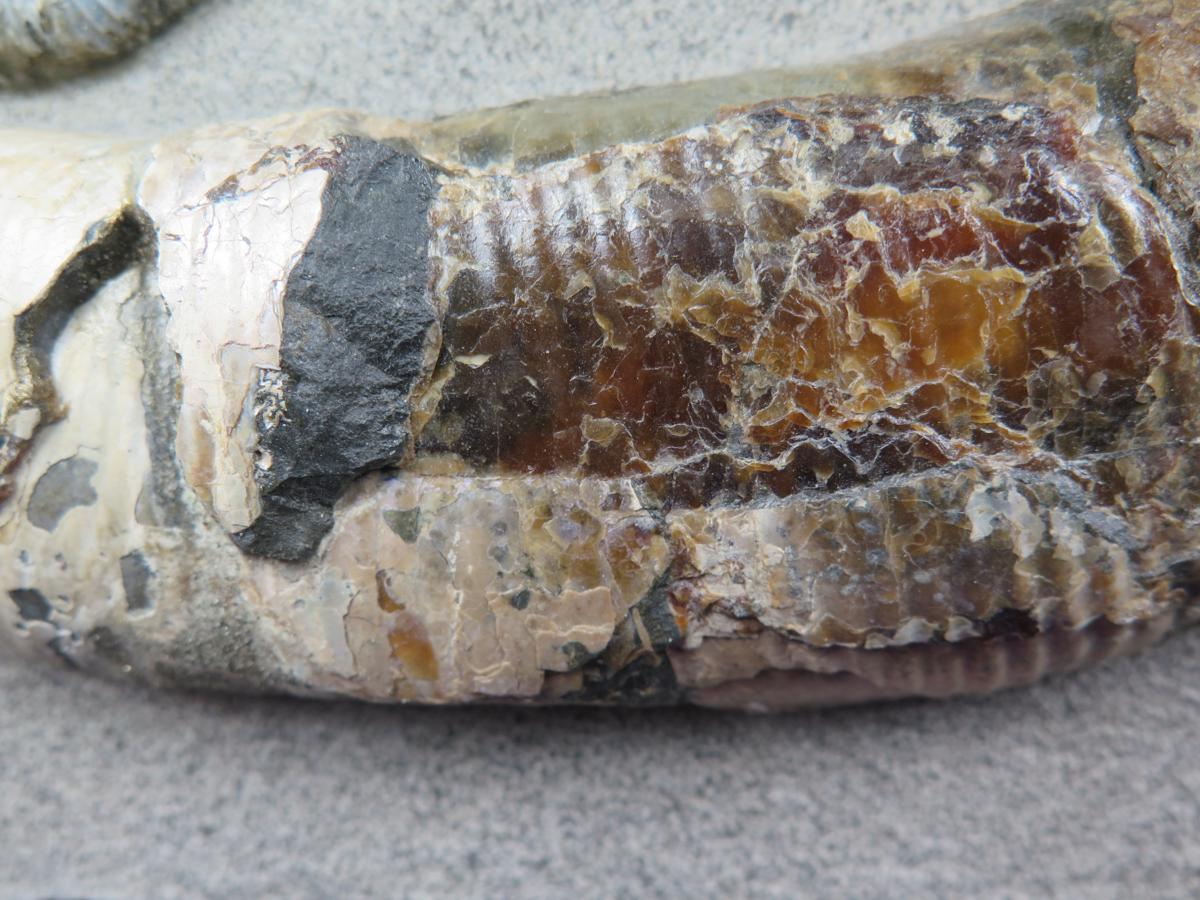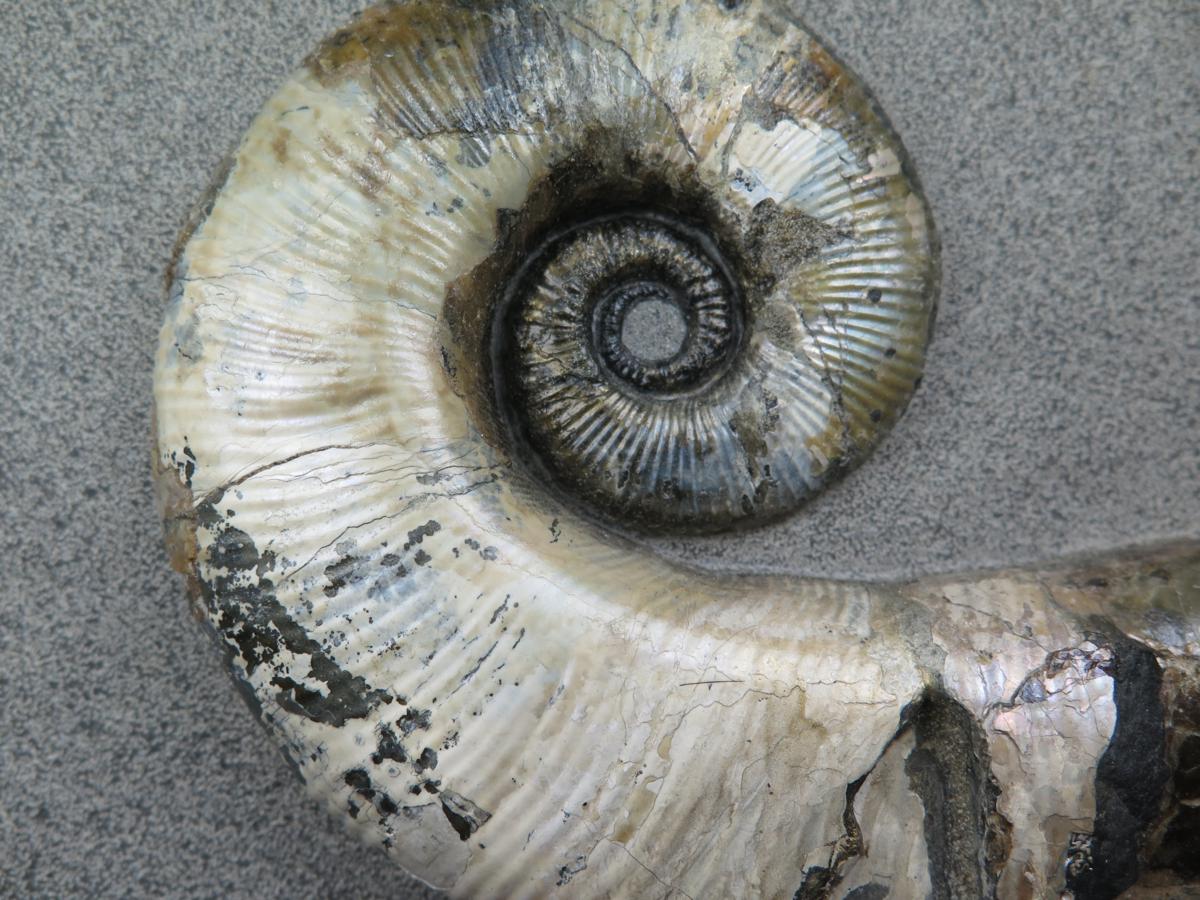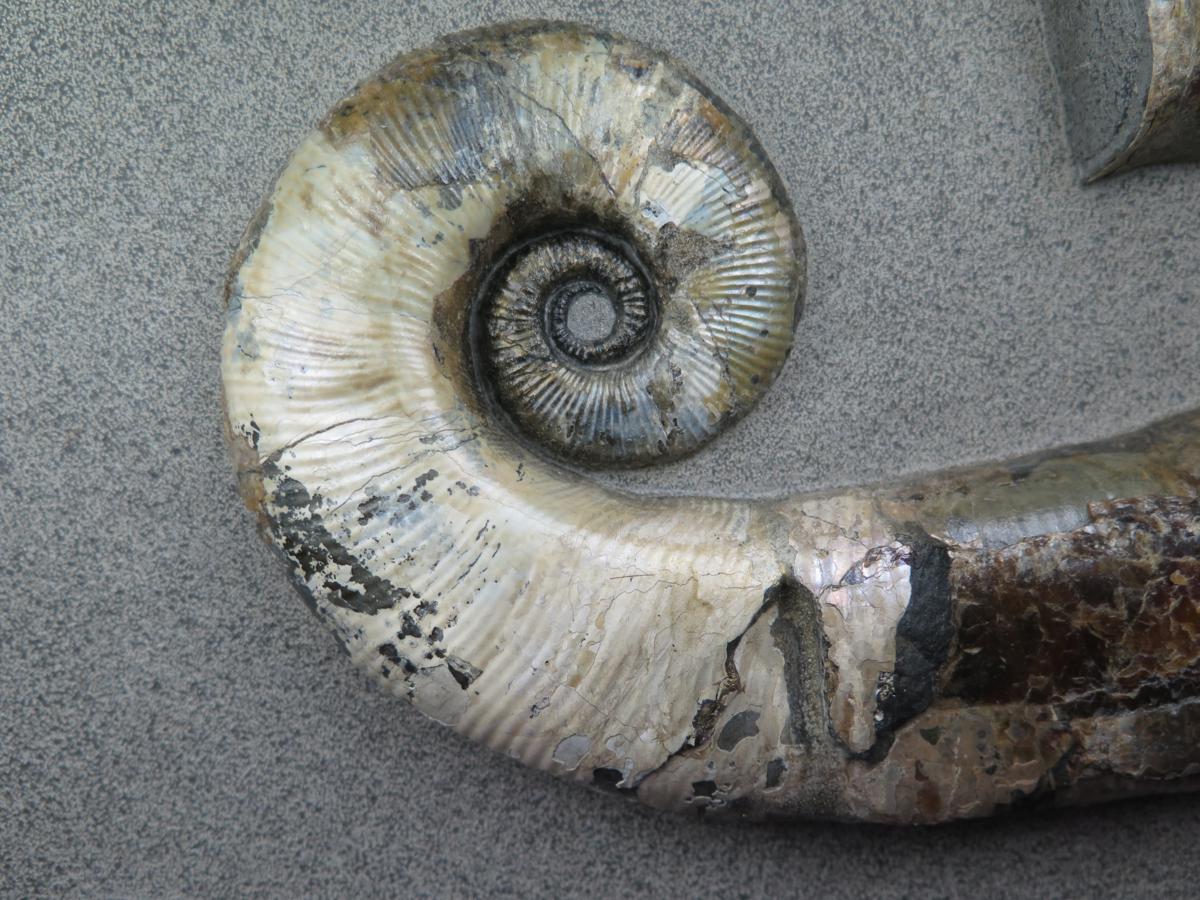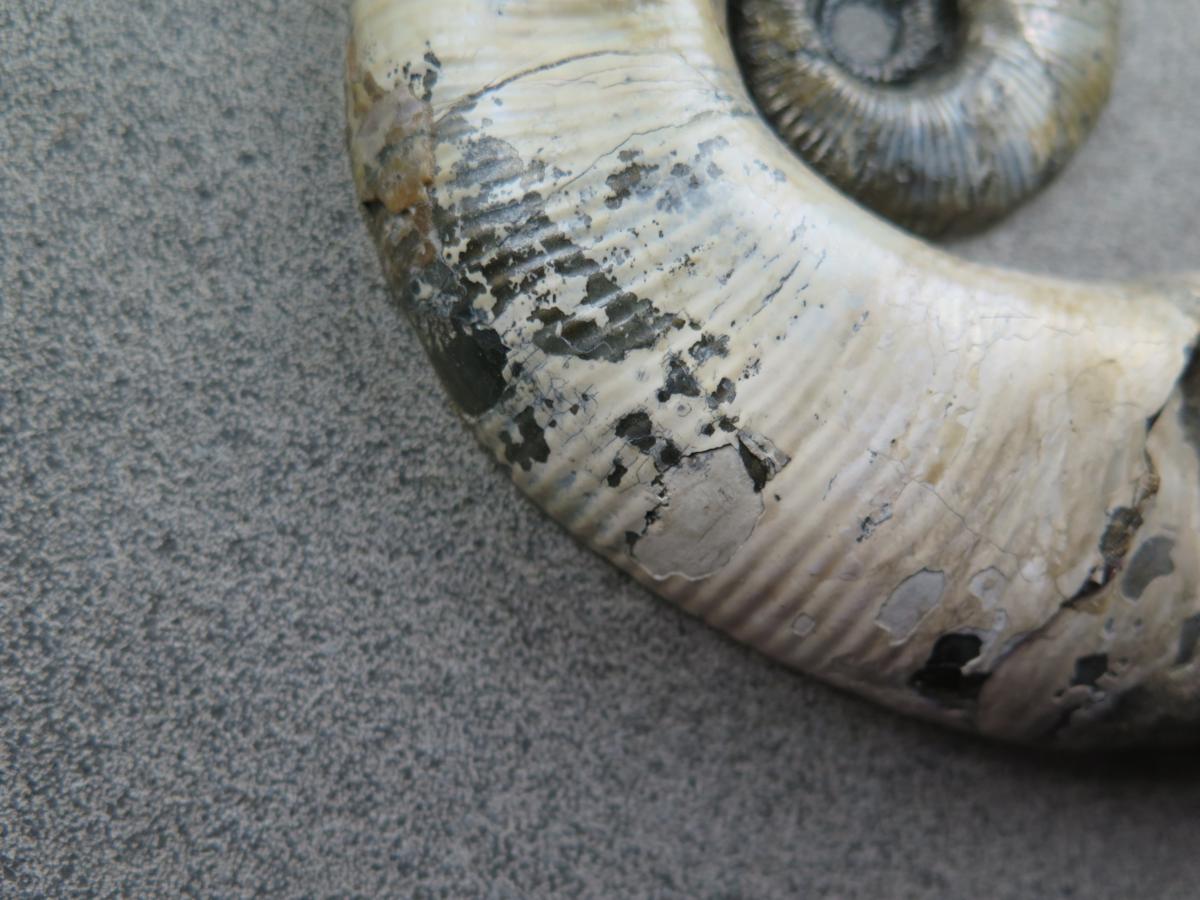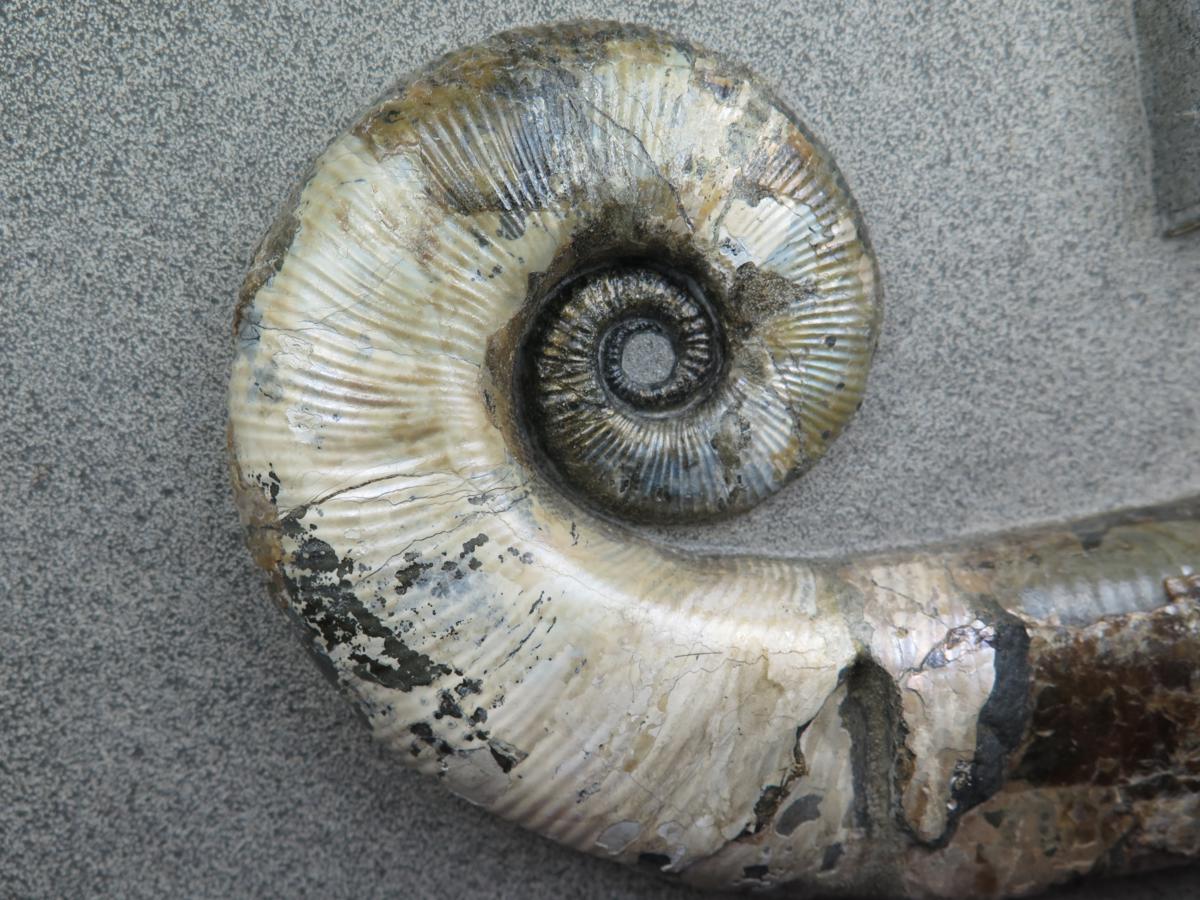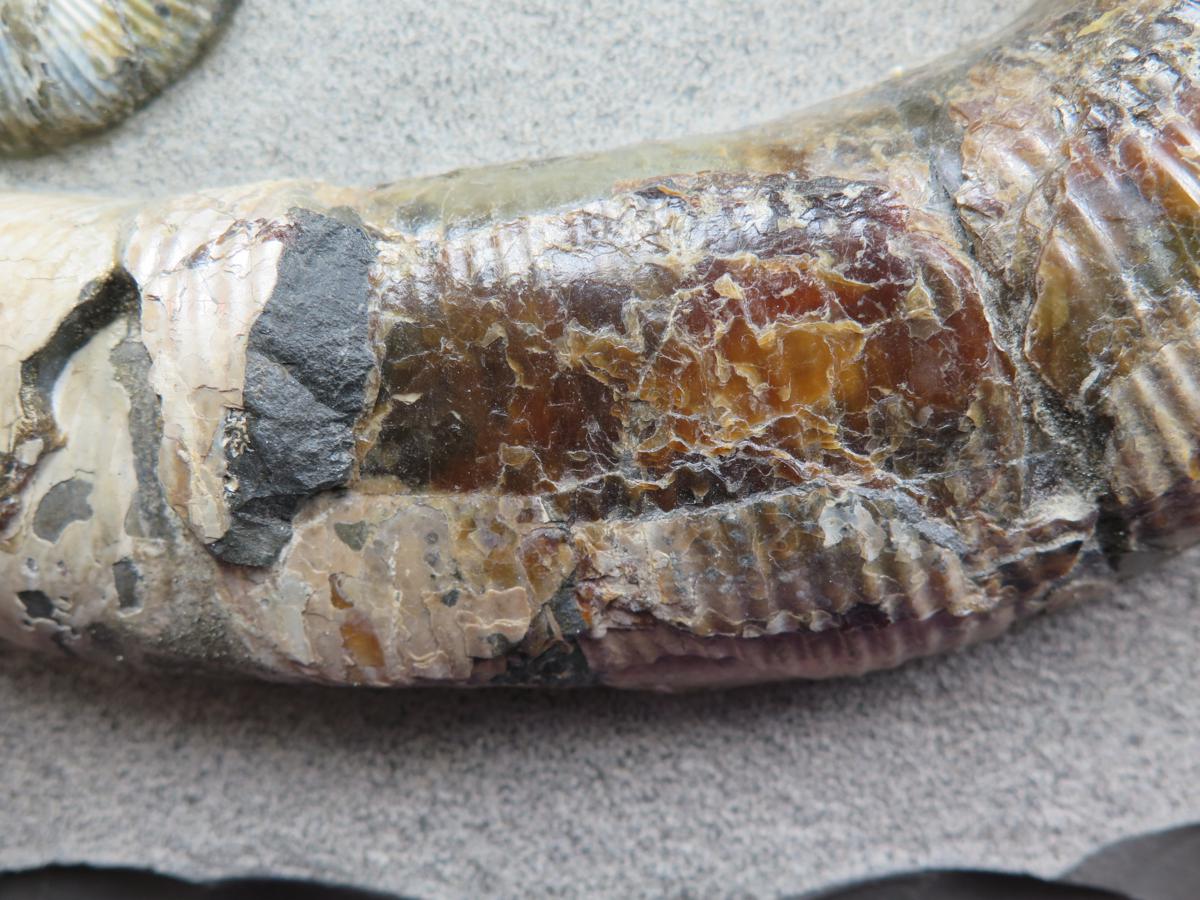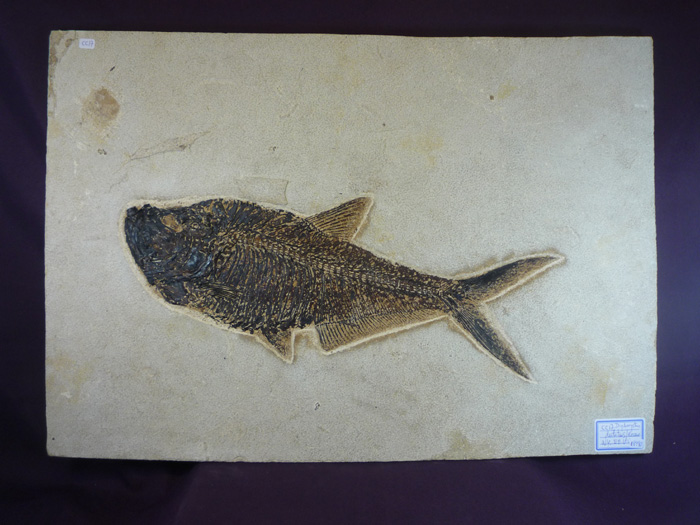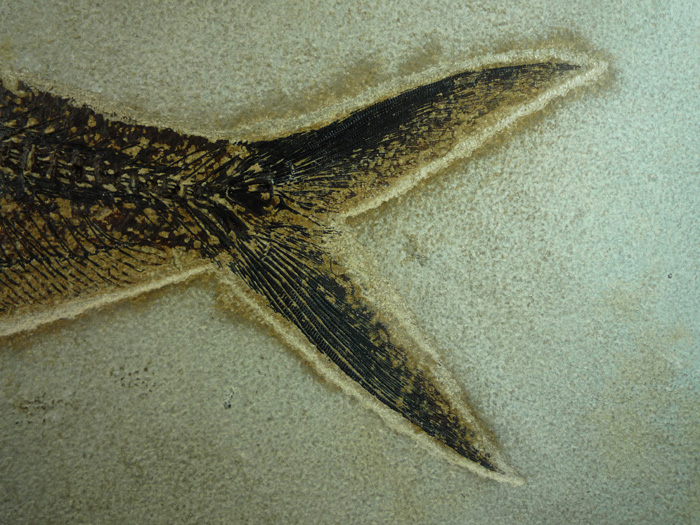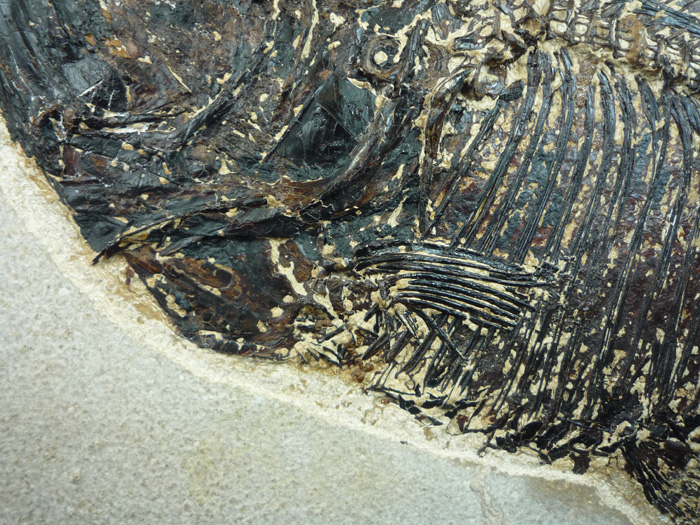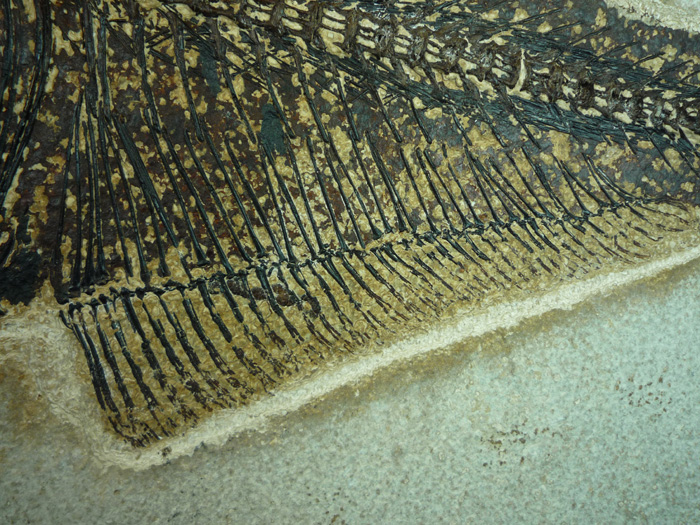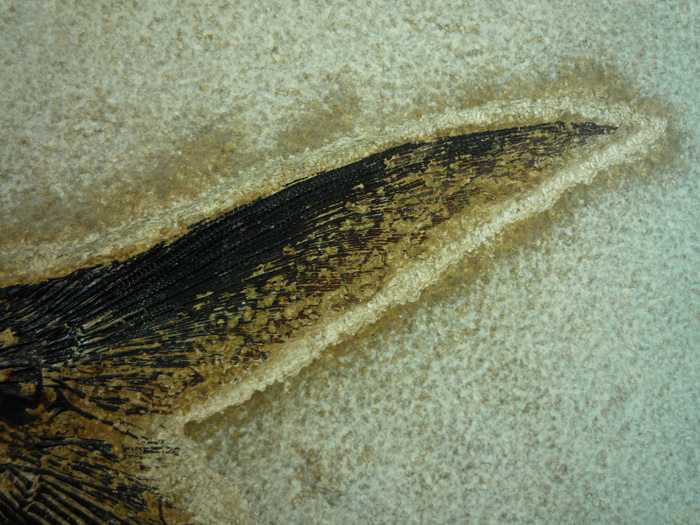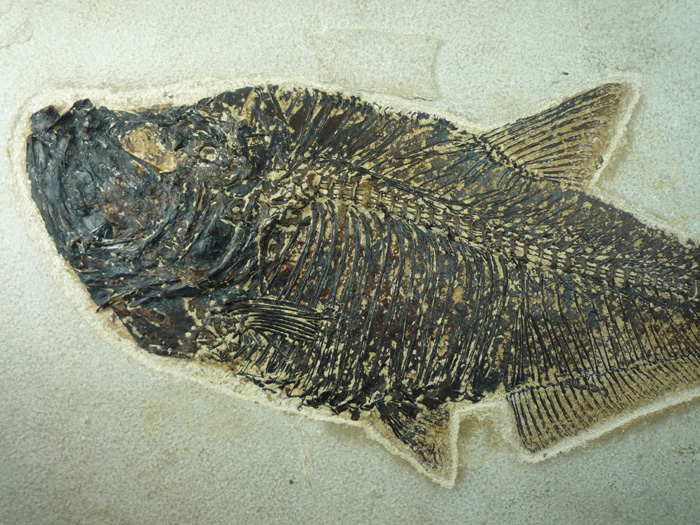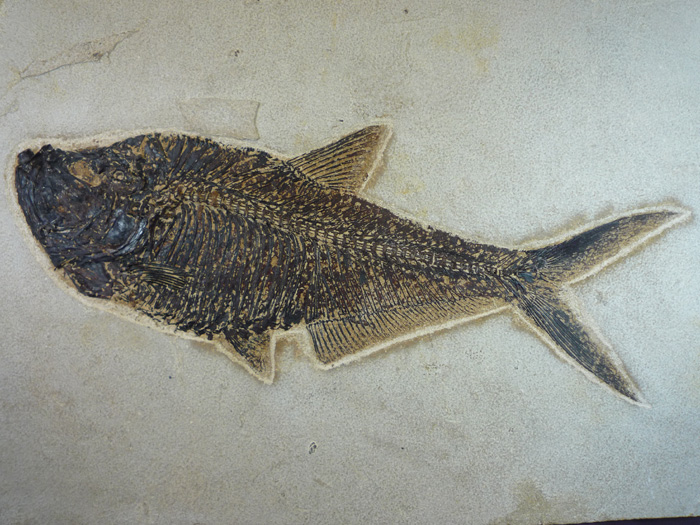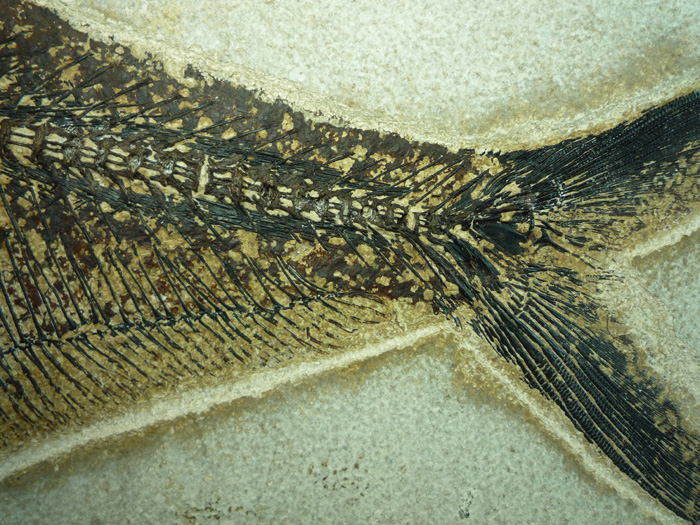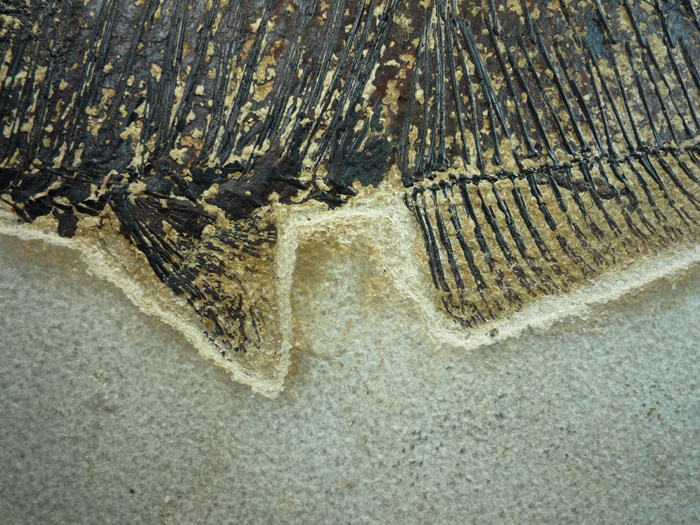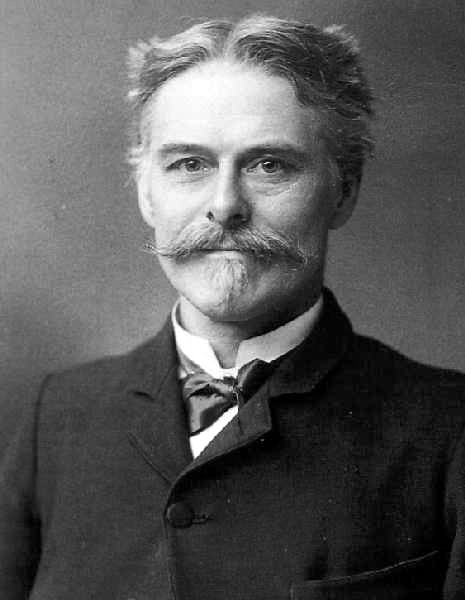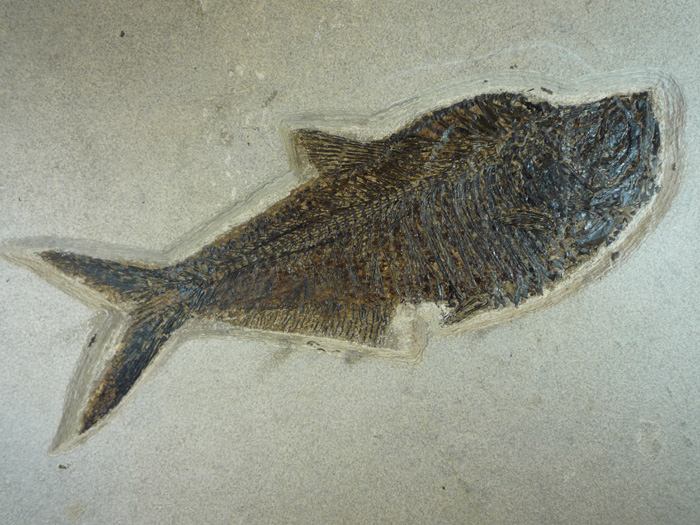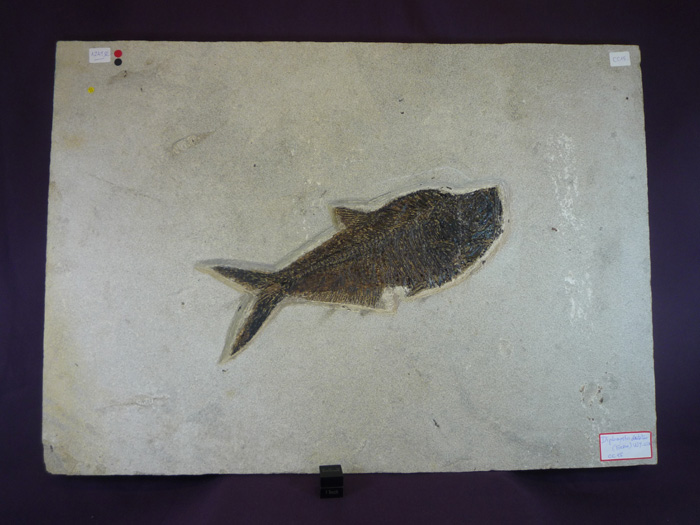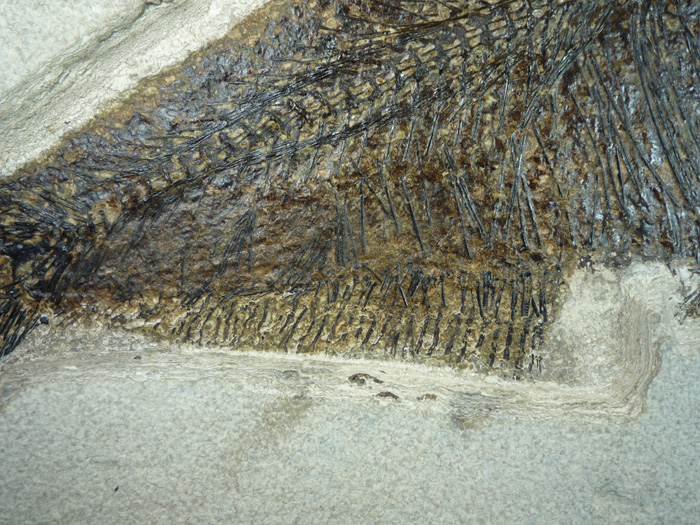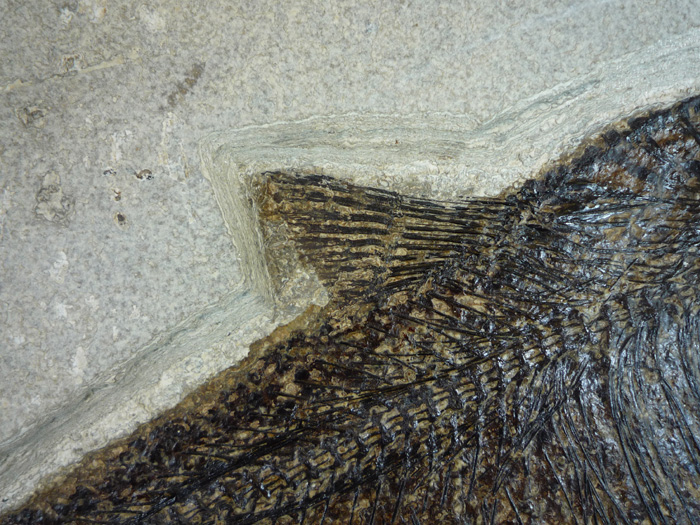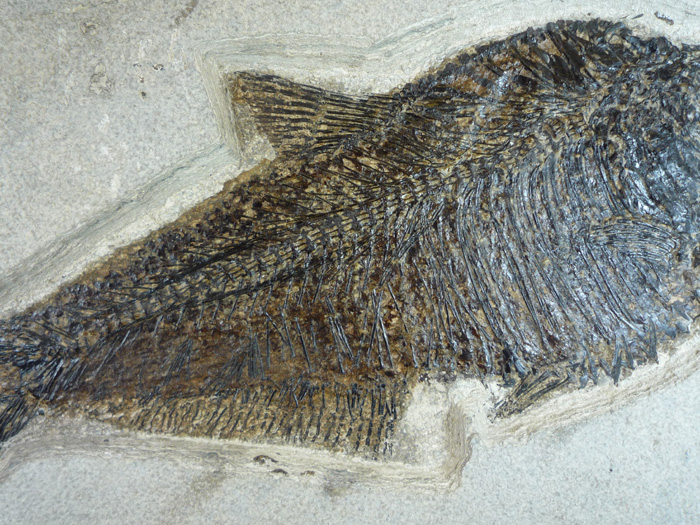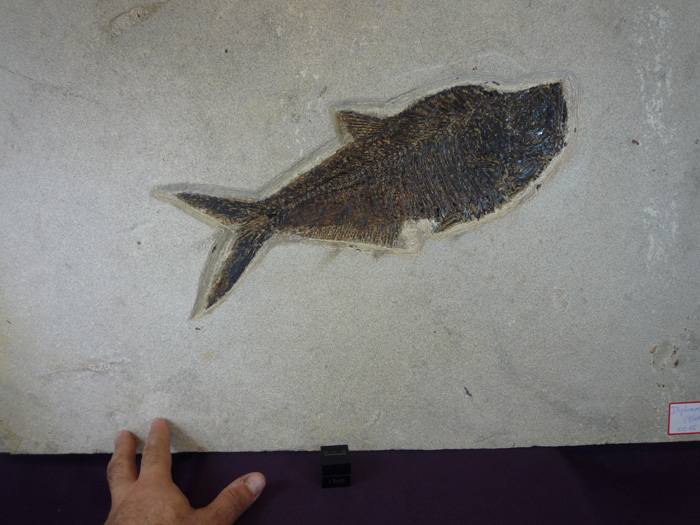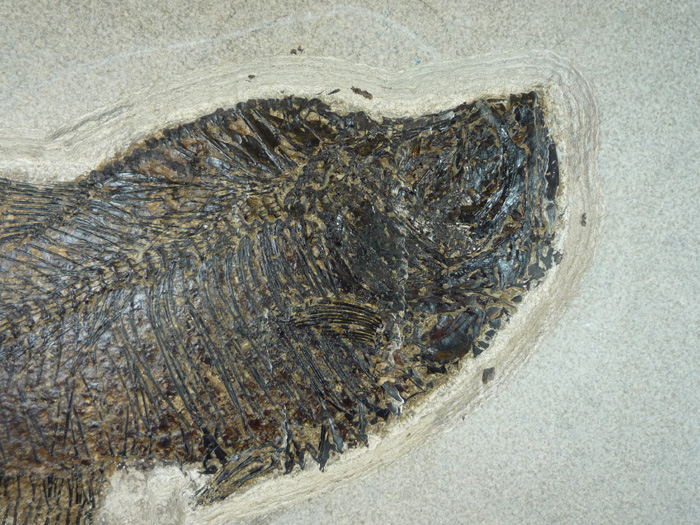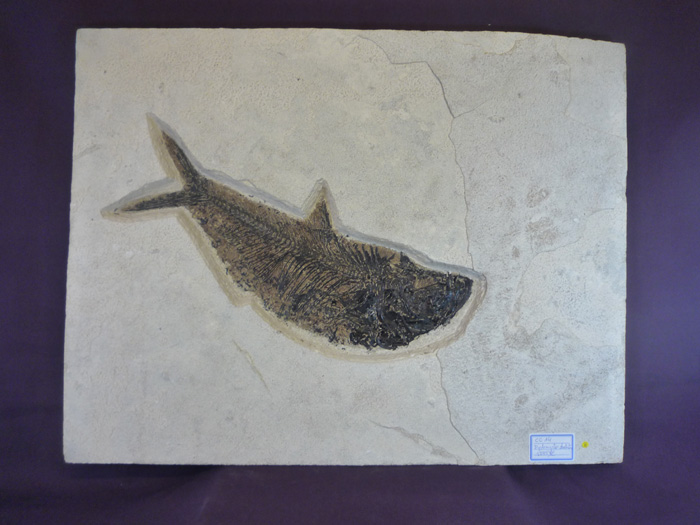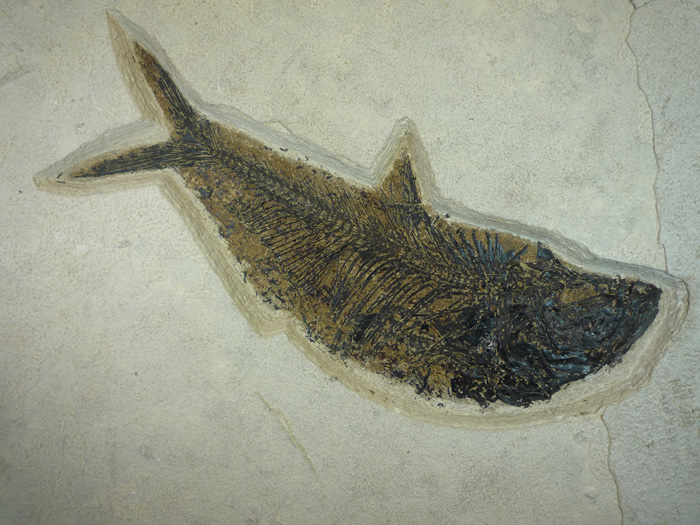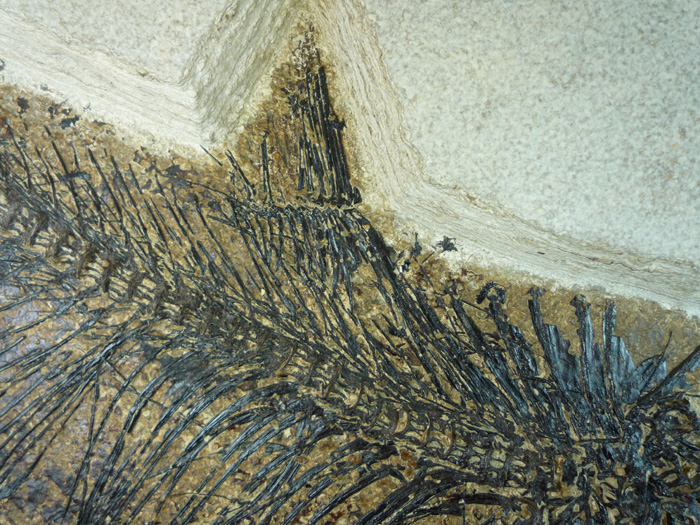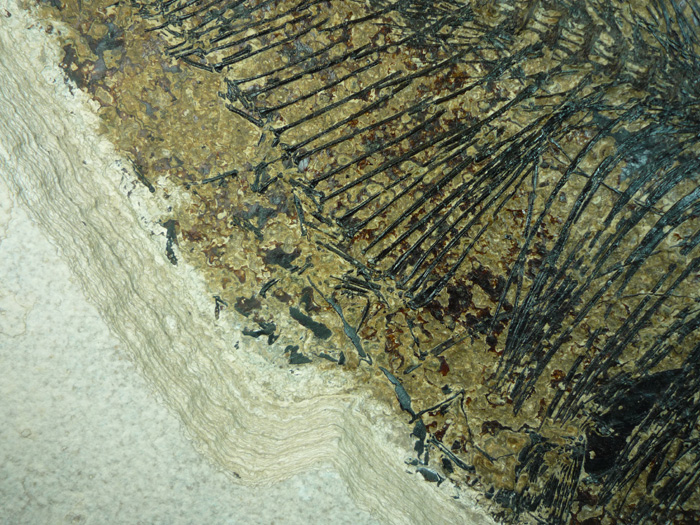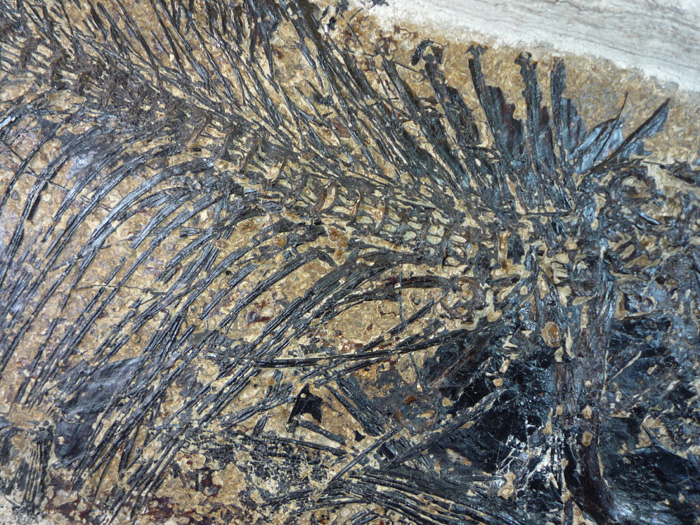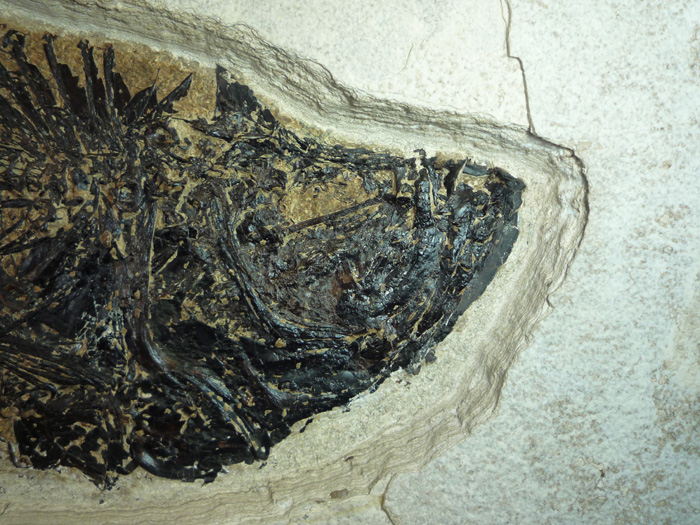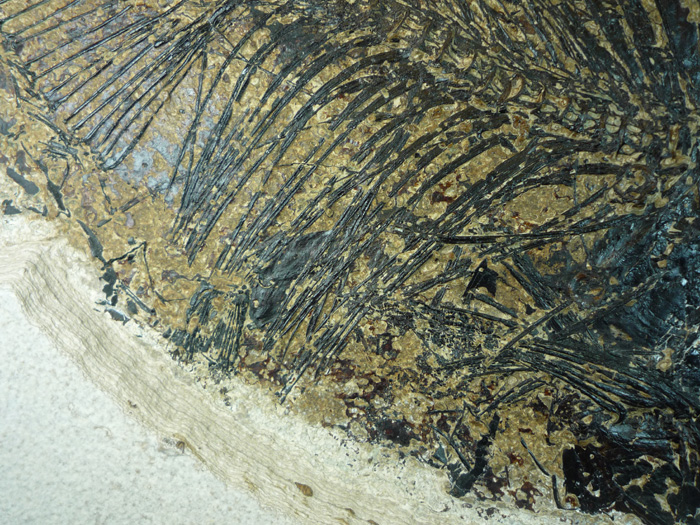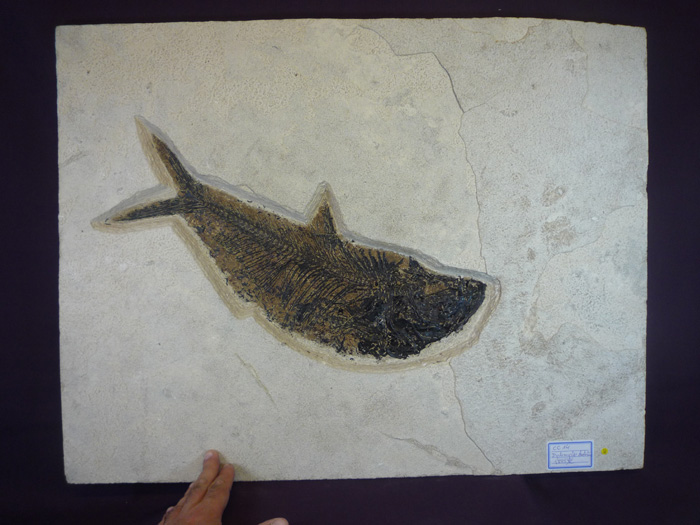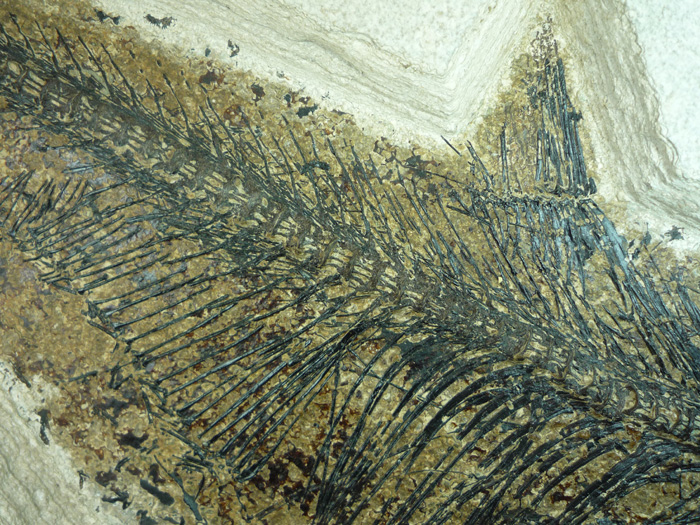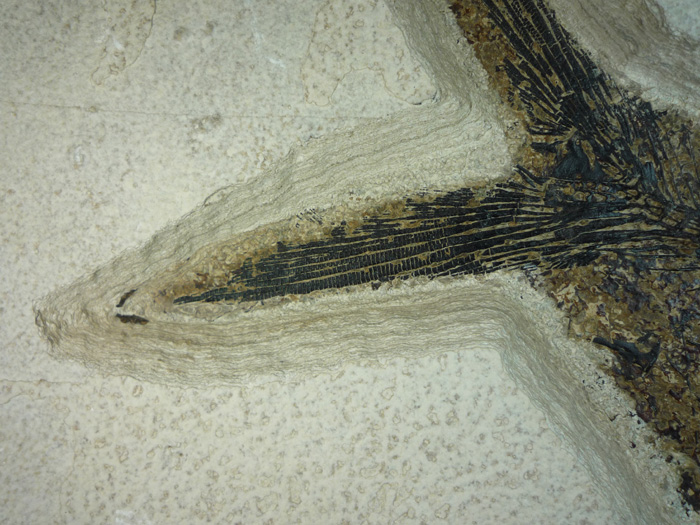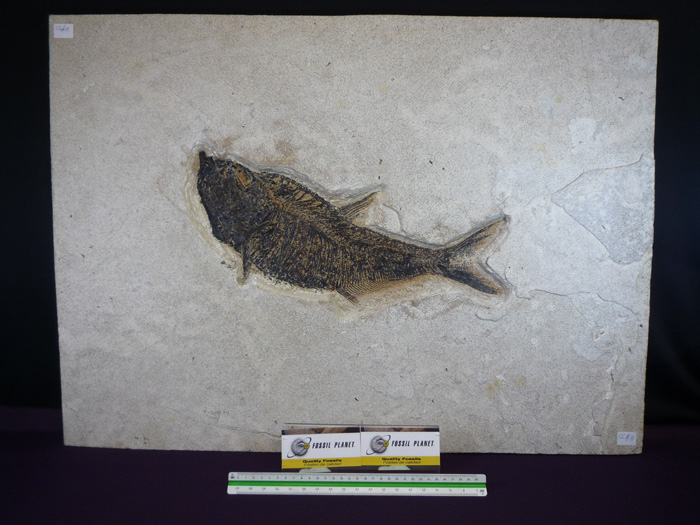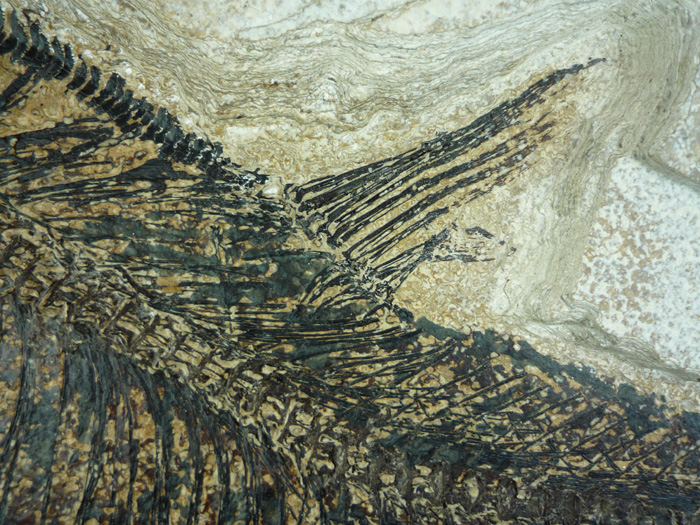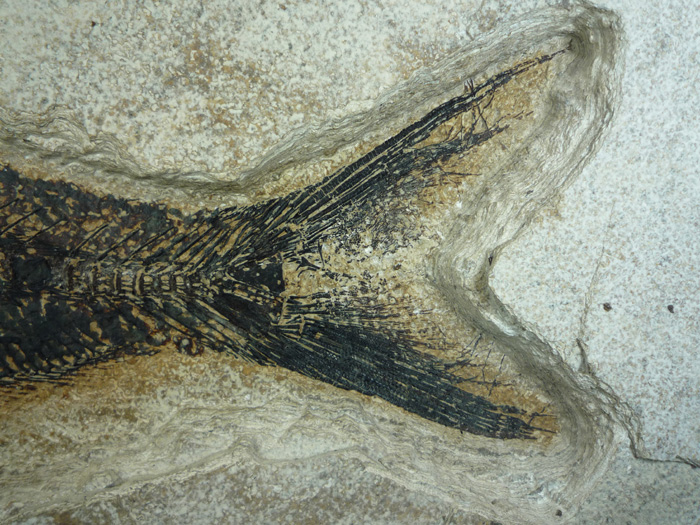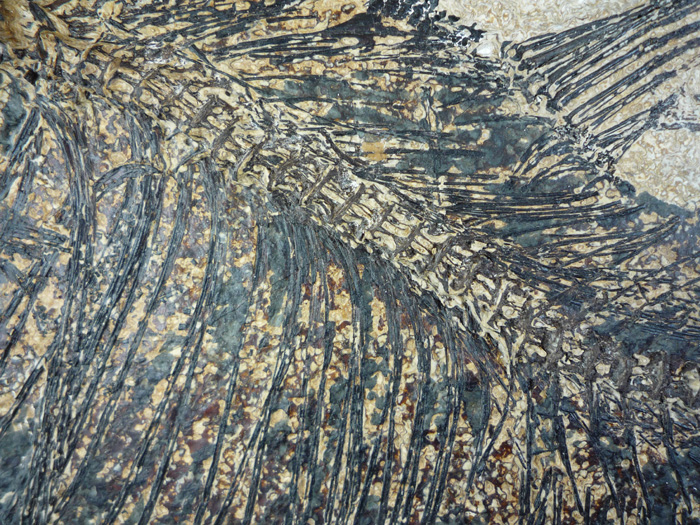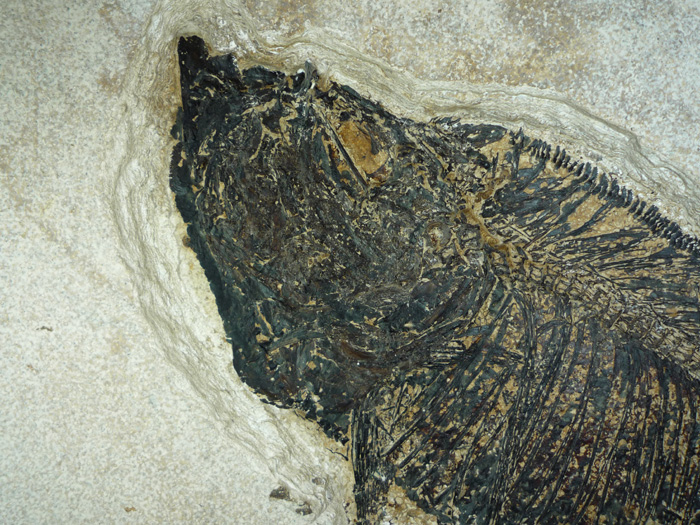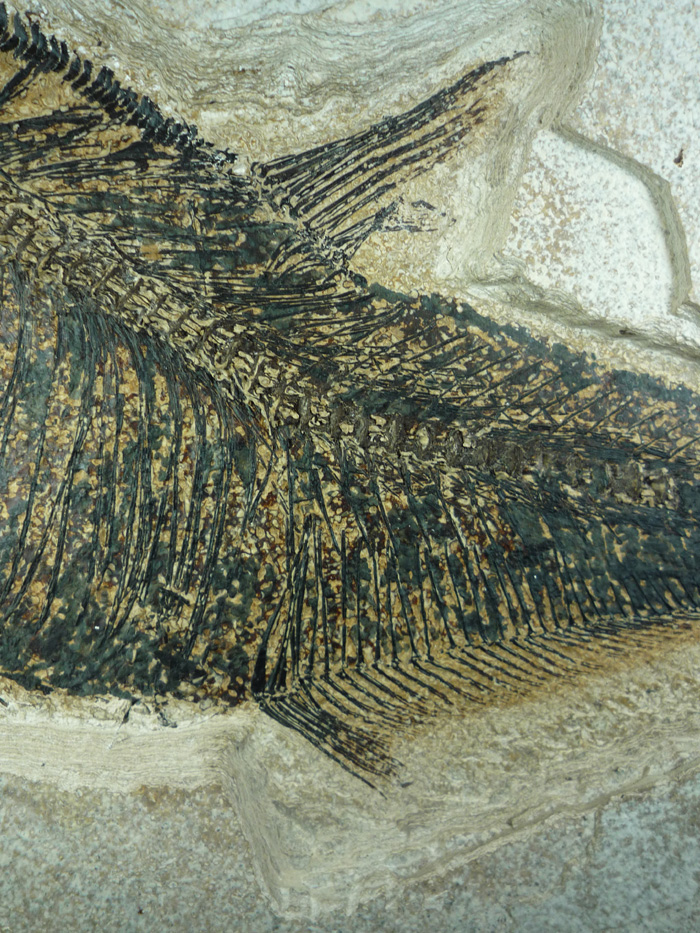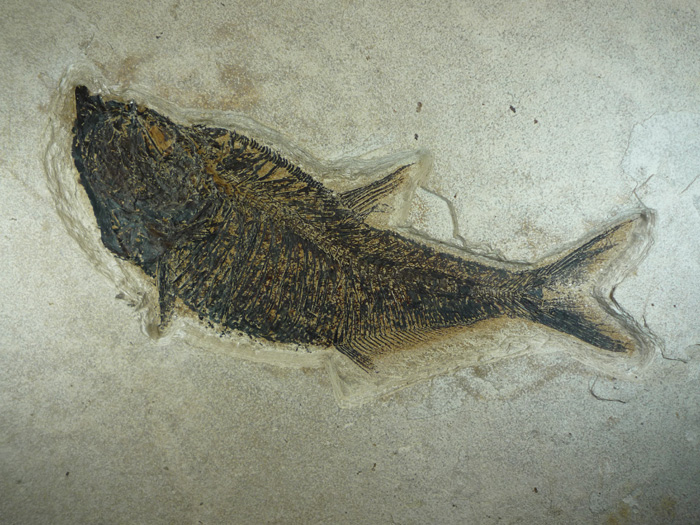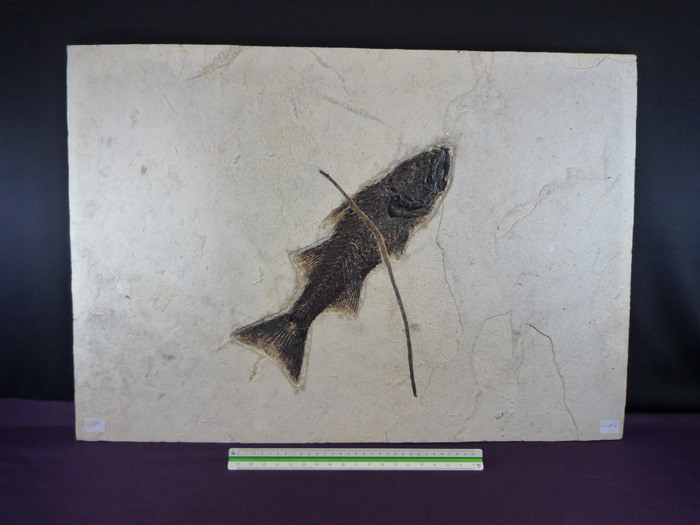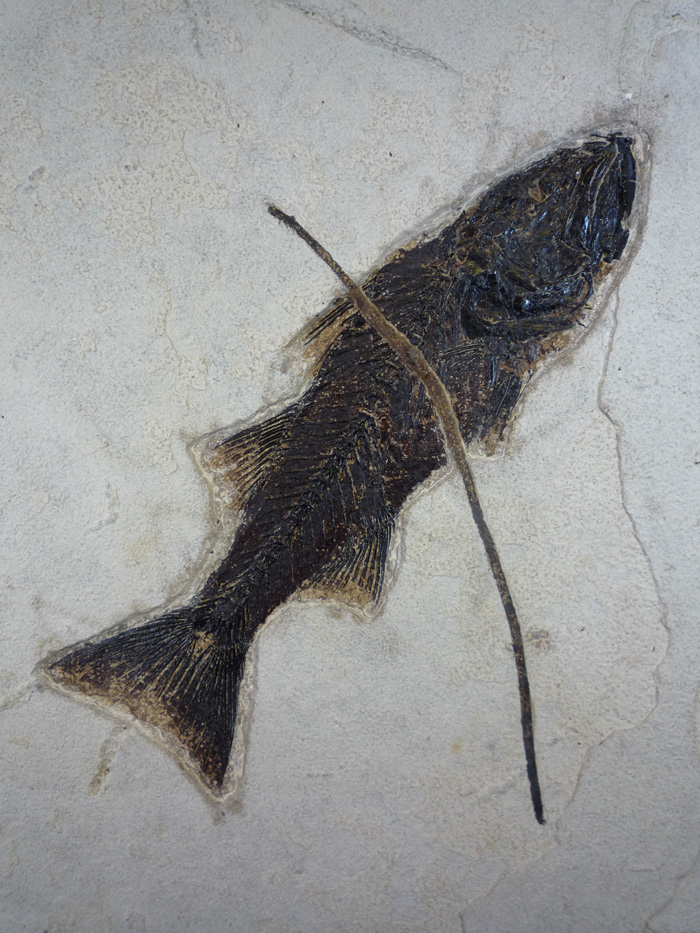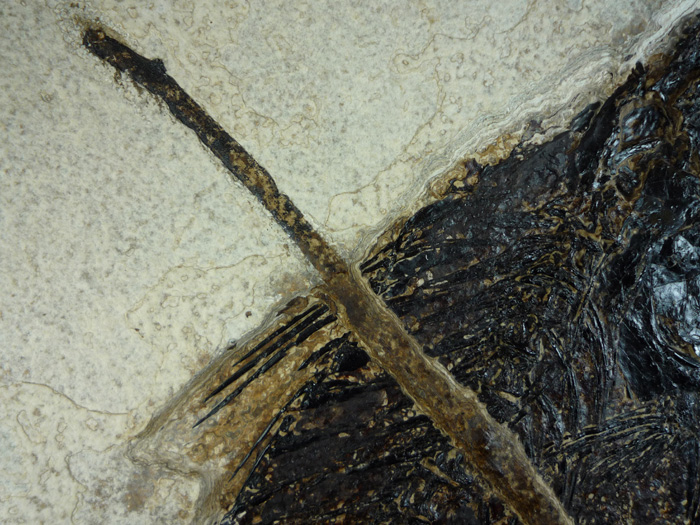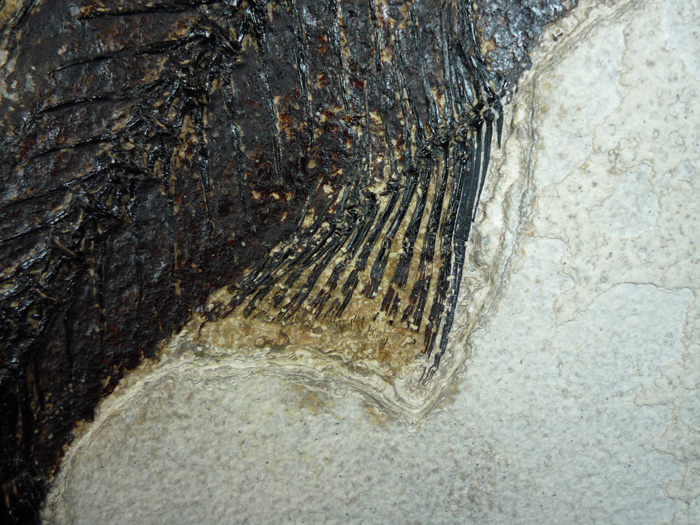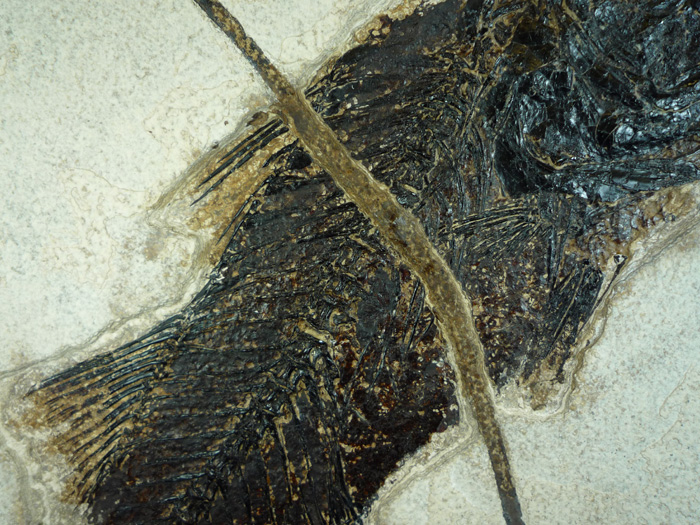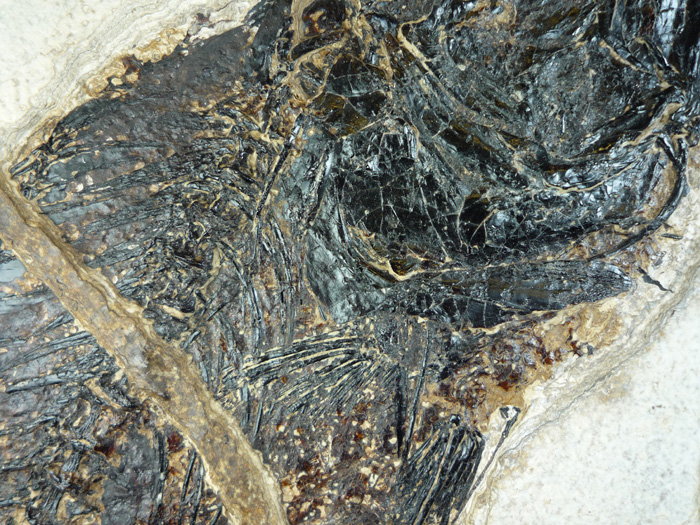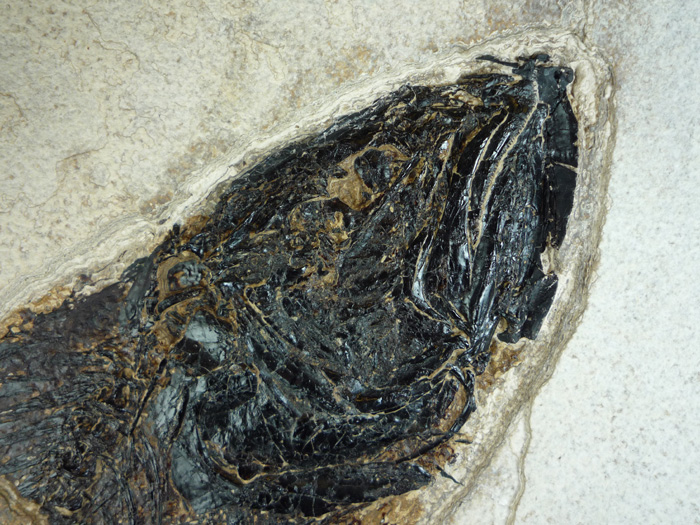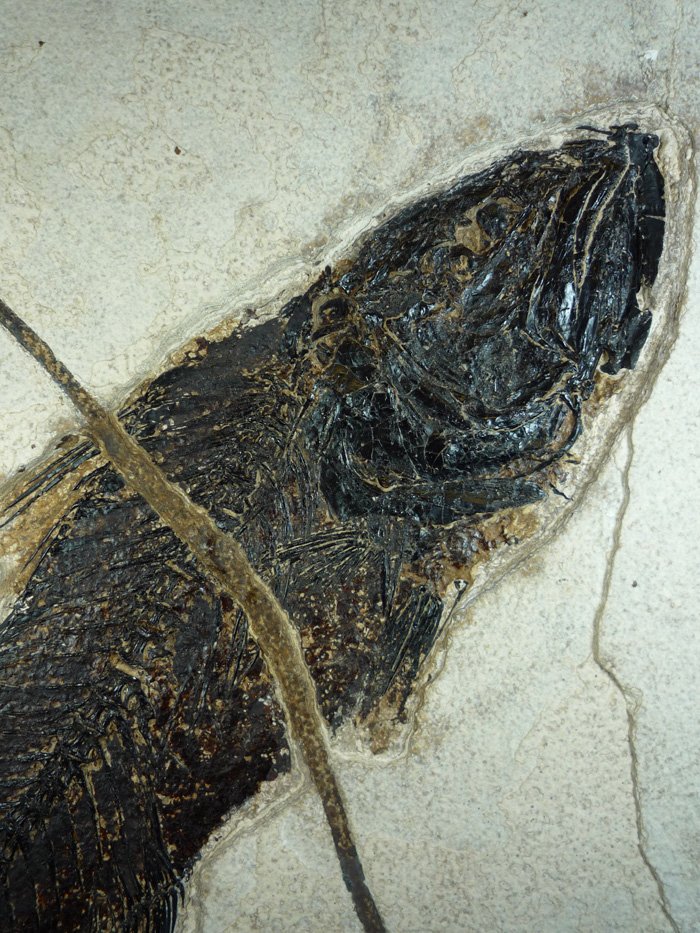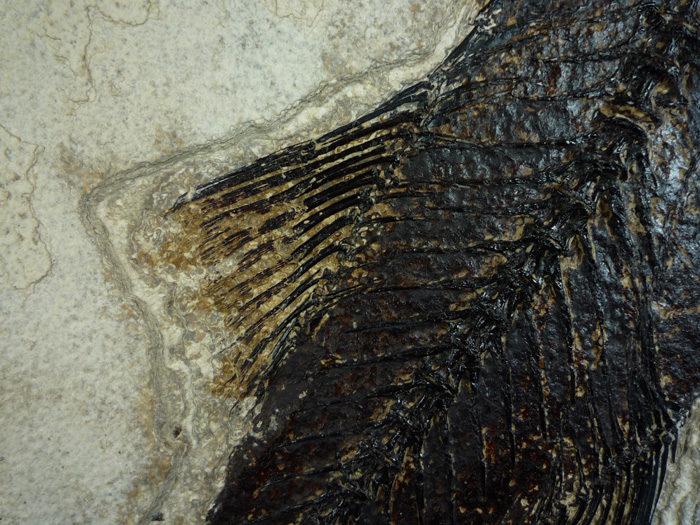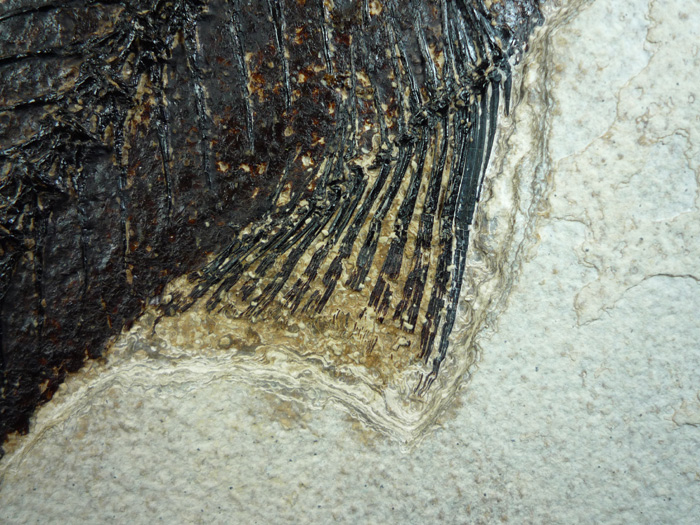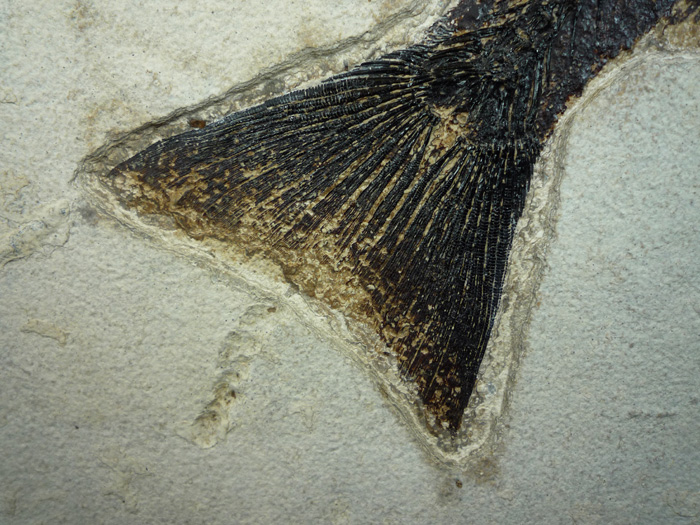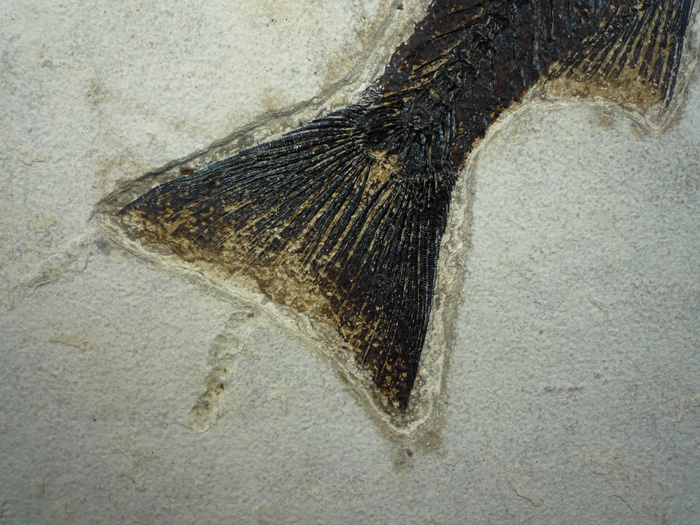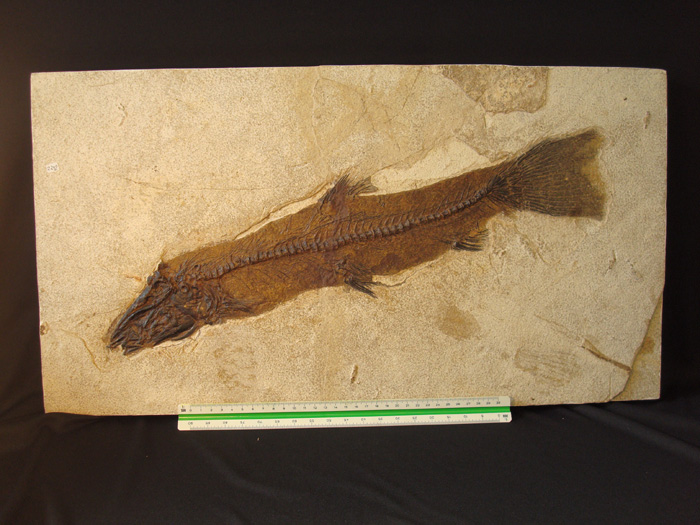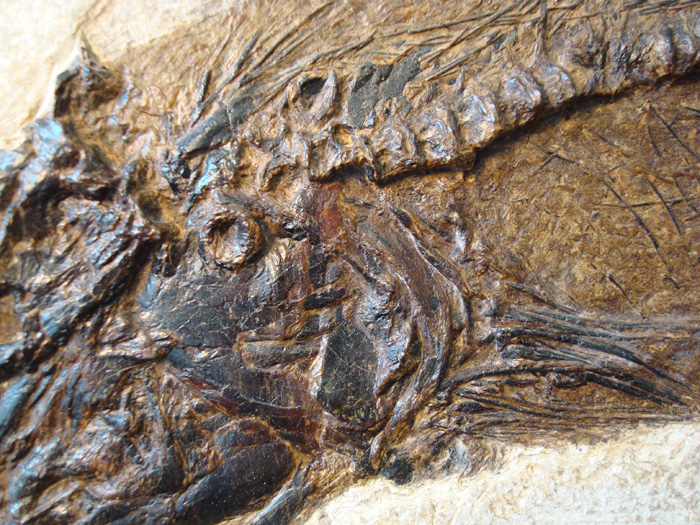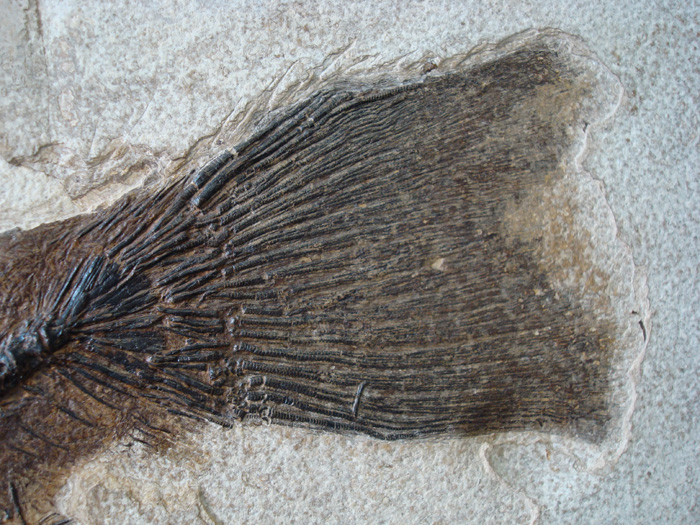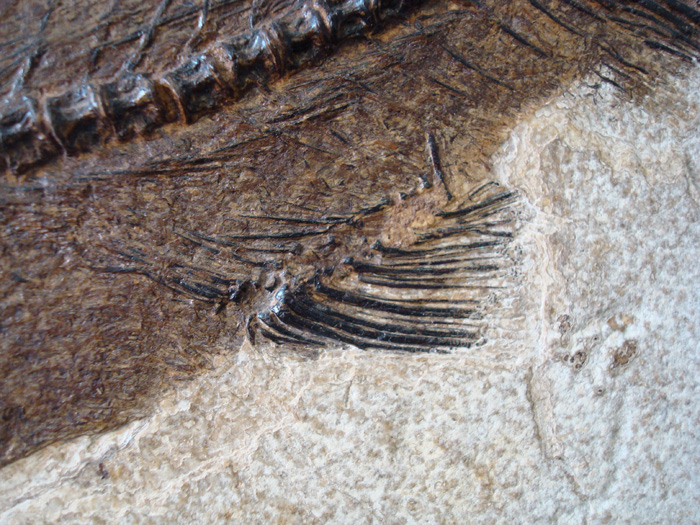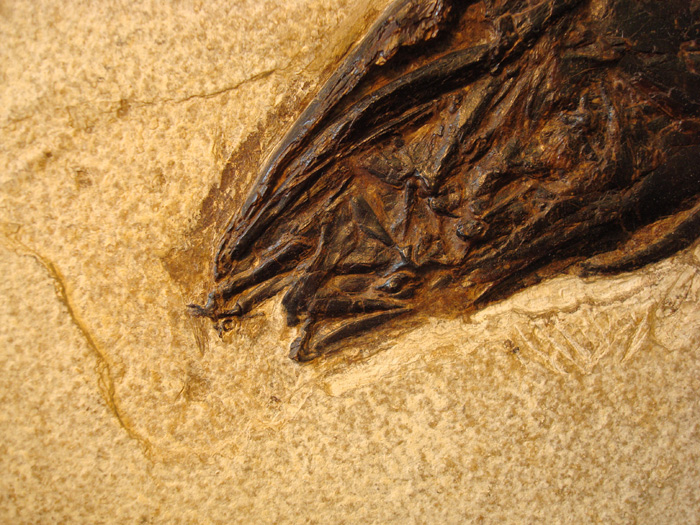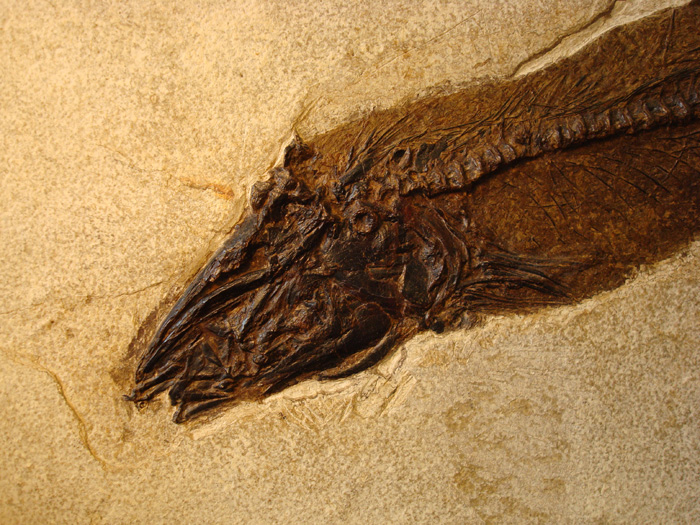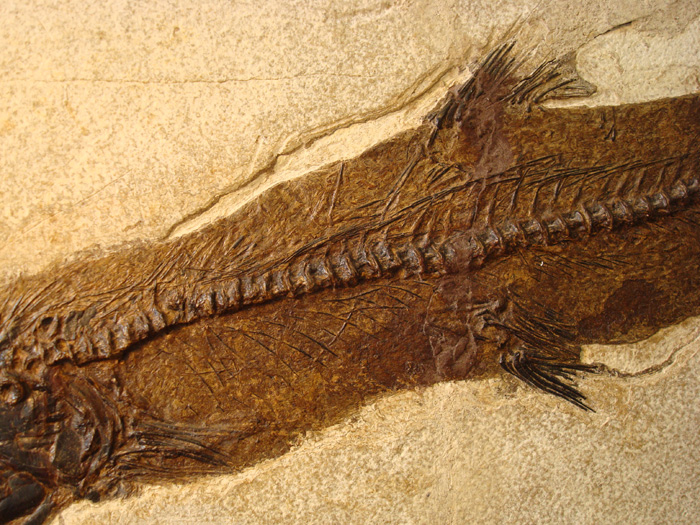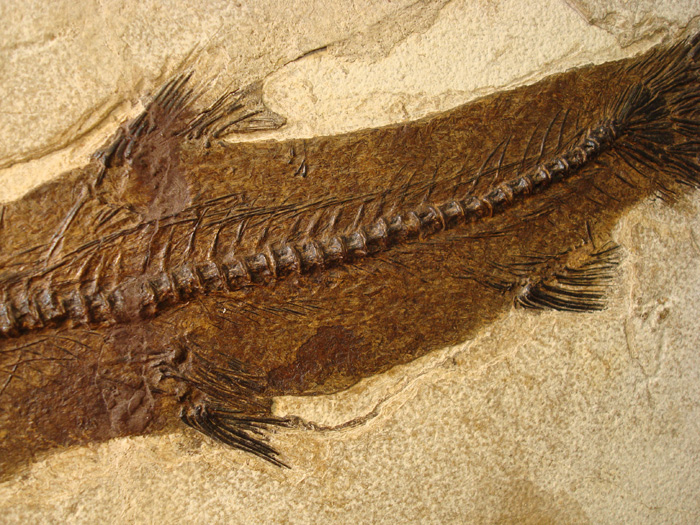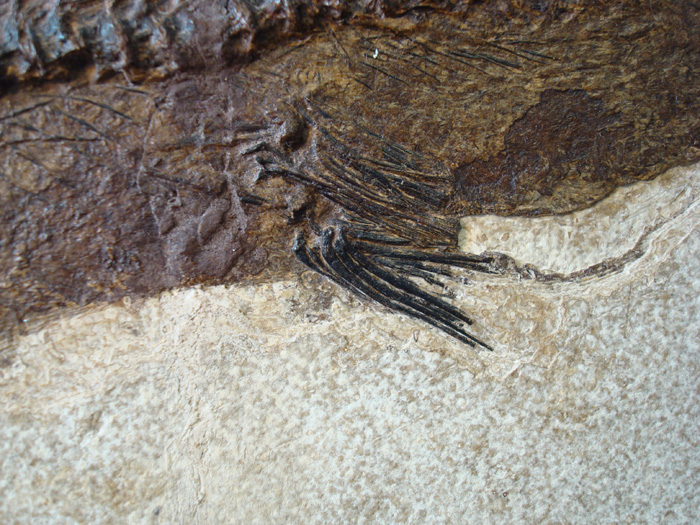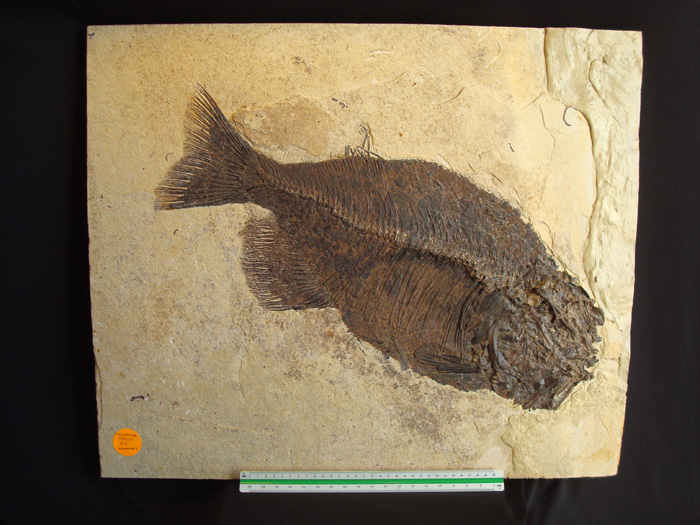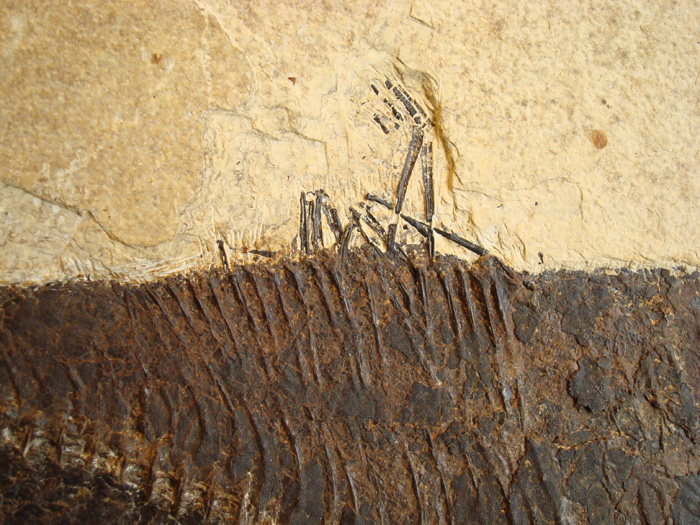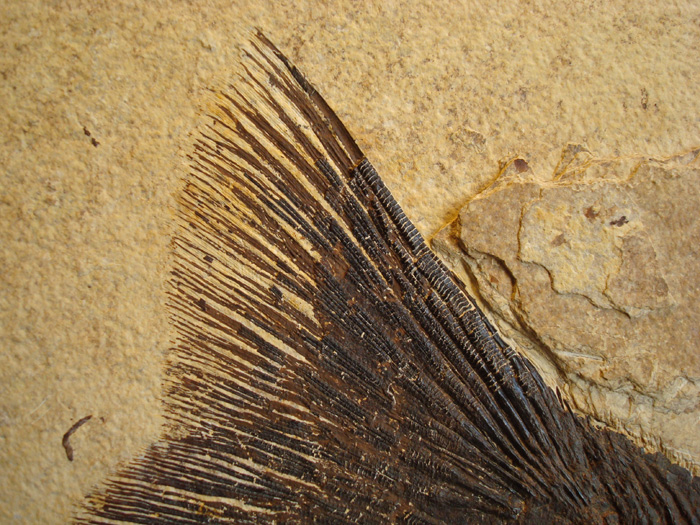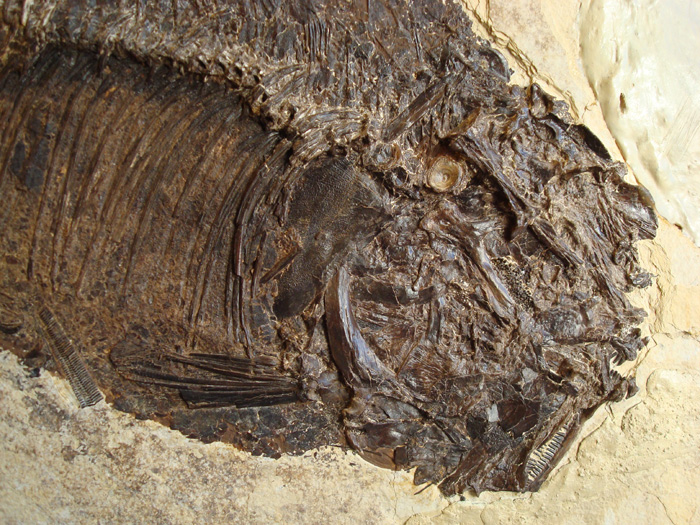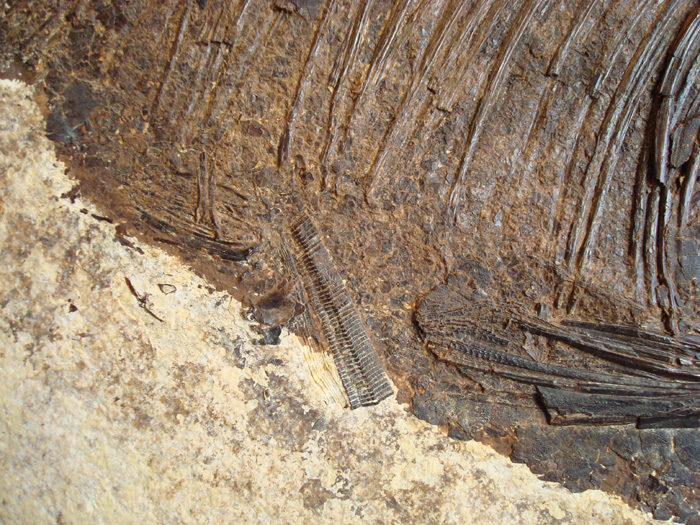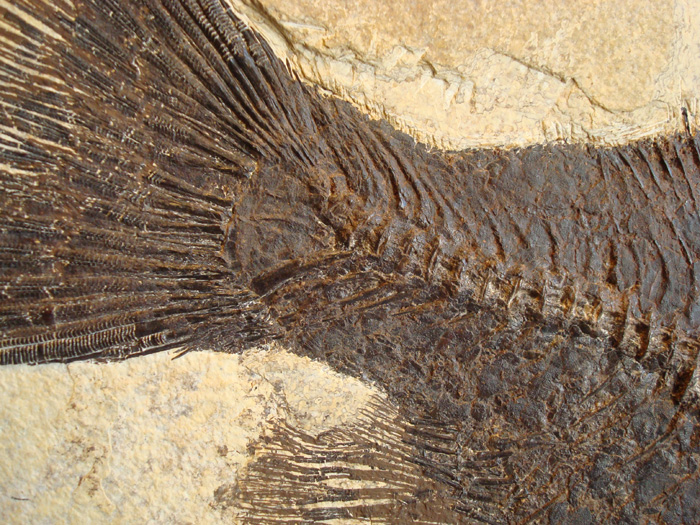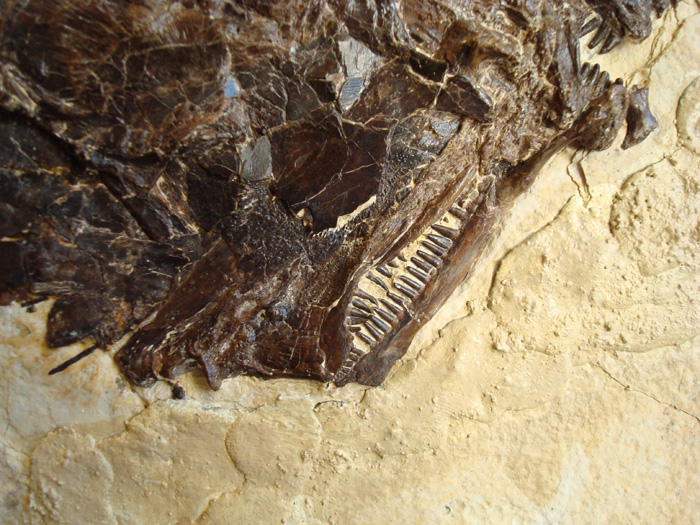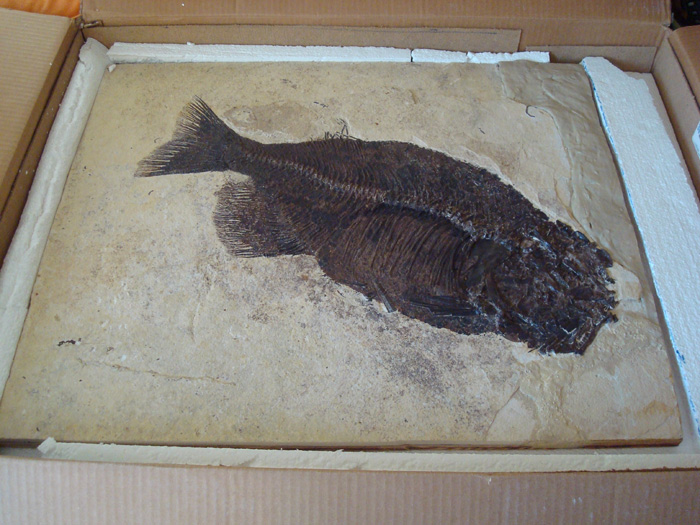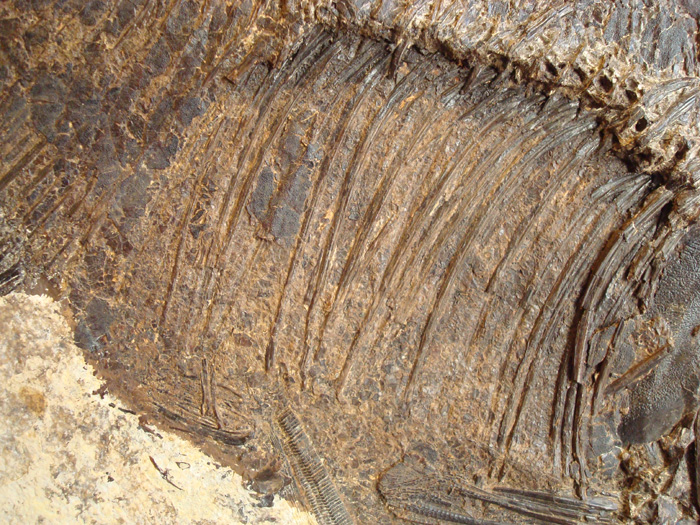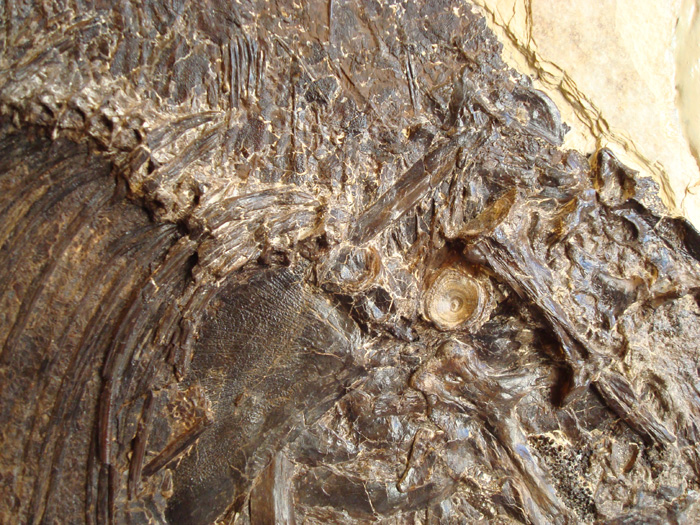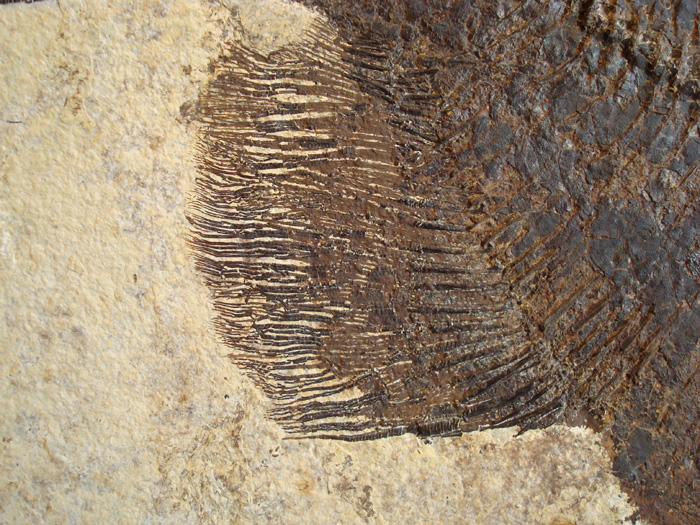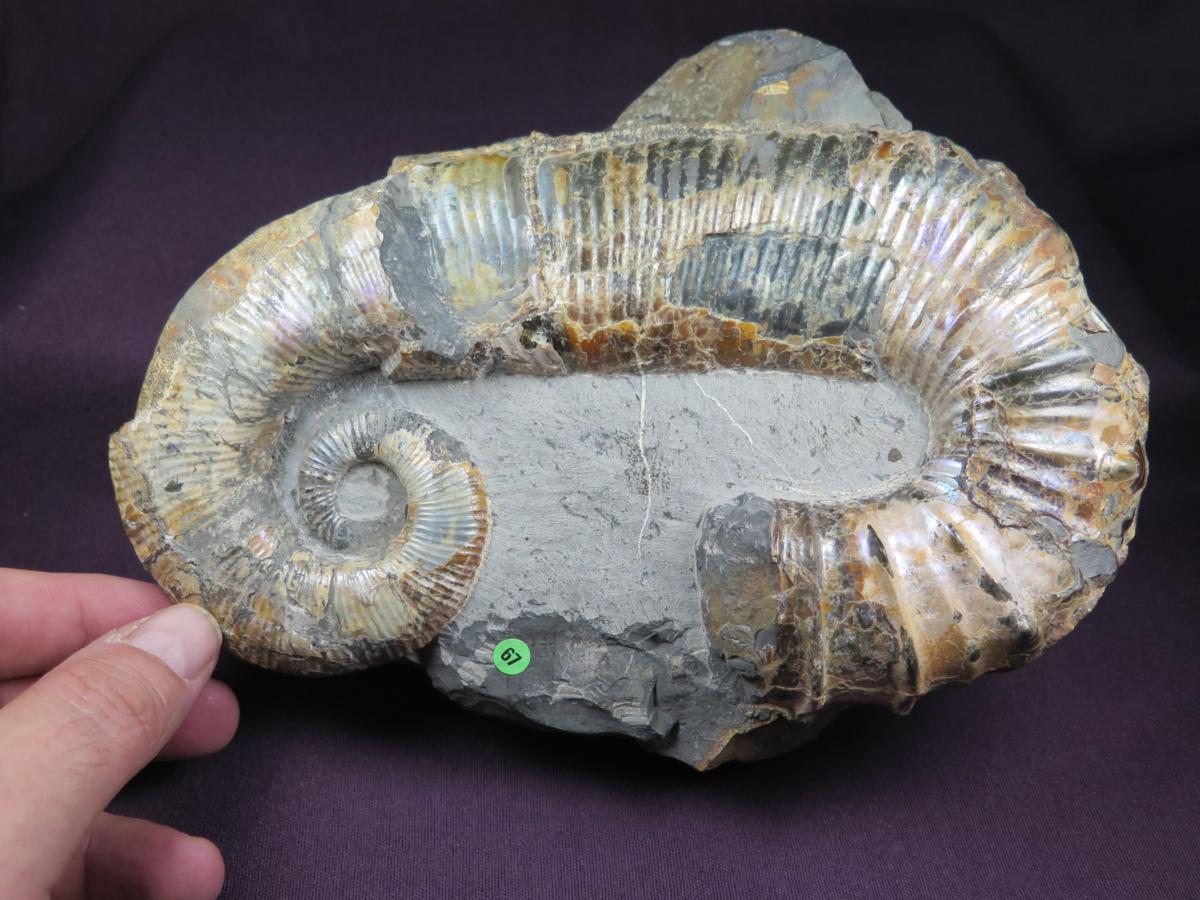
FOSSIL PLANET
Fossils for sale
Collector choice

Audouliceras renauxianum (D'ORBIGNY,1842) Ancyloceras renauxianum, Audouliceras (THOMEL,1964)
Audouliceras renauxianum (D'ORBIGNY,1842) Ancyloceras renauxianum, Audouliceras (THOMEL,1964)
Reference: ANCC67
Genus - Specie: Audouliceras renauxianum(D'ORBIGNY,1842) Ancyloceras renauxianum, Audouliceras (THOMEL,1964)
Description: heteromorph fossil ammonites, mollusk, cephalopod
Period: Cretaceous
Epoch-Stage-Strata: Lower Cretaceous
Era: Mesozoic
Age: Lower Aptian (119-125 million years)
Common name: fossil ammonites unwind
Comments: Phylum: Mollusca , Superphylum: Conchifera, Class: Cephalopoda , Order: Ancyloceratida . Family: Ancyloceratidae. Extint. Of the cephalopods, the ammonites and their relatives of which more than 10,000 species have been described are probably the most emblematic and well-known group of the fossil record and essential as guide fossils for the dating of rocks and the elaboration of successions of biozones of great precision biostratigraphic. All schoolchildren over 8 years old know something about this fossil group. The range of sizes and shapes was and is disconcerting, as shown by studies on this group of mollusks, extinct cephalopods. Most of the Ammonites had coiled forms, in the Triassic and especially in the Cretaceous, unrolled or heteromorphic forms appear, in which the spiral is not touched, they are scarcer and more difficult fossils such as this rare specimen of Audouliceras, a group that is distinguished by its characteristic unrolled shape (Cryoconic). Natural heteromorphic ammonites with their original outer shell and complete structure prepared in their original matrix,
genuine and authentic specimen, very well preserved ,no mounted , measures matrix : 226 x 182 x 85 mm , measures ammonite: 223 x 135 mm, weigth : 3.530 grams, from old collection, very beautiful and aesthetic piece, showcase piece, excellent quality, stunning , museum quality. Delivered and shipped with a certificate of authenticity, we ship worldwide
Location : Región d’Ulyanovsk (Volga River)Russia
Location: Región d’Ulyanovsk (Volga River)Russia
Price: 699 E
Audouliceras renauxianum (D'ORBIGNY,1842) Ancyloceras renauxianum, Audouliceras (THOMEL,1964)
Audouliceras renauxianum (D'ORBIGNY,1842) Ancyloceras renauxianum, Audouliceras (THOMEL,1964)
Reference: CC36
Genus - Specie: Audouliceras renauxianum(D'ORBIGNY,1842) Ancyloceras renauxianum, Audouliceras (THOMEL,1964)
Description: heteromorph fossil ammonites, mollusk, cephalopod
Period: Cretaceous
Epoch-Stage-Strata: Lower Cretaceous
Era: Mesozoic
Age: Lower Aptian (119-125 million years)
Common name: fossil ammonites unwind
Comments: Phylum: Mollusca , Superphylum: Conchifera, Class: Cephalopoda , Order: Ancyloceratida . Family: Ancyloceratidae. Extint. Of the cephalopods, the ammonites and their relatives of which more than 10,000 species have been described are probably the most emblematic and well-known group of the fossil record and essential as guide fossils for the dating of rocks and the elaboration of successions of biozones of great precision biostratigraphic. All schoolchildren over 8 years old know something about this fossil group. The range of sizes and shapes was and is disconcerting, as shown by studies on this group of mollusks, extinct cephalopods. Most of the Ammonites had coiled forms, in the Triassic and especially in the Cretaceous, unrolled or heteromorphic forms appear, in which the spiral is not touched, they are scarcer and more difficult fossils such as this rare specimen of Audouliceras, a group that is distinguished by its characteristic unrolled shape (Cryoconic). Heteromorphic ammonites with their original outer shell and complete structure prepared and mounted on matrix , Genuine and authentic specimen, very well preserved , measures matrix : 400 x 220 x 38 mm , measures ammonite: 200 x 130 mm, weigth : 6.000 grams, from old collection, very beautiful and aesthetic piece, showcase piece, excellent quality, stunning , museum quality. Delivered and shipped with a certificate of authenticity, we ship worldwide.
Location: Región d’Ulyanovsk (Volga River)Russia
Price: 1.500 E
Diplomystus dentatus(EDWARD DRINKER COPE,1887),Diplomystus(COPE,1887)
Diplomystus dentatus(EDWARD DRINKER COPE,1887),Diplomystus(COPE,1887)
Diplomystus dentatus(EDWARD DRINKER COPE,1887),Diplomystus(COPE,1887)
Reference: CC17
Genus - Specie: Diplomystus dentatus(EDWARD DRINKER COPE,1887),Diplomystus(COPE,1887)
Description: primitive fossil fish, bony fish, clupeiform, pedrator
Period: Paleogene
Epoch-Stage-Strata: Lower Eocene
Era: Cenozoic
Age: Ypresian (about 47-56 million years)
Common name: prehistoric fossil fish
Comments: Phylum: Chordata, Class: Actinopterygii, Order: Clupeiformes, Family: Ellimmichthyidae, Genus: Diplomystus. The legendary sites of the formation from Green River in Wyoming whose fossils are very valued by its variety, high quality, and conservation, as well as fish, other invertebrates and plants have been located in this excellently preserved, according to scientific training this magnificent state of conservation in the world, it is due to a combination of two factors: first, a period of cold deep during the Eocene, which would have caused that lifeless fish had sunk faster since its swim bladder would have inflated less and second the great depth of the lakes and the exceptional conditions of lack of oxygen in the water, this would have prevented scavengers animals destroyed the corpses. This fossil fish comes from famous deposits in Green River Formation. Diplomystus is an extraordinarily beautiful Eocene extinct genus of fish due to its original morphology and the caravatic structure and its unique form of its mouth. The fossils of this fish are commonly fossilized in this area, along with other genera of interest such as Knigtia, Priscacara, Mioplosus, Phaerodus, Notogoneus and others . Its habitat in all probability were lakes and freshwater streams, feed on small organisms such as tadpoles, shrimp, crabs and snails that tore with their powerful jaws. Bony fish, extinct genus, common, intact fish , very well preserved , complete specimen, professionally prepared and finished , excellent conservation, no restoration, no repair, no glue, no composite,
measures plate : 636 x 445 x 10 mm , measures fish : 450 x 190 mm (18 inches) weight : 8 kgrs, 500 grams, intact fish, nice display, museum quality, a classic fossil fish from Green River FM , excellent quality, nice display, stunning . It is delivered and shipped with authenticity certificate. World whide shipping. Black and White photo By Frederick Gutekunst : Cope, Edward Drinker (1840-1897) Paleontologist and zoologist, author who classified the genus and species.
Location: Kemmerer(Green River Formation) southwestern Wyoming(USA)
Price: 1.899 E
Diplomystus dentatus(EDWARD DRINKER COPE,1887),Diplomystus(COPE,1887)
Diplomystus dentatus(EDWARD DRINKER COPE,1887),Diplomystus(COPE,1887)
Diplomystus dentatus(EDWARD DRINKER COPE,1887),Diplomystus(COPE,1887)
Reference: CC15
Genus - Specie: Diplomystus dentatus(EDWARD DRINKER COPE,1887),Diplomystus(COPE,1887)
Description: primitive fossil fish, bony fish, clupeiform, pedrator
Period: Paleogene
Epoch-Stage-Strata: Lower Eocene
Era: Cenozoic
Age: Ypresian (about 47-56 million years)
Common name: prehistoric fossil fish
Comments: Phylum: Chordata, Class: Actinopterygii, Order: Clupeiformes, Family: Ellimmichthyidae, Genus: Diplomystus. The legendary sites of the formation from Green River in Wyoming whose fossils are very valued by its variety, high quality, and conservation, as well as fish, other invertebrates and plants have been located in this excellently preserved, according to scientific training this magnificent state of conservation in the world, it is due to a combination of two factors: first, a period of cold deep during the Eocene, which would have caused that lifeless fish had sunk faster since its swim bladder would have inflated less and second the great depth of the lakes and the exceptional conditions of lack of oxygen in the water, this would have prevented scavengers animals destroyed the corpses. This fossil fish comes from famous deposits in Green River Formation. Diplomystus is an extraordinarily beautiful Eocene extinct genus of fish due to its original morphology and the caravatic structure and its unique form of its mouth. The fossils of this fish are commonly fossilized in this area, along with other genera of interest such as Knigtia, Priscacara, Mioplosus, Phaerodus, Notogoneus and others . Its habitat in all probability were lakes and freshwater streams, feed on small organisms such as tadpoles, shrimp, crabs and snails that tore with their powerful jaws. Bony fish, extinct genus, common, intact fish , very well preserved , complete specimen, professionally prepared and finished , excellent conservation, no restoration, no repair, no glue, no composite, measures plate: 537 x 858 x 23 mm , measures fish : 397 x 145 mm (15 and half inches) weight : 19 kgrs, 300 grams
, intact fish, nice display, museum quality, a classic fossil fish from Green River FM , excellent quality, nice display, stunning . It is delivered and shipped with authenticity certificate. World whide shipping. Black and White photo By Frederick Gutekunst : Cope, Edward Drinker (1840-1897) Paleontologist and zoologist, author who classified the genus and species.
Location: Kemmerer(Green River Formation) southwestern Wyoming(USA)
Price: 1.250 E
Diplomystus dentatus(EDWARD DRINKER COPE,1887)Diplomystus(COPE,1887)
Diplomystus dentatus(EDWARD DRINKER COPE,1887)Diplomystus(COPE,1887)
Diplomystus dentatus(EDWARD DRINKER COPE,1887)Diplomystus(COPE,1887)
Reference: CC14
Genus - Specie: Diplomystus dentatus(EDWARD DRINKER COPE,1887)Diplomystus(COPE,1887)
Description: primitive fossil fish, bony fish, pedrator
Period: Paleogene
Epoch-Stage-Strata: Lower Eocene
Era: Cenozoic
Age: Ypresian (about 47-56 million years)
Common name: prehistoric fossil fish
Comments: Phylum: Chordata, Class: Actinopterygii, Order: Clupeiformes, Family: Ellimmichthyidae, Genus: Diplomystus. The legendary sites of the formation from Green River in Wyoming whose fossils are very valued by its variety, high quality, and conservation, as well as fish, other invertebrates and plants have been located in this excellently preserved, according to scientific training this magnificent state of conservation in the world, it is due to a combination of two factors: first, a period of cold deep during the Eocene, which would have caused that lifeless fish had sunk faster since its swim bladder would have inflated less and second the great depth of the lakes and the exceptional conditions of lack of oxygen in the water, this would have prevented scavengers animals destroyed the corpses. This fossil fish comes from famous deposits in Green River Formation. Diplomystus is an extraordinarily beautiful Eocene extinct genus of fish due to its original morphology and the caravatic structure and its unique form of its mouth. The fossils of this fish are commonly fossilized in this area, along with other genera of interest such as Knigtia, Priscacara, Mioplosus, Phaerodus, Notogoneus and others . Its habitat in all probability were lakes and freshwater streams, feed on small organisms such as tadpoles, shrimp, crabs and snails that tore with their powerful jaws. Bony fish, extinct genus, common, intact fish , very well preserved , complete specimen, professionally prepared and finished , excellent conservation, no restoration, no repair, no glue, no composite, measures plate : 685 x 550 x 25 mm , measures fish : 450 x 170 mm (17 inches) weight : 16 kgrs. 700 grams, intact fish, nice display, museum quality, a classic fossil fish from Green River FM , excellent quality, nice display, stunning . It is delivered and shipped with authenticity certificate. World whide shipping. Black and White photo By Frederick Gutekunst : Cope, Edward Drinker (1840-1897) Paleontologist and zoologist, author who classified the genus and species.
Location: Kemmerer(Green River Formation) southwestern Wyoming(USA)
Price: 1.599 E
Diplomystus dentatus(EDWARD DRINKER COPE,1887),Diplomystus(COPE,1887)
Diplomystus dentatus(EDWARD DRINKER COPE,1887),Diplomystus(COPE,1887)
Diplomystus dentatus(EDWARD DRINKER COPE,1887),Diplomystus(COPE,1887)
Reference: CC11
Genus - Specie: Diplomystus dentatus(EDWARD DRINKER COPE,1887),Diplomystus(COPE,1887)
Description: primitive fossil fish, bony fish, clupeiform, pedrator
Period: Paleogene
Epoch-Stage-Strata: Lower Eocene
Era: Cenozoic
Age: Ypresian (about 47-56 million years)
Common name: prehistoric fossil fish
Comments: Phylum: Chordata, Class: Actinopterygii, Order: Clupeiformes, Family: Ellimmichthyidae, Genus: Diplomystus. The legendary sites of the formation from Green River in Wyoming whose fossils are very valued by its variety, high quality, and conservation, as well as fish, other invertebrates and plants have been located in this excellently preserved, according to scientific training this magnificent state of conservation in the world, it is due to a combination of two factors: first, a period of cold deep during the Eocene, which would have caused that lifeless fish had sunk faster since its swim bladder would have inflated less and second the great depth of the lakes and the exceptional conditions of lack of oxygen in the water, this would have prevented scavengers animals destroyed the corpses. This fossil fish comes from famous deposits in Green River Formation. Diplomystus is an extraordinarily beautiful Eocene extinct genus of fish due to its original morphology and the caravatic structure and its unique form of its mouth. The fossils of this fish are commonly fossilized in this area, along with other genera of interest such as Knigtia, Priscacara, Mioplosus, Phaerodus, Notogoneus and others . Its habitat in all probability were lakes and freshwater streams, feed on small organisms such as tadpoles, shrimp, crabs and snails that tore with their powerful jaws. Bony fish, extinct genus, common, intact fish , very well preserved , complete specimen, professionally prepared and finished , excellent conservation, no restoration, no repair, no glue, no composite,
measures plate: 630 x 825 x 20 mm, measures fish: 470 x 150 mm, weight: 23 kgrs,600 grams , intact fish, nice display, museum quality, a classic fossil fish from Green River FM , excellent quality, nice display, stunning . It is delivered and shipped with authenticity certificate. World whide shipping. Black and White photo By Frederick Gutekunst : Cope, Edward Drinker (1840-1897) Paleontologist and zoologist, author who classified the genus and species.
Location: Kemmerer(Green River Formation) southwestern Wyoming(USA)
Price: 1.500 E
Mioplosus labracoides (COPE,1877)
Mioplosus labracoides (COPE,1877)
Mioplosus labracoides (COPE,1877)
Reference: CC4
Genus - Specie:
Mioplosus labracoides (COPE,1877)
Description: primitive fossil fish, bony fish, pedrator , perciformes
Period: Paleogene
Epoch-Stage-Strata: Lower Eocene
Era: Cenozoic
Age: Ypresian (about 47-56 million years)
Common name: prehistoric fossil fish
Comments: ( Phylum: Chordata, Subphylum: Vertebrata, Infraphylum: Gnathostomata, Superclass: Osteichthyes, Class: Actinopterygii. Order: Perciformes, Family: Percidae). The legendary sites of the formation from Green River in Wyoming whose fossils are very valued by its variety, high quality, and conservation, as well as fish, other invertebrates and plants have been located in this excellently preserved, according to scientific training this magnificent state of conservation in the world, it is due to a combination of two factors: first, a period of cold deep during the Eocene, which would have caused that lifeless fish had sunk faster since its swim bladder would have inflated less and second the great depth of the lakes and the exceptional conditions of lack of oxygen in the water, this would have prevented scavengers animals destroyed the corpses. Mioplosus labracoides is an extinct fish with a long and strong body similar in appearance to a current perch (carp). According to the fossil remains found, it had sharp teeth that show that it was a voracious and lethal predator. He often ate other fish with a size of up to half his own length, which resulted in death by suffocation many plaques with fossil remains of complete specimens have been found that prove it (The Mioplosus died while trying to eat his dinner). Mioplosus is one of the rarest and most sought after species of Green River FM. The fossils of this fish are commonly fossilized in this area, along with other genera of interest such as Knigtia, Priscacara, Dyplomistus, Phaerodus, Notogoneus and others . Its habitat in all probability were lakes and freshwater streams, feed on small organisms such as tadpoles, shrimp, crabs and snails that tore with their powerful jaws. Extraordinary and unusual: plate with a giant specimen of Mioplosus adult fossilized in detail . Bony fish, extinct genus, intact fish , very well preserved , complete specimen , plate prepared and cut by professionals in the quarry of origin in WY , excellent conservation, no restoration, no repair, no glue, no composite, unusual with fossilized plant on the specimen, museum specimen, large , measures plate: 30 x 530 x 760 mm, fish size: 380 x 110 mm, weight: 19 kgs, 700 grams, rare, scarce in this size in the Green River formation, intact fish, nice display, museum quality, a classic fossil fish from Green River FM , excellent quality, nice display, stunning . It is delivered and shipped with authenticity certificate. World whide shipping. Black and White photo By Frederick Gutekunst : Cope, Edward Drinker (1840-1897) Paleontologist and zoologist, author who classified the genera and specie.
Location: Kemmerer(Green River Formation) southwestern Wyoming(USA)
Price: 1.999 E
Notogoneus osculus (COPE,1865) Notogoneus osculus (PERKINS,P.1970)
Notogoneus osculus (COPE,1865) Notogoneus osculus (PERKINS,P.1970)
Reference: CC3
Genus - Specie: Notogoneus osculus (COPE,1865) Notogoneus osculus (PERKINS,P.1970)
Description: fossil fish, giant predator
Period: Paleogene
Epoch-Stage-Strata: Lower Eocene
Era: Cenozoic
Age: Ypresian (about 47-56 million years)
Common name: fossil fish , giant predator, prehistoric fossil fish
Comments: Kingdom: Animalia, Phylum: Chordata, Class: Actinopterygii, Order: Gonorynchiformes, Family: Gonorynchidae, Genus: Notogoneus. Extint. The legendary sites of the formation from Green River in Wyoming whose fossils are very valued by its variety, high quality,and conservation,as well as fish,other invertebrates and plants have been located in this excellently preserved, according to scientific training this magnificent state of conservation in the world, it is due to a combination of two factors : first a period of cold deep during the Eocene, which would have caused that lifeless fish had sunk faster since its swim bladder would have inflated less and second the great depth of the lakes and the exceptional conditions of lack of oxygen in the water, this would have prevented scavengers animals destroyed the corpses . Notogoneus osculus (osculus from the Latin 'mouth') was an opportunist spending most of its life in rivers that are connected and fed on flow to the inland lake only went into the Lake during certain seasons when when the bottom waters were nontoxic. As a result of this circumstance Notogoneus is uncommon and rare in the Green River formation. The usual size of this genus is around 18 inches (45.7 cm) and its maximum length is 3 feet (91 cm) small specimens are extremely rare. Notogoneus was a predatory creature and would have powered creatures at or near the bottom of its habitat, probably at night Notogoneus fed mainly on crustaceans. You could say that has certain similarities with a fish current modern suction cup. Genuine and original authentic fossil, giant fossil fish, plate prepared by professionals in the quarry of origin, mounted and reinforced on a wooden base for better exposure and protection, almost completely natural with minimal restoration of 2 % just in the middle of the fish , complete fish, large size , measures, slab : 24 by 13 by 1 inches, measures fish : 20 by 4 inches (approximate measurements ) weight: 10kg 800 grams, excellent museum quality, veryrare , collector's choice , gorgeous. It is delivered and shipped with authenticity certificate. One of the fossil fish star for collectors and one of the rarest and scarce of the Green River formation. Difficult. Museum quality.
Location: (Ulrich quarry), Kemmerer (Wyoming) USA
Price: 2.200 E
Phaerodus encaustus (COPE,1871), Phaerodus(LEIDY,1873)
Phaerodus encaustus (COPE,1871), Phaerodus(LEIDY,1873)
Reference: CC1
Genus - Specie: Phaerodus encaustus (COPE,1871),Phaerodus(LEIDY,1873)
Description: fossil fish, giant predator , nektonic carnivore
Period: Paleogene
Epoch-Stage-Strata: Lower Eocene
Era: Cenozoic
Age: Ypresian (about 47-56 million years)
Common name: fossil fish , giant predator, prehistoric fossil fish
Comments: Kingdom: Animalia, Phylum: Chordata, Subphylum: Vertebrata, Infraphylum: Gnathostomata, Superclass: Osteichthyes, Class: Actinopterygii, Order: Osteoglossiformes, Family:Osteoglossidae, Genus: Phareodus. Extint. The legendary sites of the formation from Green River in Wyoming whose fossils are very valued by its variety, high quality,and conservation,as well as fish,other invertebrates and plants have been located in this excellently preserved, according to scientific training this magnificent state of conservation in the world, it is due to a combination of two factors : first a period of cold deep during the Eocene, which would have caused that lifeless fish had sunk faster since its swim bladder would have inflated less and second the great depth of the lakes and the exceptional conditions of lack of oxygen in the water, this would have prevented scavengers animals destroyed the corpses . The Green River Formation in Wyoming represents one of the largest and most important documented accumulations of sedimentary rocks in the world and dates from approximately 50 million years ago. It covers an area of more than 25,000 square miles and has an average of 6,000 meters thick. These lakes were formed by geological changes that elevated the Rocky Mountains in the early times. The climate was very different from the current desert climate, it was identical to the existing current subtropical climate of the Gulf Coast and the areas of the South Atlantic of the United States currently. Phareodus encaustus is easily distinguished by its long pectoral fin (prominently displayed in this specimen) and its large pointed teeth. The teeth are a characteristic of the probable carnivorous behavior of these predatory fish and also the remains of scales that are often preserved in the stomachs of the fossil remains found. The name means "to have a tooth". The Phaerodus member of the Osteoglossidae family, has existing cousins found in Central America, South America and Southeast Asia. This is really an amazing specimen because of its and magnificent preservation. Phaerodus was a predatory creature and is common in the formation of Green River in both adult and juvenile specimens.
Genuine authentic and original fossil , completely natural piece, giant fossil fish with all its organism, fins, tail and head intact, perfectly preserved and fossilized, without restoration or repair, the sample is prepared by professionals in the quarry of origin, the plate is presented reinforced and mounted on a wooden base for better consolidation, safety, transport and exhibition, repaired and consolidated in the corners of upper and lower right with a special solid and compact material, individual of extraordinary size, top size for the species, giant fossil fish, measures plate-slab : 660 x 560 x 20 mm(26 x 22 x 0.79 inches), approximate fish measures: 590 x 250 mm(23 x 9.5 inches), weight: 10,700 grams, one of the star fish most sought by collectors for its spectacular and primitive and pre-historic aspect of the fauna of Green River . Museum quality, very nice specimen , excellent quality. It is delivered and shipped with authenticity certificate, scarce in this size, extraordinary, collector's choice , gorgeous. Black and White photo By Frederick Gutekunst : Cope, Edward Drinker (1840-1897) Paleontologist and zoologist, author who classified the genus and species.
Location: (Ulrich quarry), Kemmerer (southwestern Wyoming) USA
Price: 4.000 E
2018 FOSSIL PLANET ©
